high-speed rail
description: type of rail network utilizing trains that run significantly faster than those of traditional rail
267 results
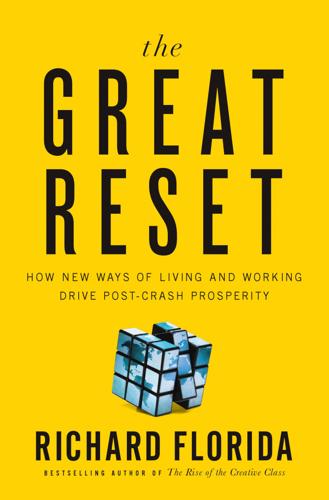
The Great Reset: How the Post-Crash Economy Will Change the Way We Live and Work
by
Richard Florida
Published 22 Apr 2010
The one technology on the horizon that fits the geographic scale of megaregions and can help spur more intensive development of those regions is high-speed rail. Chapter Twenty-One Faster Than a Speeding Bullet On the heels of the 2010 State of the Union address, the Obama administration announced that it had pledged $8 billion for high-speed rail. Urbanists, environmentalists, and advocates of energy efficiency greeted the news with outright jubilation. Sure, it’s a start, but the United States lags far behind other countries when it comes to high-speed rail. China, for instance, plans to spend more than $300 billion to expand its high-speed rail system, building thousands of miles of new track by 2020.
…
By 2020, China will have more high-speed railway track than the rest of the world combined. France is adding to its TGV system. Spain is planning a large-scale expansion of its high-speed rail system and is set to pass Japan as the country with the most extensive high-speed network. The goal is that nine in ten Spaniards will be within thirty miles of a high-speed rail connection. Little wonder a high-ranking Siemens executive told the New York Times that the United States currently looks like “a developing country in terms of high-speed rail.”1 High-speed rail can get people from place to place much faster than cars or other types of ground transportation and can rival the travel times of planes on some routes because they take people directly from downtown station to downtown station, thus eliminating the long trek out to the airport.
…
Government Accountability Office (GAO), which put the costs of high-speed rail at somewhere from $22 million per mile for a route from Las Vegas to Victorville, California, to $132 million a mile for connecting Baltimore and Washington, to construct his own detailed cost and benefit estimates for a high-speed rail line connecting Houston and Dallas. Even after taking an estimated $29.7 million in annual environmental benefits into account, he finds that the Houston-to-Dallas high-speed rail line would operate at an annual loss of somewhere in the range of $400 million to $500 million.3 Building out a truly national high-speed rail system that would connect the major cities of our megaregions is estimated to cost between $140 billion and $500 billion.
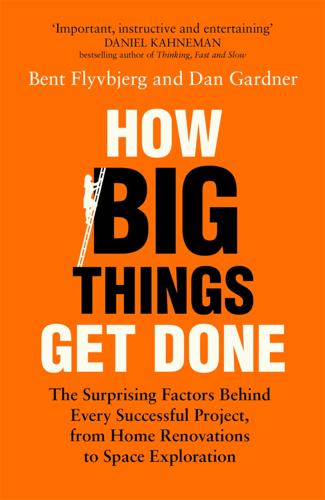
How Big Things Get Done: The Surprising Factors Behind Every Successful Project, From Home Renovations to Space Exploration
by
Bent Flyvbjerg
and
Dan Gardner
Published 16 Feb 2023
California High-Speed Rail Authority. 1999. Financial Plan. Sacramento: California High-Speed Rail Authority. California High-Speed Rail Authority. 2008. California High-Speed Train Business Plan. Sacramento: California High-Speed Rail Authority. California High-Speed Rail Authority. 2012. California High-Speed Rail Program, Revised 2012 Business Plan: Building California’s Future. Sacramento: California High-Speed Rail Authority. California High-Speed Rail Authority. 2014. Connecting California: 2014 Business Plan. Sacramento: California High-Speed Rail Authority. California High-Speed Rail Authority. 2016.
…
California High-Speed Rail Authority, California High-Speed Rail Program Revised 2012 Business Plan: Building California’s Future (Sacramento: California High-Speed Rail Authority, 2012); California High-Speed Rail Authority, Connecting California: 2014 Business Plan (Sacramento: California High-Speed Rail Authority, 2014); California High-Speed Rail Authority, Connecting and Transforming California: 2016 Business Plan (Sacramento: California High-Speed Rail Authority, 2016); California High-Speed Rail Authority, 2018 Business Plan (Sacramento: California High-Speed Rail Authority, 2018); California High-Speed Rail Authority, 2020 Business Plan: Recovery and Transformation (Sacramento: California High-Speed Rail Authority, 2021); California High-Speed Rail Authority, 2020 Business Plan: Ridership & Revenue Forecasting Report (Sacramento: California High-Speed Rail Authority, 2021); California High-Speed Rail Authority, Revised Draft 2020 Business Plan: Capital Cost Basis of Estimate Report (Sacramento: California High-Speed Rail Authority, 2021). 3.
…
Connecting and Transforming California: 2016 Business Plan. Sacramento: California High-Speed Rail Authority. California High-Speed Rail Authority. 2018. 2018 Business Plan. Sacramento: California High-Speed Rail Authority. California High-Speed Rail Authority. 2021. 2020 Business Plan: Recovery and Transformation. Sacramento: California High-Speed Rail Authority. California High-Speed Rail Authority. 2021. 2020 Business Plan: Ridership and Revenue Forecasting Report. Sacramento: California High-Speed Rail Authority. California High-Speed Rail Authority. 2021. Revised Draft 2020 Business Plan: Capital Cost Basis of Estimate Report.
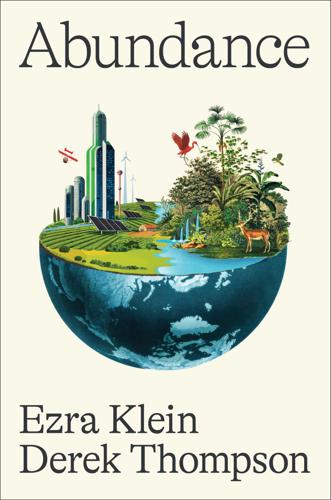
Abundance
by
Ezra Klein
and
Derek Thompson
Published 18 Mar 2025
Klein, “The Problem with Everything-Bagel Liberalism.” 32. California High-Speed Rail Authority, “Central Valley,” n.d., https://hsr.ca.gov/high-speed-rail-in-california/central-valley/. 33. John J. DiIulio Jr., Bring Back the Bureaucrats: Why More Federal Workers Will Lead to Better (and Smaller!) Government (West Conshohocken, PA: Templeton Press, 2014), Kindle, loc. 231 and loc. 1460. 34. Ralph Vartabedian, “How California’s Faltering High-Speed Rail Project Was ‘Captured’ by Costly Consultants,” Los Angeles Times, April 26, 2019, https://www.latimes.com/local/california/la-me-california-high-speed-rail-consultants-20190426-story.html. 35.
…
California’s No-Speed Rail In 1982, Governor Jerry Brown signed a bill to study what it would take to build a high-speed rail system across California. Californians liked what they saw. In 1996, California formed a high-speed rail authority to plan for the construction of what would be America’s fastest rail system. Planners imagined a silver shell whistling along beams of steel, carrying millions of parents, children, Silicon Valley entrepreneurs, Hollywood actors, and solo travelers through America’s largest state at speeds reaching 220 miles per hour. Goodbye, traffic and pollution-choked freeways. Hello, classy dining cars and reclinable seats. High-speed rail is not some futuristic technology like cold fusion or flying cars.
…
These days, six years is roughly the amount of time it takes California to realize that its bullet train needs to be pushed back by another decade. In the time California has spent failing to complete its 500-mile high-speed rail system, China has built more than 23,000 miles of high-speed rail.48 In October 2023, one of us—okay, it was Ezra—went to Fresno, California, and toured the miles of rail infrastructure that the California High-Speed Rail Authority has built.49 The project is caught in a strange limbo between political fantasy and physical fact. The agency doesn’t have anywhere near the money or political capital it would need to complete the Los Angeles–to–San Francisco system Californians actually want.
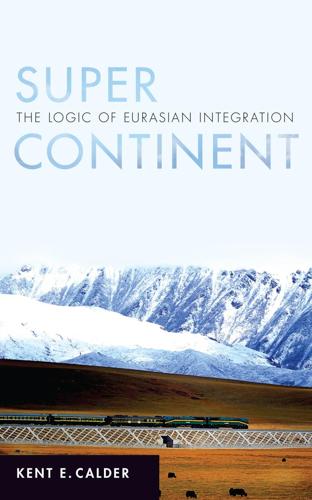
Super Continent: The Logic of Eurasian Integration
by
Kent E. Calder
Published 28 Apr 2019
Compared to other ambitious projects connecting China to South and Central Asia, the SKRL is a particularly appropriate platform to demonstrate China’s technical capabilities in high-speed rail technology. China now has the largest high-speed rail network in the world, providing valuable, saleable production experience. And it has begun exporting its HSR technology to overseas markets, recently including Indonesia and Turkey.45 Unlike lines in those countries, which are geographically separated from China, the SKRL will be able to interconnect directly with China’s own massive existing network, enhancing the overall economic value of both in synergistic fashion. The SKRL also presents unusually favorable conditions for high-speed rail technology, although both the Laos section and the recently revived Vietnamese section are likely to be medium-speed rather than high-speed for cost reasons.
…
See “China’s High-Speed Trains Are Back on Track,” The Economist, September 1, 2017, https://www.economist.com/graphic-detail/2017/09/01/chinas-high-speed-trains -are-back-on-track. 47. Lu Hui, “China’s High-Speed Rail Tracks to Hit 38,000 km by 2025,” Xinhua, January 2, 3018, http://www.xinhuanet.com/english/2018-01/02/c_ 136867206.htm. 48. Ibid. 49. This was about 56 percent of the total 3.04 billion passenger trips made on railways. See ibid. According to 2015 statistics, 50 percent of global HSR passengers were in China, and 22 percent in Japan. See US High Speed Rail Association, “High Speed Rail Around the World,” accessed October 23, 2018, http://www.ushsr.com/hsr/hsrworldwide.html. 50.
…
See Engineering News-Record, “ENR’s 2017 Top 250 International Contractors,” August 2017, https://www.enr.com/toplists/2017-Top-250-International-Contractors-1. 42. Shi Yinglun, “All Aboard: China’s High-Speed Rail 10 Years On,” Xinhua, August 1, 2018, http://www.xinhuanet.com/english/2018-08/01/c_137361580.htm. 43. See “High Speed Rail around the World,” US High Speed Rail Association, accessed October 19, 2018, http://www.ushsr.com/hsr/hsrworldwide.html. 44. CRRC supplies over 90 percent of the Chinese market, and also makes metro cars for the Massachusetts Bay Transit Association (MBTA) in Springfield, Massachusetts.
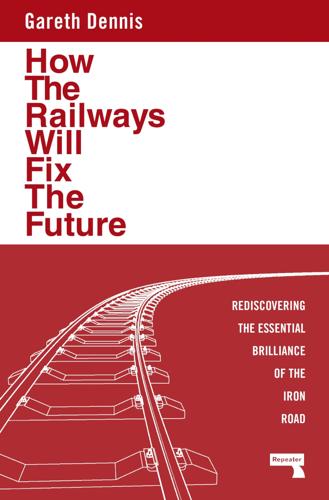
How the Railways Will Fix the Future: Rediscovering the Essential Brilliance of the Iron Road
by
Gareth Dennis
Published 12 Nov 2024
Austria has a similarly high mode share for freight, though a lower mode share for passengers; however, it has a greater per-capita freight usage and consequently a slightly higher ratio of rail to road usage. It is interesting that neither Austria nor Switzerland have significant lengths of dedicated high-speed rail. This isn’t to say that high-speed rail isn’t a good and indeed necessary component in a modern railway network — Austria and Switzerland are compact countries with high-density networks offering naturally short journey times and a lot of redundancy for the segregation of different traffic types. Rather than building dedicated high-speed rail lines, both countries have opted to build high-capacity mixed-traffic lines and invest in base tunnels to reduce journey times by tackling their alpine topography.
…
Well, if you focus on flashy FM proposals, this provides the perfect reason to delay, pause or cancel real public transport solutions. In a fawning 2015 biography, Musk admitted to the author that his hyperloop creation was not intended to be built; rather, it was specifically intended to derail California’s high-speed rail project by suggesting to legislators they’d made the wrong choice in approving it. “With any luck, the high-speed rail would be cancelled.” Battery or hydrogen trains don’t work for fast, frequent or freight railway services, but on the off-chance that the physics will change, politicians refuse to commit to sticking wires over the railway. Cambridge still doesn’t have a tram line.
…
This doesn’t require a dedicated technology provider — letting Google Maps tap into public transport operators’ open data feeds gives you all the information you need to string your journey together, and it is politics not technology that would prevent you from paying for the whole journey in one go via a single contactless transaction. This example gives a peek behind the curtain. Novel solutions in transport are invariably intended to benefit the incumbent powers in transport, namely the automotive and aviation industries. High-speed rail is known to decimate the mode share of aviation, and the success of high-speed rail has squeezed the industry hard in places like France, Spain and the Low Countries. Partly in response to this, but mostly to provide lobbyists with a bargaining chip to prevent more countries imposing reduction targets on the number of flights, the aviation industry has resorted to fabricating nonsense to pretend it can be carbon neutral.
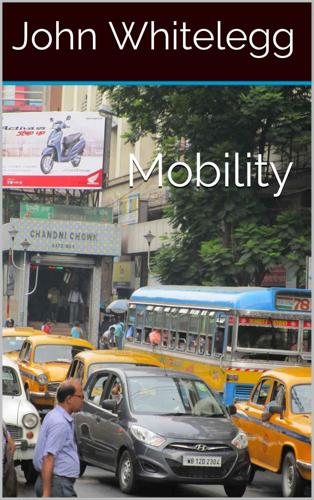
Mobility: A New Urban Design and Transport Planning Philosophy for a Sustainable Future
by
John Whitelegg
Published 1 Sep 2015
It does, however, mention the importance of walking, cycling and public transport with the insertion of an important condition: “Exploring how a favourable environment can be created for a significant growth in public transport at limited extra costs” (page 37). There is no use of the phrase “at limited extra costs” when the discussion deals with the billions of Euros needed to fund high speed rail estimated to be £50 billion on the Uk high speed rail project known as HS2 (House of Commons, 2015) or, indeed, additional airport capacity or new motorways. The total research allocation funding in this European Commission document for “smart, green and integrated transport” and its unbridled support for growth in mobility is 579 million Euros in 2014 and 287 million Euros in 2015.
…
This is identical to the pro-slavery arguments deployed in Liverpool in the closing years of the 18th century. The correspondence is even more remarkable when looked at through the competitiveness lens. It is now a routine part of political discourse to bemoan our poor quality infrastructure (not enough roads, motorways, airports or high speed rail lines) and argue for more of these things so that we can maintain international competitiveness and sustained economic growth. Economic considerations and international competitiveness were key planks in pro slavery arguments in late 18th century Britain and are still with us in the early 21st century discussion around transport infrastructure and mobility.
…
This has nothing to do with the cost benefit analysis world based on negotiable methodologies about the value of time, the value of green belt land or the value of peace, quiet and tranquillity. These attributes of the world we live in are shaped by mobility and by decisions about whether or not to build a new road, a new high speed rail line or a new runway and that is unacceptable. They should be and must be shaped by a clear sense of what we want in the desirable future and this cannot be left to the vagaries of arbitrary methodologies claiming a spurious scientific identity but serving to deny the importance of human scale thinking about the world around us.

Aerotropolis
by
John D. Kasarda
and
Greg Lindsay
Published 2 Jan 2009
Craig Venter detailed the creation of “Synthia” in Science (“Creation of a Bacterial Cell Controlled by a Chemically Synthesized Genome” (May 2010). On the subject of high-speed rail (HSR) in America, the U.S. High Speed Rail Association is pushing for a seventeen-thousand-mile national network of bullet trains— essentially every credible project under review. The estimated price tag is $600 billion (“High-Speed Rail Advocates Say $8B Is Just a Start,” Associated Press, October 23, 2009). The sprawl issue of HSR in California’s Central Valley was raised by Wired News’s Jason Kambitsis (“High-Speed Rail as a Conduit of Sprawl,” March 16, 2010). As for the Jevons Paradox aspect, this was noted in the debate over HSR connecting to Heathrow.
…
R., 279, 282 Gordon, Gerry, 43–44, 45 Gore, Al, 343, 344–45 Gou, Terry, 396–97, 432 Granholm, Jennifer, 183 Great Depression, 210 Greater Philadelphia Chamber of Commerce, 176 Greater Westchester Homeowners Association, 29 Great Tea Race, 385–86 green cities, New Songdo City as, 4, 356–357; New York as, 356 greenhouse gases: from air travel, 333;from cattle, 232–33; global emissions of, 333 Green Metropolis (Owen), 356–57 Greenpeace, 346; opposition to Heathrow expansion by, 15 Green Revolution, 233 Guangzhou, China: Africans living in, 320; airport plans in, 373, 379; designed as aerotropolis hub, 377, 383–84; FedEx hub outside, 372–73; size and growth of, 373, 378, 380, 383 Guangzhou Economic and Technological Development Zone (GETDZ), 384 Guardian, The, 292 Guenzel, Robert, 188 Haddock, Ronald, 204, 205 Hamilton, Ontario, aerotropolis plans in, 193 Hamzeh, Assem and Dina, 287–89 Hansen, James, 343 Harvey, David, 136 Hatoyama, Yukio, 403 Hawley, Amos, 7, 11, 185, 424, 425 Hayden, Tom, 31 health care: aerotropolis dedicated to, 277; cities as medical hubs for, 269; globalization of, 267, 268; medical tourism and, 265–76; reforms, 267; as service industry, 168; U.S. cost of, 267–68 health care reform, medical tourism as boon to, 274 Heathrow Airport, 13–17, 176; economic engine surrounding, 15; expansion of, 15–17, 168, 343, 351–52; high-speed rail to, 351–52, 432; as victim of its own success, 14 Hennig, Joe, 128–29 Henry Ford Museum, 206 Heritage Creek, Ky., 64, 89–90 Hewlett, Bill, 365 High Court, British, 16 Highland Ranch, Colo., 139 High Point, N.C., 111 high-speed rail (HSR), 351–52, 432 Hilverda De Boer, 215, 216 Hobbes, Thomas, 207 Hong Kong, China, 24; as aerotropolis, 378, 382; capacity challenges facing, 372; connected via high-speed rail to Pearl River Delta, 378; economy of, Hong Kong (cont. ) 374; as export gateway, 372; Pear River Delta managed by, 375, 376, 377–78, 380–81; political autonomy of, 377; smiley curve managed by, 374–75, 380 Hong Kong International Airport, 372 Hon Hai Precision Industry, 396 housing: carbon footprint of, 431; greenhouse gases from, 336, 337 housing bust, 394 Hsieh, Tony, 70–71, 74 Huang, Bunnie, 367 hub-and-spoke, 95 Hubbert, M.
…
Even better are trains, which raises a separate question: Why not replace planes with trains? High-speed rail is a mainstay of Japan and Europe, shuttling more intercity commuters between Tokyo and Osaka or Paris and Lyon than the Delta Shuttle does between New York and Boston, and with a vastly lower carbon footprint. The Obama administration has made HSR in America a priority, assigning $8 billion in stimulus funds to exploring ten potential corridors in the Midwest and South, and along the coasts. “Investing in a high-speed rail system will lower our dependence on foreign oil and the bill for a tank of gas,” Vice President Joe Biden explained, “loosen the congestion suffocating our highways and skyways, and significantly reduce the damage we do to our planet.”
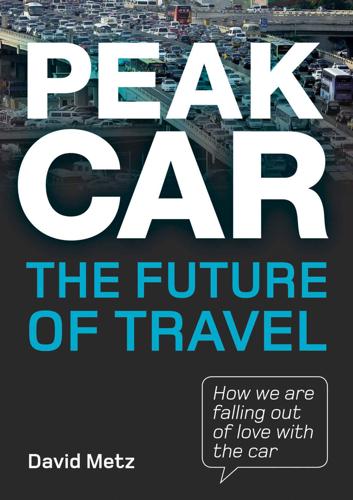
Peak Car: The Future of Travel
by
David Metz
Published 21 Jan 2014
Rail technology The prospects for higher speeds look poor generally in the transport sector, with the possible exception of high‑speed rail, with trains capable of speeds over 200 mph on dedicated track, as are now common in Europe. This technology was pioneered in Japan with the Shinkansen train between Tokyo and Osaka, which started operations in the 1960s. France came next with the TGV, now an extensive network, and the other major western European countries followed. There has been debate in the US about the possible role for high‑speed rail but no decisions to build as yet. There is certainly a case for constructing more rail capacity in Britain, given growing passenger demand that has doubled since the low point in the early 1900s, as well as projected population growth.
…
Would it facilitate the movement of head offices to London, because staff from the factories could more easily travel to meet senior management? Or would it reverse the trend, as international clients and non‑executives enjoyed the experience of travel by high‑speed rail? We cannot answer this question with any confidence. The experience of the local impact of high‑speed rail in Europe and elsewhere is decidedly mixed. Regeneration What has been happening in London’s former Docklands illustrate the range of development outcomes possible from rail investment. The Docklands Light Railway (DLR) was envisaged as a means for regenerating the area, once shipping had moved down river to berths suited to large container vessels.
…
Accidents are both more likely and more severe at higher speeds, hence the increasing tendency in Britain to reduce speed limits on urban roads. Energy requirements grow rapidly as speeds increase, to overcome air and other frictional resistance, and carbon emissions increase accordingly. There is some scope for faster rail travel but new high speed rail routes will represent only a small proportion of total travel. These technical limits to higher travel speeds, which I discuss in more depth in Chapter 5, are a further constraint on the growth of demand for travel, given that the time available for travelling has to be found within the confines of the 24‑hour day.
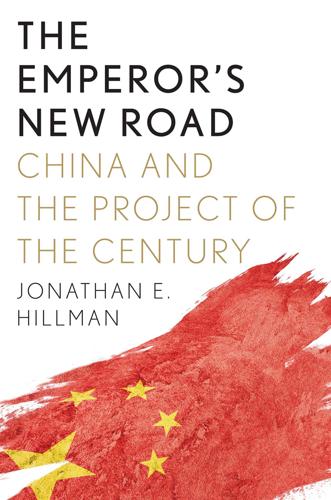
The Emperor's New Road: How China's New Silk Road Is Remaking the World
by
Jonathan Hillman
Published 28 Sep 2020
High-speed railways are doubly tempting because they tap into what sociologists call the “technological sublime,” the thrill that planners and politicians get from delivering the latest technology and in some cases even pushing technological boundaries.24 Superlatives often accompany new projects—the longest bridge, the fastest train, the tallest building—and can influence design choices. The technological sublime is baked into the very name of high-speed rail, which evokes images of sleek futuristic trains zipping from one city to another. Having built more kilometers of high-speed rail domestically than the rest of the world combined, Chinese firms are eager to feed these temptations. As China aims to dominate other advanced technology and manufacturing sectors, high-speed rail is a cautionary tale for its Western competitors. After launching joint ventures with Canadian, German, French, and Japanese companies, Chinese firms were able to acquire the capabilities and technical knowledge to start producing their own high-speed rail technology.
…
Wendy Wu, “China Says Its Bullet Train Technology Was Stolen, Days after US Trade Probe Move,” South China Morning Post, August 17, 2017, https://www.scmp.com/news/china/economy/article/2107096/china-says-its-bullet-train-technology-was-stolen-days-after-us. 30. Jean-Paul Rodrigue, “The Economics and Politics of High-Speed Rail: Lessons from Experiences,” AAG Review of Books 4, no. 1 (2016): 17–18, DOI: 10.1080/2325548X.2016.1117342. 31. Ignacio Barrón, Javier Campos, Philippe Gagnepain, Chris Nash, Andreu Ulied, and Roger Vickerman, Economic Analysis of High Speed Rail in Europe, ed. Ginés de Rus (Bilbao: Fundación BBVA, 2009), https://www.fbbva.es/wp-content/uploads/2017/05/dat/inf_web_economic_analysis.pdf. 32. Baruch Feigenbaum, “High-Speed Rail in Europe and Asia: Lessons for the United States” (Policy Study 418, Reason Foundation, Los Angeles, CA, May 2013), https://reason.org/wp-content/uploads/files/high_speed_rail_lessons.pdf. 33.
…
After launching joint ventures with Canadian, German, French, and Japanese companies, Chinese firms were able to acquire the capabilities and technical knowledge to start producing their own high-speed rail technology. In 2010, one industry expert estimated that 90 percent of China’s high-speed rail technology was derived from foreign partnerships or equipment.25 Driven by quarterly earnings, Western firms failed to appreciate, or simply could not resist, the longer game that China was drawing them into. These deals provided foreign firms with access to China’s large domestic market, but the gains were temporary. Many of China’s early partners became its competitors, and since then, many have become its collateral damage.
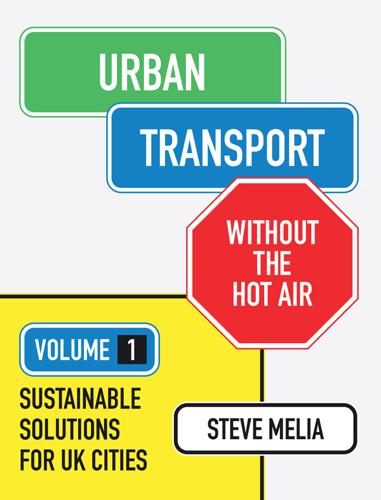
Urban Transport Without the Hot Air, Volume 1
by
Steve Melia
These debts now equal over £500 for every person in the country121 and will have to be honoured by the taxpayer at some point. “High speed rail will help create a low-carbon economy” As a means of reducing traffic or energy consumption, high-speed rail represents spectacularly bad value for money. For a budgeted cost of £42.6bn, the projected reductions in journeys shown in Table 5.1 would represent around 0.02 per cent of national car journeys and 1.5 per cent of flights.122 The DfT’s Economic case for HS2 8 says: “There remains a significant degree of uncertainty on the impact of HS2 on the actual carbon emissions of transport in the UK.” High-speed rail is the most energy-intensive form of public transport.
…
(Stagecoach plc)93 • “In contracting private companies to operate trains, Government has devised a winning formula where competition injects new ideas and skills to enhance services, attract more passengers and keep costs down.” (ATOC)94 • “We will establish a high-speed rail network as part of our programme … for creating a low carbon economy.” (DfT)95 Observations: • Public transport improvements on their own make little difference to the habits of car drivers: they are more likely to generate additional trips, or to reduce walking or cycling. • Based on typical behaviour changes, doubling bus use across the UK would reduce car driving by around 1.3 per cent. • The government’s own projections show £42.6bn spent on high-speed rail will reduce national car driving by 0.02 per cent. • Even these may be overestimates: removing traffic from congested roads during peak periods frees up space for others to drive, unless constraining measures are also taken
…
For the first three years of the Coalition government (2010–13), the scale of the shift away from sustainable transport was disguised to some extent by a clever strategy of keeping a progressive Liberal Democrat junior minister, Norman Baker, in charge of sustainable transport initiatives. Baker did a pretty good job with the tiny budget he was allocated. On the same day as new £28bn road building plans were announced and the budget for high-speed rail was increased, £100m was allocated to extend the Local Sustainable Transport Fund for another year. The public, it is often said, doesn’t really get the difference between millions and billions: they all sound like big numbers. If you have managed to read this far, I am sure that doesn’t apply to anyone as intelligent as you, but just to illustrate the point, Figure 3.2 compares the size of the road, rail and sustainable transport announcements.

Age of the City: Why Our Future Will Be Won or Lost Together
by
Ian Goldin
and
Tom Lee-Devlin
Published 21 Jun 2023
What then should be done to restore prosperity and opportunity to the declining industrial cities of the rich world? There is unfortunately no silver bullet. While there is good evidence that high-speed rail has supported a balancing of incomes across cities in Japan, the experience of France suggests that caution is needed in drawing any global lessons. High-speed rail between Paris and Lyon in fact facilitated a further concentration of economic activity in the capital, with a number of companies relocating their headquarters to Paris as a result.48 A similar danger faces projects like HS2 in Britain, under which high-speed rail services will connect London with the Midlands and the North. Indeed, the New Economics Foundation, a think-tank, has predicted that 40 per cent of the economic benefits of the proposed rail network will accrue to the capital.49 Rather than focusing on better connecting the regions to the capital, an alternative strategy would be to use high-speed rail to connect regional cities with each other in order to stimulate agglomeration benefits outside of London.
…
In the reconstruction period following the Second World War, a tripolar economy emerged in which Tokyo, Osaka and Nagoya became increasingly dominant economically.45 Starting in the 1960s, the government of Japan adopted an explicit policy of decentralizing production and ensuring a reasonably consistent standard of living across cities, partly through a combination of tax breaks and subsidies to influence the location choices of local producers, but also through heavy investment in world-leading transportation infrastructure – most notably its high-speed rail network – to dampen the incentive for businesses to all gravitate towards the largest cities.46 Since then, Japan has experienced many of the same pressures towards agglomeration that we explored earlier in this chapter. This has led to an increased clustering of population into Greater Tokyo in particular, which today accounts for 45 per cent of the country’s urban population.47 Unlike the situation with London or Paris, however, average incomes in Tokyo have not grown meaningfully higher than in other Japanese cities thanks to continued commitment by the national government to balanced regional development.
…
Indeed, the New Economics Foundation, a think-tank, has predicted that 40 per cent of the economic benefits of the proposed rail network will accrue to the capital.49 Rather than focusing on better connecting the regions to the capital, an alternative strategy would be to use high-speed rail to connect regional cities with each other in order to stimulate agglomeration benefits outside of London. For instance, the 900-square-mile triangle encompassing the four major cities of the North – Manchester, Liverpool, Sheffield and Leeds – is home to roughly 8.5 million people, four leading universities and an Atlantic port.

Connectography: Mapping the Future of Global Civilization
by
Parag Khanna
Published 18 Apr 2016
.-101 that is home to over six thousand technology companies that generate more than $200 billion in GDP. (With a San Francisco–Los Angeles–San Diego high-speed rail, California’s Pacific Coast would truly become the western counterpart to the northeastern corridor. Elon Musk’s Tesla has proposed an ultra-high-speed “Hyperloop” tunnel system for this route.) And the Dallas–Fort Worth Metroplex, the largest urban cluster in the American South, houses industry giants such as Exxon, AT&T, and American Airlines in an economy larger than South Africa’s and is actually building a high-speed rail (well, only 120 kilometers per hour) called the Trans-Texas Corridor that could eventually extend to the oil capital Houston based on plans rolled out in 2014 by Texas Central Railway and the bullet-train operator Central Japan Railway.
…
High-quality infrastructural unity gives the entire delta region a sense of seamlessness even though Hong Kong and Macau have unique legal arrangements with the mainland and movement for Chinese around this mega-zone is governed by a sort of postmodern hukou system. High-speed rail lines make the journey from Guangzhou to Hong Kong in under two hours. Broad highways, hovercraft and ferries, extra-long rapid transit buses, and a combined bridge and tunnel connection between Macau and Hong Kong all make the delta’s cities feel like nodes of a much larger megacity corridor expected to grow to 80 million people with a $2 trillion GDP by 2030. Another Chinese megacity cluster in the making is the Bohai Economic Rim, which links Beijing, Hebei, Liaoning, Shandong, and Tianjin with efficient high-speed rail connections. Sitting at the mouth of the Hai River with access to the Yellow and Yangtze Rivers via the Grand Canal, Tianjin has been a naval gateway into China for centuries and became a crucial treaty port controlled by Europeans after the Opium Wars.
…
Back in Paris, we might have opted for an overnight sleeper to Moscow, from which we could catch the fabled Trans-Siberian Railway to Vladivostok—and carry on to Pyongyang and Seoul—or branch off a bit earlier toward Beijing, via either Manchuria or Mongolia. Either way, if we opt for the tropical route, we’ll speed southward along the world’s most extensive high-speed rail network into mountainous Yunnan and its capital, Kunming. From there, we can cross directly into Laos and take in Vientiane before crossing into Thailand toward Bangkok, or take a coastal route along the South China Sea via Hanoi and Ho Chi Minh City in Vietnam and through Phnom Penh in Cambodia to Bangkok.
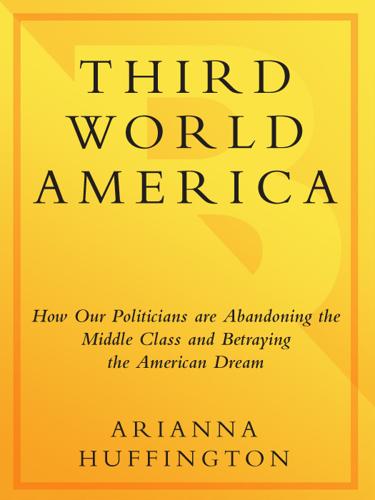
Third World America: How Our Politicians Are Abandoning the Middle Class and Betraying the American Dream
by
Arianna Huffington
Published 7 Sep 2010
25 Feb. 2009, www.bostonglobe.com. 57 Meanwhile, countries such as Japan, France, and Italy: Mark Reutler, “How America Led, and Lost, the High-Speed Rail Race,” 31 Mar. 2010, www.progressivefix.com. 58 For example, the six-hundred-mile ride: Randy James, “A Brief History of High-Speed Rail,” 20 Apr. 2010, www.time.com. 59 The stimulus bill included $8 billion: “Obama Wants Nationwide High-Speed Rail System,” 28 Jan. 2010, www.cnn.com. 60 $1.25 billion going to a high-speed rail corridor: Michael Cooper, “Stimulus Plan for Rail Line Shows System of Weak Links,” 22 Mar. 2010, www.nytimes.com. 61 Of course, high-speed rail systems: Matt Van Hattem, “High Speed Rail in the Northeast: Beyond the Corridor, Slow Trains Get Some Help,” Trains Magazine, 28 Jan. 2010, www.trains.com. 62 So while this new investment is a start: Tom Vanderbilt, “Stop This Train!”
…
For example, the six-hundred-mile ride between Wuhan and Guangzhou is completed in three hours by bullet trains reaching 217 miles per hour; the airport rail link in Shanghai reaches a top speed of 268 miles per hour.58 The stimulus bill included $8 billion for high-speed rail projects in thirty states, linking cities such as Minneapolis, Milwaukee, and Chicago—$1.25 billion going to a high-speed rail corridor between Orlando and Tampa.59, 60 Of course, high-speed rail systems everywhere would be great, but there are obvious political considerations behind sprinkling the money all over the country.61 The fact is, the highest trafficked section of the nation’s rail system, the limping northeast corridor from Boston to Washington, D.C., is in dire need of renovation but received only $112 million.
…
And even though President Obama threw his weight behind the legislation in early 2008, Congress was still holding hearings on the matter in mid-2010. It’s time to up the intensity and move this idea from the drawing-board stage to the action stage, fixing roads, bridges, sewers, and electrical grids and laying high-speed rail tracks. We also need to pass a comprehensive legislative package to plug the drain of jobs heading overseas. It must include tax credits for companies that keep and create jobs for American workers and close loopholes that encourage employers to ship jobs abroad. It would also be smart to incentivize green jobs.
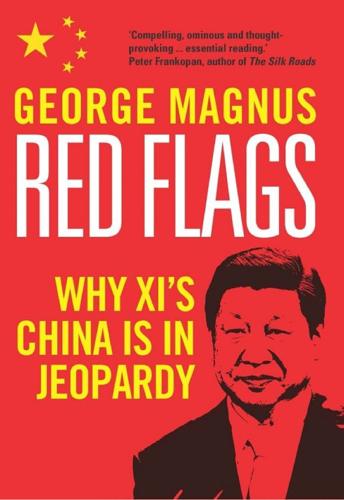
Red Flags: Why Xi's China Is in Jeopardy
by
George Magnus
Published 10 Sep 2018
China, in effect, is aiming to use its expanded global footprint to establish its own technologies and product standards – which it wants recognised and branded abroad – and, in turn, to contribute to greater commercial and reputational success. Chinese high-speed rail may not be representative across the spectrum of modern industries and technologies, but it does serve to illustrate what China is after. If China can gain acceptance of its product and technical standards externally, then a much wider and deeper market position might have positive spillover effects not just for the high-speed rail industry vis-à-vis Japan, for example, but also for constituent manufacturers and suppliers. China’s Ministry of Industry and Information Technology believes that high-speed rail success could boost demand for high-end industrial exports from countries in Southeast Asia as well as Central and Western Asia.
…
Now it is the world’s largest, selling about 25 million units a year and with roughly 149 million privately owned passenger vehicles on the road in 2016. In a measure of economic connectivity linked to growth and productivity between 2010 and 2016, China’s metro and urban light-rail track length more than tripled to 4,000 kilo-metres. Its high-speed rail network quintupled to 25,000 kilometres, and its motorways expanded by 77 per cent to 131,000 kilometres. China is a leader in e-commerce and mobile payments, is currently rolling out facial recognition technology, and aims to be a global leader in artificial intelligence. Without much regard for privacy and individual rights, it is making waves in the use of big data and the exploitation of information gathered from its large population.
…
For urban citizens at least, the decade was also one to savour. Wages rose steadily, owner-occupied housing boomed, and urban car ownership rates soared; Chinese car sales were almost 25 million in 2017, accounting for about a third of global car sales. The construction of highways, airports and high-speed rail networks also surged, education spending doubled to 4 per cent of GDP, and health and pension coverage and benefits were broadened. Yet, while modernity came to China with speed during the 2000s, there were also other, more untoward developments that were not always noticeable at the time and that formed the roots of some of China’s contemporary problems.
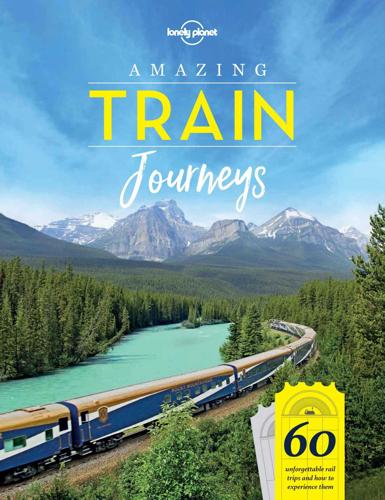
Amazing Train Journeys
by
Lonely Planet
Published 30 Sep 2018
Power sockets may not be available in 2nd class. Every train has a buffet car with tables available to all passengers. The buffet sells snacks, soft drinks, beer and meals. All cars also have free boiling water for tea and instant noodle soups. High-Speed Rail Economy China’s ambitious high-speed rail system is critical to a diversified economy after decades of reliance on manufacturing and exports. This new 'high-speed rail economy' emphasises, among other things, tourism and boosting capacity through better networks of large but not oversized cities, including new commuter corridors along rail lines. Explore Bĕijīng, an incomparable capital city at the political, economic and cultural centre of China.
…
NEW ZEALAND’S TRANZALPINE: p282 COLOMBO TO BADULLA: p150 Contents Foreword 6 About this Book 8 Africa & the Middle East Johannesburg to Cape Town (South Africa) 12 Andimeshk to Dorud (Iran) 18 Bulawayo to Victoria Falls (Zimbabwe) 22 Tazara Railway (Tanzania & Zambia) 28 Iron Ore Train (Mauritania) 32 The Americas The Sunset Limited (USA) 38 La Trochita (Argentina) 44 The Rocky Mountaineer (Canada) 48 Perurail’s Lake Titicaca Railway (Peru) 54 Metro-North Hudson Line (USA) 58 The Copper Canyon Railway (Mexico) 62 The California Zephyr (USA) 68 The Hershey Train (Cuba) 72 New England’s Amtrak Downeaster (USA) 78 Foreword 6 About this Book 8 Africa & the Middle East Johannesburg to Cape Town (South Africa) 12 Andimeshk to Dorud (Iran) 18 Bulawayo to Victoria Falls (Zimbabwe) 22 Tazara Railway (Tanzania & Zambia) 28 Iron Ore Train (Mauritania) 32 The Americas The Sunset Limited (USA) 38 La Trochita (Argentina) 44 The Rocky Mountaineer (Canada) 48 Perurail’s Lake Titicaca Railway (Peru) 54 Metro-North Hudson Line (USA) 58 The Copper Canyon Railway (Mexico) 62 The California Zephyr (USA) 68 The Hershey Train (Cuba) 72 New England’s Amtrak Downeaster (USA) 78 The Rupert Rocket (Canada) 82 Lima to Huancavelica via Huancayo (Peru) 86 The New Mexico Rail Runner (USA) 90 The Serra Verde Express (Brazil) 94 Cruising the Pacific: the Coast Starlight (USA) 98 Coast to Coast on VIA Rail Canada 104 Asia The Darjeeling Toy Train (India) 112 The Hokkaidō Shinkansen (Japan) 116 The Eastern & Oriental Express (Thailand to Singapore) 120 Hong Kong’s West Rail Line (China) 124 The Reunification Express (Vietnam) 128 Mandalay to Lashio (Myanmar) 134 Baikal–Amur Mainline (Russia) 138 The Bĕijīng to Lhasa Express (China) 142 The Death Railway (Thailand) 146 Colombo to Badulla (Sri Lanka) 150 The Nilgiri Mountain Railway (India) 156 The Rupert Rocket (Canada) 82 Lima to Huancavelica via Huancayo (Peru) 86 The New Mexico Rail Runner (USA) 90 The Serra Verde Express (Brazil) 94 Cruising the Pacific: the Coast Starlight (USA) 98 Coast to Coast on VIA Rail Canada 104 Asia The Darjeeling Toy Train (India) 112 The Hokkaidō Shinkansen (Japan) 116 The Eastern & Oriental Express (Thailand to Singapore) 120 Hong Kong’s West Rail Line (China) 124 The Reunification Express (Vietnam) 128 Mandalay to Lashio (Myanmar) 134 Baikal–Amur Mainline (Russia) 138 The Bĕijīng to Lhasa Express (China) 142 The Death Railway (Thailand) 146 Colombo to Badulla (Sri Lanka) 150 The Nilgiri Mountain Railway (India) 156 WEST COAST WILDERNESS RAILWAY: p287 THE EASTERN & ORIENTAL: p121 THE NORTHERN EXPLORER: p291 Japan’s Post Road Train 162 Trans-Mongolian Railway (Russia to China) 166 Bĕijīng to Shànghăi by High-Speed Rail (China) 170 Europe Settle to Carlisle (UK) 176 The Glacier Express (Switzerland) 182 Bilbao to Ferrol on the FEVE (Spain) 186 Trans-Siberian Railway (Russia) 190 East Coast Main Line (UK) 196 Le Petit Train Jaune (France) 200 Belgrade-to-Bar Railway (Serbia & Montenegro) 206 Bernina Express (Switzerland) 210 Venice Simplon-Orient-Express (France & Italy) 218 Heart of Wales Line 222 Munich to Venice on the Brenner Railway (Germany to Italy) 226 Fort William to Mallaig by Jacobite (UK) 230 Nova Gorica to Jesenice (Slovenia) 234 Cannes to Menton (France) 238 Japan’s Post Road Train 162 Trans-Mongolian Railway (Russia to China) 166 Bĕijīng to Shànghăi by High-Speed Rail (China) 170 Europe Settle to Carlisle (UK) 176 The Glacier Express (Switzerland) 182 Bilbao to Ferrol on the FEVE (Spain) 186 Trans-Siberian Railway (Russia) 190 East Coast Main Line (UK) 196 Le Petit Train Jaune (France) 200 Belgrade-to-Bar Railway (Serbia & Montenegro) 206 Bernina Express (Switzerland) 210 Venice Simplon-Orient-Express (France & Italy) 218 Heart of Wales Line 222 Munich to Venice on the Brenner Railway (Germany to Italy) 226 Fort William to Mallaig by Jacobite (UK) 230 Nova Gorica to Jesenice (Slovenia) 234 Cannes to Menton (France) 238 The Bergensbanen (Norway) 242 London to Fort William on the Caledonian Sleeper (UK) 248 Cologne to Mannheim (Germany) 252 Inlandsbanan (Sweden) 256 Ffestiniog & Welsh Highland Railways (Wales) 260 Centovalli Express (Switzerland & Italy) 266 Oceania The Ghan (Australia) 272 South Coast Line (Australia) 278 The TranzAlpine (New Zealand) 282 West Coast Wilderness Railway (Australia) 286 The Northern Explorer (New Zealand) 290 Kuranda Scenic Railway (Australia) 296 Acknowledgements 304 The Bergensbanen (Norway) 242 London to Fort William on the Caledonian Sleeper (UK) 248 Cologne to Mannheim (Germany) 252 Inlandsbanan (Sweden) 256 Ffestiniog & Welsh Highland Railways (Wales) 260 Centovalli Express (Switzerland & Italy) 266 Oceania The Ghan (Australia) 272 South Coast Line (Australia) 278 The TranzAlpine (New Zealand) 282 West Coast Wilderness Railway (Australia) 286 The Northern Explorer (New Zealand) 290 Kuranda Scenic Railway (Australia) 296 Acknowledgements 304 IMAGE COURTESY OF BELMOND © NICK OSBORNE IMAGE COURTESY OF KIWIRAIL Foreword Mark Smith THE MAN IN SEAT 61 There’s something magical about a journey by train.
…
NEW ZEALAND’S TRANZALPINE: p282 COLOMBO TO BADULLA: p150 Contents Foreword 6 About this Book 8 Africa & the Middle East Johannesburg to Cape Town (South Africa) 12 Andimeshk to Dorud (Iran) 18 Bulawayo to Victoria Falls (Zimbabwe) 22 Tazara Railway (Tanzania & Zambia) 28 Iron Ore Train (Mauritania) 32 The Americas The Sunset Limited (USA) 38 La Trochita (Argentina) 44 The Rocky Mountaineer (Canada) 48 Perurail’s Lake Titicaca Railway (Peru) 54 Metro-North Hudson Line (USA) 58 The Copper Canyon Railway (Mexico) 62 The California Zephyr (USA) 68 The Hershey Train (Cuba) 72 New England’s Amtrak Downeaster (USA) 78 Foreword 6 About this Book 8 Africa & the Middle East Johannesburg to Cape Town (South Africa) 12 Andimeshk to Dorud (Iran) 18 Bulawayo to Victoria Falls (Zimbabwe) 22 Tazara Railway (Tanzania & Zambia) 28 Iron Ore Train (Mauritania) 32 The Americas The Sunset Limited (USA) 38 La Trochita (Argentina) 44 The Rocky Mountaineer (Canada) 48 Perurail’s Lake Titicaca Railway (Peru) 54 Metro-North Hudson Line (USA) 58 The Copper Canyon Railway (Mexico) 62 The California Zephyr (USA) 68 The Hershey Train (Cuba) 72 New England’s Amtrak Downeaster (USA) 78 The Rupert Rocket (Canada) 82 Lima to Huancavelica via Huancayo (Peru) 86 The New Mexico Rail Runner (USA) 90 The Serra Verde Express (Brazil) 94 Cruising the Pacific: the Coast Starlight (USA) 98 Coast to Coast on VIA Rail Canada 104 Asia The Darjeeling Toy Train (India) 112 The Hokkaidō Shinkansen (Japan) 116 The Eastern & Oriental Express (Thailand to Singapore) 120 Hong Kong’s West Rail Line (China) 124 The Reunification Express (Vietnam) 128 Mandalay to Lashio (Myanmar) 134 Baikal–Amur Mainline (Russia) 138 The Bĕijīng to Lhasa Express (China) 142 The Death Railway (Thailand) 146 Colombo to Badulla (Sri Lanka) 150 The Nilgiri Mountain Railway (India) 156 The Rupert Rocket (Canada) 82 Lima to Huancavelica via Huancayo (Peru) 86 The New Mexico Rail Runner (USA) 90 The Serra Verde Express (Brazil) 94 Cruising the Pacific: the Coast Starlight (USA) 98 Coast to Coast on VIA Rail Canada 104 Asia The Darjeeling Toy Train (India) 112 The Hokkaidō Shinkansen (Japan) 116 The Eastern & Oriental Express (Thailand to Singapore) 120 Hong Kong’s West Rail Line (China) 124 The Reunification Express (Vietnam) 128 Mandalay to Lashio (Myanmar) 134 Baikal–Amur Mainline (Russia) 138 The Bĕijīng to Lhasa Express (China) 142 The Death Railway (Thailand) 146 Colombo to Badulla (Sri Lanka) 150 The Nilgiri Mountain Railway (India) 156 WEST COAST WILDERNESS RAILWAY: p287 THE EASTERN & ORIENTAL: p121 THE NORTHERN EXPLORER: p291 Japan’s Post Road Train 162 Trans-Mongolian Railway (Russia to China) 166 Bĕijīng to Shànghăi by High-Speed Rail (China) 170 Europe Settle to Carlisle (UK) 176 The Glacier Express (Switzerland) 182 Bilbao to Ferrol on the FEVE (Spain) 186 Trans-Siberian Railway (Russia) 190 East Coast Main Line (UK) 196 Le Petit Train Jaune (France) 200 Belgrade-to-Bar Railway (Serbia & Montenegro) 206 Bernina Express (Switzerland) 210 Venice Simplon-Orient-Express (France & Italy) 218 Heart of Wales Line 222 Munich to Venice on the Brenner Railway (Germany to Italy) 226 Fort William to Mallaig by Jacobite (UK) 230 Nova Gorica to Jesenice (Slovenia) 234 Cannes to Menton (France) 238 Japan’s Post Road Train 162 Trans-Mongolian Railway (Russia to China) 166 Bĕijīng to Shànghăi by High-Speed Rail (China) 170 Europe Settle to Carlisle (UK) 176 The Glacier Express (Switzerland) 182 Bilbao to Ferrol on the FEVE (Spain) 186 Trans-Siberian Railway (Russia) 190 East Coast Main Line (UK) 196 Le Petit Train Jaune (France) 200 Belgrade-to-Bar Railway (Serbia & Montenegro) 206 Bernina Express (Switzerland) 210 Venice Simplon-Orient-Express (France & Italy) 218 Heart of Wales Line 222 Munich to Venice on the Brenner Railway (Germany to Italy) 226 Fort William to Mallaig by Jacobite (UK) 230 Nova Gorica to Jesenice (Slovenia) 234 Cannes to Menton (France) 238 The Bergensbanen (Norway) 242 London to Fort William on the Caledonian Sleeper (UK) 248 Cologne to Mannheim (Germany) 252 Inlandsbanan (Sweden) 256 Ffestiniog & Welsh Highland Railways (Wales) 260 Centovalli Express (Switzerland & Italy) 266 Oceania The Ghan (Australia) 272 South Coast Line (Australia) 278 The TranzAlpine (New Zealand) 282 West Coast Wilderness Railway (Australia) 286 The Northern Explorer (New Zealand) 290 Kuranda Scenic Railway (Australia) 296 Acknowledgements 304 The Bergensbanen (Norway) 242 London to Fort William on the Caledonian Sleeper (UK) 248 Cologne to Mannheim (Germany) 252 Inlandsbanan (Sweden) 256 Ffestiniog & Welsh Highland Railways (Wales) 260 Centovalli Express (Switzerland & Italy) 266 Oceania The Ghan (Australia) 272 South Coast Line (Australia) 278 The TranzAlpine (New Zealand) 282 West Coast Wilderness Railway (Australia) 286 The Northern Explorer (New Zealand) 290 Kuranda Scenic Railway (Australia) 296 Acknowledgements 304 IMAGE COURTESY OF BELMOND © NICK OSBORNE IMAGE COURTESY OF KIWIRAIL Foreword Mark Smith THE MAN IN SEAT 61 There’s something magical about a journey by train.

The New Urban Crisis: How Our Cities Are Increasing Inequality, Deepening Segregation, and Failing the Middle Class?and What We Can Do About It
by
Richard Florida
Published 9 May 2016
Better, faster transit, including high-speed rail in some places, could vastly expand the commuting zones and labor sheds of today’s metro areas, allowing workers to commute from homes in more affordable places to jobs in more productive ones. Not everyone who works in a superstar city or leading knowledge hub has to live in one. The study I discussed in Chapter 2 that showed how much our land use restrictions cost the US economy also noted that effective transit can do more to solve the problem simply by allowing workers to commute from more affordable outlying areas to the urban center. Transit and high-speed rail, in particular, can help expand the functional labor markets of these places “overnight,” as the researchers put it, without needing to deal with their onerous land use restrictions, and potentially without even having to add any new housing in these cities and metro areas at all.12 High-speed rail can even help to link separate metros together in larger and more formidable mega-regions.13 This has already happened in some parts of the country without the benefit of high-speed rail, namely, the so-called Amtrak Corridor running between Boston, New York, Philadelphia, Baltimore, and Washington, DC, an area with a population of more than 50 million people and economic output north of $2 trillion.
…
Transit and high-speed rail, in particular, can help expand the functional labor markets of these places “overnight,” as the researchers put it, without needing to deal with their onerous land use restrictions, and potentially without even having to add any new housing in these cities and metro areas at all.12 High-speed rail can even help to link separate metros together in larger and more formidable mega-regions.13 This has already happened in some parts of the country without the benefit of high-speed rail, namely, the so-called Amtrak Corridor running between Boston, New York, Philadelphia, Baltimore, and Washington, DC, an area with a population of more than 50 million people and economic output north of $2 trillion.
…
In the South, there is Miami-Tampa-Orlando, the area that stretches from Atlanta to Charlotte, and the Texas Triangle of Houston, Dallas, and Austin. California has mega-regions in the south around Los Angeles and north around San Francisco; the Pacific Northwest has Cascadia, which takes in Seattle, Portland, and Vancouver. High-speed rail can better connect metros to one another by dramatically reducing the time it takes to move between them. True high-speed rail (traveling at speeds like France’s TGV or Japan’s Shinkansen) could reduce the travel time between New York and Boston, or New York and Washington, DC, to less than ninety minutes, and between Dallas and Houston, or Dallas and Austin, to about the same; trips from LA to San Francisco, or Pittsburgh to Chicago, would shrink to a more manageable two and a half hours.14 This could substantially expand the functional labor markets of these places, enlarge their economies, and bolster their overall economic competitiveness.

World Cities and Nation States
by
Greg Clark
and
Tim Moonen
Published 19 Dec 2016
The federal government has also acknowledged the need for a regional high‐ speed rail system connecting New York to Boston and beyond. In principle, this could reduce travel time between these two cities to less than one hour, and to one and a half hours between New York and Washington DC. The possibility of making these cities commutable would have a major impact on the productivity of the entire region and could combine the unique political, financial and scien tific capabilities of the three cities. Recent legislation allows Amtrak to increase rail funding in the Northeast Corridor. However, for high‐speed rail, at a slated cost of over $100 billion, the cities and federal government will need to broker an unprecedented financial package, for which the political conditions do not look immediately likely (Callegari, 2014; Ahn and Russell‐Einhorn, 2015).
…
Serving the Cities: An Indian Scenario. IOSR Journal of Humanities and Social Science, 19(1): 15–22. Shukla, P.R., Pathak, M., Mittal, S. and Dhar, S. (2015). Promoting Low Carbon Transport in India – Scenarios and Roadmap for Intercity Transport in India: The Role of High Speed Rail. UNEP. Available at http://www.unep.org/transport/lowcarbon/PDFs/Role_of_High_ Speed_Rail_Final.pdf. Accessed 2016 Feb 9. Sikarwar, D. (2015). Government sets up Rs 40,000 crore National Investment and Infra structure fund, CEO likely by January‐end. The Economic Times. Available at http://articles. economictimes.indiatimes.com/2015‐12‐30/news/69402712_1_infrastructure‐fund‐sovereign‐ wealth‐funds‐finance‐minister‐arun‐jaitley.
…
Transforming Mumbai, or the challenges of forging a Collective Actor. In Lorrain, D. (ed.). Governing Megacities in Emerging Countries. Farnham: Ashgate. Chapter 8 New York: Adapting to ‘emergency back‐up’ federalism Ahn, M. and Russell‐Einhorn, M.L. (2015). A vision of high‐speed rail in America: Time for a national conversation?. The Brookings Institution. Available at http://www.brookings.edu/ blogs/techtank/posts/2015/06/29‐high‐speed‐rail‐innovation. Accessed 2016 Feb 11. Aon and the Partnership for New York City (2013). New York City as a Destination of Choice for Talent. Available at http://www.pfnyc.org/reports/2013‐Aon‐PFNYC‐%20Report.pdf. Accessed 2016 Feb 11.
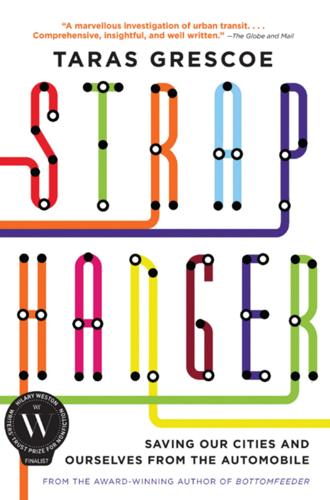
Straphanger
by
Taras Grescoe
Published 8 Sep 2011
The Acela was clearly having the same effect bullet trains had produced in Japan and France: high-speed rail was allowing people to continue living in their hometowns while working in other cities. Riding an escalator from track level, I gaped upward in frank awe at the marble columns rising to the coffered ceiling of Philadelphia’s 30th Street Station, which was completed in 1933, in the depths of the Depression. Just two months before my arrival, Vice President Joe Biden had stood at a lectern next to the station’s shoeshine stand and pledged $53 billion for high-speed rail in the six years to come. In the intervening weeks, the Republican governors of Florida, Wisconsin, and Ohio, had refused their share of the money.
…
“The French Revolution: How Strasbourg Gave Up the Car (and Why Midsized American Cities Can Too).” The Next City, Winter 2009. Buehler, Ralph, and John Pucher. “Sustainable Transport that Works: Lessons from Germany.” World Transport Policy & Practice 15/1 (April, 2009). Burnett, Victoria. “Spain’s High-Speed Rail Offers Guideposts for U.S.” New York Times, May 30, 2009. Connolly, Kate. “High-Speed Rail in Germany: Intercity Planes Are Grounded by Faster Trains.” The Guardian, August 5, 2009. Demaio, Paul. “Bike-Sharing: History, Impacts, Models of Provision, and Future.” Journal of Public Transportation 12/4 (2009). Gehl, Jan. Cities for People.
…
In Europe, high-speed trains have cornered the market for short-haul travel between cities that are three or fewer air-hours apart. In the last few years, Spain has laid 1,200 miles of high-speed tracks, a figure expected to increase fivefold by 2020, when 90 percent of the population will live within 30 miles of a high-speed rail station. In Germany, bullet trains now average 150 miles an hour, and have almost completely superseded the market for flights between such major cities as Berlin and Hamburg, Frankfurt and Stuttgart, and Bremen and Cologne. In contrast, the fastest train in North America barely averages 88 miles an hour.
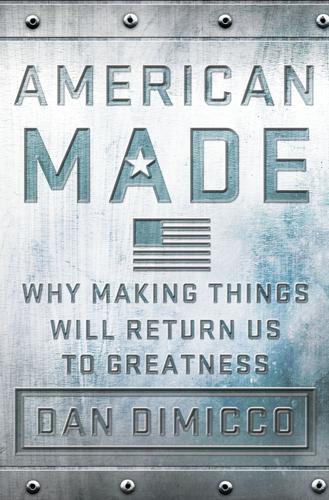
American Made: Why Making Things Will Return Us to Greatness
by
Dan Dimicco
Published 3 Mar 2015
We’ll save as much as 7 billion gallons of water a day from being wasted due to rusty and leaky pipes.18 Better light rail and mass transit will save about $71 million in gasoline a year.19 A satellite-based air-traffic control system—dubbed “NextGen” by the FAA—would slash delays and allow for more direct flights, saving airlines and consumers an estimated $24 billion through 2020, 1.4 billion gallons in jet fuel, and 14 billion fewer tons of CO2.20 A smarter power grid will improve distribution, cutting outages and rolling blackouts and saving anywhere from $25 billion to $180 billion a year.21 The current conversation about twenty-first-century infrastructure often includes high-speed rail as well. China, Japan, Singapore, Germany, France, and Spain have extensive high-speed rail systems that many Americans would love to emulate in the United States. I’m skeptical. Sure, having a train that could run from New York to Boston or from L.A. to San Francisco in less than two hours would be great. Right now, the Acela line from New York to Boston, which Amtrak considers “high-speed,” takes three and a half hours with speeds rarely exceeding 150 miles per hour. The question is, Where should high-speed rail fall on a lengthy and expensive list of priorities?
…
But the bottom line here is, would the public be better served spending $70 billion building a high-speed rail line or retrofitting structurally deficient dams, levies, and bridges? We’ve got to get our basic infrastructure back into sound shape using modern technologies to make it more efficient, to build it, and to operate it—as opposed to spending tens or even hundreds of billions on radical forms of transportation that may promise more than they can really deliver right now. Getting Up to Speed Though I’m not a fan of high-speed rail, high-speed process planning, financing, and building critical infrastructure is crucial.
…
.; “Failure to Act: The Economic Impact of Current Investment Trends in Water and Waste Treatment Infrastructure,” American Society of Civil Engineers, December 15, 2011, http://www.asce.org/Infrastructure/Failure-to-Act/Water-and-Wastewater/. 19. “2009 Infrastructure Report Card,” American Society of Civil Engineers; Proprietary Analysis by Garten Rothkopf. 20. FAA NextGen 2012 Implementation Report, http://www.faa.gov/nextgen/media/executive_summary_2012.pdf. 21. “2009 Infrastructure Report Card.” 22. “Connecting California 2014 Business Plan,” California High Speed Rail Authority, April 30, 2014, http://www.hsr.ca.gov/docs/about/business_plans/BPlan_2014_Business_Plan_Final.pdf. 23. “2011 Statewide Transportation System Needs Assessment,” Califronia Transportation Commission, October 2011, http://www.catc.ca.gov/reports/2011Reports/2011_Needs_Assessment_updated.pdf. 24.
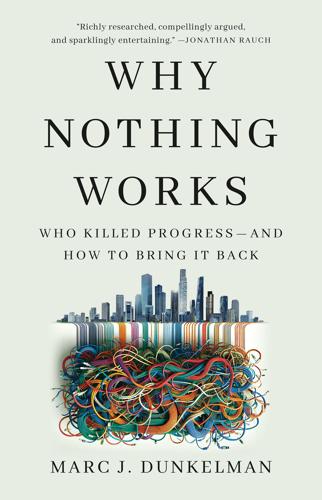
Why Nothing Works: Who Killed Progress--And How to Bring It Back
by
Marc J Dunkelman
Published 17 Feb 2025
But it’s also a window into one crucial reason government has lost the public’s confidence over the last several decades. America is caught in a housing crisis today—we simply can’t seem to build enough homes. We’re trying to thwart a climate crisis, but we can’t bring enough clean energy online to render fossil fuels obsolete. We’re decades behind Europe and China in building high-speed rail lines. And despite massive investments from the Biden administration—resources unseen in generations—progress is too often halting.6 In America today, government too often plays the buffoon. And while that’s a problem in and of itself, it’s a particular scourge for progressives who view government as a crucial tool for setting things right.
…
Combined, however, progressivism’s two impulses had served to undermine each other, and the resulting gridlock cleaved an opening for Trump. As we’ll see in the chapters that follow, that same cadence has become so endemic that progressives no longer register or notice. But the evidence is everywhere. America can’t build housing. We can’t deploy high-speed rail. We’re struggling to harness the promise of clean energy. And because government has failed in all these realms—because confidence in public authority has waned through the years—progressives have found it increasingly difficult to make a case for themselves.44 After San Francisco spent several years and $1.7 million trying to get a toilet installed in the Noe Valley neighborhood, one New York Times reporter asked: “If an army of more than 30,000 city employees with a $14 billion annual budget cannot build a simple bathroom in a reasonable way, what hope is there that San Francisco can solve its housing shortage and fentanyl crisis?”
…
Nothing seems to work. And for all the efforts Democrats make to invest in the future—the Bipartisan Infrastructure Law, the Inflation Reduction Act—progress too often remains a vision of Charlie Brown’s football. Reformers tout an achievement, but then a housing plan is abandoned after local opposition, a high-speed rail line is shelved for exorbitant costs, or an offshore wind farm is blocked by local fishermen. Often enough, both sides in any given debate—those who want to change things, and those who fear that change will be destructive—are well-intentioned. But the movement’s inability to resolve its conflicting impulses has turned progressive policymaking into what drag racers call “warming the tires.”
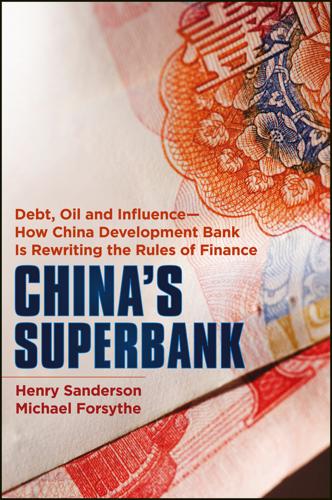
China's Superbank
by
Henry Sanderson
and
Michael Forsythe
Published 26 Sep 2012
At the edge of the city on what used to be farmland is a brand-new, shiny 30,000-seat steel stadium and an aquatic center, where workers chisel out the Olympic rings by night years after the Beijing Olympics has ended more than 800 miles to the north. Loudi has had its own party: Land prices tripled in the city from 2007 to 2010, and a high-speed rail line will soon stop here. China Railway Construction Corp. mixes cement day and night to make that a reality. Sitting on top of it all and somehow mysteriously controlling the trigger, local government officials come and go in black Audis from an imposing compound that is complete with white-colonnaded façades and domed arches, nicknamed “the White House” by locals.
…
A Town Called Loudi In Loudi, the stimulus was akin to dropping cash from the sky; it allowed the city to create a new idea of itself. It would no longer be only a town where nothing happened in the middle of China with a loss-making steel producer. It brought work for farmer Li Liguang, as the city boomed from government-funded infrastructure projects, including the stadium and the high-speed rail line. CDB underwrote the LGFV’s 1.2 billion yuan bond sale, which was sold in China’s domestic bond market in early 2011, with the bank listed first among a parade of lenders that had already provided financing to the city. The LGFV, Loudi City Construction Investment Group, was set up in 2000 and injected with land and other assets to borrow money for construction.
…
There, Xu Fei, an official at the Tianjin Binhai New Area Central Business District, stands in front of a brightly lit model of the future city, and says the total planned investment in the project, plus parks, residential towers, and the twin city across the river called Conch Bay, is 200 billion yuan. The first phase opens up in 2013 with the inauguration of a high-speed rail station. Both cities are under construction simultaneously, with 14 of a planned 122 buildings being erected in Yujiapu, plus all 48 of the planned Conch Bay skyscrapers as of the end of 2011. Construction cranes crowd the field of vision on both sides of the river, and thousands of workers are teeming about the work sites.
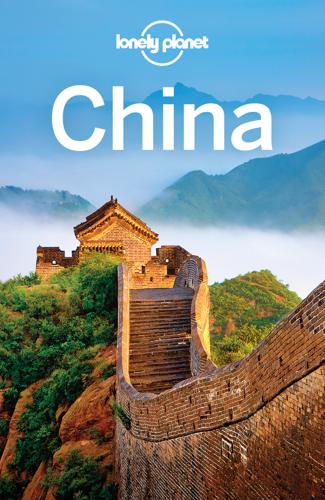
Lonely Planet China (Travel Guide)
by
Lonely Planet
and
Shawn Low
Published 1 Apr 2015
Beijing floods the region with soldiers and implements a 10-month internet blackout. 2010 A huge 7.1-magnitude earthquake in the Qinghai region of the far west flattens the remote town of Yushu in April, killing thousands. 2011 Two high-speed trains collide in July near Wenzhou in Zhejiang province, killing 40 people, the first fatal high-speed rail crash in China. 2012 After the heaviest rainfall in 60 years, Beijing is inundated with epic summer floods; 77 people are killed by the floodwaters and 65,000 evacuated. 2013 In December, the total length of China's national high-speed rail network reaches a staggering 10,000km, the world's longest. 2013 China's lunar lander Chang'e 3 touches down on the moon in December, the first spacecraft to soft-land on the moon since 1976.
…
A taxi to Central will cost about HK$300. Getting Around Transport in China needs considerable pre-planning due to the distances involved and periodic shortages of tickets. Air Affordable and excellent for long distances, but delays are common. Train Very reasonably priced, apart from high-speed rail which is more expensive, and very efficient. Bus Cheaper and slower than trains but crucial for remote destinations. Car China is too large and there are too many restrictions to make this a viable option. First Time Checklist ACheck the validity of your passport AMake any necessary bookings (for accommodation and travel) ASecure your visa and additional permits well in advance ACheck what clothing you will need ACheck the airline baggage restrictions AOrganise travel insurance ACheck if you can use your mobile/cellphone AWork out your itinerary AInform your credit/debit card company What to Pack APassport ACredit card APhrasebook AMoney belt ATravel plug AMedical kit AInsect repellent AMobile (cell) phone charger ASunscreen ASunhat and shades AWaterproof clothing ATorch APocketknife AEarplugs Top Tips for Your Trip ABe patient and understand that many things you take for granted – orderly queues, international levels of English ability, personal space – may not exist.
…
The characteristic drawls of the three most common dialects, Jilu, Zhongyuan and Jiaoliao, are each distinctive. 8Getting There & Around Shandong is linked to neighbouring and distant provinces by both bus and rail. Ji’nan is the transport hub, with rail connections to all major towns and cities in Shandong. The high-speed rail now links Ji’nan, Taishan, Qufu and Qingdao to Beijing and Shanghai. Buses also reach every corner of the province. With South Korea and Japan just across the water, there are direct international flights through three airports – Ji’nan, Qingdao and Yantai. Ferries also sail from Qingdao to South Korea (Incheon) and Japan (Shimonoseki), and from Yantai to Incheon.
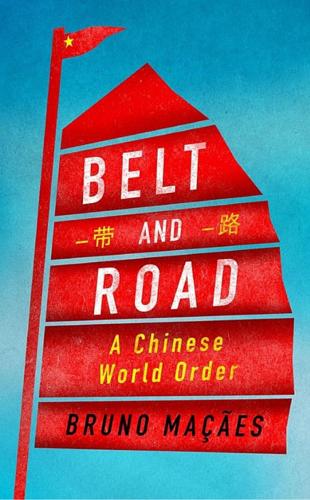
Belt and Road: A Chinese World Order
by
Bruno Maçães
Published 1 Feb 2019
In 2018 the surprising winner in Malaysia’s general election, Mahathir Mohamad, criticized Chinese projects for raising the country’s debt without delivering significant benefits and promised to renegotiate the terms and do away with mega projects, in the process managing to destroy the image of Malaysia as the poster-child for the Belt and Road. He combined the message with an appeal to new infrastructure investments, but those did not seem to include the prized high-speed rail linking Kuala Lumpur to Singapore, the logic of which he questioned. Intriguingly, the claim that Malaysia gains nothing strategic from the high-speed rail connection could be interpreted to mean that Malaysia should not assist Singapore by funding infrastructure that assists a competitor in preserving and expanding its role as Eurasian trade hub, connecting to inland Chinese industrial and logistics centers.
…
In the integrated framework of the Silk Road Economic Belt, new transportation infrastructure could both boost demand for steel and prepare the ground for China to import steel from Central Asia as it moves into higher-value products and value-chain segments: grain-oriented silicon steel (electrical steel), steel sheet for nuclear power stations and steel for high-speed rail bogie frames and train wheels. Soon after the launch of the Belt and Road, Hebei Province announced plans to move capacity for 5.2 million tons of steel, 5 million tons of cement and 3 million units of glass abroad by 2018. The targets for 2023 are even more ambitious, with capacity for 20 million tons of steel, 30 million tons of cement and 10 million units of glass waiting to be relocated abroad.
…
“The return on investment for a port in Sri Lanka or a rail line in Thailand matters less to Chinese officials than the ability to push participating countries to adopt Chinese standards on everything from construction to finance to data management.” China is already highly successful in exporting key technical standards for the construction of high-speed rail, circumventing those set a long time ago by Western players and putting in place guaranteed streams of revenue. “To the extent that China’s standards supplant Western ones, it will represent a direct threat to the profitability of non-Chinese companies.”15 It is indeed a high stakes battle, as the case of fifth generation mobile communications technology perfectly illustrates.
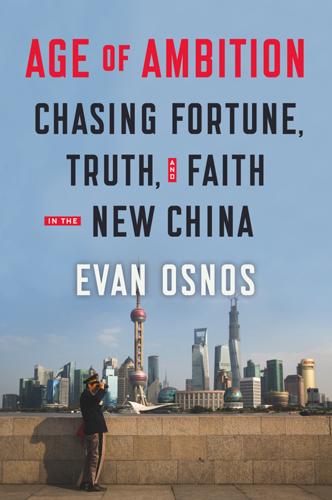
Age of Ambition: Chasing Fortune, Truth, and Faith in the New China
by
Evan Osnos
Published 12 May 2014
Among the documents that were most valuable was the official State Council report on the crash investigation, available online as “723 Yongwen Xian Tebic Zhongda Tielu Jialong Shigu Diaocha Baogao,” available at www.chinasafety.gov.cn/newpage/contents/Channel_5498/2011/1228/160577/content_160577.htm. For background on the growth of the Chinese high-speed rail, see Paul Amos, Dick Bullock, and Jitendra Sondhi, “High-Speed Rail: The Fast Track to Economic Development?” World Bank, July 2010; Richard Bullock, Andrew Salzberg, and Ying Jin, “High-Speed Rail—The First Three Years: Taking the Pulse of China’s Emerging Program,” China Transport Topics, no. 4, World Bank Office, Beijing, February 2012; James McGregor, “China’s Drive for ‘Indigenous Innovation’: A Web of Industrial Policies,” report commissioned by the U.S.
…
When the first high-speed line debuted with a test run in June 2008, it was 75 percent over budget and relied heavily on German designs, but nobody dwelled on that during the ceremony. When another line made its maiden run, Liu took a seat beside the conductor and said, “If anyone is going to die, I will be the first.” That autumn, to help ward off the global recession, Chinese leaders more than doubled spending on high-speed rail and upped the target to ten thousand miles of track by 2020, the equivalent of building America’s first transcontinental route five times over. China prepared to export its railway technology to Iran, Venezuela, and Turkey. It charted a freight line through the mountains of Colombia that would challenge the Panama Canal, and it signed on to build the “pilgrim express,” carrying the faithful between Medina and Mecca.
…
Liu’s ambitions and Chinese authoritarianism were a volatile combination. The ministry was its own regulator, virtually unsupervised, and the minister and his aides had no tolerance for dissenting voices. When professor Zhao Jian, of Beijing Jiaotong University, publicly objected to the pace of high-speed-rail construction, Liu summoned him and advised him to keep quiet. Zhao refused to back down, and the university president called him. “He told me not to continue to voice my opinions,” Zhao told me. The professor resisted, but his concerns were ignored—until the crash. “Then it was too late,” he said.
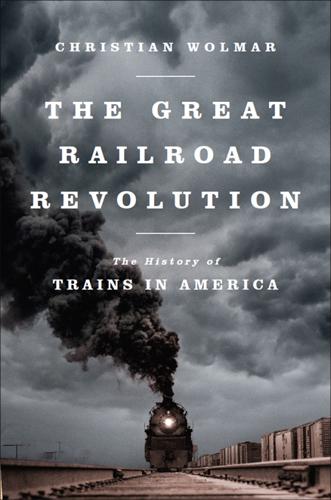
The Great Railroad Revolution
by
Christian Wolmar
Published 9 Jun 2014
The less newsworthy or dramatic development of suburban rail systems and light-rail networks may be a better way of initially getting more people quickly onto the railroads than the big-ticket, high-speed rail schemes promoted by a government eager to attract the headlines. The fact that the stimulus package is concentrating on a few key corridors is the right way to go, but it would be better to do a few cheaper ones rather than throw vast amounts of money at schemes like California’s high-speed rail project that are unlikely to see the light of day for a generation or more, if ever. America could enjoy a new age of the train. Environmental conditions may again make flying difficult or expensive.
…
And, finally, the last two chapters show how the performance of the railroads in the Second World War was their last heyday, preceding a remarkably rapid decline, first in passengers, and then in freight, which actually could have resulted in the closure of much of the network. In the event, the railroads were rescued by the government and by changes in legislation. The freight railroads are now flourishing and passenger rail growing, amid much discussion about increased investment and, in particular, high-speed rail. Towns and cities across the country see rail as a way of reducing the burden on the roads, and, despite opposition, many new schemes are being put forward. The railroad, a nineteenth-century invention that struggled in the latter part of the twentieth, undoubtedly has a great future in the twenty-first.
…
Instead, all railroads gradually turned to the method of track-bed construction that has largely survived, with remarkably little change, through to this day. First, after the route is prepared through grading, ballast—chunky gravel—is laid to absorb the impact of the passing trains, and then ties (sleepers in Britain) are placed at right angles to the direction of the train and used as a base for the rails. Remarkably, modern track laid for high-speed rail lines today still uses ballast and consequently would be quite recognizable in appearance to the railroad builders of the mid-nineteenth century, the only obvious difference being the electrification equipment. Despite their initial reliance on British imports, American railroads were, right from the start, very different in style and technology from their European counterparts—not only in the design of the locomotives but also in the way the railroads themselves were built.

Road to Nowhere: What Silicon Valley Gets Wrong About the Future of Transportation
by
Paris Marx
Published 4 Jul 2022
It must be planned as part of a coordinated system that prioritizes rail where it is feasible. In recent years, China has built the largest high-speed rail system in the world, while the European Union continues to expand its high-speed links and revive night trains to make longer journeys more feasible. Yet the train systems of North America remain stuck in the twentieth century, so it is no wonder that some people there think trains are a thing of the past. Solving this problem does not mean betting on transport fantasies such as Elon Musk’s Hyperloop vision, when high-speed rail is a technology that actually exists and has been undergoing constant improvement since the 1970s.
…
Tesla had experienced a rough year between its “production hell” caused, in part, by the failure of Musk’s plan to automate the intricate final assembly of its vehicles, and its acquisition of SolarCity, a solar panel company founded by Musk’s cousins whose terrible financials Musk hid from Tesla’s board to ensure the deal went through. Meanwhile, several years earlier he had also announced a visionary intercity transportation system called Hyperloop that he had no intention of pursuing and which he later admitted was unveiled with the goal of killing the high-speed rail line being built in California.6 Musk did not want the government to build a state-of-the-art train system; instead, he wanted to distract people with a technology that would not be feasible for at least several decades while keeping people reliant on personal vehicles. And that same trickery was at the center of what came to be called the Boring Company.
…
While rural areas are likely to maintain some degree of automobile use into the future, they should still have reliable public transportation within their communities and to connect them with nearby cities and towns. Even with expanded rail and intercity bus networks, there will still be people needing to travel long distances for whom those services may not be sufficient. High-speed rail and even more frequent conventional rail services can replace some short-and even medium-haul flight routes, and the option of flying should eventually be removed where that is possible. France began to do just that in 2021 on routes with train connections of up to two and a half hours. Governments once exerted much more power over flight routes and ticket prices before the deregulation of air travel and the privatization of state airlines began in the 1970s, and greater regulation, if not renationalization, will be essential to make airlines serve the public as part of a planned transportation network that prioritizes goals of equity and sustainability.
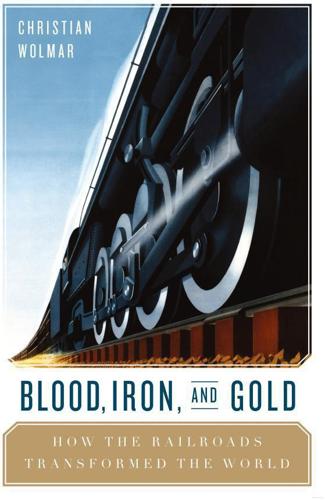
Blood, Iron, and Gold: How the Railways Transformed the World
by
Christian Wolmar
Published 1 Mar 2010
It was not to be, though, as gradually government and railway companies realized there remained great potential for the railways in the markets where traditionally they dominated: commuting, fast intercity travel and carrying coal and minerals. And Chapter 13 celebrates their renaissance, in particular the high-speed rail revolution that has given the railways in the twenty-first century a new lease of life, and suggests that the future is rail. I have been deliberately inconsistent in the use of names of towns and cities. Where there is a common English usage, such as Vienna or Turin, I have used it, but elsewhere I have kept the local name.
…
South Africa and Australia were also among those who introduced diesels more gradually. Electrification was potentially a better option than diesel, offering a cleaner and more efficient technology since it does not involve carrying heavy fuel on board. Certainly, as we see in the next chapter, its use on high speed rail lines has contributed to their success. But again, when railways were faced with the need to modernize, electrification was an expensive option requiring considerable initial expenditure. Many railways were not courageous enough to make the necessary investment and lost out, but those that did invariably found that there was a ‘sparks effect’, with faster, cleaner and more reliable services attracting passengers back on to the railways.
…
Plans for the high speed network were scaled back but, nevertheless, not only have half a dozen lines, amounting to nearly 2,200 miles been built, but services have been accelerated so that today’s fastest Shinkansen trains travel at 300 km/h (186 mph) – the same as most European high speed services – and there are plans for further speed increases. The Shinkansen has proved to be a tremendous boon for Japan’s economy. An economist, bemoaning the loss of passenger services in the United States, wrote: High-speed rail has played an impressive part in reducing transportation costs in Japan and limiting the nation’s oil imports. The International Institute for Applied Systems Analysis found the Shinkansen to be nearly three times more productive than aircraft serving the same route in terms of labor efficiency, five times more effective in terms of capital costs on equipment, and eight times more effective in terms of energy consumed. 3 Yet, despite the success of the Shinkansen, it was over a decade before any other railway would rival Japan’s achievement.
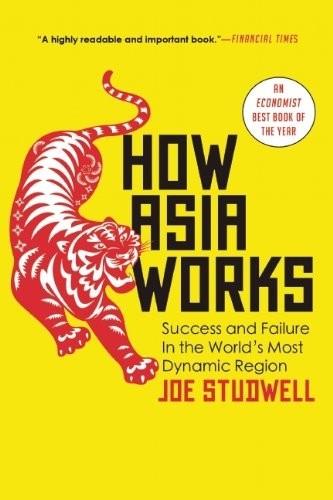
How Asia Works
by
Joe Studwell
Published 1 Jul 2013
In 2007, the government launched an extraordinary USD395 billion programme to construct a 16,000-kilometre high-speed rail network, more than half of which was already complete by the end of 2010.42 By that point, the Ministry of Railways borrowed over USD300 billion, and provincial governments much more, to fund a network that in four years grew to be three times the size of Japan’s shinkansen bullet train service and which will soon be five times bigger. To put the Chinese investment in perspective, in 2011 the US government asked Congress for USD53 billion to fund the beginnings of an American high-speed rail network (Congress turned the government down).
…
Despite mercurial appearances, the ministry researched high-speed rail for fifteen years before it signed its first big technology deals in 2004. Officials followed a proven strategy of luring foreign firms to open offices in China with the promise of a large market, and then spending years talking to them before putting any money on the table. The railway ministry centralised all bargaining with technology providers to reduce costs. However, it also successively entered joint ventures and licensing agreements with each of the world’s four leading high-speed rail firms (Bombardier, Kawasaki Heavy Industries, Siemens, Alstom) to allow Chinese rail research institutes to look at all available technologies.43 In 2010, the Ministry of Railways announced that the country’s two state-controlled locomotive and rolling stock manufacturers not only had digested core high-speed rail technology in only five years, but also were ready to produce even faster trains of their own.
…
However, it also successively entered joint ventures and licensing agreements with each of the world’s four leading high-speed rail firms (Bombardier, Kawasaki Heavy Industries, Siemens, Alstom) to allow Chinese rail research institutes to look at all available technologies.43 In 2010, the Ministry of Railways announced that the country’s two state-controlled locomotive and rolling stock manufacturers not only had digested core high-speed rail technology in only five years, but also were ready to produce even faster trains of their own. The ministry trumpeted the launch of a CRH380 locomotive, with a top speed of 380 kilometres per hour – faster than any train operating in the world. In 2011, however, it became clear that all was not as it seemed. In February, Minister of Railways Liu Zhijun – nicknamed ‘Leap Liu’ for his promises to leapfrog Chinese railways into global technological leadership – was summarily sacked and placed under investigation for ‘severe violation of discipline’, a CPC euphemism for corruption.
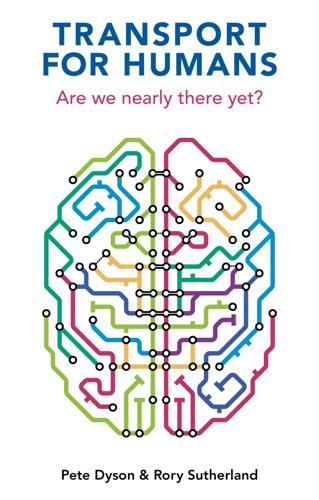
Transport for Humans: Are We Nearly There Yet?
by
Pete Dyson
and
Rory Sutherland
Published 15 Jan 2021
All these interventions play with the human energy that sits outside of the economic and engineering equations that have typically governed the design of our transport systems. These are the transport appraisal models, business cases, impact assessments, carbon abatement calculations and many other techniques that decide everything from installing new cycle lanes to building high-speed rail lines. The energy outside the equation We are reaching the limits of what technological innovation can achieve to improve the way we travel. To successfully realize the ambitions of society, both technological change and behaviour change are required. People are not passive recipients of transport services: their behaviour plays an active role in shaping it.
…
We’ve established that HS2 should make it fast and easy to get to the station, with travel time calculators based on anticipated congestion, recommended routes and back-up options. Why leave it to us? To minimize the chance of actually missing the train, and the perceived stress caused by even considering that this might happen, most people arrive early. When the stakes are high, we are loss averse. High-speed rail across the world mimics air travel by using pre-booked tickets and advance fares to handle yield management. We save money by buying a ticket that is valid on only one train, meaning we need ‘buffer time’ to get to the station, and most of the time this means we are left to hang around when we get there.
…
Yes, but this misses the bigger picture.34 Revenue is already forgone from the exponentially wider catchment area left unserved by rigid ticket structures, because the further you are from the station, the more you have to buffer, and the less attractive the train therefore becomes. We concede that high-order retail would suffer from customers no longer milling about, but last time we checked, providing Oliver Bonas with impulse jewellery sales was not in the business case for high-speed rail. This flexible early-arrival innervation is already used by Eurotunnel, the rail-based car shuttle between the United Kingdom and France, for drivers who arrive early, and seat-class upgrade bidding platforms are emerging among airlines. 3. Name it for the real why Modern public transport would really benefit from a more imaginative vocabulary.
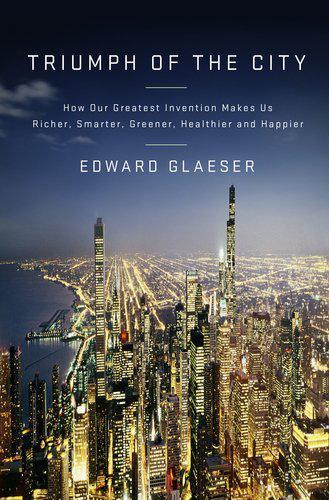
Triumph of the City: How Our Greatest Invention Makes Us Richer, Smarter, Greener, Healthier, and Happier
by
Edward L. Glaeser
Published 1 Jan 2011
Today, moving goods and people is pretty cheap almost everywhere, so further improvements in transportation provide far less of an edge. Transportation investments are most effective when they radically increase the speed at which a poor area can access a booming, space-starved metropolis. In Spain, a spate of investment in high-speed rail has radically reduced travel times between Madrid and other cities, such as Barcelona and Ciudad Real. The high-speed rail connection shortened the 140-mile trip between Madrid and Ciudad Real to fifty minutes, and presto, people can live in Ciudad Real and work in Spain’s largest city. The population of Ciudad Real does seem to have increased since getting the rail connection.
…
Shrinking to Greatness Many cities around the world have experienced some version of Detroit’s fate, and politicians have implemented many approaches to urban decline. U.S. cities have mainly tried to build their way out of decline. Spain has turned to transportation, spending tens of billions of dollars on high-speed rail, partly as a way to boost economic growth in poorer areas. Other places, like Italy, have used large tax subsidies to encourage enterprise in poorer regions. Many European cities have tried cultural strategies like the Guggenheim Museum in Bilbao. In 2008, Liverpool had a flurry of new construction to celebrate its one-year stint as Europe’s capital of culture.
…
The population of Ciudad Real does seem to have increased since getting the rail connection. In compact England, cities like Birmingham, Manchester, and Liverpool could also grow significantly as a result of extremely fast rail connections to London. Yet the very things that have helped Ciudad Real benefit from high-speed rail are absent in much of America’s Rust Belt. Flying to New York from Buffalo or Cleveland or Detroit will always be faster than taking a train. There’s a lot of empty space between New York and these cities, so why would those relatively distant places be natural spots for back-office overflow? Faster links to New York can certainly benefit nearby places like Philadelphia or New Haven, but America’s wide-open spaces are just too big for faster ground transportation to revitalize more distant areas.
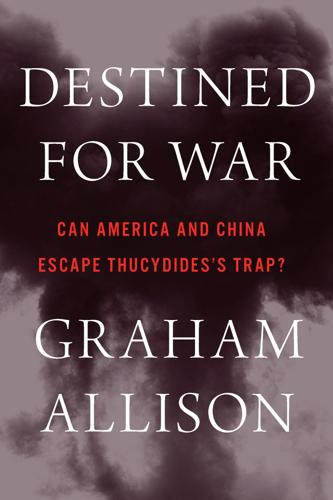
Destined for War: America, China, and Thucydides's Trap
by
Graham Allison
Published 29 May 2017
[back] 38. See Virginia Postrel, “California Hits the Brakes on High-Speed Rail Fiasco,” Bloomberg, June 28, 2016, https://www.bloomberg.com/view/articles/2016-06-28/california-hits-the-brakes-on-high-speed-rail-fiasco; “Taxpayers Could Pay Dearly for California’s High-Speed-Train Dreams,” Economist, March 27, 2016, http://www.economist.com/news/science-and-technology/21695237-taxpayers-could-pay-dearly-californias-high-speed-dreams-biting-bullet. [back] 39. Lu Bingyang and Ma Feng, “China to Build Out 45,000 km High-Speed Rail Network,” Caixin, July 21, 2016, http://english.caixin.com/2016-07-21/100968874.html.
…
In November 2015, Beijing replaced the substantially larger, 1,300-ton Sanyuan Bridge in just 43 hours. 35 Overall, China built 2.6 million miles of roads—including 70,000 miles of highways—between 1996 and 2016, connecting 95 percent of the country’s villages and overtaking the US as the country with the most extensive highway system by almost 50 percent.36 Over the past decade, China has constructed the world’s longest high-speed rail network: 12,000 miles of rail lines that carry passengers between cities at speeds of up to 180 miles per hour. In the US, that much new track would stretch from New York to California and back, twice. At 180 mph, one could go from Grand Central Terminal in New York City to Union Station in DC in just over an hour; from Boston to Washington in two. Indeed, China now has more high-speed rail tracks than the rest of the world combined.37 During this same decade, California has been struggling mightily to build a single 520-mile high-speed connection between Los Angeles and San Francisco.
…
Indeed, China now has more high-speed rail tracks than the rest of the world combined.37 During this same decade, California has been struggling mightily to build a single 520-mile high-speed connection between Los Angeles and San Francisco. Voters approved the project in 2008, but the state recently admitted it will not be finished until 2029, at a cost of $68 billion—9 years later and $35 billion more than was originally promised.38 By then, China plans to have completed another 16,000 miles of high-speed rail connections.39 Beyond the skyscrapers, bridges, and fast trains lies the far more profound impact of China’s human development. A generation ago, 90 out of every 100 Chinese lived on less than $2 a day. Today fewer than 3 in 100 do.40 Average per capita income has risen from $193 in 1980 to over $8,100 today.41 In assessing progress toward the UN’s Millennium Development Goals for improving the lives of the world's poorest people, World Bank president Robert Zoellick noted in 2010, “Between 1981 and 2004, China succeeded in lifting more than half a billion people out of extreme poverty.
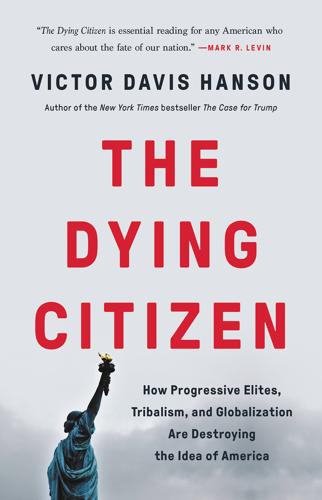
The Dying Citizen: How Progressive Elites, Tribalism, and Globalization Are Destroying the Idea of America
by
Victor Davis Hanson
Published 15 Nov 2021
Property crimes in San Francisco highest in the nation among large municipalities: Megan Cassidy and Sarah Ravani, “The Scanner: San Francisco Ranks No. 1 in US in Property Crime,” San Francisco Chronicle, October 1, 2018, www.sfchronicle.com/crime/article/The-Scanner-San-Francisco-ranks-No-1-in-13267113.php. Rollback of highspeed rail: Romy Varghese, “California’s Newsom Scales Back Plans for High-Speed Rail Line,” Bloomberg, February 12, 2019, www.bloomberg.com/news/articles/2019-02-12/california-governor-says-he-s-dropping-high-speed-rail-plan; last California reservoir: Paul Rogers, “California Drought: Why Doesn’t California Build Big Dams Any More?,” Mercury News, August 31, 2014, www.mercurynews.com/2014/08/31/california-drought-why-doesnt-california-build-big-dams-any-more. 44.
…
The poor resident, without power for hours on end, sometimes had to choose between baking indoors without the electricity to run air conditioning and venturing outside to breathe hot, smoke-laden air. The choices were even worse for many of the middle class who lived in the foothills and mountains, tens of thousands of whom were evacuated, often with complete loss of their property. The state had also shorted roads and bridges in favor of a soon-to-be disastrous high-speed rail project. It was cancelled after its first phase suffered multi-billion-dollar cost overruns—at a time when the nearby and parallel chief north-south freeway, the 99, remained in decrepit shape and by most metrics was the most dangerous major thoroughfare in the nation. Had billions of dollars, wasted on utopian transit dreams, been first invested in expanding and repairing the calcified California freeway system, the lives of millions of daily middle-class commuters might have been far safer and less taxing.
…
Moreover, California can be found near the bottom of national rankings for schools and infrastructure. San Francisco ranks first among America’s largest cities in property crimes per capita. The massive concrete ruins of the state’s quarter-built and now either cancelled or postponed multi-billion-dollar high-speed rail system are already collecting graffiti. Aside from the Southern California Diamond Valley Lake and dam project of 2003, the state has not built a single major reservoir in nearly four decades—since construction was completed on the New Melones Dam in 1979. Since that time, the state has doubled its population and become even more dependent than ever on the massive water transfers of the now ossified California Water Project, federal Central Valley Project, and Colorado River allotments.
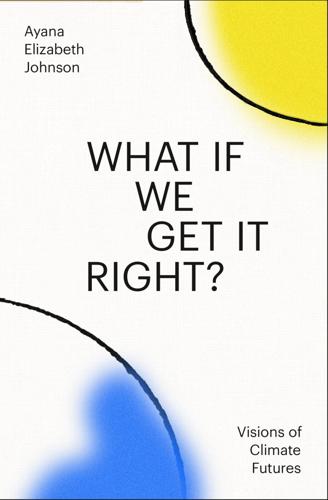
What If We Get It Right?: Visions of Climate Futures
by
Ayana Elizabeth Johnson
Published 17 Sep 2024
+ Building with wood instead of concrete and steel could reduce associated fossil fuel consumption by up to 19%, and carbon emissions by up to 31%. + Installing green roofs in urban areas could lower indoor temperatures by up to 18°C (32.4°F), and retain up to 88% of stormwater runoff. + High-speed rail is 3 times faster and 4 times more energy-efficient than driving, nearly 9 times more energy-efficient than flying, and can reduce emissions by up to 90% when powered by clean electricity. + Use of EVs cut oil demand by about 1.8 million barrels per day in 2023—equivalent to roughly 2% of the global supply—and could cut demand by 12.4 million barrels per day by 2035
…
If a newspaper has an auto section, for example, I would shift it to a transportation section because we know that we need people to get out of cars, so why are we so narrow? Why is there so much coverage of EVs as personal vehicles instead of other things that fall under the electric vehicle umbrella, like electric buses or high-speed rail, or trolleys or bicycles?[*116] If you have a transportation section, it functions differently. Another change would be to the way we cover politics generally, not just as it relates to climate. Political coverage is very much about the horse race of elections. There’s this expectation that your role as a citizen in this country is to vote every two or every four years and that’s where your role in democracy begins and ends.
…
Building energy-efficient smart grids. Upgrading all existing buildings—that was a big one—to achieve maximum energy efficiency and water efficiency, including through electrification. Spurring growth of clean manufacturing. Investing in sustainable and family farming. Expanding clean and affordable public transit, including high-speed rail, and expanding EV manufacturing and infrastructure. Funding community-defined and -driven projects to mitigate the long-term effects of pollution and climate change. Removing carbon through low-tech solutions. Protecting ecosystems. There’s more, but I forget off the top of my head. Ayana: So it’s a whole set of goals and projects that hit different ways greenhouse gas pollution can be sequestered or prevented, and the societal changes that need to happen along the way.
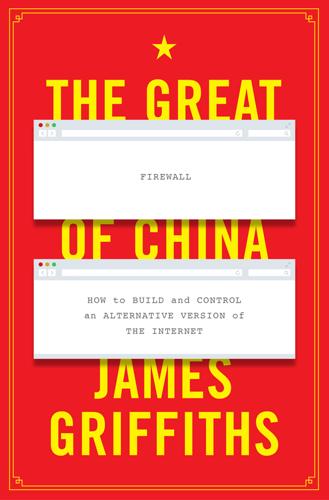
The Great Firewall of China
by
James Griffiths;
Published 15 Jan 2018
” * At the start of the 2010s, few things better symbolised China’s changing fortunes and new prosperity than the country’s high-speed rail system. Beginning in 2007, Chinese trains, previously a “symbol of backwardness”,2 were replaced by sleek, gleaming white carriages capable of travelling upwards of 200 kilometres an hour. In the decade that followed, the government spent hundreds of billions of dollars to criss-cross the country with high-speed lines, building the largest such network globally. In 2017, more than 20,000 kilometres of track was in service, more than the rest of the world’s high-speed rail systems combined.3 Coming from the West, the gaotie can seem like something close to miraculous.
…
In 2017, more than 20,000 kilometres of track was in service, more than the rest of the world’s high-speed rail systems combined.3 Coming from the West, the gaotie can seem like something close to miraculous. Cheap, fast, efficient and clean, China’s high-speed rail network is everything the clunky, underfunded train lines of Britain and the United States are not. A train from Shanghai to Nanjing, the capital of neighbouring Jiangsu province, some 300 kilometres away, takes just over seventy-five minutes and can cost as little as $20. On 23 July 2011, this symbol of the new China received a devastating blow. At 8.30pm on a Saturday, driver Pan Yiheng was guiding a train full of tourists headed from Beijing to the southern coastal city of Fuzhou. As the train pulled onto tracks spanning a slender viaduct near the city of Wenzhou, in Zhejiang province, a dispatcher suddenly screamed in Pan’s ear: “Be careful!
…
He hauled on the emergency brake, but it was too late. Pan’s train hit D3115 at almost 100 kilometres an hour, impaling the driver on his brake, derailing both engines, and sending four train cars plummeting into fields some 30 metres below.4 Forty people were killed in the accident, with almost 200 more injured. It was the third deadliest high-speed rail disaster in history, and the first fatal crash to befall China’s gaotie network. And yet, within twenty-four hours, the line was back in service. Several of the carriages were buried in the fields where they fell, and the incident did not make the front pages of the following day’s national newspapers.
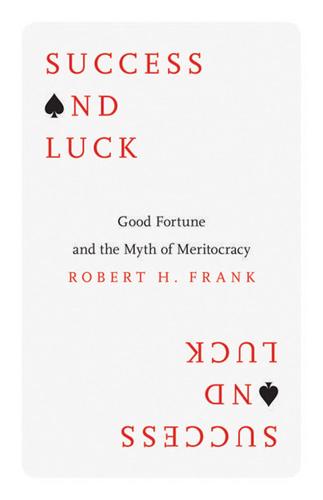
Success and Luck: Good Fortune and the Myth of Meritocracy
by
Robert H. Frank
Published 31 Mar 2016
We’ve also done little to expand and improve existing infrastructure. Morocco, a country whose per capita income is roughly a tenth that of the United States, is nearing completion of a 350-kilometer high-speed rail link between Casablanca and Tangier. Trains along much of that line will travel at 200 mph. In the United States, which has one of the world’s most densely populated rail corridors, proposals to build high-speed rail consistently fail in Congress. The fastest trains along our northeast corridor average only 80 mph. Even more troubling, support for public education has diminished sharply in recent decades.
…
Scott, 84 Forstall, Scott, 132 Fox Business News, 3 frames of reference, 13, 16, 105, 106, 111, 112, 143, 144 Francis, Andrew, 14 free will, 78, 79 Friedman, Milton, 126, 171 Gabaix, Xavier, 50 Gates, Bill, 33–35, 37 Gawker, 103 General Motors, 50 genetic heritability, 8, 61, 83 German invasion of Poland, 104 Gerstner, Louis J., 51 Gilligan, Vince, 24, 31 Gilovich, Tom, 1, 80, 131 Gladwell, Malcolm, 33, 36 globalization, 54 Godfather, The, 23 Goff, Rick, xiv golden opportunity, 17, 109, 127, 130 Graf, Steffi, 45 Gramlich, Edward M., 27 gratitude, 98–103 Great Recession, the, 124, 134 Gross, Terry, 5 H&R Block, 43 Harvard University, 34, 36, 48, 72, 136 headwinds, 63, 64, 80, 81 height, 8 Hewlett-Packard, 53 High School Baseball Web, 62 high-speed rail, 87 hindsight bias, 21 Homo economicus, 129 hostile takeover litigation, 36 human capital, 40, 66 Huo, Yuezhou, 95 Huxley, Aldous, vii IBM, 34, 35, 51 Ice King, 37 income inequality, 52–55, 112, 113; and bankruptcy rates, 114, 115; and divorce rates, 114, 115; and government stimulus policy, 162, 163; and hours worked, 115; and long commute times, 114, 115; and spending by the wealthy, 165 individual vs. collective incentives, 17, 110, 117, 169 infrastructure, 12, 18, 87, 90, 91, 98, 111, 119, 120, 124, 147, 162 jealousy, 122 Johnson, Harold, 134–41 Journal of Political Economy, 28 JVC, 44 Kahneman, Daniel, 28, 70 Kardashian, Kim, 9 keeping up with the Joneses, 112 Keillor, Garrison, 72 Kildall, Gary, 34–36 Koble, Amy, 102 Koufax, Sandy, 142 Kristof, Nicholas, xiv, xv Krueger, Alan, 8 LaBelle, Patti, 103 Lake Wobegon Effect, 72 Landier, Augustin, 50 Langone, Kenneth, 104 last-name effects, 39 Lazarsfeld, Paul, 21 Leonard, Elmore, 5 Leslie, Ian, 22 Lewis, Michael, xii, xiii, xv, xvi Liar’s Poker, xiii liberals, xi, 17, 83 Little League baseball, 142 Lockdown, 30 Locke, John, 96 Lokkins, Elmer, 106 London School of Economics, 4 Long Tail, The, 47 lost-envelope thought experiment, 130 lottery winners, 69, 72 Louvre, the, 22 Major League Baseball, 62, 141 Manove, Michael, 74 markets for classical music, 46, 47 Marshall, Alfred, 41 Martin, Brett, 31 material living standards, 14, 90 Matthew Effect, 24 Mauboussin, Michael, 69 McCullough, Michael, 102 Mechanical Turk, 95, 137 meritocracy, xi, xii Merton, Robert K., 24 Mialon, Hugo, 14 Microsoft, 34, 35, 44 Milanovic, Branko, 7 Mlodinow, Leonard, 35 Mona Lisa, 9, 22–23 Morocco, 87 motivated cognition, 72 MS DOS, 35 Munger, Charlie, 39 Murphy, Liam, 97 Music Lab, 30, 45 Nagel, Thomas, 97 naïve optimism, 11, 12, 70–72, 75 National Center for Education Statistics, 87 National Institutes of Health, 135 natural selection, 73, 116 natural stupidity, 70 Nepal, 7, 14, 86, 112 Nepotist, The, 30, 49 Netflix, 47 Netherlands, 20 network effects, 43–45, 48 New Orleans, 25 New York City, 107; cost of weddings in, 110; dwelling sizes of the wealthy in, 120; hypercompetitive music scene in, 30; penthouses with sweeping views in, 121 New York Metropolitan Opera, 47 New York Times, xiv, 4, 29 New Yorker, 61, 103 New Zealand, 20 Nixon, Richard, 105 no-free-lunch principle, 109 Nobel Prize, 28 Northeastern University, 98 NPR, 5, 126 numerical simulation, 64 Nunn, Sam, 126 Obama, Barack, 84, 91 Ohio State University, 135 O’Neal, Ryan, 23 Organization for Economic Cooperation and Development, 115 orthodox (or standard, or traditional) economic theories, 13, 69, 70, 112, 115 Our Kids, 144 Pacino, Al, 23 Palomar, 128 Patterson, Tim, 35, 36 Peace Corps, 7, 86 Perkins, Tom, 104 Peruggia, Vincenzo, 22 piano manufacturing, 42 Piketty, Thomas, 55 political polarization, 17 Porsche, 15, 16, 91, 119 positional arms control agreements, 118 positional arms races, 116, 117, 118, 144 positional concerns, 115, 116, 118, 122 positive feedback loops, 9, 44, 51, 104, 105 potholes, 16, 91 poverty, 14 Prince Ali Lucky Five Star, 72 Princeton University, xii, 133 progressive consumption tax, 118–27, 158–71; and consumption by retirees, 164; and regressivity, 160; as a Pigouvian tax, effect on economic growth, 161, 162; as a Pigouvian tax, effect on wealth inequality, 166; transition from the current tax system, 162; treatment of durable purchases, 160; treatment of loans, 159, 160; versus taxes on specific luxuries, 163, 164 public investment (see also infrastructure), 13 Putnam, Robert, 144 Puzo, Mario, 23 QDOS (“quick and dirty operating system”), 35 Rai, Birkhaman, 7, 86 Reagan, Ronald, 90 Reardon, Sean, xv Reddit, 56 Reese, PeeWee, 142 Regan, Dennis, 131 relative purchasing power, 92 Review of Economics and Statistics, 28 Rhodes, Frank H.
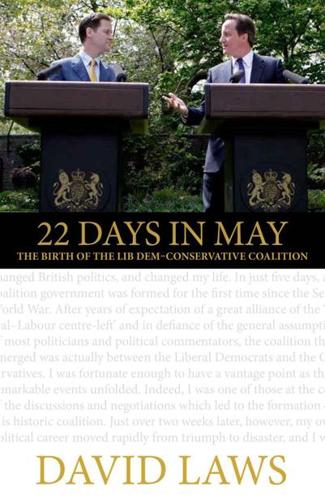
22 Days in May: The birth of the Lib Dem - Conservative coalition
by
Laws, David
Published 22 Nov 2010
• Specific measures to fulfil our joint ambitions for a low carbon and carbon friendly economy, including: the establishment of a smart grid and the roll-out of smart meters; the full establishment of feed-in tariff systems in electricity – as well as maintenance of banded ROCs; measures to promote a huge increase in energy from waste through anaerobic digestion; the creation of a green investment bank; the provision of home energy improvement paid for by the savings from lower energy bills; retention of energy performance certificates while scrapping HIPs; measures to encourage marine energy; the establishment of an emissions performance standard that will prevent coal-fired power stations being built unless they are equipped with sufficient CCS to meet the emissions performance standard; the establishment of a high-speed rail network; the cancellation of the third runway at Heathrow; the refusal of additional runways at Gatwick and Stansted; and the replacement of the Air Passenger Duty with a per flight duty; the provision of a floor price for carbon, as well as efforts to persuade the EU to move towards full auctioning of ETS permits; measures to make the import or possession of illegal timber a criminal offence; measures to promote green spaces and wildlife corridors in order to halt the loss of habitats and restore biodiversity; mandating a national recharging network for electric and plug-in hybrid vehicles; continuation of the present Government’s proposals for public sector investment in CCS technology for four coal-fired power stations; and a specific commitment to reduce central government carbon emissions by 10 per cent within 12 months.
…
• Welfare Reform – provide guarantees of jobs or training for out of work young people and the long term unemployed; ensure welfare to work for the inactive who can take jobs. Tougher conditionality to deliver savings. • Family Policy – extend the right to request flexible working to all employees, expand pre-school childcare and nursery places, and re-index pensions to earnings from 2012. Environment/Green Economy/Transport • Take forward plans for high speed rail. • Create a green investment bank. • Promote port development to provide wind turbine manufacturing facilities. • Establish pay as you save home energy loans. • Implement a “zero waste” policy and bans on recyclable and biodegradable materials to landfill. • Agree a White Paper on enhancement of the natural environment and biodiversity
…
We will carry out a national debate on the future of higher education funding, with full consultation following the Browne review. 3.1.9 Extension of the right to request flexible working to older workers, and an end to the Default Retirement Age at 65. 3.1.10 A new target that 40 per cent of electricity will be from low-carbon sources by 2020. 3.1.11 Reviewing the support regime for low-carbon energy generation as part of the Energy Market Assessment. 3.1.12 A commitment to reduce carbon emissions from central government [the public sector] by 10 per cent within 12 months. 3.1.13 Taking forward plans for High Speed Rail with legislation to be introduced within four years. No plans will be taken forward for additional runways in the South East in this Parliament. 3.1.14 Police reform, including provisions for greater local accountability and the takeover of police forces and Borough Commands that consistently fail their communities. 3.1.15 Extensive roll-out of restorative justice and citizen engagement in justice, through Neighbourhood Justice Panels, Community Prosecutors, and supporting magistrates to consult with Neighbourhood Policing Teams – working closely with local government. 3.1.16 A review of under six-month prison sentences to see how they can be reduced in favour of tough community sentences where that is shown to reduce reoffending and protect the public, whilst maintaining action to reduce violence against women. 3.1.17 Strengthen the points based system and extend it to applications for citizenship or permanent settlement. 3.1.18 A fundamental review of local government finance reform, to include consideration of the localisation of business rates. 3.1.19 Reform of the Housing Revenue Account, to enable local authorities greater freedom to build and maintain social housing, with 10,000 new council homes a year built by the end of the Parliament. 3.1.20 A comprehensive empty homes strategy, continued support for Home Buy Direct, and the development of new forms of affordable homes to rent for low income working families. 3.1.21 Reform of libel laws. 3.1.22 An unequivocal commitment: we will not torture; we will not ask others to torture on our behalf; any allegation or evidence of torture will be subject to full, independent investigation; and any official involved in torture, in the past or in the future, will have broken the law and be liable for prosecution. 4.

The Long History of the Future: Why Tomorrow's Technology Still Isn't Here
by
Nicole Kobie
Published 3 Jul 2024
While development wasn’t cheap – the government spent at least twice as much making APT as Tracked Hovercraft was granted, it would allow speeds up to 240km/h (150mph) by 1980 without new rail being laid, whereas rolling out the hovercraft infrastructure would cost £250,000 per mile. However, others saw value in the Tracked Hovercraft project. Like the British, the French wanted high-speed rail. Enter Jean Bertin and Aérotrain. Aérotrain worked similarly to the Tracked Hovercraft, in that it required a T-shaped concrete guideway, above which it hovered. However, Bertin didn’t have the benefit of Laithwaite’s LIMs for propulsion; but he did have a creative solution revealing his aerospace training: propellers.
…
The second element is a levitation system, such as using magnets or compressed air; this keeps the train hovering inside the tube for a near-frictionless ride. Finally, the third element is that there needs to be a way to get the pods moving through the tube and, depending on the design, to give them a bit of a boost now and then. Musk’s proposal begins with an opinion column against high-speed rail, or at least a local Californian project, complaining that the home of Silicon Valley shouldn’t have transport as slow and expensive as the proposed bullet train. Instead, Musk calls for a ‘truly new mode of transport’ that he describes as the ‘fifth mode after planes, trains, cars and boats’.
…
There are a few other possible reasons: some say the technology sketched out in detail in that PDF wouldn’t work; the costs aren’t accurate and would be far higher than budgeted; no government would invest billions on an untested transport technology in a region desperate for mass transit; and so on. There’s another theory, suggested by Musk’s biographer Ashlee Vance: Musk never meant to build it, but suggested it to get California’s government to delay or cancel the high-speed rail plans. That said, Musk has revived the idea throughout the years, pledging to build a hyperloop running through the northeast of the US, saying he had ‘government approval’ for a tunnel linking New York and Washington, DC. But in 2022, SpaceX quietly removed a test tube from its own parking lot, reportedly on the order of city authorities, after it had blocked pedestrian access for six years.
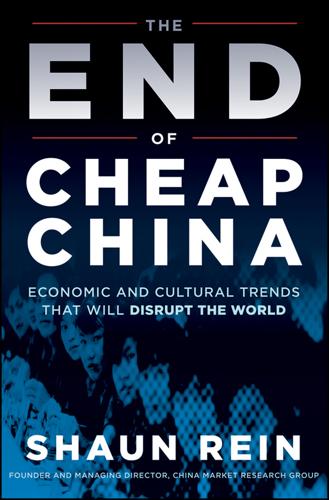
The End of Cheap China: Economic and Cultural Trends That Will Disrupt the World
by
Shaun Rein
Published 27 Mar 2012
Few content sites are blocked today in China, and Chinese can get unfettered access to international news sites that run critical pieces on China’s government, like those of the New York Times, TIME, and The Guardian. In online chat forums, Chinese people constantly criticize government actions, such as the corruption scandals involving high-speed rail investment and overspending on lavish government buildings. There is no shortage of opinions. If you walk down the street in China, it is even common to see people yelling at police who are trying to ticket them for some driving offense or jaywalking. Many Westerners think that the Chinese people are scared to express themselves, and shake with fear when police walk by—but that is simply not true.
…
New tunnels and bridges seem to emerge overnight, and many question how safe such rapid construction can be—especially in light of the 2011 high-speed train crash that killed dozens and injured hundreds—and whether it is even needed. Much of China’s four-trillion-renminbi stimulus program, launched in 2008 to combat the Great Recession, went toward enlarging and expanding current infrastructure projects. Government plans to spend $300 billion on high-speed rail to carry passengers and cargo to every part of the country are now being reconsidered due to safety concerns. Still, over 6,000 miles of rail have already been opened, and another 11,000 miles are under construction and set to open by 2015. Nearly one million Chinese continue to take high-speed trains every day.
…
Also like Roubini, Pettis believes that China’s infrastructure spending of about 50 percent accounts for too much of its overall GDP. However, there are huge differences between Chinese and Japanese construction for which Pettis fails to account. China’s railroads, bridges, and tunnels are increasing economic efficiency for the most part, not only within a city but between massive metropolitan areas. For instance, high-speed rail has cut travel time from 11 hours to 5 between Shanghai and Wuhan, increasing the business capabilities of the 40 million people who live in these cities. Not only is China’s infrastructure spending more efficient than Japan’s, it is helping to jumpstart economic growth. This is very different from Japan, where infrastructure investment was used to connect metropolitan areas to tiny hamlets, representing a desperate attempt to wake from its economic slumber after deflation (despite the low-interest loans made to pay for these projects) damaged the economy.
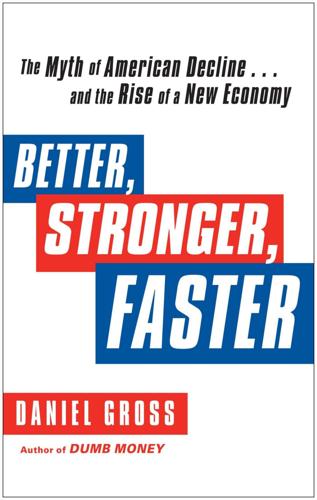
Better, Stronger, Faster: The Myth of American Decline . . . And the Rise of a New Economy
by
Daniel Gross
Published 7 May 2012
The prevalence of crumbling bridges, pothole-ridden streets, and idled construction equipment at home, combined with the rapid growth of gleaming new infrastructure abroad, has contributed to a sense of decline. The inability to do better makes people think that we’ve simply lost our mojo. As Larry Summers put it, “You can argue whether we need a new high-speed rail system or whether we don’t need a new high-speed rail system. But I don’t know what the argument is for letting bridges collapse.”3 Like so many other items, infrastructure investment has turned into a political football in recent years. President Obama and other Democrats have generally favored investment, citing the ability of “shovel-ready” projects to create jobs, put blue-collar workers back to work, and help businesses.
…
Instead of pointing out internal sources of rot and decay, many declinists looked abroad to bolster their case. Take the China Bulls, a group of analysts and journalists awed and impressed by China’s rapid growth, such as Thomas Friedman of the New York Times. It’s hard not to be overwhelmed by the enormousness of China. Every year of 8 percent growth, each high-speed rail track laid down and solar panel erected, and the steady agglomeration of impressive economic data seem to signal China’s rise and America’s fall. In the summer of 2008, when America was melting down, China staged the Summer Olympics in impressive fashion. In the fall of 2009, when I visited China for the first time, I traveled to Chongqing, which had been the country’s national capital during World War II.
…
The state bailed out many of its largest financial institutions in 2004, and ghost cities built with bad debt are likely to stimulate another round of bank bailouts. Wage inflation is causing a chunk of its manufacturing base to lose its cost advantage. Corruption and theft are widespread, and shoddy standards of business practice prevail in everything from drywall to high-speed rail to accounting. From Ai Weiwei, the artist who was briefly imprisoned, to the villagers of Fukan, who expelled corrupt officials in the fall of 2011, citizens are questioning the regime’s legitimacy. China has a set of rather blunt and crude instruments it can use to deal with challenges: when prices go up, it puts in price controls; when the regime fretted about food shortages and overpopulation, it instituted a one-child policy and ruthlessly enforced it for thirty years; in 2011 the government canceled Super Girl, China’s version of American Idol, because the concept of voting for a favorite pop star was dangerously close to the concept of, say, voting for leaders directly.
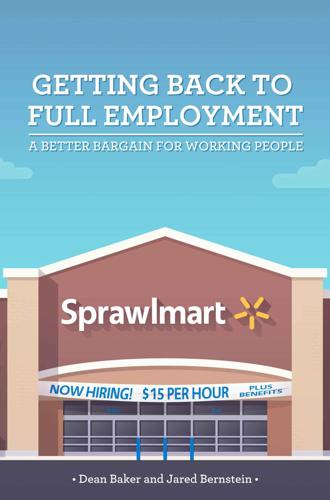
Getting Back to Full Employment: A Better Bargain for Working People
by
Dean Baker
and
Jared Bernstein
Published 14 Nov 2013
The United States began running persistent trade deficits starting in the latter 1970s, but since then the share of workers with college degrees has about doubled, from around 15 percent to 30 percent. The same hurdles apply to infrastructure. Small projects can be accomplished quickly, but almost by definition these will have a limited impact on the cost of goods production. Bigger infrastructure projects, like high-speed rail, will take years and possibly decades to put into place. The second qualification about educational and infrastructure improvements is that there are no guarantees with these investments. Based on past experience we can expect that on average public investment will add at least as much to productivity as private investment, but this doesn’t mean that some investments will not turn out poorly.[39] This is crucial to keep in mind, since if the public is not prepared to see some initiatives fail, we can expect to see a backlash against a public investment agenda.
…
What kinds of work does the federal government need to get done today? The list of projects that could be usefully undertaken is lengthy. Some, such as road and bridge repair, are simple and obvious. The Recovery Act funded a number of improvements in road and bridge infrastructure. A more ambitious but productive undertaking would be high-speed rail. The United States lags badly behind other wealthy countries in its regional and long-range rail system. Japan and Western Europe have had trains that can travel more than 170 miles per hour for four decades. While trains will likely never be competitive with airlines for coast-to-coast travel, they can be competitive for trips of 300-700 miles, which comprise a large portion of trips in the United States.

Lonely Planet's Best in Travel 2020
by
Lonely Planet
Published 21 Oct 2019
Streets brim with street-food stalls come evening, and a bowl of spicy rice noodles costs pennies, but down back alleyways, artisan businesses, cafes and craft bars are starting to open. In the countryside, teetery wooden villages still linger almost unchanged for centuries, but have begun to develop traveller amenities. All of this is connected by new high-speed rail lines, meaning you can zip to Chongqing or Kunming from Guiyang in a couple of hours. And China’s ongoing engineering efforts have resulted in gleaming new highways and bridges that make getting into and around Guizhou’s mystical mountains a 21st-century effort. ‘Guizhou is a simple, natural and beautiful place.
…
I work creating opportunities for women batik and embroidery artists from the Miao culture, and admire how deep and rich the traditions of the minority cultures here are.’ -Yu Ying, founder of Village Story artisan workshop Population: 35 million Main town: Guiyang Language: Mandarin Chinese Unit of currency: Renminbi How to get there: Guiyang airport serves flights across mainland China and regional international flights. High-speed rail services connect Guiyang and a handful of smaller cities to neighbouring Yunnan, Guangxi and Sichuan and further afield in China. Regional bus and train services help you get around; hiring a driver is recommended to reach some of the provincew’s most rural areas and small villages. TELL ME MORE… Remote Guizhou is largely unknown to modern travellers, though it was once a main artery on the Tea-Horse Road trading route between ancient China and the Tibetan plateau.

Lonely Planet Lonely Planet's Best in Travel 2022
by
Lonely Planet
Published 26 Oct 2021
Streets brim with street-food stalls come evening, and a bowl of spicy rice noodles costs pennies, but down back alleyways, artisan businesses, cafes and craft bars are starting to open. In the countryside, teetery wooden villages still linger almost unchanged for centuries, but have begun to develop traveller amenities. All of this is connected by new high-speed rail lines, meaning you can zip to Chongqing or Kunming from Guiyang in a couple of hours. And China’s ongoing engineering efforts have resulted in gleaming new highways and bridges that make getting into and around Guizhou’s mystical mountains a 21st-century effort. ‘Guizhou is a simple, natural and beautiful place.
…
I work creating opportunities for women batik and embroidery artists from the Miao culture, and admire how deep and rich the traditions of the minority cultures here are.’ -Yu Ying, founder of Village Story artisan workshop Population: 35 million Main town: Guiyang Language: Mandarin Chinese Unit of currency: Renminbi How to get there: Guiyang airport serves flights across mainland China and regional international flights. High-speed rail services connect Guiyang and a handful of smaller cities to neighbouring Yunnan, Guangxi and Sichuan and further afield in China. Regional bus and train services help you get around; hiring a driver is recommended to reach some of the provincew’s most rural areas and small villages. TELL ME MORE… Remote Guizhou is largely unknown to modern travellers, though it was once a main artery on the Tea-Horse Road trading route between ancient China and the Tibetan plateau.
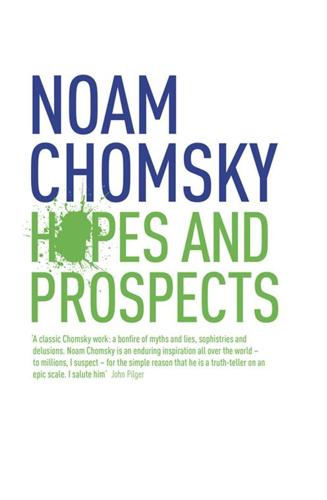
Hopes and Prospects
by
Noam Chomsky
Published 1 Jan 2009
Even the Wall Street Journal, one of the most stalwart deniers, ran a supplement with dire warnings about the “climate disaster,” urging that none of the options being considered may be sufficient and it may be necessary to undertake more radical measures of geoengineering, “cooling the planet” in some manner.27 Many also understand that it will be necessary to reverse the vast state-corporate social engineering programs since World War II, designed to promote an energy-wasting and environmentally destructive fossil fuel–based economy, and that a central element of these changes will have to be development of efficient high-speed rail systems. It is revealing to see how the problem is being addressed. The Wall Street Journal reported that “U.S. transportation chief [Ray Lahood] is in Spain meeting with high-speed rail suppliers.… Europe’s engineering and rail companies are lining up for some potentially lucrative U.S. contracts for high-speed rail projects. At stake is $13 billion in stimulus funds that the Obama administration is allocating to upgrade existing rail lines and build new ones that could one day rival Europe’s fastest.… [Lahood is also] expected to visit Spanish construction, civil engineering and train-building companies.”28 Spain and other European countries are hoping to get U.S. taxpayer funding for the high-speed rail and related infrastructure that is badly needed in the United States.
…
At stake is $13 billion in stimulus funds that the Obama administration is allocating to upgrade existing rail lines and build new ones that could one day rival Europe’s fastest.… [Lahood is also] expected to visit Spanish construction, civil engineering and train-building companies.”28 Spain and other European countries are hoping to get U.S. taxpayer funding for the high-speed rail and related infrastructure that is badly needed in the United States. At the same time, Washington is busy dismantling leading sectors of U.S. industry, ruining the lives of the workforce and communities. It is difficult to conjure up a more damning indictment of the economic system that has been constructed by state-corporate managers.
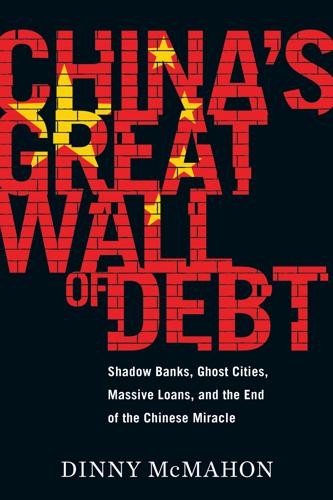
China's Great Wall of Debt: Shadow Banks, Ghost Cities, Massive Loans, and the End of the Chinese Miracle
by
Dinny McMahon
Published 13 Mar 2018
There was a time when China’s power grid couldn’t keep up with the demands of the economy, so much so that some parts of the country suffered from rolling brownouts. By 2012, the country was opening three new power plants a week. People, freight, and coal once had to compete for space on the country’s railroads—with people routinely losing out—but China has since spent hundreds of billions of yuan building a high-speed rail network from scratch, an investment that was once dismissed as an expensive boondoggle but is today celebrated globally as the crown jewel of China’s transportation system. China will unquestionably need even more infrastructure if it’s to accommodate all the additional migrants McKinsey anticipates.
…
There are two major high schools and a vocational-training center; a tennis center, built for the 2013 National Games—a kind of low-rent, domestic Olympics—hosted by Shenyang, which outsourced the event; two glass office towers for the local banks, which have their own lake-front location; a tram line that goes from downtown out to a nearby logistics park; and a high-speed rail station that connects the city with the rest of China’s northeast. Initially, the frenetic investment paid off. Tieling outstripped the national economy for years, peaking in 2007, when it grew by 20.8%, which was fast enough for the local economy to double in size within three and a half years, and significantly faster than the 13% growth for China as a whole.
…
Housing has been the engine of China’s growth for two decades, but it is also the weakness at the heart of the economy. With demand for new housing no longer sufficient to grow the economy as quickly as it once did, Beijing has attempted to take up some of the slack by increasing spending on infrastructure projects like high-speed rail and new airports. They’re not necessarily wise investments—as of 2017, China was planning to build seventy-four new airports by 2020 despite dozens of existing airports showing losses for years—but at least they generate demand for steel and concrete. Still, there’s no substitute for reviving the housing market.
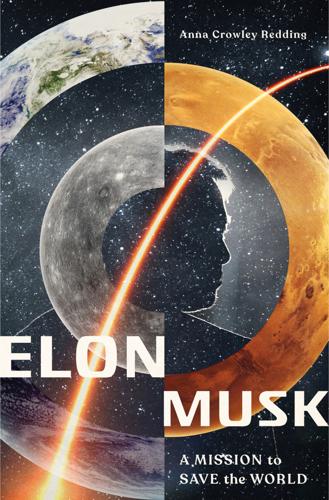
Elon Musk: A Mission to Save the World
by
Anna Crowley Redding
Published 1 Jul 2019
And all of those trips back and forth sparked daydreams about this new sci-fi level of transportation. All the way back in 2013 he mused about the whole thing while visiting the team behind the online learning nonprofit Khan Academy. In an interview with Sal Khan, Elon said, “I was reading about the California high-speed rail, and it was quite depressing. Because California taxpayers are going to be on the hook to build the most expensive high-speed rail per mile in the world—and the slowest,” he said. “Those are not the superlatives you want.”159 So he began doing what Elon does: breaking down transportation to its fundamental purpose and parts. And then he started rearranging those ingredients.

AI Superpowers: China, Silicon Valley, and the New World Order
by
Kai-Fu Lee
Published 14 Sep 2018
This blizzard of government incentives is going on across many of those cities right now, all competing to attract, fund, and empower AI companies. It’s a process of government-accelerated technological development that I’ve witnessed twice in the past decade. Between 2007 and 2017, China went from having zero high-speed rail lines to having more miles of high-speed rail operational than the rest of the world combined. During the “mass innovation and mass entrepreneurship” campaign that began in 2015, a similar flurry of incentives created 6,600 new startup incubators and shifted the national culture around technology startups. Of course, it’s too early to know the exact results of China’s AI campaign, but if Chinese history is any guide, it is likely to be somewhat inefficient but extremely effective.
…
Chinese governance structures are more complex than most Americans assume; the central government does not simply issue commands that are instantly implemented throughout the nation. But it does have the ability to pick out certain long-term goals and mobilize epic resources to push in that direction. The country’s lightning-paced development of a sprawling high-speed rail network serves as a living example. Local government leaders responded to the AI surge as though they had just heard the starting pistol for a race, fully competing with each other to lure AI companies and entrepreneurs to their regions with generous promises of subsidies and preferential policies.
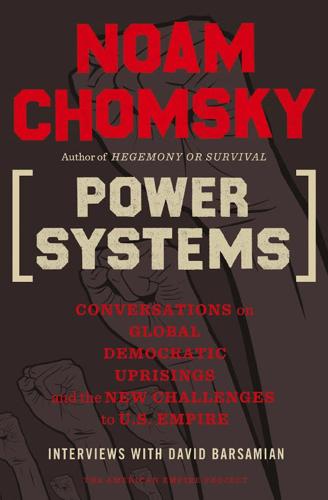
Power Systems: Conversations on Global Democratic Uprisings and the New Challenges to U.S. Empire
by
Noam Chomsky
and
David Barsamian
Published 1 Nov 2012
Meanwhile, Obama sends emissaries to tell people in these cities, “We really care about you and want to help you,” and distribute some pennies. At almost the same time, he sends another emissary, the secretary of transportation, to Spain to spend federal stimulus money for contracts with Spanish companies to build high-speed rail facilities.61 Those high-speed rail facilities could be built in the factories that are being closed, but that’s not important from the point of view of the bankers and Smith’s “principal architects” of policy. What’s lacking is the consciousness that began to arise in the 1930s—we’ll take it over and run it ourselves.
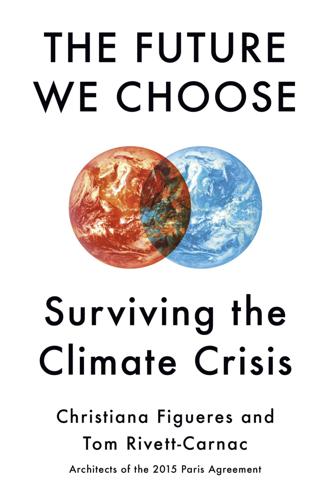
The Future We Choose: Surviving the Climate Crisis
by
Christiana Figueres
and
Tom Rivett-Carnac
Published 25 Feb 2020
Now we have shady groves of nut and fruit orchards, timberland interspersed with grazing, parkland areas that spread for miles, new havens for our regenerated population of pollinators.4 Luckily for the 75 percent of the population who live in cities, new electric railways crisscross interior landscapes. In the United States, high-speed rail networks on the East and West Coasts have replaced the vast majority of domestic flights, with East Coast connectors to Atlanta and Chicago. Because flight speeds have slowed down to increase planes’ fuel efficiency, passenger bullet trains make some journeys even faster and with no emissions whatsoever.5 The U.S.
…
Adams, “World Forest Area Still on the Decline,” Earth Policy Institute, August 31, 2012, http://www.earth-policy.org/indicators/C56/forests_2012. 4. Project Drawdown, “Tree Intercropping,” https://www.drawdown.org/solutions/food/tree-intercropping; Project Drawdown, “Silvopasture,” https://www.drawdown.org/solutions/food/silvopasture. 5. Petra Todorovich and Yoav Hagler, “High-Speed Rail in America,” America 2050, January 2011, http://www.america2050.org/pdf/HSR-in-America-Complete.pdf; Anton Babadjanov, “Can We Replace Cross-Country Air with Rail Travel? Yes, We Can!” Seattle Transit Blog, February 15, 2019, https://seattletransitblog.com/2019/02/15/can-we-replace-cross-country-air-with-rail-travel-yes-we-can/. 6.

Cockpit Confidential: Everything You Need to Know About Air Travel: Questions, Answers, and Reflections
by
Patrick Smith
Published 6 May 2013
There’s a cultural center, a museum, and a full-service hotel inside the secure zone, allowing travelers with extended layovers to rent a room without the need to clear immigration. Or, if you’re feeling energetic, a tour desk arranges free excursions to Incheon City. If you’re headed into Seoul, the airport’s high-speed rail connection will have you downtown in under an hour. Why can’t every airport be like this? Fifteen Things No Terminal Should Be Without: 1. A fast, low-cost public transportation link to downtown In a way, choosing a favorite airport is like choosing a favorite hospital: amenities aside, nobody really wants to be there in the first place, and the easier and faster you can get the hell out, the better.
…
Not only that, but the larger economies of scale would save millions of gallons of fuel while reducing emissions. (It also could eliminate thousands of jobs, so I should be careful what I wish for.) But what about other possible solutions, such as increased use of satellite airports, peak-period pricing schemes, and the construction of high-speed rail? Let’s review some of the commonly suggested alternatives. 1. We need to modernize air traffic control. Although enhancements are long overdue, they would primarily benefit the higher-altitude, en-route airspace sectors, with a lesser impact where it is needed most—in and around airports.
…
If a certain number of passengers are siphoned away, the tendency isn’t to eliminate flights outright; it’s to reduce the size of the aircraft. A 767 becomes a 737; a 737 becomes an RJ. Airline competition is seldom a zero-sum game. The market splinters and keeps on growing. These very same points are what make the high-speed rail “solution” similarly misunderstood. There’s no reason to oppose trains on their own merits, but any effect on air traffic would be negligible. See Europe, where railways are fast, dependable, and ultra-convenient, yet the number of annual airline passengers is only marginally lower than it is in the United States. 4.

The Impossible City: A Hong Kong Memoir
by
Karen Cheung
Published 15 Feb 2022
“We’re being scammed, that’s what’s happening,” one villager says later during an interview with the media. “I’m so damn angry.” She is in tears. Another says, “We can’t afford to buy a flat. A three-hundred-square-foot flat is around five million.” Villagers who have faced such fates include residents of Choi Yuen Village, which was demolished for a Hong Kong–China high-speed rail; three northeast New Territories villages that were the subject of protests in 2014; and now, Wang Chau. The activism surrounding Choi Yuen Village in 2008 was instrumental in prompting Hong Kongers to seriously consider for the first time the meaning of the right to home, and the right for rural life to exist alongside the bustling cityscapes of Hong Kong.
…
Some of them were chaining themselves to the Queen’s Pier to prevent it from being torn down when I was still in secondary school, having class discussions about the historical sites that are considered Hong Kongers’ “collective memories.” The year I took my public exams, protesters pressed their heads to the ground in a prostrating walk to stop the government from demolishing the Choi Yuen Village to make way for a high-speed rail to mainland China no one asked for. I interview them for the feature stories I write, to trace those parts of the history I remember only from flickers on the television evening news, trying to understand. What was the moment that converted them from a bystander to a protester? When did they just know that they couldn’t sit back and watch anymore?
…
In other places, he sings of a moth that flies to the light, and finds its way to a burning heart. The first song he wrote in the style he eventually grew into was 《轉念始於足下寸土》, in 2010. Hin Yan sings: “鐵一般的秩序是路障只會讓我們跌倒,” “An ironlike order is a roadblock / it would only make us fall.” At the time, he was involved with the protests against a high-speed rail connecting Hong Kong and China. Hin Yan was only eighteen years old when he became involved in social activism. He and his bandmates had heard about a place called “autonomous 8a,” where you could learn guitar and jam for free. He started hanging around that space, which was a resource center for student and left-centric movements.
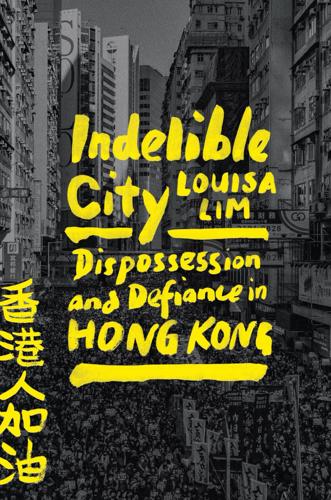
Indelible City: Dispossession and Defiance in Hong Kong
by
Louisa Lim
Published 19 Apr 2022
GO TO NOTE REFERENCE IN TEXT Rem Koolhaas’s OMA and Norman Foster: Christele Harrouk, “Construction Begins on OMA’s CMG Qianhai Global Trade Center in Shenzhen, China,” ArchDaily, May 11, 2020. GO TO NOTE REFERENCE IN TEXT high-speed railway: Eric Cheung, “Launch of HK-China High-Speed Rail Link Goes Smoothly, but Fears Remain,” CNN, September 23, 2018. GO TO NOTE REFERENCE IN TEXT the value of that plot of real estate: Denise Tsang and Alvin Lum, “Mainland China Will Only Be Charged HK$1,000 Per Year for Hong Kong High-Speed Rail Terminus,” South China Morning Post, August 31, 2018. GO TO NOTE REFERENCE IN TEXT visited by half the enclave’s tourists: Muhammad Cohen, “How the Venetian Made Macau Great Again,” South China Morning Post, August 28, 2017.
…
The new Hong Kongers found their initial training ground in a number of campaigns revolving around protecting the city’s distinctive cultural heritage, from colonial buildings left behind by the British to public housing estates and traditional clan halls like those I’d been dragged around as a sulky child. Over the next few years, the activists mobilized with protests and sit-ins. They lobbied for Wedding Card Street in Wanchai, which was demolished for a shopping mall in 2007, and Choi Yuen village in the New Territories, which was knocked down in 2009 to make way for a high-speed rail link to China. Gradually a campaign to protect Hong Kong’s local culture from mainland influence was taking shape. The activists had also learned from the Article 23 protest that radical action could achieve results, whereas working through the system often achieved little. Each of the four legislative elections during this period was a reminder of that truth: Patten’s expansion of the functional constituencies was rolled back, and although the pan-Democrats consistently polled better in the popular vote, they were constrained by a system that was gerrymandered by design.

Masters of Mankind
by
Noam Chomsky
Published 1 Sep 2014
At the same time that they’re dismantling the plants, meaning you and I are dismantling plants, because that’s where the money comes from, and it’s allegedly our representatives—it isn’t, in fact—at the very same time Obama was sending his Transportation Secretary to Spain to use federal stimulus money to get contracts for high-speed rail construction, which we really need and the world really needs.7 Those plants that are being dismantled and the skilled workers in them, all that could be reconverted to producing high-speed rail right here. They have the technology, they have the knowledge, they have the skills. But it’s not good for the bottom line for banks, so we’ll buy it from Spain. Just like green technology, it will be done in China.
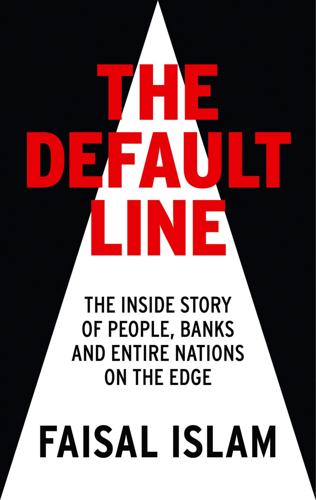
The Default Line: The Inside Story of People, Banks and Entire Nations on the Edge
by
Faisal Islam
Published 28 Aug 2013
Almost all British government departments are suffering from shrunken capital budgets, but ministers are constantly claiming that various foreign sugar daddies, in the form of sovereign wealth funds like the CIC, are queuing up to pay for a whole range of infrastructure projects, from faster broadband and high-speed rail lines to new ports, roads, power lines and nuclear power stations – almost everything. There is some irony that despite Britain’s historically low government borrowing rates, it is effectively the governments of other nations paying for jobs-rich infrastructure. A fiscal stimulus funded by state borrowing.
…
As London Gateway’s vice-chairman, Jamal bin Thaniah, says, ‘In comparison to major developments in the Middle East and China, we noticed that some of the infrastructure in this part of the world, regretfully, is lagging behind in terms of capacity… For this reason there is a business opportunity.’ It’s not just Britain that China is interested in. The Chinese have offered to share and sell their high-speed rail technology to California. Many of the investments China would like to make in energy, aerospace and manufacturing, are off limits in the USA, which fears that its security would be compromised. No such restrictions hold sway in Britain, however. Almost everything is for sale. But the question is, what do the Chinese want in return?
…
For some reason, the city permitted the construction of a new, private airport with a runway long enough to host the world’s biggest aeroplane, the Airbus 380 superjumbo. The attempt to brand it ‘Madrid South’ was a quixotic stretch too far, even for Ryanair, though there was a plan to connect it to a high-speed rail link to the capital. The station was never completed. For a time it was actually called Don Quixote Airport, and was to be accompanied by a theme park celebrating the man and his horse. It closed completely to air traffic within four years of opening, after hopelessly overestimating demand. Astonishingly, there are another three completed airports in Spain that currently do not host (and two of them have never hosted) a plane – in Castellón, Huesca and Corvera.
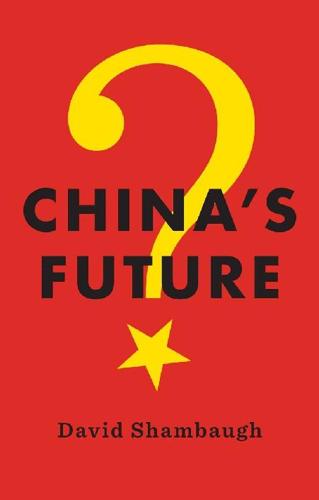
China's Future
by
David Shambaugh
Published 11 Mar 2016
On the Bloomberg Innovation Index ranking of most innovative countries in 2015, China ranked No. 22 overall.47 Nor does China rank in the top ten of the World Economic Forum’s innovation rankings.48 Recognizing this overall shortfall, it is also true that some Chinese companies are becoming very innovative and producing cutting-edge technologies in biotechnology, nanotechnology, consumer electronics and hand-held devices, medical instruments, telecommunications equipment and software, robotics, green energy technologies and energy-saving vehicles. China’s space program, high-speed rail, and deep-sea manned submersibles have all captured international attention. As President Xi Jinping himself has noted, “China has entered the advanced ranks of the world in some important fields. In certain fields, it has become a ‘forerunner’ or ‘parallel runner’ instead of a ‘follower’.”49 Most of these breakthroughs are the result of government prioritization and R&D investment—but a growing share is coming from the corporate sector.
…
The questions are how much, in which fields, and what are the impediments/facilitators of broad-gauged long-term innovation (and can they be overcome)? Here I am more skeptical. So are others.52 The Chinese government seems to believe that all that is needed to spur innovation is to invest in it—like building high-speed rail or other infrastructure. China’s government is indeed putting increasingly large sums into research and development (R&D), now 2.1 percent of GDP. While rising, China’s R&D spending still lags behind when compared with 2.9 percent in the United States, 2.8 percent in Germany, 3.3 percent in Japan, 3.1 percent in Taiwan, and South Korea’s world-leading level of 4.2 percent of GDP.
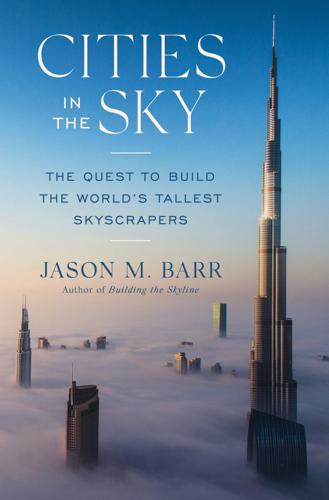
Cities in the Sky: The Quest to Build the World's Tallest Skyscrapers
by
Jason M. Barr
Published 13 May 2024
China Daily, December 27, 2022. https://www.chinadaily.com.cn/a/202212/27/WS63a9b022a31057c47eba63c0.html. Johns, Adam. “Swiss Re Topples Millennium Tower.” The Times, November 7, 1997. Jones, Ben. “Past, Present and Future: The Evolution of China’s Incredible High-Speed Rail Network.” CNN, February 9, 2022. https://www.cnn.com/travel/article/china-high-speed-rail-cmd/index.html. Jones, Christopher, and Daniel M. Kammen. “Spatial Distribution of US Household Carbon Footprints Reveals Suburbanization Undermines Greenhouse Gas Benefits of Urban Population Density.” Environmental Science & Technology 48, no. 2 (2014): 895–902.
…
As one example, the Communist Party is currently producing the infrastructure for a new metropolis outside Beijing, called the Xiong’an New Area, which is expected to hold 2.5 million people to house an SEZ to specialize in high-tech and green industries. To connect its cities into one seamless network, China has undertaken the world’s largest high-speed rail project, which by 2035 is expected to extend 43,500 miles (70,000 km), the equivalent of 1.75 times the circumference of Earth. The country’s rapid urbanization has required a vast building spree as residents flock to cities for jobs. In this sense, skyscrapers are like “nets” catching the residents as they arrive.
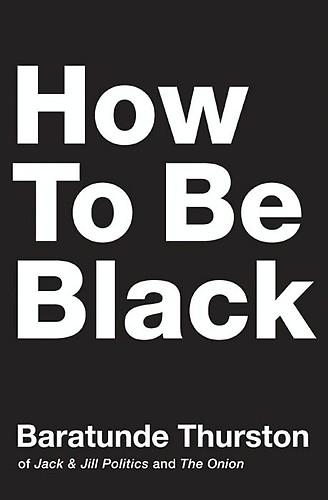
How to Be Black
by
Baratunde Thurston
Published 31 Jan 2012
Declaring martial law and sending troops into white neighborhoods, forcing interracial gay marriages and liberating every single black prisoner would be swift, but would also trigger certain resistance and make our work much more difficult. No, what you need to do is implement policies that could not possibly be connected to your plans for total race war, policies like even more expanded health-care coverage, radical financial markets reform, and infrastructure projects like high-speed rail. Of course, behind the scenes, each of these is part of your larger plan to destroy White America. By expanding health-care coverage further, you expose more white Americans to doctors, doctors who can administer drugs, drugs you can contaminate with powerful mind-control compounds that will allow you to hijack the minds of millions of white Americans without suspicion.
…
This is why you were really elected, and being president is about making and following through on tough decisions. Besides, you’ve already installed the banking hacks. Don’t back down now. Your economic re-stimulus provided the cover you needed to build the camps under the guise of “construction jobs that cannot be outsourced” (nice job playing to nationalistic instincts, btw), and high-speed rail provides a clean, efficient transportation system to move millions of whites in and out of the camps as the labor farms demand. Presidential Power-ups! The plan outlined so far will help significantly in your quest to be the second black president, but there’s always more you can do. Here are two bonus lessons offering radically different paths to the White House.
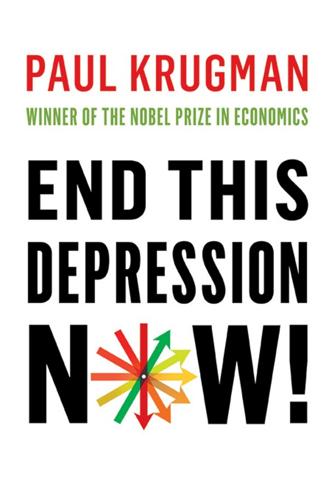
End This Depression Now!
by
Paul Krugman
Published 30 Apr 2012
Yet the ongoing slump, by creating a fiscal crisis for state and local governments, has led to the laying off of some 300,000 schoolteachers. The same fiscal crisis has led state and local governments to postpone or cancel investments in transportation and water infrastructure, like the desperately needed second rail tunnel under the Hudson River, the high-speed rail projects canceled in Wisconsin, Ohio, and Florida, the light-rail projects canceled in a number of cities, and so on. Adjusted for inflation, public investment has fallen sharply since the slump began. Again, this means that if and when the economy finally does recover, we’ll run into bottlenecks and shortages far too soon.
…
It would create well over a million jobs directly and probably something like three million once you take the indirect effects into account. And it could be done quickly, since we’re talking only about restoring cuts rather than about initiating new projects. That said, there should be new projects too. They don’t have to be visionary projects like ultra-high-speed rail; they can be mainly prosaic investments in roads, rail upgrades, water systems, and so on. One effect of the forced austerity at the state and local level has been a sharp drop in spending on infrastructure, representing delayed or canceled projects, deferred maintenance, and the like. It should thus be possible to get a significant burst in spending just by restarting all the things that were postponed or canceled these past few years.
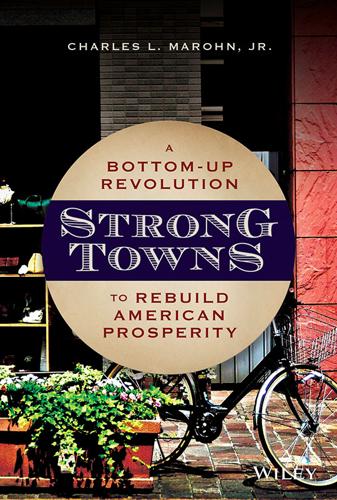
Strong Towns: A Bottom-Up Revolution to Rebuild American Prosperity
by
Charles L. Marohn, Jr.
Published 24 Sep 2019
This is the approach public and private developers for centuries have used to pay for their projects, from Augustus in Rome and Napoleon in Paris to the trading companies given land charters in the New World. It’s largely how Japan has funded its acclaimed high-speed rail system. Buy the land around the station at pre-development prices. Build the high-speed rail, which makes the land far more valuable. Sell the land at the new price and use the profits from the sale to pay for the rail line. This is great public policy, although the lobbyist for the land speculator is not going to be very happy when their anticipated windfall profits end up going instead to the project’s investor and risk-taker: the taxpayer.
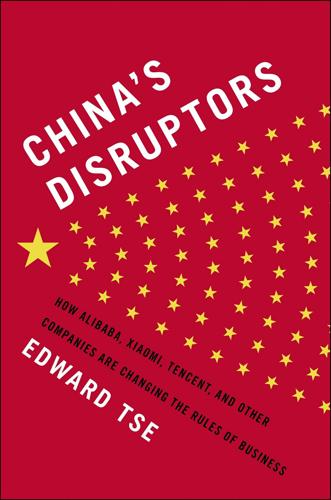
China's Disruptors: How Alibaba, Xiaomi, Tencent, and Other Companies Are Changing the Rules of Business
by
Edward Tse
Published 13 Jul 2015
Rising standards of education, discussed later in this chapter, will help, but so will new ways of organizing workforces, such as the platform-based system that Zhang Ruimin is experimenting with at Haier. Overcoming infrastructure shortcomings. China’s road and rail build-out has been impressive. But with more than 90 percent of the country’s 65,000 miles of expressway and all of its 7,000 miles of high-speed rail having been built in the last 15 years, many lower-tier cities and towns have had little time or opportunity to develop modern retail outlets such as malls. Companies in other industries face similar lists of pressures. To address them, a company must be continually inventive across the entire range of its functions and operations.
…
Again, the suggestions that China’s corporate innovation amounts to nothing beyond playing catch-up is to miss the across-the-board scale of what is happening, and that its impact is principally aimed at enabling China to cope with the immediate challenges it faces, such as reducing its reliance on imported technologies via developing an indigenous semiconductor industry, strengthening its trade links with neighboring countries by extending the reach of its high-speed rail network, and simply improving access to electricity in rural areas by encouraging rooftop solar installations. Also vital to China’s goal of becoming an innovation power is the investment being made to raise the country’s intellectual capacity. The country’s higher education system has steadily improved over the last 20 years, while the numbers passing through it have climbed.

On the Slow Train: Twelve Great British Railway Journeys
by
Michael Williams
Published 1 Apr 2010
On the contrary, a report from the main train operating companies in 2009 urged the reopening of fourteen branch lines that had been closed by Beeching. Meanwhile passenger journeys in Britain are up by half since privatisation, and while the little old steam engines and wizened porters may be gone, many of the lines and stations that survived the cull have prospered as never before. Even though we hear a lot about high speed rail lines expanding all over the world, the pleasures and delights of relaxed rail travel have never been more appreciated. In almost every way, the slow train journey is more pleasurable than a fast one. Think of Edward Thomas’s poem ‘Adlestrop’, in which his express train stopped ‘unwontedly’ one June afternoon at an Oxfordshire country station.
…
No such problem with Oliver Cromwell this morning, newly restored from the wheels upwards in 2008 and in fine fettle – white wisps of steam floating in a blue sky over the North Downs. The train is running at a canter through the lovely villages of Hollingbourne, Harrietsham, Lenham and Charing, their peace disrupted in recent years not by steam trains but by the roar of the M20 and the high speed rail link to the Channel Tunnel, which run parallel. We don’t stop at Ashford, once a famous railway town – the ‘Crewe of the Garden of England’ as it was once known – though we’re passing slowly enough to observe the brand new Javelin bullet trains, whose sleek polished snouts can be seen poking out of the sidings.
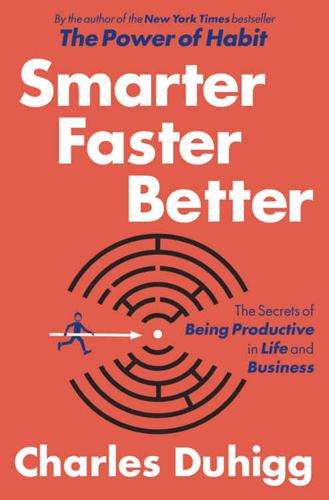
Smarter Faster Better: The Secrets of Being Productive in Life and Business
by
Charles Duhigg
Published 8 Mar 2016
Soon other bullet trains were running to other Japanese cities, helping fuel a dizzying economic expansion. The development of the bullet train, according to a 2014 study, was critical in spurring Japan’s growth well into the 1980s. And within a decade of that innovation, the technologies developed in Japan had given birth to high-speed rail projects in France, Germany, and Australia, and had revolutionized industrial design around the world. For Jack Welch, this story was a revelation. What GE needed, he told Kerr when he got home from Japan, was a similar outlook, an institutional commitment to audacious goals. Going forward, every executive and department, in addition to delivering specific and achievable and timely objectives, would also have to identify a stretch goal—an aim so ambitious that managers couldn’t describe, at least initially, how they would achieve it.
…
invent a faster train The story of Japan’s bullet train as it was told to Jack Welch (and has been repeated in popular nonfiction) differs slightly from the historical record. The account given here reflects the story that was told to Welch, but there are some details that story did not include, such as the fact that the concept for high-speed rail was explored but then abandoned by the Japanese railway prior to World War II. In an email responding to fact-checking questions, a representative of the Central Japan Railway Company wrote that in the 1950s the “Tokaido Line, the main line of Japan, was very crowded and [passengers had] been increasing because of the economical growth after the war, and Japan had to meet the growing needs of passengers to move between Tokyo (capital and largest city) and Osaka (second largest city).
…
The Odakyu Electric Railway, for instance, was developing a train capable of going ninety miles per hour. For a better understanding of the history of the bullet train, I recommend Toshiji Takatsu, “The History and Future of High-Speed Railways in Japan,” Japan Railway and Transport Review 48 (2007): 6–21; Mamoru Taniguchi, “High Speed Rail in Japan: A Review and Evaluation of the Shinkansen Train” (working paper no. UCTC 103, University of California Transportation Center, 1992); Roderick Smith, “The Japanese Shinkansen: Catalyst for the Renaissance of Rail,” The Journal of Transport History 24, no. 2 (2003): 222–37; Moshe Givoni, “Development and Impact of the Modern High-Speed Train: A Review,” Transport Reviews 26, no. 5 (2006): 593–611. 120 miles per hour In an email responding to fact-checking questions, a representative of the Central Japan Railway Company wrote that “in Japan, [a] JNR (Japan National Railway) engineer was considered [the] elite of Japanese engineers at that time, and the engineer who designed Shinkansen (Mr.
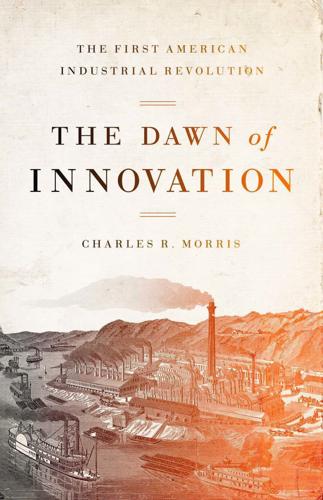
The Dawn of Innovation: The First American Industrial Revolution
by
Charles R. Morris
Published 1 Jan 2012
Four other aviation technology companies will also benefit from the contracts, and for GE, the deal came bundled with the promise of additional deals in coal gasification, energy, locomotives, and a high-speed-rail joint venture that could be worth another $1 billion.6 Imagine the row GE would have kicked up if the deal had been turned down.bu If the past is portent, the likelihood of the joint venture working out well for GE is not high. Siemens and ThyssenKrupp worked closely with a Chinese high-speed-rail consortium supplying maglev technology to its Shanghai bullet trains. China is now proceeding with maglev development elsewhere in the country without the German partners, and it may soon be competing with them for global sales.
…
Some economists defend the very high rate of investment on the grounds of the country’s daunting infrastructure deficits. The relevant question, however, is not the scale of the infrastructure deficit but the practical limits on the number of mammoth projects a government can manage at one time. Evidence of shoddy construction and insufficient safety precautions on the new high-speed rail lines and the Three Gorges hydropower project are not reassuring. A side effect of the investment surge is that it is yet another force repressing consumer spending. Consumption is still rising in real terms, but it has been shrinking as a percentage of GDP. Household consumption was only 34 percent of GDP in 2010, down from 50 percent in 2005, and “by far the lowest rate of any major economy in the world.”
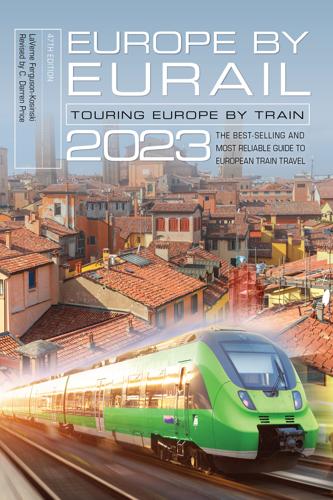
Europe by Eurail 2023
by
Laverne Ferguson-Kosinski
and
C. Darren Price
Published 8 Jan 2023
The basis of Western Europe’s high-speed rail traffic is a flawless rail bed equipped with endless-welded track, which enables the trains to glide smoothly enough to permit dining without fear that the next curve might slosh your coffee. The newer high-speed passenger trains include a whole stable full of various passenger car (carriage) types, including plush compartment interiors, comfortable seats, a children’s play area, and businesslike amenities such as computer hookups and telephones. TGVs (train à grande vitesse, or train of great speed) and Thalys trains are at the very heart of the European high-speed rail network connecting France with Belgium, the Netherlands, Germany, and Switzerland.
…
By virtue of these contrasts, Lyon is becoming one of the great cities of France and of Europe. Arriving by Air Lyon Saint Exupéry International Airport (Tel: [334] 2600 7007; www.lyon.aeroport.fr), 15 miles (25 kilometers) to the east of Lyon. International air service between Lyon and New York is provided by Air France and Delta Airlines. A TGV station provides high-speed rail service from Saint Exupéry to many other French destinations. Airport–City Links: Airport tram (rhônexpress) service to Lyon Part-Dieu station, every 30 minutes, 0500 to 2200. To the airport, 0500 and 0530, then every 15 minutes 0600–2100, and every 30 minutes 2100–0000. Journey time: around 30 minutes; fare, € 15.20 one way; € 26.70 round-trip.
…
Arriving by Air Touted as “Europe’s safest and most efficient airport,” Oslo’s international airport at Gardermoen is a beautiful example of contemporary Norwegian architecture. Located some 47 kilometers north of Oslo, the airport handles about 17 million passengers per year. There are daily direct flights to more than 30 European cities and hourly flights to Copenhagen and Stockholm. Visit www.osl.no. Airport–City Links: High-speed rail connections into Oslo on the Airport Express Train (Flytoget) depart every 20 minutes, and take only 19 minutes. The rail station is located in the air terminal. Follow the pictographs. Long-distance train service provides connections to all parts of Norway and Scandinavia. Tel: 815 00 777. Visit www.flytoget.no.
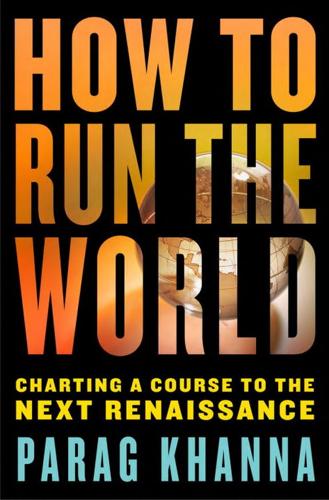
How to Run the World: Charting a Course to the Next Renaissance
by
Parag Khanna
Published 11 Jan 2011
Iran and the United Arab Emirates continue to dispute three tiny Persian Gulf islands, while Saudi Arabia has disputed borders with all its Gulf neighbors. Despite being overwhelmingly larger than all of them, it has nonetheless taken land from them and raised customs duties at the borders, hampering the very useful movement toward a Gulf currency union. It should instead focus on financing the proposed high-speed rail link connecting all the Gulf Arab states from Kuwait through Saudi Arabia all the way to Oman. Even grander plans to restore the fabled Hejaz railway from Istanbul via Damascus to Medina—which also had a branch to Haifa on the Mediterranean Sea—won’t get traction until territorial spats are solved.
…
Shai Agassi’s company Better Place has been designing an electric car infrastructure since well before Obama was elected, while local entrepreneurs and utilities are combining to make a thirty-foot-tall windmill with seven-foot blades the new must-have backyard accessory in as many as fifteen million homes. Initially, however, America’s “green collar” revolution may really be a European and Japanese one. The United States can invest billions of dollars in high-speed rail, but Obama officials had to travel to Spain and Japan to learn how such systems actually work. In fact, America presently runs a “green trade deficit” of $8 billion, importing vastly more clean energy goods than it exports. Toyota’s hybrid Prius has been a bestseller in the United States, prompting its higher-end Lexus line to pitch Americans the “hybrid lifestyle” as it rolls out a fleet of new cars built largely from recycled or recyclable materials from its new green complex in California.
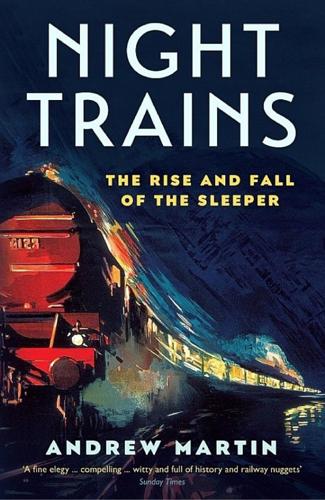
Night Trains: The Rise and Fall of the Sleeper
by
Andrew Martin
Published 9 Feb 2017
But the plan is for some of the German sleepers to be taken over by the Austrian national railway, ÖBB. A German campaigner for Friends of the Earth had told me that while this cutback of sleepers was undoubtedly a bad thing, he was pleased it will not be accompanied by any great expansion of German high-speed rail. In fact, Germany is scaling back on that too. High-speed rail is less environmentally friendly than conventional rail, even if it is not as bad as aeroplanes, but this is not why DB is scaling back on it. The motivation, according to the Friends of the Earth man, is that DB ‘has huge financial problems’. After ablutions in the WC (which was clean, although the sink was so small there was no room to put down my soap bag), I went to bed and to sleep.
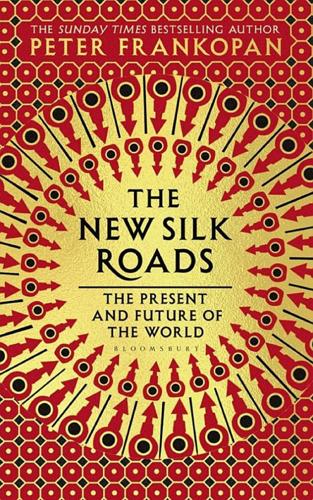
The New Silk Roads: The Present and Future of the World
by
Peter Frankopan
Published 14 Jun 2018
The could not be compared, wrote the authors, with China’s actions elsewhere, however, since the purpose of the latter was that of ‘safeguarding our sovereignty and territorial integrity’.86 The fact that the Japanese military is developing supersonic ‘glide bombs’ to be able to protect remote islands – such as the Senkakus – show how much is at stake in this region.87 * China’s actions in the South and East China Seas are also part of a wider picture that includes efforts to diversify and open up new transit routes. This explains the heavy investment into freight and high-speed rail lines and roads criss-crossing the new Silk Roads – as well as building new entry and exit points that can offer alternative routes for goods and supplies to move to and from the country. The most obvious example is Gwadar on the coast of Pakistan, which could potentially, in due course, become a major entrepôt, a gateway and a new window on the world.
…
If, as seems likely, necessity is the mother of invention, then it may well prove that attempts to strangle technological developments by starving other states of components and knowledge will only serve to accelerate them. Some can see the writing on the wall. There are many industries where China is making rapid advances – like aeronautics, high-speed rail and new energy vehicles, noted US trade representative Robert Lighthizer. These industries should be targeted, he said, for trade tariffs. It didn’t take a genius (or spies) to work out that ‘these are things that if China dominates the world, it’s bad for America’.155 China’s rise needs to countered if the US is to continue to thrive.

Scotland’s Jesus: The Only Officially Non-Racist Comedian
by
Frankie Boyle
Published 23 Oct 2013
Just be sure to remember to go, ‘A Kit Kat, whooooooh, and a bag of Mini-oooooooo-Cheddars . . . eddars . . . eddars . . .’ when the trolley arrives. The completion of the high-speed rail link between London and Birmingham could be delayed until after 2027. Meaning the announcement of delays is well ahead of schedule. We can be damn proud that we’re able to announce delays to projects before they’ve even started. It’s lucky it’s a high-speed link or it would be delayed until 2079. The high-speed rail initiative will reduce journey times to Birmingham at a cost of £32 billion. For that sort of cash I imagine they’re going to achieve this by building a replica London somewhere around Wigan.
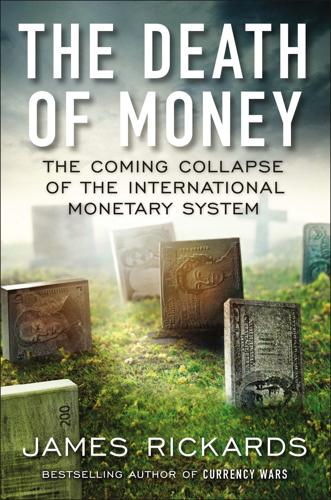
The Death of Money: The Coming Collapse of the International Monetary System
by
James Rickards
Published 7 Apr 2014
Although the Gotthard Base Tunnel lies entirely in Switzerland, it is a critical link in a Europe-wide high-speed rail transportation network. For passengers, the tunnel will cut an hour off the current three-hour-and-forty-minute travel time from Milan to Zurich. For rail freight traffic, the tunnel will increase annual capacity through the Gotthard Pass by 250 percent, from the current 20 million tons to a projected 50 million tons. The Gotthard Base Tunnel will be linked to scores of high-speed rail corridors coordinated by the EU’s Trans-European high-speed rail network, called TEN-R. These and many similar European infrastructure projects compare favorably in terms of long-term payoffs with Chinese ghost cities and the U.S. practice of wasted investments such as solar cell maker Solyndra and electric car maker Fisker, which both filed for bankruptcy.

Elon Musk: Tesla, SpaceX, and the Quest for a Fantastic Future
by
Ashlee Vance
Published 18 May 2015
The first time he talked about it to anyone outside of his inner circle was during one of our interviews. Musk told me that the idea originated out of his hatred for California’s proposed high-speed rail system. “The sixty-billion-dollar bullet train they’re proposing in California would be the slowest bullet train in the world at the highest cost per mile,” Musk said. “They’re going for records in all the wrong ways.” California’s high-speed rail is meant to allow people to go from Los Angeles to San Francisco in about two and a half hours upon its completion in—wait for it—2029. It takes about an hour to fly between the cities today and five hours to drive, placing the train right in the zone of mediocrity, which particularly gnawed at Musk.
…
At the time, it seemed that Musk had dished out the Hyperloop proposal just to make the public and legislators rethink the high-speed train. He didn’t actually intend to build the thing. It was more that he wanted to show people that more creative ideas were out there for things that might actually solve problems and push the state forward. With any luck, the high-speed rail would be canceled. Musk said as much to me during a series of e-mails and phone calls leading up to the announcement. “Down the road, I might fund or advise on a Hyperloop project, but right now I can’t take my eye off the ball at either SpaceX or Tesla,” he wrote. Musk’s tune, however, started to change after he released the paper detailing the Hyperloop.

The Rough Guide to Korea
by
Rough Guides
Published 24 Sep 2018
Onward travel by taxi It’s not all that expensive to travel to or from Seoul by taxi, especially if you’re in a group; figure on W65,000–110,000 depending upon the time of day and your Seoul departure or arrival point, and don’t be afraid to haggle. Black “deluxe” taxis are more expensive, and not worth the extra money. GIMPO AIRPORT Most domestic services run from Gimpo Airport (김포 공항), which sits about halfway from the capital to Incheon Airport. Services have been scaled down since the expansion of the high-speed rail, bar the one to Jeju Island – the world’s busiest air route. Destinations Busan (1–2 hourly; 1hr); Gwangju (2 daily; 50min); Jeju City (every 5–15min; 1hr 5min); Jinju (3 daily; 55min); Yeosu (4 daily; 55min). Onward travel From Gimpo, plenty of bus services head into Seoul (around W7000; ask at information booths for the most appropriate one), while it’s also a stop on the AREX train line to Seoul station (25min), via Hongdae.
…
The best of the older venues downhill from the Seorakdong park entrance; their bibimbap (W8000) comes with a prodigious array of side-dishes, or you can splash out on a set meal centred on grilled bellflower root (더덕 정식; deodeok jeongsik; W28,000 for two). Daily 8am–8pm. Gangneung and around 강릉 The biggest city on the northeastern coast, GANGNEUNG has blossomed since being selected as the de facto host city of the 2018 Winter Olympics. Investment duly poured in, and the city was finally connected to Seoul by high-speed rail in late 2017; though some of the other Olympics-related projects will inevitably join the long, long chain of post-Games white elephants, the general feel of the place has changed – Gangneung now has substantial charm, though much of the nicer areas are on the periphery of the city, whose centre remains a little shoddy.
…
Her selection, interestingly, managed to ruffle feathers with traditionalists and liberals alike – Confucian-thinking men were aghast that a woman should be on the front of Korea’s most valuable note, while feminists were similarly distraught that this role model of “inferior” Confucian-era femininity should be chosen ahead of more progressive women. ARRIVAL AND DEPARTURE GANGNEUNG By train Gangneung is now connected to Seoul by high-speed rail (hourly; 2hr), which has reduced travel times between the two significantly – it used to take triple the time. By bus The express and intercity terminals are joined at the hip in the west of the city. Bus #202-1 will take you to the train station, though this only leaves every half-hour – it’s far easier to take a taxi (W3000).
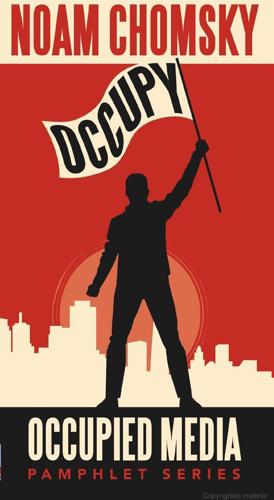
Occupy
by
Noam Chomsky
Published 2 Jan 1994
They had the capacity to do it, the skilled work force. It would have taken a little popular support, but it could have made a major change in the economy. Just to make it more surreal, while this option was being avoided, the Obama administration was sending its transportation secretary to Spain to get contracts for developing high-speed rail for the United States, which could have been done right in the rust belt, which is being closed down. There are no economic reasons why this can’t happen. These are class reasons, and reflect the lack of popular political mobilization. Things like this continue. Climate Change and Nuclear Weapons Let me just say that I’ve kept to domestic issues, and these are by no means the only ones.
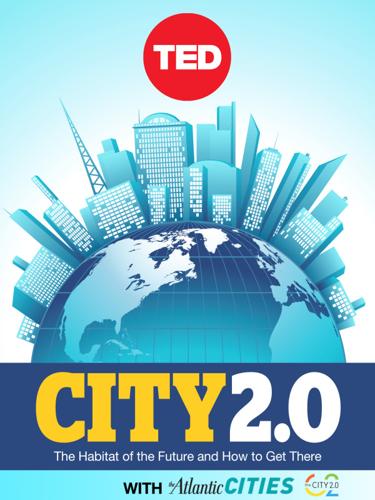
City 2.0: The Habitat of the Future and How to Get There
by
Ted Books
Published 20 Feb 2013
Roman Gaus is the founder and CEO of UrbanFarmers, a pioneering clean-tech company that develops sustainable agriculture systems for urban applications. In his previous life, he was a corporate maverick in the food and health space in Europe and North America. He is married to Martina Gaus and has two young boys who keep him busy. Diana Lind is Next City’s executive director and editor-in-chief. Diana was a 2011 Van Alen Institute High Speed Rail Fellow and is the author of Brooklyn Modern: Architecture, Interiors & Design (Rizzoli, 2008). Her writing has been published in the New York Times, Architectural Record, and other publications, and her work with Next City has been profiled in the Philadelphia Inquirer and Monocle, among other outlets.
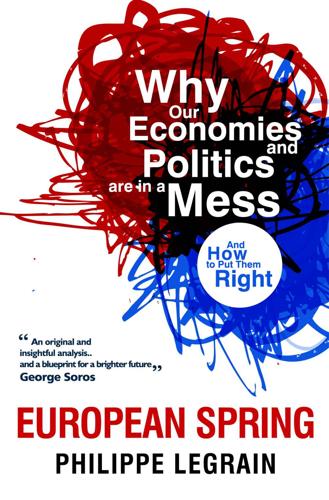
European Spring: Why Our Economies and Politics Are in a Mess - and How to Put Them Right
by
Philippe Legrain
Published 22 Apr 2014
But while it may be desirable for governments to commit to be more prudent in future, that doesn’t imply they ought to curb their borrowing immediately in a recession, thereby aggravating it. A further reason why governments might legitimately wish to borrow is to spread over time the cost of long-term investments, especially those that boost future growth and tax revenues. For example, if a government is planning to build a high-speed rail network that will provide benefits for decades to come, it makes sense to spread the costs over time. So an even smarter rule would enable governments to borrow to invest throughout the economic cycle. The danger, though, is that governments will reclassify all sorts of other spending as investment in order to borrow more – and that their investments will deliver poor returns.
…
Amazon has revolutionised shopping. Big boxy televisions have been junked for cheaper flat-screens with pin-sharp images. Thanks to imports from China and elsewhere, the cost of clothing, toys and much else has plummeted. Supermarkets provide a wider range of better food. Flying around Europe is no longer a luxury. High-speed rail has proliferated; even Britain has one short link. Cars are starting to drive themselves. 3D printing shops are opening on high streets. Fears that we would run short of fossil fuels have proved false: shale oil and gas (and coal) are plentiful. AIDS has become a chronic disease, not a quickly fatal one.
…
Nor would it push up rents, which depend on what tenants are prepared to pay rather than landlords’ expenses.725 Thus, unlike most taxes, it wouldn’t crimp economic activity, as Adam Smith explained in The Wealth of Nations. On the contrary, a land tax would encourage development. Since it would be payable irrespective of how land is used, it would stimulate the regeneration of derelict and unused sites. Infrastructure investment that raises surrounding land values, such as new Tube (metro) lines or a high-speed rail network, would pay for itself and thus escape short-sighted budget cuts. Unlike with property taxes, people who do up their homes would not be penalised. Taxing land values could also curb property bubbles – and the inevitable busts – without discouraging mobility (unlike Britain’s stamp duty and other taxes on property transactions) or business investment (unlike interest-rate rises).
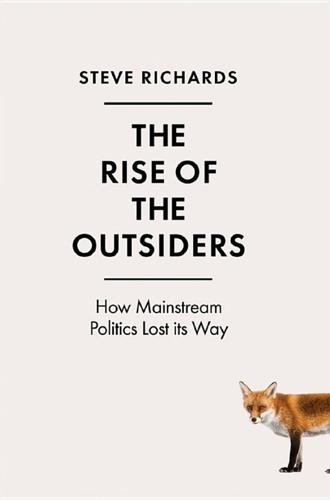
The Rise of the Outsiders: How Mainstream Politics Lost Its Way
by
Steve Richards
Published 14 Jun 2017
Obama navigated a Third Way, first by showing the benefits of capital spending: We will put more Americans to work repairing crumbling roads and bridges. We will make sure this is fully paid for, attract private investment, and pick projects based on what’s best for the economy, not politicians. Within 25 years, our goal is to give 80 percent of Americans access to high-speed rail, which could allow you to go places in half the time it takes to travel by car. For some trips, it will be faster than flying. As we speak, routes in California and the Midwest are already underway. Within the next five years, we will make it possible for business to deploy the next generation of high-speed wireless coverage to 98 percent of all Americans.
…
They were sometimes subtler than the Republicans in their capacity to surprise. In 2015 Osborne announced with a flourish the introduction of a national Living Wage, a proposal that the Labour Party did not fully espouse, out of fear of appearing too left-wing. Osborne also became belatedly a cheerleader for some major spending projects, such as the introduction of high-speed rail to the UK’s outdated transport system. But such ambitious acts could not, and did not, obscure the relentless message: the deficit must be wiped out speedily, even if such drastic action were to take the engine out of the plane, to deploy Obama’s simile. Osborne was constantly trapped by his ambition to cut the size of the state, and by his hope to be a reforming chancellor on the centre ground.

Ground Control: Fear and Happiness in the Twenty First Century City
by
Anna Minton
Published 24 Jun 2009
The story began with the privatization of British Rail and the building of the Channel Tunnel Rail Link in the mid 1990s, which saw huge tracts of land passed to private companies. Since then, developers have been trying, and failing, to get a deal together to develop what had been publicly owned land. In 1996, London and Continental Railways, a company created when British Rail was privatized, won the government contract to build the high-speed rail link between London and the Channel Tunnel and took over large amounts of land around the proposed new stations at Ebbsfleet, Ashford, Kings Cross and Stratford. At Stratford, Chelsfield, a property company run by Nigel Hugill, which already had plans for an enormous shopping mall in London’s Shepherds Bush, signed the deal to develop another huge shopping complex there, along with property company Stanhope, run by Sir Stuart Lipton, who went on to chair the government agency the Commission for Architecture and the Built Environment.
…
These places are not inspired by the culture of where they are but by the idea that the economy will prosper if they meet the economic needs of the region. A place like Paddington Waterside is not rooted in the real, noisy characteristics of where it is, but in the convenience of its location for multinational companies, with the new high-speed rail link running from Paddington Station to Heathrow in just fifteen minutes. In fact as far as the transient professionals living and working there are concerned, it is likely that the developers think it is a positive advantage that they have created a place which bears no relationship to its immediate, more diverse surroundings.
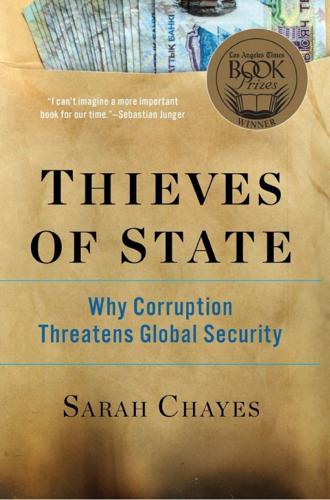
Thieves of State: Why Corruption Threatens Global Security
by
Sarah Chayes
Published 19 Jan 2015
“Then there’s the new harbor development, paid for with European funds. They cemented over our old port with it. And half the money was stolen.” The fishmonger’s complaint highlights the role that international loans and subsidies often play, in Tunisia as elsewhere, in actively feeding kleptocracy. Moroccans complain about an unnecessary high-speed rail line linking their capital to the commercial hub, Casablanca. Their criticisms, like that of the fishmonger, illustrate that it is not just humanitarian aid in crisis or postconflict environments that gets captured as a “rent” by kleptocratic networks. Infrastructure grants—or worse, loans—supposedly provided after unhurried deliberation, serve the same purpose in acutely corrupt countries.
…
Forensic and 360 audits should be conducted on loans and assistance packages, together with rigorous due diligence on recipient governments and organizations, and the true necessity of projects to the population. Too many infrastructure loans provided by the IMF or other multilateral institutions, to pay for such white elephants as the port in Kelibia, Tunisia, or the Rabat-to-Casablanca high-speed rail line, have in fact served as cash cows for kleptocratic elites. Suffering populations, meanwhile, have had to foot the bill. Too often, multilateral organizations furnish technical or capacity-building assistance, seeing such support as apolitical. But, in the context of a captured state, economic or even capacity-building support is always political.
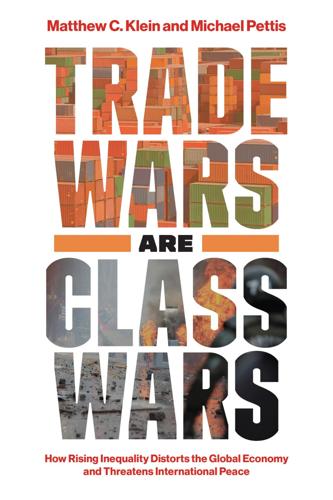
Trade Wars Are Class Wars: How Rising Inequality Distorts the Global Economy and Threatens International Peace
by
Matthew C. Klein
Published 18 May 2020
Over that same period, their collective current account balance went from a deficit of less than 2 percent of GDP to a deficit of more than 7 percent.47 Rarely, if ever, has any society been able to borrow so much in such a short time and use the money productively. While the debt binge funded some worthwhile projects, such as Spain’s high-speed rail network and Greece’s improvements to the Athenian subway system, much of the debt was wasted on boondoggles such as Spain’s aptly named Don Quijote Airport, which opened in 2009 and had been built to accommodate ten million passengers per year despite being more than two hours from Madrid—or any other desirable Spanish destination.
…
Ideally, each country would cut taxes and boost spending as appropriate to its own domestic needs. Germany, for example, could shift from a budget surplus worth 2 percent of GDP to a 4 percent deficit by lowering its high taxes, by improving income security for its workers, and by finally making necessary investments in roads, bridges, high-speed rail, broadband, and green energy. The Netherlands, meanwhile, could help its struggling households get out from their massive housing debt burdens by lowering income and value-added taxes and by loosening its onerous bankruptcy laws.6 Those policies would be good for people in Germany and the Netherlands, but they would not be nearly enough to affect Europe’s overall balance, which has shifted so much since 2012 because of changes in the crisis countries.
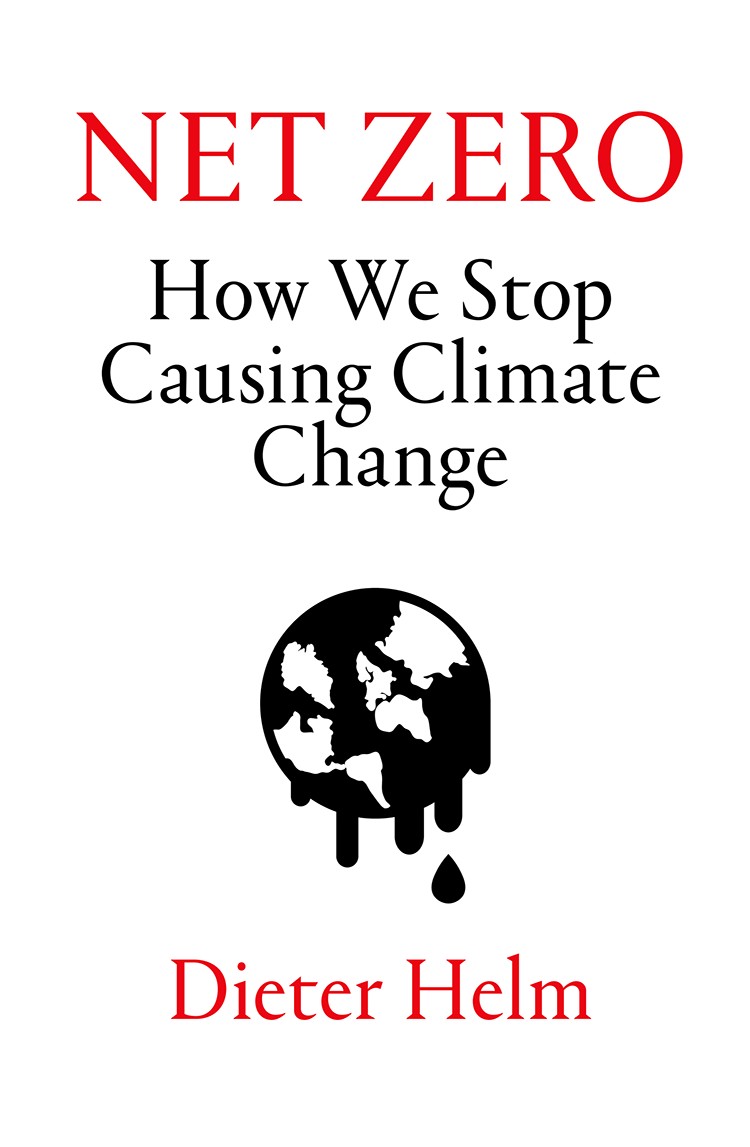
Net Zero: How We Stop Causing Climate Change
by
Dieter Helm
Published 2 Sep 2020
LIST OF ABBREVIATIONS AI, artificial intelligence BSE, bovine spongiform encephalopathy CAP, Common Agricultural Policy CBA, cost–benefit analysis CCC, Committee on Climate Change CCS, carbon capture and storage CEGB, Central Electricity Generating Board CfD, Contract for Difference COP, Conference of the Parties CRISPR, clustered regularly interspaced short palindromic repeats DECC, Department of Energy and Climate Change Defra, Department for Environment, Food and Rural Affairs DDT, Dichlorodiphenyltrichloroethane DETR, Department of the Environment, Transport and the Regions DNO, distribution network operator EFP, equivalent firm power EMR, Electricity Market Reform EU ETS, EU Emissions Trading System GDP, gross domestic product GMO, genetically modified organism GW, gigawatt HS2, a planned high-speed rail project for England ICT, information and communications technology IEA, International Energy Agency IEM, Internal Energy Market IP, intellectual property IPCC, Intergovernmental Panel on Climate Change LED, light-emitting diode LNG, liquefied natural gas mbd, million barrels per day MPC, Monetary Policy Committee NDC, nationally determined contribution NFU, National Farmers’ Union OPEC, Organization of the Petroleum Exporting Countries ppm, parts per million PV, photovoltaics R&D, research and development RAB, regulated asset base SUV, sport utility vehicle TWh, terawatt-hour UNFCCC, United Nations Framework Convention on Climate Change USO, universal service obligation VAT, value-added tax WTO, World Trade Organization INTRODUCTION It is not going well.
…
Then there is the rebalancing of the North against the South, although quite how making it even quicker to get to London is going to reverse the trend of recent decades has never been explained. Each review of HS2 tries to come up with more novel justifications. The best rationale for HS2 is that it would be part of a high-speed system connecting Edinburgh and Glasgow via Manchester and London to Paris, Frankfurt and Milan. In this European high-speed rail system, the benefits from HS2 would accrue across Europe. This system could then cut into the European regional airline market, and passengers would be able to go by train rather than plane to a host of destinations in Europe. It could deliver very important carbon benefits as part of the strategy to reduce aviation and its pollution.[6] Except that HS2 is not now going to be connected to the European system.
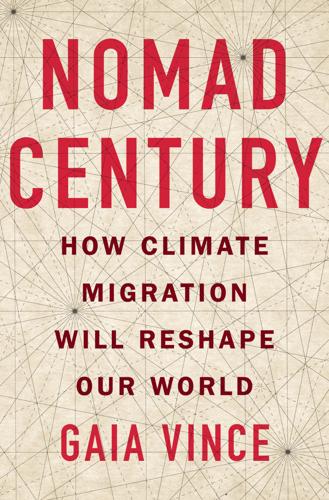
Nomad Century: How Climate Migration Will Reshape Our World
by
Gaia Vince
Published 22 Aug 2022
They are the financial foundation of our country’s welfare programmes, so we need to make sure that, in return, they have the same rights and livelihoods as other Spaniards.’ Infrastructure improvements and transport links ensured Parla’s network could grow and its economy could function efficiently, with tramlines that run through the city and a high-speed rail connection to Madrid that takes just twenty minutes, opening Parla’s economy to the greater city. The government has built large residential developments of mid-sized apartment buildings that provide ground-floor space for small businesses and pathways for home ownership. The mixed-use planning means the streets are busy, and the housing is of high enough density that there is good flow of customers to the businesses.
…
For Australia and other reliably sun-drenched nations, this energy-supply economy using a small labour force will be a good option after mass emigration.5 * * * Most transportation of people and goods will need to be carried out on the ground rather than by air, because of the limitations of battery weight. Our northern cities will be linked by high-speed rail and shipping routes,6 powered by electricity or, possibly, nuclear. Sail power is due a revival, particularly with smart AI-controlled sensors and adjusters that can ensure optimum wind capture, enabling sails to augment – and in some cases replace – other forms of power on ocean vessels. As we move fully into the urban age, today’s polluting cars cannot all be replaced with their electric equivalents – even if we could stand the gridlocked traffic of millions of private vehicles, the energy costs of the material resources involved are too great.

The New Harvest: Agricultural Innovation in Africa
by
Calestous Juma
Published 27 May 2017
Increased flexibility and experience with international markets, as well as decentralized management, also benefited Alstom. Finally, Alstom’s technology became the international standard, leading to enormous competitive advantages for that company. To facilitate the transfer, development, and construction of the high-speed railway system, the South Korean government created the Korean High-Speed Rail Construction Authority (KHRC), whose mandate was to construct such systems at home and abroad, to research and find ways to improve the technology, and to oversee commercialization along the railway line. Issues with the project were soon revealed; after two tragedies—the collapse of the Songsu Bridge and of a large store in Seoul—Korean officials began to doubt its civil engineering capabilities.
…
See also education: clusters and, 106, 114; economicagricultural linkages and, 20, 146, 152; entrepreneurship and, 208–9; future and, 253; gender and, 148; infrastructure and, 118; innovation and, xvii, 114, 146–47, 234 Index hunger: data on Africa’s levels of, 14; economicagricultural linkages and, 12, 14–15, 132; Einstein on, xv; food processing as means of addressing, 217; free trade as a means of addressing, 247; Green Revolution and, 68; policy challenges presented by, xv–xvi, 27; Strategy for Africa 2024 (STISA-2024) and, 224 Hyundai Rotem, 140 iCow (mobile technology platform), 203–4 ICRISAT (International Crops Research Institute for the SemiArid Tropics), 161, 164 IGAD (Intergovernmental Authority for Development), 133 IITA (International Institute of Tropical Agriculture), 88–90, 199 Illumina, 81 Imperial Bakeries, 201 Improved Management of Agriculture Water in Eastern and Southern Africa (organization), 133 incomes: biotechnology and, 68, 79; economic-agricultural linkages and, xx, 1, 12, 14–15, 17, 23; education and, 147, 151, 224; entrepreneurship and, 132, 189–90, 192, 207, 214, 216–17; growth in Africa’s overall, 22, 26; infrastructure and, 118, 120, 129 independent power projects (IPPs), 125–27 India: brinjal production in, 71–72; cotton production in, 65, 69–70; diaspora population from, 311 240; drought-resistant crops in, 74; e-Choupal system in, 133–34; entrepreneurship in, 191–94, 210; geographic information systems (GIS) programs and, 52; Green Revolution in, 13, 192; immigration policy in, 244; infrastructure in, 129, 131, 134–35, 143–44; innovation and, 233, 240; irrigation in, 130–31; National Innovation Council in, 210, 230; National Knowledge Commission in, 240; rice production in, 75; state seed corporations in, 192–94; sugarcane cultivation in, 130; technology and, 134–35, 242; transgenic crops in, 65, 69–72, 74–75; Vayalagam system of, 108–9 Indian Seed Act (1966), 192 Indonesia, 74 infrastructure: climate change and, 257; clusters and, 95, 105, 107, 114; definition of, xxii, 117; economic-agricultural linkages and, 17, 19–20, 79, 118; education and, 118–19, 145, 147, 158, 167, 177, 179, 182; energy and, 6, 42, 118, 123–28, 134, 141, 143–45; entrepreneurship and, 11, 190, 197, 207–8, 217; future and, 253, 255, 257–63; innovation and, xx–xxii, 111–12, 117–20, 129–45, 220–22, 224, 228–31, 234, 237, 241, 246–47, 251; investments and, xvii, 10, 19–20, 27, 30, 32–33, 41–42, 111–12, 118–20, 123, 128–29, 132–45, 261; rural deficiencies regarding, 29–30; “social infrastructure” and, 49; social service delivery and, 121; technology and, 134–41; value chains and, 26 312 Index Ingredion, 7 innovation and innovation systems: African diasporas and, 239–42; biotechnology and, xviii, 23, 41, 63–70, 190, 239, 242–43, 251; clusters and, xxi, 94–116; for cocoa, 4–5, 92–94; definition of, xxi; economic-agricultural linkages and, xxi, 37, 45, 49, 83–84; education and, xxii, 10, 20, 87, 91, 94–95, 151, 160–61, 163, 165–69, 173–80, 182, 224, 229, 231, 234, 236–38, 241, 258; entrepreneurship and, xxii–xxiii, 4, 10–11, 37, 99, 101–2, 185–86, 198–202, 204, 206, 223–24, 243, 259–62; “farm firms” and, 86; food security and, 132, 221, 224, 251; fostering culture of, xvi–xix, xxi, xxiii; future and, 265–66; governance of, xvii, xix, 84, 90, 96, 101, 219, 221, 224, 231, 237, 243; infrastructure and, xx–xxii, 111–12, 117–20, 129–45, 220–22, 224, 228–31, 234, 237, 241, 246–47, 251; intellectual property rights and, 246; investment and, 4, 7–8, 23, 26, 30, 85, 93–94, 119, 221, 228, 232, 235–40; knowledge and, xviii, xx–xxi, 20, 28, 43, 84–86, 90–91, 94, 96, 102, 144, 219, 225–26, 234–35, 238, 240–41, 243–44, 246, 255–58, 260–63, 265; latecomer advantages and, 40–45, 48–49; leadership and, xvi, xix, 8–10, 38, 218, 220, 222, 226–27, 232–33, 237, 240–41, 245, 251; mechanization of agriculture and, 25; prizes for, 231–32, 238–39; regulation and, 248–50; research and, 26–27, 41, 44–46, 55, 83–90, 92–93, 102–4, 110–13, 219, 224–25, 227, 229, 232, 234–37, 239–40, 243, 252; sustainability and, 83; technology and, xvii–xxi, 6, 19, 26, 33, 37, 39–40, 43–47, 52, 55–57, 74–75, 84, 86, 89–90, 98–99, 101, 219–20, 222–33, 228, 235–36, 238–39, 242–46, 248–51, 254–59, 264 insecticides, 53, 55, 65, 67–72, 74, 77, 108 insect-resistant (IR) agricultural crops, 65–67, 69–70, 72, 75 Intergovernmental Authority for Development (IGAD), 133 International Centre for the Improvement of Maize and Wheat (CIMMYT), 58, 75 International Civil Aviation Organization, 122 International Crops Research Institute for the Semi- Arid Tropics (ICRISAT), 161, 164 International Institute of Tropical Agriculture (IITA), 88–90, 199 International Monetary Fund (IMF), 9 International Rice Research Institute (IRRI), 58, 75 International Telephone and Telegraph Corporation, 59 International Water Management Institute, 133 Internet: business and, 50; education and, 179, 261; entrepreneurship and, 186; innovation and, 59, 96, 179; open access movement and, 59; penetration by and access to, 50–51, 134, 186, 203, 261; research and, 50, 179 investments: clusters and, 107; community development funds and, 32; developed world’s declining levels of, 80; Index economic-agricultural linkages and, 8, 15, 18–19, 30; education and, 162, 179; in energy, 43; entrepreneurship and, 191, 194; foreign direct (FDI), 30–31, 187; future and, 261; government initiatives to attract, 28–31, 34; infrastructure and, xvii, 10, 19–20, 27, 30, 32–33, 41–42, 111–12, 118–20, 123, 128–29, 132–45, 261; innovation and, 4, 7–8, 23, 26, 30, 85, 93–94, 119, 221, 228, 232, 235–40; land tenure rules and, 31; in research, 44–45, 85; returns on, 93; technology and, 54, 85, 111, 113 IPPs (independent power projects), 125–27 Ireland, 9, 89 irrigation: Africa’s levels in international context, 15, 19–21, 131; Africa’s potential and, xvi, 20; colonial rule in India and, 109; economic-agricultural linkages and, 10, 14, 16, 100; entrepreneurship and, 191; infrastructure and, 10, 27, 30, 42, 119, 128–35, 141–43, 145; innovations in, 68, 102, 128–32, 163, 167; investments in, 131, 261; yields improved by, 45 Israel, 181, 208 Italy, 102 ITC (Indian company), 134–35 Japan, 66, 244 John Innes Centre (UK), 73 Jomo Kenyatta University of Agriculture and Technology (JKUAT), 57–58 Jonathan, Goodluck, 2, 6–7, 10, 199 Junior Farmer’s Field School (South Africa), 159 313 Kamano Seeds, 194 Kampala (Uganda), 121 Kenya: aquaculture in, 24; banana crops in, 71; breadfruit trees in, 213; CAADP and, 28; cassava crops in, 79; climate change and, 36; coffee production in, 174; COMESA research laboratory in, 210; droughtresistant crops in, 65–66, 74; education in, 175, 194, 238; Electricity Regulatory Board in, 127; entrepreneurship in, 194, 196–97; export-led agricultural innovation in, 120; fertilizer use in, 16; fruit exports from, 197; gender inequality in, 149; independent power projects (IPPs) in, 126–27; infrastructure of, 120–21; innovation and, 120; land tenure system in, 31; maize crops in, 75; Ministry of Industrialization in, 57; mobile phones in, 49, 203; national academy of science and technology in, 230; One Acre Fund in, 205–6; Power Africa initiative in, 127; risk insurance in, 37; school gardens in, 157; smallholders in, 184–85, 194; tax-supported research institutes in, 236; technology and, 49, 136, 203, 238; Water Efficient Maize for Africa (WEMA) program and, 75; weather stations in, 136 Kenya Multimedia University, 238 Kigali (Rwanda), 121 Kikwete, Jakaya, 2 King’s College Hospital (London), 241 Kisumu (Kenya), 121 314 Index knowledge: clusters and, 96, 100, 105–8, 114–16; economicagricultural linkages and, 37, 39, 42; education and, 147, 156, 165, 169, 171, 173–74, 176, 179, 258; entrepreneurship and, xvii, 183, 185–86, 201, 203, 215, 260–61; future and, 262–63, 265; Green Revolution and, xx, 39; human capacity and, 40; indigenous forms of, 39, 107–9; infrastructure and, 117, 128, 138, 257; innovation and, xviii, xx–xxi, 20, 28, 43, 84–86, 90–91, 94, 96, 102, 144, 219, 225–26, 234–35, 238, 240–41, 243–44, 246, 255–58, 260–63, 265; prospecting and, 185–86; rate of growth of, 40, 44; sustainability and, xxii, 43, 83, 117; technology and, 40–41, 43–44, 46–47, 50, 54, 59, 257, 262 Korea, South, 45, 67, 136–41, 244 Korean High-Speed Rail Construction Authority (KHRC), 139–40 Korean Train Express (KTX), 136–40 Korea Railroad Research Institute (KRRI), 141 Kotler, Steven, 40 Lake Victoria region, 136 La Molina (national agricultural university of Peru), 180–82 land policy and land records, 31–32 Latin America. See also specific countries: Green Revolution in, xx, 39; investment in, 114; irrigation in, 15, 131; land productivity in, 21 leaders and leadership: economicagricultural linkages and, 1–2, 8, 10, 18, 37; education and, 151, 153, 168, 171, 175, 177–79; entrepreneurship and, xvi, 38, 214–15, 219–20; future and, xv, xx, 265–66; innovation and, xvi, xix, 8–10, 38, 218, 220, 222, 226–27, 232–33, 237, 240–41, 245, 251; institutions as focus of, 38; in local communities in, 108; pledges by, 27, 29; regional economic communities (RECs) and, 218; sustainability and, 260–61; technology and, 51, 59 learning.
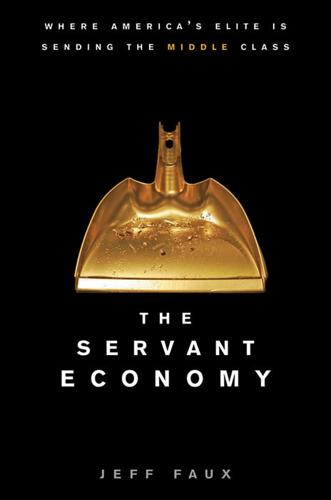
Servant Economy: Where America's Elite Is Sending the Middle Class
by
Jeff Faux
Published 16 May 2012
By his second year, he had already committed himself to cutting the domestic discretionary part of the budget, which contains the spending for the human and physical investments he had argued were essential to restore American competitiveness. The president urged Congress to spend six billion dollars for high-speed rail, but the Republicans in the House would have none of it. Meanwhile, the Chinese government had already committed a hundred billion dollars to their high-speed rail system. The stimulus had provided an initial billion dollars in energy grants to local communities. When it was revealed that 84 percent of the money was going to German and Chinese manufacturers of wind turbines, the administration placated the public outrage by getting agreements to do more of the work in the United States.
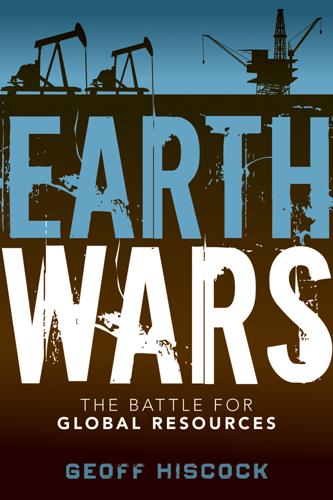
Earth Wars: The Battle for Global Resources
by
Geoff Hiscock
Published 23 Apr 2012
As a consequence of its rapid growth over the past two decades, China now consumes more energy, sells more cars, and produces more steel than the United States. It uses more iron ore, copper, lead, zinc, aluminium, chromium, tungsten, titanium, and rare earths than any other nation. By 2020, its high-speed rail network—even with the setbacks of its mid-2011 crash—will have likely grown to 16,000 km (10,000 miles), whisking passengers and high-value cargo at 320 km/h (200 mph) between every major Chinese city. Building this mammoth network and the rolling stock to run on it involves a huge amount of raw materials, including steel.
…
In his 2010 report on how China will develop over the next 20 years, Garnaut wrote: People in China and abroad who focus on conventional measures of national output will find that China catches up with the world’s most productive economies in output per person—and with the United States in total output—much more quickly than they had been expecting from extrapolation of differentials in national growth rates.12 Setbacks are inevitable; China’s expensive and hugely ambitious program to create a 16,000 km high-speed rail network by 2020 was put on hold after a train ran into the back of another near the city of Wenzhou in July 2011, leaving 40 people dead and posing questions about safety procedures, construction standards, corruption, and the integration of technology from different suppliers. Even so, China already has by far the world’s largest network of 300 km/h rail services.
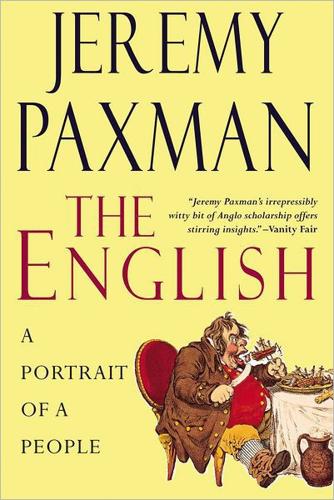
The English
by
Jeremy Paxman
Published 29 Jan 2013
Having decided to embark on their grand projet, the French government simply willed it to happen. A high-speed railway line was built from Paris to the coast, on which, from the moment the tunnel opened, trains hurtled at up to 186 miles per hour. On emerging into the Kent countryside, the trains cut their speed by nearly half. The English had not got around to building their high-speed rail line. Excuses were given by the authorities about the greater density of population in Kent, the fact that it was in the most prosperous corner of England, as opposed to the relatively deprived north of France. But the real reason was the different relationship between the individual and the state.
…
The English not only won’t raise the taxes to make it happen, but hold planning inquiries at which every objection from Dunroamin can be weighed. The different priorities – the centrally decreed needs of the state and the individual worries of the citizen – speak volumes. The English expect their high-speed rail line from the tunnel to be finished by 2007. Perhaps it will be. Belonging to a naturally melancholic people, some of the English found the state of the cross-channel rail link embarrassing. How was it that even something as simple as a collaborative railway line could end up giving the French an opportunity to crow about the superiority of their engineering?
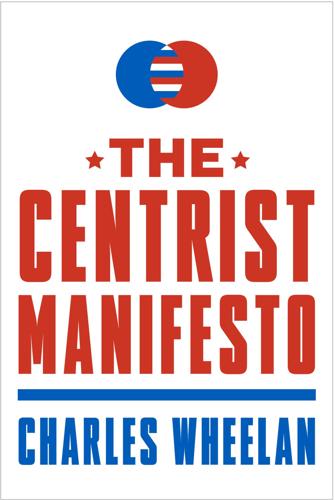
The Centrist Manifesto
by
Charles Wheelan
Published 18 Apr 2013
The American Society of Civil Engineers has estimated that the United States needs to spend two trillion dollars just to fix the roads, bridges, and rail lines we have—let alone expand things that will be necessary to support the world’s most vibrant economy over the next century, such as airport capacity and high-speed rail.4 As the British news magazine The Economist noted recently in a report on America’s transport infrastructure, “America, despite its wealth and strength, often seems to be falling apart.”5 We have done nothing to address climate change, other than cling to the delusional hope that it is not happening.

Belgium - Culture Smart!: The Essential Guide to Customs & Culture
by
Bernadett Varga
Published 14 Aug 2022
The Euro-Commuter Large investments in high-speed transportation mean that Brussels is now linked to Paris, Amsterdam, and Cologne by Thalys trains. These fast trains also serve intermediate cities in Belgium, France, the Netherlands, and Germany; with the addition of the Eurostar link with London, Brussels has become the hub for European high-speed rail travel. Every Friday night, thousands of employees stream to London, Paris, Amsterdam, and other cities to go home for the weekend. The number of Euro-commuters is expected to grow to take up job opportunities in Brussels. BUSES, METRO, AND STREETCARS As we’ve seen, there are limitations on car use in the cities.

Florence Like a Local
by
Dk Eyewitness
///raced.mammal.oath, for example, is the code for the bronze replica of Michelangelo’s David at the Piazzale Michelangelo viewpoint. Simply download the free what3words app, type a what3words address into the search bar, and you’ll know exactly where to go. TRENITALIA Your transport service Let’s face it: you’re more likely to use public transport to move around outside of the city than within it. High-speed rail services are provided from Florence to cities outside the region by Trenitalia, and the official app lets you reserve allocated seating and book tickets months in advance. g Contents Florence NEIGHBOURHOODS Florence is a patchwork of small neighbourhoods, each with its own character and community.

Augmented: Life in the Smart Lane
by
Brett King
Published 5 May 2016
Maglev is short for “magnetic levitation” and is a technology that allows a train (or object) to be suspended above a rail with no other support than the use of magnetic fields. In this instance, the Japanese maglev train is suspended about 10 cm from the electrically charged magnets that are effectively the “track” or rail. Such a design produces a much quieter, smoother and faster ride than conventional high-speed rail. Three years earlier in July 2012, at a PandoDaily event in Santa Monica, California, Elon Musk mentioned to an assembled group that he was thinking about a “fifth mode of transport”, calling it the Hyperloop. On 12th August 2013, Tesla and SpaceX (both companies founded by Musk) released preliminary designs for a Hyperloop Transportation system on their blog sites.
…
In January 2015, Musk announced that he was building a privately funded Hyperloop test track in Texas, about 5 miles (8 km) in length, for university and private teams to test and refine transport “pod” designs. Two additional start-ups, Hyperloop Technologies and Hyperloop Transportation Technologies, are both building their own two-mile and five-mile test tracks, respectively. The Hyperloop is a form of vactrain, or near-vacuum train. The biggest challenge traditionally in creating high-speed rail that is able to compete with air transportation systems has been the ability to circumvent friction and air resistance as speeds climb. Magnetic levitation transportation systems such as the Japanese train mentioned above use a number of very large magnets to propel the train. In fact, the JR-Maglev trains have superconducting magnetic coils.
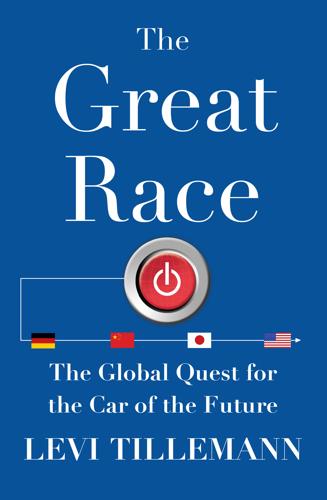
The Great Race: The Global Quest for the Car of the Future
by
Levi Tillemann
Published 20 Jan 2015
Huang and Ouyang each believed that China had the technological capabilities and social incentives to build a very different kind of transportation system—call it, electrification with Chinese characteristics. Ouyang referred to his concept as the “point-line system.” Major Chinese cities represented the points, and they were connected by “lines” of high-speed rail networks—electric rail networks. In a decade, China had built 7,500 miles of high-speed rail—the largest network in the world, and more than half of the world’s total. Within Chinese cities (the “points”), commuters could travel by electric bicycle, electric bus, low-speed electric vehicle, or even hybrid and plug-in electric cars. In the context of this network, low-speed, low-tech electric vehicles could service the demand for transportation from local commuters.
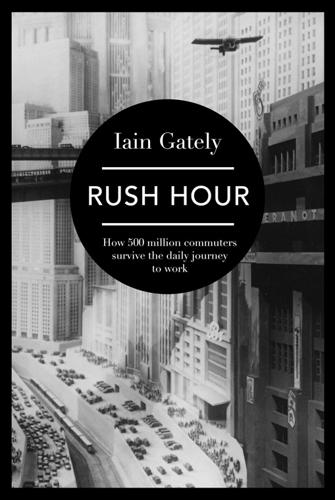
Rush Hour: How 500 Million Commuters Survive the Daily Journey to Work
by
Iain Gately
Published 6 Nov 2014
And since safety would be de rigueur at such high velocities – passengers would need to strap in, and trains follow split-second moving block schedules – commuters could be sure that the services would be punctual, and that they would always get a seat. Precisely this kind of meta-solution has been proposed in California, where building work on a high-speed commuter train service between Los Angeles and San Francisco looks set to commence after years of wrangling. The California High Speed Rail (CHSR) is budgeted at US$68 billion and projected to be in operation by 2029. The journey time between its headline destinations will be about three hours. Its locomotives and carriages will be painted in the California state colours of blue and gold. The project, however, has had a spoke thrown in its wheels in the form of a counterproposal by Elon Musk, a forty-two-year-old South African-born entrepreneur, who co-founded PayPal and is now CEO of both Tesla Motors and SpaceX.
…
Index a Achen Motor Company 315 Acton 43, 46 Acts of Parliament 17 Acworth, Sir William Mitchell 73 aeroplanes 307 America cars 90–101 commuting 224–5 railways 66–80 American Automobile Association (AAA) 198, 209–10 American Bicycle Co. 91 American Motors 120 American School Bus Council (ASBC) 236 Andrade, Claudio 279, 280 Apple 295–6 Australia 232 autobahn 103, 109, 151, 166 b Bagehot, Walter 59 Balfour, A.J. 65 Barter, David Obsessive Compulsive Cycling Disorder 168 Bazalgette, Joseph 60 Beeching, Dr Richard cuts 137, 146, 158, 313, 328 Beerbohm, Max 58 Beijing 160, 161 Metro 160, 162 Benz, Karl 90 Bern, Switzerland 86, 87 Besant, Sir Walter 57 Best Friend of Charleston crash 69 Betjeman, John 109, 135, 272–3 bicycle Boris bikes 167 Brompton 167 commuting in Britain 101, 138–9, 166–8, 216–17 commuting in Europe 166, 222 Flying Pigeon 161–2 penny farthing 101 Raleigh 139 Rover 101–2 Birmingham HS2 329 number 8 bus 141 Birt, William 61 Bishop’s Waltham 313, 327 Blake, William Marriage of Heaven and Hell 104 Booth, Henry 27 Boris bikes 167 Boston 69, 97 Boston and Worcester Line 72 Botley station, Hampshire 1, 2, 3–5, 7, 313, 334 Bowser, Sylvanus Freelove 95 Brazil 279 British Telecom 291–3 Bromley 23, 46 Brompton bike 167 Brunel, Isambard Kingdom 331 Buchanan, Professor Sir Colin Traffic in Towns 145–6 buses 48, 140–41, 235–6, 275–6 c California High Speed Rail (CHSR) 330, 331 Callan Automobile Law 95 carriages (railway) 29–30, 54, 55 in America 71–3 in France 83–4 WCs 33, 72, 226–7 women-only 188–9 ‘workmen’s trains’ 33–4, 60, 61, 83 cars 89–92, 195 commuting in America 101, 113, 116–17 in Britain 107, 142–4, 249–52 in communist countries 151–2 in Italy 149–50 congestion 192–5 congestion charge 312 driverless 316–17, 320–27 ownership 97–8, 100, 103, 125 radio 119, 255–8 SUVs 204–8 Central Railroad of Long Island 76 C5 (electric tricycle) 309–11 Chaplin, William James 15 Cheap Trains Act 61 Chesterton, G.K. 57, 105, 109 Chicago Automobile Club 96–7, 256 Great Fire of 1871 79 Oak Park suburb 79–80 Park Forest suburb 113–15 China 160–62, 314–15 Chrysler 119, 160 Churchill, Winston 308–9 City and South London Railway 54–5, 62 Clean Air Act 286–7 Cobbett, William 334 Collins, Wilkie Basil 52 commuting (car) see cars commuting (cycling) see cycling commuting (rail) comic representation of 137 commuter etiquette 72–3, 82, 249 extreme commuting 233–4 in America 66–80 in France 81–7 in Germany 80, 86–7 in Japan 177–84 in the 1950s 136 in Victorian times 33–9, 42 food in England 36–7, 247 in France 84–5 origin of the term 67 overcrowding 171–83 coronations 140 County Durham 14 Coventry 102 Crawshay, William 35 Croton Falls 66 Croydon 56 Cultural Revolution (China) 161 Cunarders 140 cycling commuting in Britain 101, 138–9, 166–8, 216–17 commuting in Europe 166, 222 Cyclists’ Touring Club 102–3 d Dagenham 107 Dahl, Roald 129, 135–6 Daimler, Gottlieb 90 Dalai Lama 210 Darwin, Charles 13, 32 Daudet, Alphonse 83–4 Daumier, Honoré The Third-Class Carriage 83 The New Paris 86 Landscapists at Work 86 Defense Advance Research Projects Agency (DARPA) 317, 318 Delhi 211–13 Deng Xiaoping 161, 162 Denmark 222, 288 Detroit 110, 121, 123–4 ‘Detroit by the Volga’ 153 Dickens, Charles 12, 25, 50 food 36–7, 84–5, 247 Mugby Junction 84–5 Great Expectations 12 Our Mutual Friend 50 train travel in America 70, 71, 74 Diggins, John 3 Docklands Light Railway (DLR) 279 Downing, Andrew Jackson 66 driverless cars 316–17, 320–27 driving schools 215–16 driving tests New York State 94–5 UK 216 Duluth, Minnesota 79–80 e Ealing, London 38, 40, 42, 46, 56 Eden, Emily 58 Edinburgh 13, 14, 16, 329 Edmondson, Brad 314 Einstein, Albert 87 Eliot, William G.
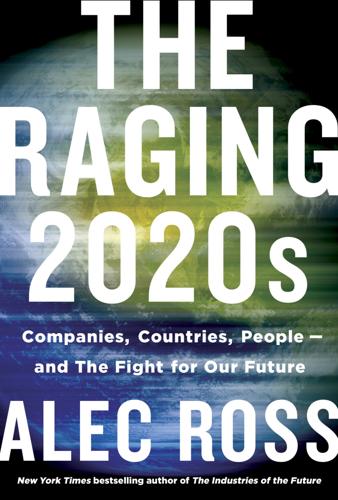
The Raging 2020s: Companies, Countries, People - and the Fight for Our Future
by
Alec Ross
Published 13 Sep 2021
In 2020, the number of companies: Alan Murray and David Meyer, “The Fortune Global 500 Is Now More Chinese Than American,” Fortune, August 10, 2020, https://fortune.com/2020/08/10/fortune-global-500-china-rise-ceo-daily/. Between 2007 and 2017, the government: Ross Davies, “High-Speed Rail: Should the World Be Following China’s Example?,”RailwayTechnology, September 24, 2019, https://www.railway-technology.com/features/high-speed-rail-in-china/. In 2017, President Xi Jinping unveiled: Paul Mozur, “Beijing Wants A.I. to Be Made in China by 2030,” New York Times, July 20, 2017, https://www.nytimes.com/2017/07/20/business/china-artificial-intelligence.html; Notice of the State Council Issuing the New Generation of Artificial Intelligence Development Plan, State Council Document No. 35 (China, July 8, 2017; trans.
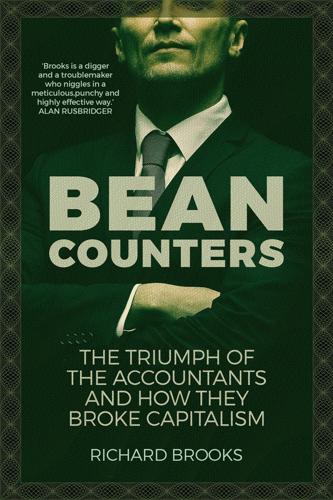
Bean Counters: The Triumph of the Accountants and How They Broke Capitalism
by
Richard Brooks
Published 23 Apr 2018
One of the most critical problems facing Britain today is how to reinvigorate a largely post-industrial north. It’s a huge challenge, requiring well-crafted but not individually transformational investments in industry, education, technology and local transport networks. But in Westminster politics, this isn’t sexy enough. So at least £50bn is instead to be invested in a single high-speed rail link between London and Birmingham and from there on to Manchester and Leeds. To justify ‘HS2’, in the face of loud public and parliamentary opposition, in 2013 the government took the now standard step of commissioning an ‘independent’ report from one of the Big Four accountancy firms. Unsurprisingly, KPMG concluded that the new link would generate major economic benefits, to the tune of £15bn a year.
…
Stuart Westgate joined High Speed Two (HS2) Ltd from KPMG in February 2015; government announcment at https://www.gov.uk/government/news/stuart-westgate-joins-hs2-delivery-team. 39. Sue Kershaw was appointed November 2016. Her LinkedIn profile says: ‘Responsible to the DfT Secretary of State for assuring HS2, the UK’s new north–south high-speed rail line, is delivered to time and budget and of the quality the end user will expect, and most importantly that value is evidenced for expenditure of the public purse. This role is effectively the eyes and ears of government within the project. I lead a diverse team of talented, “best in class” specialists that provides insight and assurance across all aspects of the project, and works in genuine collaboration with the project’s teams, the Department and Network Rail.’
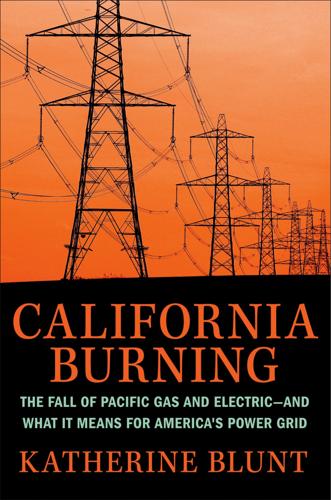
California Burning: The Fall of Pacific Gas and Electric--And What It Means for America's Power Grid
by
Katherine Blunt
Published 29 Aug 2022
* * * Dan Richard, PG&E’s former head of government relations, watched the fallout with sadness. He had left PG&E in 2006, shortly after helping it through the energy crisis, amid frustration with Peter Darbee and the transformation process. But he had continued to monitor it from the sidelines while working on a new project: developing a high-speed rail connecting San Francisco and Los Angeles. The idea germinated in the 1990s and kicked off in 2008, when voters approved a legislative measure to fund construction. Governor Jerry Brown had appointed Richard to the board and tasked him with finding political and financial support for the project, which had become costly and controversial.
…
Already, PG&E’s rates were among the highest in the country, and the company would have to keep raising them in order to address the growing risks it faced. For that reason, they wrote, the company should reorient itself to solely benefit its customers rather than the shareholders who stood to make millions on every capital investment it made. Richard had been talking for months with Sam Liccardo, the mayor of San Jose. They had met through high-speed rail circles and had an immediate rapport. Liccardo had been fed up with PG&E for months. Even before the blackouts, Liccardo had been deeply skeptical of its ability to execute such a strategy. The October disaster, which left some sixty thousand San Jose residents in the dark, shattered what little faith he had left in the company.

Among the Braves: Hope, Struggle, and Exile in the Battle for Hong Kong and the Future of Global Democracy
by
Shibani Mahtani
and
Timothy McLaughlin
Published 7 Nov 2023
Lam also abolished the Central Policy Unit, an internal government think tank that had become mired in allegations of opacity and cronyism and was closely associated with Leung.24 In its place she started a policy-coordination group filled with overachieving young recruits who were tasked with finding fresh ideas to tackle the city’s issues. Lam’s biggest achievement came in the autumn of 2018, when the West Kowloon rail terminal opened, connecting Hong Kong to the mainland by high-speed rail. Inside the ribbed, clamshell-shaped station was an unprecedented arrangement. A thick line made from black and yellow tiles demarcated two different areas within the premises: the “mainland port” and the “Hong Kong port.” The entire station was, of course, within Hong Kong territory. Within this arbitrarily defined “mainland port,” though, passengers were subject to Chinese laws, enforced by Chinese authorities.
…
They had been tapped before by the WHO to investigate the origins of the 2003 crisis, exacerbated by the Chinese government’s opacity in response to the first cases. The WHO asked them again to be on standby. Alarm spread among the group. China’s looming spring festival, the largest human migration on the planet, would begin in a week. Wuhan was a major transportation hub and was just four hours by high-speed rail from Hong Kong. Thousands traveled between the two cities every day. All cases of this new virus in Wuhan seemed to trace back to a single seafood market, and its symptoms—fever, shortness of breath—sounded much like the SARS virus. The Hong Kong government was also perturbed by the news coming from its counterparts on the mainland.

The Price of Time: The Real Story of Interest
by
Edward Chancellor
Published 15 Aug 2022
Yet at the time nearly a third of Chinese families owned one or more vacant properties.55 Such was the nation’s devotion to property that the divorce rate spiked after Beijing imposed restrictions on families owning more than a single property.56 UNCOORDINATED INVESTMENT Beijing’s stimulus plan launched thousands of ‘shovel-ready’ projects for new airports, bridges, highways, subways, and so forth. The most ambitious scheme involved the rapid expansion of the high-speed rail network, reportedly the world’s most expensive public works project since the US interstate highways were built in the 1950s.57 The person in charge of this mega-project was Railway Minister Liu Zhijun, whose Maoist exhortation that ‘To achieve a great leap, an entire generation must be sacrificed’ earned him the sobriquet ‘Great Leap Liu’.
…
By this date, Liu was under investigation for ‘severe violations of discipline’. The Minister had received kickbacks on construction contracts, operated a slush fund to bribe newspaper editors and maintained no fewer than eighteen mistresses. (In July 2013 a court sentenced the former rail chief to death, commuted to life imprisonment.) The legacy of the high-speed rail expansion was a massive waste of resources, mountains of debt, an economy addicted to construction spending, and public corruption on an epic scale. Writ large, this is the story of China’s recent economic development. When the cost of borrowing is low enough, even the most absurd investments can appear viable.
…
W., 72 Charles II, King of England, 33, 38 Chase National Bank, 87, 88 Chaumont, the Widow, 54–5 Child, Sir Josiah, xxii, 33–4, 35, 36–7, 37*, 38–40, 41, 43, 44, 202 China: authoritarian relapse in recent years, 288–9; back-alley banking, 281–3; capital controls in, 262, 266, 285; capital flight from, 285–6; and ‘commodity super-cycle (from 2010), 173–4, 255–6; corporate zombies in, 277, 281, 285, 289; corruption in, 270, 274, 275, 287–8, 287*; currency devaluation (2015), 227; debt-deflation in, 280–81; Deng’s reform era, 265, 266, 267; and digital currencies concept, 294; economic stimulus plan (2008/9), 270, 271–81, 282, 289, 292; export driven expansion, 132, 182, 267–70; and financial repression, 264–5, 265*, 266–81, 268*, 283, 286–9, 292; foreign capital inflows, 254–5, 256, 265–6, 267, 270, 270*; garlic bulb bubble, 173, 271, 282; ‘great divergence’ from West, 288; growing inequality in, 287–8, 287†; high occurrence of elevator accidents, 274, 274*; high-speed rail expansion, 275; housing boom during Covid pandemic, 310; increased share of world trade, 260; ‘iron rice bowl’ removed, 268; joins WTO (2001), 267; as leading producer of greenhouse gases, 277–8; long tradition of impressive investments, 276; ‘national team’ of state enterprises, 272, 272*; and new technologies, 177, 276, 283, 284; paper money invented in, 265; ‘Red Capitalism’, 280, 284, 292; savings/current account surpluses, 129, 268–9, 270; ‘shadow banks’ in, 266, 270, 282*, 283–5, 286; SHIBOR lending rate, 284; and taper tantrum (June 2013), 256, 284; treatment of Uighurs, 288; Trump’s trade wars with, 262; uncoordinated investment in, 266, 269, 270, 272–4, 275–9, 280–81; undervalued exchange rate, 267–8, 270, 271; unscrupulous vested interests, 270, 286–9; unstable bubbles in, 270, 271–4, 282, 288; unsustainable debt in, 270, 279–81, 282–5, 289; US loss of manufacturing jobs to, 261, 261*; vast investment boom in, xxiii, 128, 267–81, 280*, 282–9; wealth management product (WMP), 283–4; Wenzhou’s credit crunch (2011), 282–3 Chu, Charlene, 280 Citigroup, 232† Clapham, Sir John, 79 Clarida, Richard, 310 classical economists, 12, 14, 27–8, 31, 41, 85*, 130–31, 132–3, 183 see also Smith, Adam Clifford & Sons, 63 climate change, 255, 277–8 cloth trade, 14–15, 22, 23 Cobham, Thomas of, 19–20, 26 Coffin, Charles, 156 Cole, Christopher, 229*, 231 collateralized debt obligations (CDOs), 116, 227 collateralized loan obligations (CLOs), 227 Commerzbank, Germany, 245 compound interest, xvii, 8–9, 190, 200, 202 Conard, Joseph, 141* Connally, John, 251, 262 Consols (British bonds), 62–3, 65, 65†, 70, 77, 79, 80, 126 Conti, Louis Armand II, Prince of, 55 Coolidge, Calvin, 87, 92–3 corporate sector: benefits of low interest rates for, xxii; the financialized firm, 166–7; ‘good will’ on balance sheets, 169, 180; profits bubble in post-crisis USA, 183, 185, 211; ‘shareholder value’ philosophy, 163–6, 167, 170–71 corruption, 63, 258, 274, 275, 287*, 288; in China, 270, 274, 275, 287–8, 287*; Galbraith coins ‘bezzle’ term, 287 Coughlin, Father Charles, 242 Coupe, Mike, 160 ‘coveitise’, practice of, 24 Covid-19 pandemic, xxii, 224*, 304, 305–7, 309–10 Cowen, Tyler, 198 Coxey’s Army, 201 credit: in ancient Near East, 3, 5–10, 11, 15; and Borio’s financial cycle, 132, 134, 135; causes of booms, 42, 43, 44, 118, 176–7, 220; central bank dominion over markets, xxii, 292–3, 293*; collapse in quality in post-crisis decade, 222–4, 231, 233, 237–8; decline in quality during booms, 112, 116, 135–6; Defoe on, 28; emergence of modern credit cycle, 62–4; expansion in 1920s USA, 87–91, 92–4, 96–8, 112, 203; growth before 2008 crisis, 112–13, 114, 115, 116; Law’s credit theory, 47, 60; in medieval Italy, 22–3, 35; poor quality in expanding China, 266; as pre-dating barter, 3, 14; psychological elements, 64; rationing under Bretton Woods system, 291; strong growth of as red flag, 132, 135; unequal access to, xxii, xxv, 14, 15, 215; vast investment boom in China, xxiii, 128, 267–81, 280*, 282–9; Wenzhou’s credit crunch (2011), 282–3 Credit Suisse, 229 Creditanstalt, collapse of (1931), 93, 93*, 243, 261 Cruz, Gaspar da, 276 cryptocurrencies, 173, 177–9, 307–8, 312 Culpeper, Sir Thomas, the Younger, 34–5, 44 Culpeper, Sir Thomas, ‘Tract Against Usury’ (1621), 34, 35 Cyprus, 262 Dalio, Ray, 217, 229, 291 Datini, Francesco, 21–3, 24 Dawes Loan (1924), 91 Deaton, Angus, 213 debt: after 2008 crisis, 138–9, 237, 237†; ancient debt tablets, 5–6; ‘balance sheet recessions’, 191; cancellation/jubilees/clean slates, 9, 300; dangers of cheap credit, 32, 44; debt bondage, 5, 9, 18; ‘debt supercycle’, 135; ‘debt trap’, 43, 135, 280; debt-deflation, 98–9, 100, 119, 280–81; debt–service ratio, 135; ‘evergreening’ of bad debts, 136, 145–6, 280; late payment penalties, 10, 14, 25; Lord King on (2019), 304; as missing link in secular stagnation narrative, 135–6, 138–9; mortgage equity withdrawal, 112–13, 191, 205; problem of compound interest, 8–9; Proudhon on, xvii, xviii; revival of subprime market, 215, 221, 224; student debt ‘bubble’, 212, 213; tax structures favour over equity, 164; transferable/heritable in Babylon, 7 deflation: after 1929 Crash, 98–9, 100, 101, 105, 108; Austrian economists’ view of, 100, 101, 105, 113, 133–4; crisis of 2008 revives fears of, 119, 122; debt-deflation, 98–9, 100, 119, 280–81; in early-1920s Britain, 85–6; and Fed’s post-2008 policies, 236–8; ‘forgotten depression’ (1921), 84, 86, 100, 143; and high rates of interest, 42, 43, 64; impact of zombies, 237, 237†; impact on working people, 99–100; in Japan from 1990s, 100–101, 107–8, 114, 119, 135, 136, 145–6, 147, 148, 182, 191, 193; in late nineteenth century, 78–80, 99, 101; in post-Great War period, 84, 85–6; as preoccupation of modern central bankers, xxiii, xxv, 76, 112, 115, 115†, 122; Say’s view of, 99; and Victorian era, 76; view of as good/not harmful, 99–101, 113–14, 132; and Wicksell’s view of interest, 42 Defoe, Daniel, 28, 46, 47, 56, 57, 202, 308 Del Monte Foods, 222 democracy, 293, 293†, 296, 297; the old as largest voting cohort, 211–12; rise of populism, xxii, 299; weakening support for, 299 demographics: ageing societies, 29, 127; ‘Bank of Mum and Dad’, 212; generational impact of 2008 crisis, 211–12, 213; Alvin Hansen on, 126; and interest, xxiv, 10, 12, 126–7, 131, 133; largest voting cohort as old, 211–12; life expectancy statistics, 198, 213; and secular stagnation argument, 125, 126, 129; student debt ‘bubble’, 212, 213; and ‘time preference’ theory, 29 Demosthenes, 18† Deng Xiaoping, 265, 266, 267 Denmark, 242, 244, 245, 247 Deutsche Bank, 147* Dodd, David, 90–91 Dodd–Frank Act (2010), 232 Dogecoin, 308 Dollar Standard, 118, 251–2, 253, 261, 262–3, 267 Dostoyevsky, Fyodor, 294 Dotcom bubble, 111–12, 136–7, 176, 204, 206 double-entry bookkeeping, 21–2 Douglas, C.
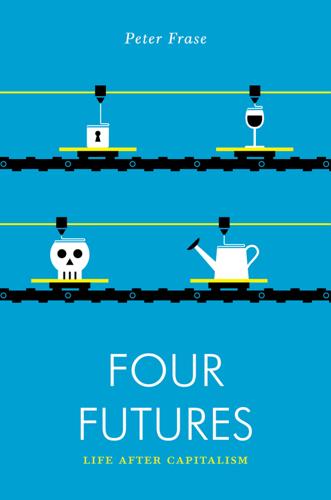
Four Futures: Life After Capitalism
by
Peter Frase
Published 10 Mar 2015
The space outside the cities should be imagined not as an untouched wilderness, but more like Latour’s description of the manmade nature of France’s national parks: “a rural ecosystem complete with post offices, well-tended roads, highly subsidized cows, and handsome villages.”15 All connected to the cities, presumably, by clean high-speed rail. The list of reconstruction needs goes on: adapting coastal areas to increased flooding, for example, a process that is already underway as Dutch engineers bring their centuries-long expertise to increasingly flood-prone locales like New York. So how to marshal this labor, if we are positing a world beyond the wage?
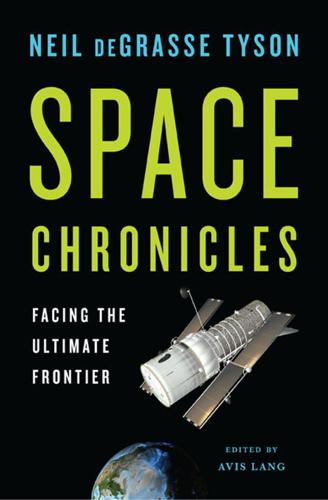
Space Chronicles: Facing the Ultimate Frontier
by
Neil Degrasse Tyson
and
Avis Lang
Published 27 Feb 2012
He then challenged us by 2015 to (1) have a million electric vehicles on the road and (2) deploy the next generation of high-speed wireless to 98 percent of all Americans—and by 2035 to (1) derive 80 percent of America’s electricity from clean energy and (2) give 80 percent of Americans access to high-speed rail. Laudable goals, all of them. But to think of that list as the future fruits of a contemporary Sputnik moment dispirits the space enthusiast. It reveals a change of vision over the decades, from dreams of tomorrow to dreams of technologies that should already have been with us. Following the February 1, 2003, loss of the Columbia space shuttle orbiter and its crew of seven, the public and press, as well as key lawmakers, called for a new NASA vision—one with its sights set beyond low Earth orbit.
…
With an advanced launch vehicle—one that leapfrogs previous rocket technologies but would take many years to develop—we could bypass the Moon altogether and head straight for Mars by the mid-2030s, right about when Obama expects 80 percent of Americans to abandon cars and planes, and instead travel to and fro via high-speed rail. I was there. I felt the energy of the room. More important, I resonated with Obama’s enthusiasm for NASA and its role in shaping the American zeitgeist. As for coverage of the speech, a typical headline in the Obama-supportive press was “Obama Sets Sights on Mars.” The Obama-resenting press, however, declared: “Obama Kills Space Program.”
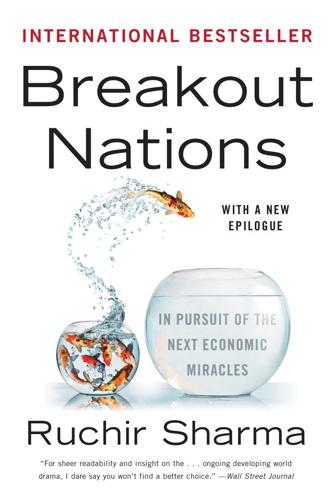
Breakout Nations: In Pursuit of the Next Economic Miracles
by
Ruchir Sharma
Published 8 Apr 2012
Petersburg, Peter the Great’s canal-laced showcase in the north, the second cities of Russia are gray and grim, still Soviet in look and morality. They say money talks and wealth whispers, but in Moscow wealth dances on the bar. Traveling inside Russia is like traveling through time: Moscow and St. Petersburg are connected by an ultramodern high-speed rail system imported from Germany, but the average age of trains in the rest of the Russian railway fleet is twenty years, which means that nearly half of the rail cars date to the Soviet era. Traveling the 440 miles from Moscow to St. Petersburg takes less than four hours; traveling roughly the same distance from Moscow to Kazan, referred to as the “third capital” of Russia, is a thirteen-hour overnight journey.
…
When China wants to build a new road it simply seizes the land from farmers, often without adequate compensation. For all its strength the Vietnamese regime has no effective power of eminent domain. Instead of grabbing the land it needs, it ends up buying it at inflated prices, often from corrupt local figures. Some of the best current examples of this phenomenon are the planned highway and high-speed rail connections from Hanoi to Ho Chi Minh City, both priced at $50 billion, an extraordinary sum in a $100 billion economy. Moreover what does get built is often so badly conceived that operating costs are much higher in Vietnam than in China. It’s difficult to connect to international shipping routes from Vietnam because most of its fifty-four ports were built for river routes.

Cities Are Good for You: The Genius of the Metropolis
by
Leo Hollis
Published 31 Mar 2013
Thus while business interests might back a particular scheme – such as a new airport, more roads, or an industrial park – it can then often be attacked by protesters or local residents. In the UK, the campaigning fervour of Nimby activists has been brought to bear in protest against most developments in recent years. However, the proposal of adding high-speed rail to the transport infrastructure is one of the hotly contested debates of the moment. The new train link, HS2, will connect England’s second city to the capital, cutting travel times to forty minutes. This will have a big impact on both cities: in the next twenty years London’s population is expected to grow by 1.3 million; there will also be an estimated 730,000 new jobs in the capital, mainly in the service sectors.
…
Since 1999, Shanghai has grown at the astonishing rate of 20 million square metres every year, and part of this has included a spread outwards as the city sprawled in all directions. One of these schemes, launched in 2006, was to build a whole new city and nine new towns on Shanghai’s outskirts, with a combined population of 5.4 million. These new settlements are to be connected to the centre through a high-speed rail link. In addition, a further sixty new towns with a population of 50,000 each are to be planned and built within the next decade. Thames Town from the air, a fantasy of Britishness As they formulated the One City, Nine Towns project, the planners wanted to confirm Shanghai’s new status as a global city within the designs themselves.
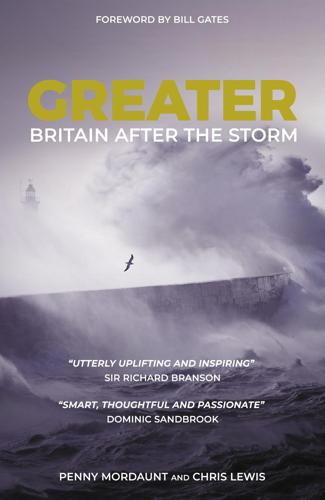
Greater: Britain After the Storm
by
Penny Mordaunt
and
Chris Lewis
Published 19 May 2021
This will be matched with another two proposed Panamax-sized canals, the first in Nicaragua – the Grand Nicaragua Canal – and the second across the Kra Peninsula in Thailand – the Thai Canal.48 China is also moving closer to Malaysia in its BRI projects and has invested $14 billion (US$10 billion) in the Melaka Gateway project, a port that could replace Singapore as the main entry point in the region.49 In Latin America, the BRI takes the form of an ocean railway from Brazil to Chile and the Trans-Amazonian Highway across Brazil.50 The Arctic aspect of the BRI is a maritime route that runs from Dalian in eastern China through the Arctic Circle to Rotterdam and then south through the Suez Canal back to China.51 The widening of the Suez Canal to accommodate two-way traffic and Panamax-size tankers is one of the biggest projects of all within the BRI.52 All this investment will add at least a further $5 trillion to global investment.53 When you add this to the $18 trillion already invested by global central banks,54 you can see that this is significant in terms of both scale and risk. The BRI is ambitious, even inside China. According to the English-language newspaper China Daily, ‘Twenty-nine of China’s thirty-one provinces and regions are now served by high-speed rail, with only the regions of Tibet and Ningxia in the northwest yet to be connected.’55 China has built out the BRI anticipating the supremacy of trade in physical goods. In reality, though, as we noted earlier, the value of data and ideas seems to be eclipsing this as the prevailing form of infrastructure across the globe.56 As James Sproule has pointed out, sea lanes are changing to e-lanes.57 Can China continue to succeed with its current attitude towards human and intellectual property rights?
…
sh=6cb8f63266ee 50 https://www.coha.org/the-twin-ocean-project-south-americas-transcontinental-railroad/ 51 https://www.reuters.com/article/us-china-arctic/china-unveils-vision-for-polar-silk-road-across-arctic-idUSKBN1FF0J8 52 https://www.eia.gov/todayinenergy/detail.php?id=18011 53 https://www.csis.org/analysis/how-big-chinas-belt-and-road 54 https://www.bloomberg.com/markets/fixed-income 55 https://www.reuters.com/article/us-china-railway-yunnan/china-completes-high-speed-rail-links-from-southwest-yunnan-idUSKBN14I07I?il=0 56 http://oecdobserver.org/news/fullstory.php/aid/5565/The_ascendancy_of_digital_trade:_A_new_world_order_.html 57 https://www.cps.org.uk/media/press-releases/q/date/2020/07/27/the-uk-must-be-the-champion-of-global-entrepreneurship-/ 58 https://www.japantimes.co.jp/news/2009/01/06/reference/lessons-from-when-the-bubble-burst/ 59 https://www.piie.com/commentary/testimonies/some-background-qa-japanese-economic-stagnation 60 https://www.forbes.com/sites/yuwahedrickwong/2019/04/10/japans-richest-2019-pm-abes-aim-is-true/#355e961c77a6 61 https://qz.com/452076/this-just-in-german-capitalism-has-won/ 62 https://www.thelocal.de/20170130/germany-overtakes-china-as-worlds-richest-exporter 63 https://www.foreignaffairs.com/articles/germany/2017-09-11/germany-after-hartz-reforms 64 https://tradingeconomics.com/spain/youth-unemployment-rate 65 https://www.forbes.com/2009/11/03/capitalism-save-us-opinions-forbes_land.html#34045425258c 66 https://www.amazon.com/How-Capitalism-Will-Save-Us/dp/0307463095?
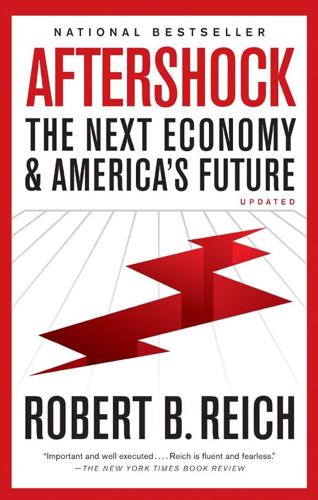
Aftershock: The Next Economy and America's Future
by
Robert B. Reich
Published 21 Sep 2010
Public goods typically do not use up lots of scarce resources or cause as much environmental damage as their private equivalents, and they generate jobs and add to overall demand in the economy. Making them free maximizes these societal benefits. For instance, an expanded system of free public transportation, including high-speed rail, would dramatically reduce traffic congestion—estimated to cost Americans more than $85 billion a year in wasted hours and gas—and cut carbon emissions. The benefits are easily worth the cost. Money out of politics. Finally, and not least, we are all painfully aware of the failures of our democracy.

Because We Say So
by
Noam Chomsky
Were it not for strong U.S. pressures, these natural relations would probably improve substantially. China, which has observer status at the Non-Aligned Movement, is doing much the same. China is expanding development projects westward, including initiatives to reconstitute the old Silk Road from China to Europe. A high-speed rail line connects China to Kazakhstan and beyond. The line will presumably reach Turkmenistan, with its rich energy resources, and will probably link with Iran and extend to Turkey and Europe. China has also taken over the major Gwadar port in Pakistan, enabling it to obtain oil from the Middle East while avoiding the Hormuz and Malacca straits, which are clogged with traffic and U.S.
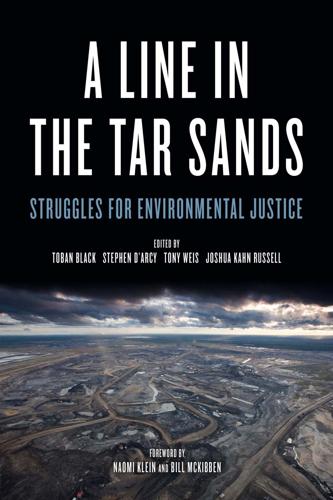
A Line in the Tar Sands: Struggles for Environmental Justice
by
Tony Weis
and
Joshua Kahn Russell
Published 14 Oct 2014
In Quebec and elsewhere, the movement needs to confront the right-wing narrative on these issues by arguing the facts: investment in a green industrial transition will bring far more jobs—secure, ecological, and socially useful jobs—relative to investment in the infrastructure needed to develop the tar sands.13 Pipelines will create only a few jobs and huge private-sector profits, while burdening the public with long-term environmental damage. The movement must demand loudly that the same workers who shouldn’t be building pipelines or staffing refineries should instead receive good, high-paying jobs, albeit jobs that simultaneously address climate change: retrofitting homes and buildings, erecting high-speed rail and public transit, and building infrastructure to protect against the storms ahead.14 Whatever the limitations of existing campaigns, the pipeline struggles have had an electrifying impact on organizing across Canada. As pipelines have become the most visible—and vulnerable—instruments disfiguring the country’s environment, economy, and democracy, they have spawned an unprecedented development: wherever they have been proposed, their path traces the outlines of a new resistance.
…
Trumka recognized that this would not happen simply through current market forces: “By themselves, capital markets will not properly incorporate climate risk and reward into pricing investment opportunities.” Investors need “government policies to make sure that critical investments get made— investments in building retrofits, in high speed rail and the smart grid, in carbon capture and sequestration.”17 Clean, renewable energy and energy conservation are cheaper than extreme fossil fuels and nuclear power. They are available right now. Many studies have shown that dollar for dollar, they produce far more jobs. If labour is to use its political clout to secure more jobs, the best way to do so is to fight for a new energy economy that rapidly phases out carbon-emitting fossil fuels and even more rapidly replaces them with renewable energy and conservation.
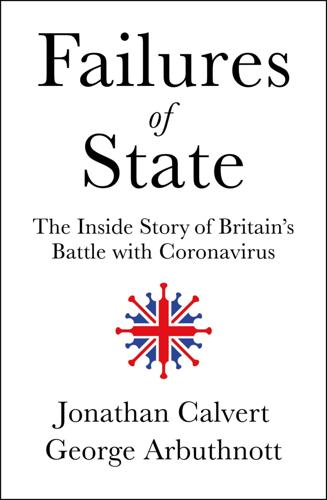
Failures of State: The Inside Story of Britain's Battle With Coronavirus
by
Jonathan Calvert
and
George Arbuthnott
Published 18 Mar 2021
‘The preponderance of evidence on the origin of Covid,’ he told us, ‘is absolutely crystal clear that this did not originate in the lab.’ He argues that this is because there is ‘a vast diversity of viruses circulating in rural China, Southeast Asia – one to seven million people getting infected – and this incredible network of movement, high speed rail, good road systems, a wildlife trade that takes people and animals directly connecting into Wuhan’s central seafood market’. He says the virus came from a cave in southern China. He claims that the ‘best guess right now’ is that the virus started within a ‘cluster’ that includes the area around where RaTG13 was found and the town of Mengla just south of the mineshaft where another bat coronavirus with a 93 per cent likeness to the Covid-19 virus had been discovered in the months after Sars-CoV-2 first emerged.
…
And he didn’t look like he did.’ 5 Holiday Thursday 13 February 2020 to Sunday 23 February 2020 UK government’s risk assessment: Moderate The prime minister was demob happy in the second week of February. On the day before the fourth missed Cobra meeting he was in Birmingham to publicise a government initiative that, unlike the virus, was something that Downing Street had decided to take charge of that week: the new HS2 high-speed rail line linking the north, the Midlands and London. While in the city, he was quizzed by reporters about coronavirus, as the news was becoming even more alarming. The virus had by then claimed 1,018 lives and infected over 43,000 people worldwide, and these were just the known cases. That morning the television news and newspapers were showing eerie shots of public health workers in hazmat suits and masks deep cleaning the County Oak Medical Centre in Brighton.
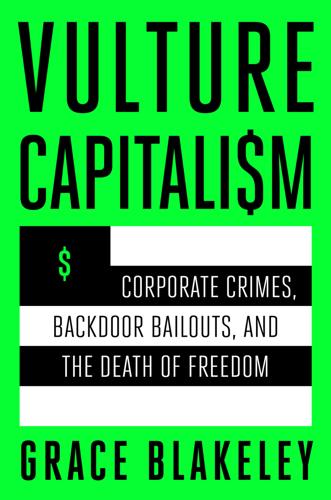
Vulture Capitalism: Corporate Crimes, Backdoor Bailouts, and the Death of Freedom
by
Grace Blakeley
Published 11 Mar 2024
Joe Leahy, “China’s Billionaires Pay the Price for Xi Jinping’s Covid Crackdown,” Financial Times, March 23, 2023, https://www.ft.com/content/b730fac4-ca65-4ccf-805e-da1cb0043bb2. 160. Panitch and Gindin, The Making of Global Capitalism; Chamayou, The Ungovernable Society. 161. Investment—primarily public in infrastructure like high-speed rail and electric buses—became by far the largest contributor to GDP in the post-crisis years, rising to an all-time high of 48 percent of GDP in December 2011. The achievements of this infrastructure investment program have been astonishing: in “2007 there were zero miles of high-speed rail in China,” but by 2015 “there were nearly 12,000 miles linking all the major cities.” David Harvey, Marx, Capital, and the Madness of Economic Reason (Oxford: Oxford University Press, 2017). 162.
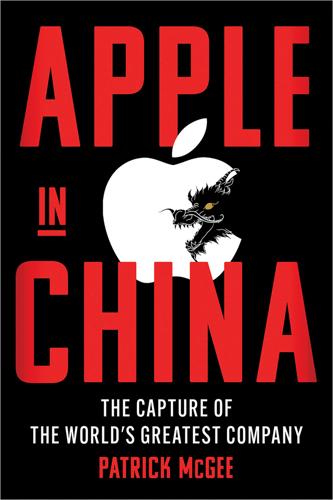
Apple in China: The Capture of the World's Greatest Company
by
Patrick McGee
Published 13 May 2025
As President Clinton had put it: “We don’t have to transfer technology or do joint manufacturing in China anymore.” But the practice didn’t really end; instead, the pressure turned informal. The Chinese market was so large that foreign companies would sometimes “voluntarily” enter such agreements. A textbook example occurred in the early 2000s when China planned the largest high-speed rail network in the world. The potential orders to foreign companies were enormous, creating a Prisoner’s Dilemma among Siemens, Bombardier, and Kawasaki. In the end, all three agreed to transfer technology to state-backed companies in exchange for market access. By 2010, policy had shifted to favor local industry; the foreign companies struggled to compete in China, and the local companies began exporting their technology abroad.
…
“That was music to the ears of China,” says one Apple executive familiar with the talks. Beijing had spent decades trying to catch up to the West’s lead in advanced industry, scientific research, and economic might. It often resorted to spying, outright theft, or coercive tactics. Or it would orchestrate complicated schemes, like pitting multiple high-speed rail groups against each other to win major contracts, all the while learning from each and synthesizing the different technologies into something “new.” Or it would lure expertise from abroad, such as the Thousand Talents program—a government-sponsored effort to bring outside experts to China. But here was America’s most famous tech giant volunteering to play the role of Prometheus, handing the Chinese the gift of fire.

Lonely Planet's 2016 Best in Travel
by
Lonely Planet
Published 30 Sep 2015
One section of the bridge skewers the office-building-turned-design-studio-hub Schieblock, topped by the pioneering DakAkker harvestable roof, producing fruit, vegetables and honey. Early 2016 sees the Museum Rotterdam open inside the ‘cloud-like’ Rem Koolhaas-designed Timmerhuis, showcasing Rotterdam’s past, present and future. And from late 2016, Europe’s busiest port – already on the Paris–Amsterdam high-speed rail line – will become more accessible than ever when direct Eurostar services linking London with Amsterdam stop at the stunning new skylit, stainless steel-encased Rotterdam Centraal train station. Festivals & events Stay in unique locations such as art installations and take artist-guided expeditions during mid-April’s Motel Mozaïque music, art and performance festival.
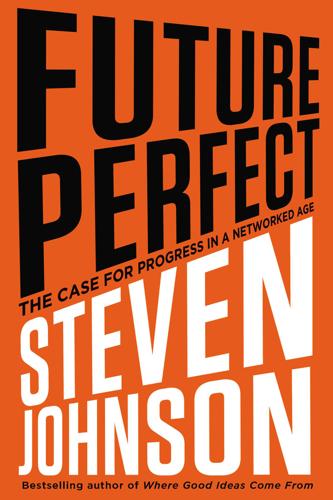
Future Perfect: The Case for Progress in a Networked Age
by
Steven Johnson
Published 14 Jul 2012
Reducing individual humans to a database of standardized statistical units helped create a revolution in public health that has lengthened and improved our lives in countless ways. The French railway system may not have defeated Bismarck, but it did allow the French to enjoy the convenience of high-speed rail, in the form of the TGV, decades before the rest of the world did. In many cases, as we will see, the simplifications of the centralized state model were necessary evils, given the technological limitations of their time. But by the middle of the twentieth century, the Legrand Star model of state vision had come under attack from multiple opponents, occupying different points on the political spectrum.

Big Capital: Who Is London For?
by
Anna Minton
Published 31 May 2017
One of the most blatant examples I’ve come across of the intimidation that can accompany consultation processes is the admission by a lobbying company called Westbourne of methods whereby ‘we shit them up’ in order ‘to scare the living daylights out of people’.38 In this particular case, Westbourne was explaining to a closed seminar how the company had worked to quell local opposition to argue the case in favour of building HS2, the high-speed rail link. The lobbyist giving the presentation revealed the technique they used was to create compelling stories to change the parameters of the debate, by inventing a framework which set wealthy residents in the Chilterns – ‘posh NIMBYs’ – against working-class people. The strategy was ‘posh people standing in the way of working-class people getting jobs’, with posters for the campaign asking people to choose between ‘their lawns or our jobs’.
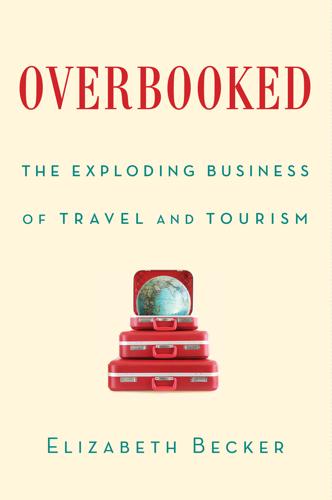
Overbooked: The Exploding Business of Travel and Tourism
by
Elizabeth Becker
Published 16 Apr 2013
It doesn’t matter anymore if you are fourth-generation Shanghai like I am or well educated. Shanghai now belongs to outsiders.” Initially, I wanted to travel on one of China’s new fast trains for a segment of our trip, but a series of fatal accidents frightened me. The government has invested billions of dollars in new high-speed rail links, the longest one between Beijing and Shanghai. These bullet trains will eventually connect major cities around the country, a commendable attempt to reduce carbon emissions by offering an alternative to airplanes and cars. It was a huge leap from China’s earlier rail system, built more than a hundred years ago to carry freight around the vast country.
…
But the Chinese rushed the construction of the system, ignoring complaints from foreign and Chinese experts about safety issues. Then in July 2011, a few months before our trip, a new Chinese fast train had a spectacular collision with another train that killed 39 people. By comparison, Japan’s high-speed rail has been operating since 1964 and has never had a fatality. Eventually, China will repair the damage done by taking shortcuts but I wasn’t prepared to take a chance. We stuck to airplanes. We flew to Xian, an old imperial capital of little modern significance until 1974, when some farmers hit a strange object while digging a well.
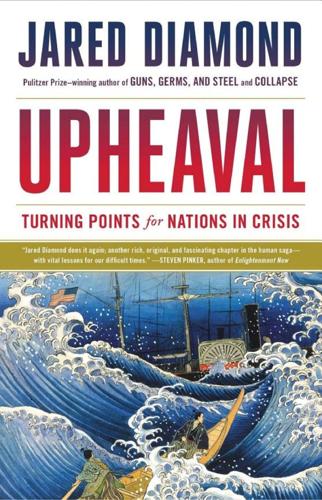
Upheaval: Turning Points for Nations in Crisis
by
Jared Diamond
Published 6 May 2019
China’s economic growth rate for years has consistently exceeded not only ours but also the growth rate of every other major country. It has the world’s largest number of soldiers and (after the U.S.) second-largest military spending. It has possessed nuclear weapons for half-a-century. It already outstrips the U.S. in some spheres of advanced technology (such as alternative energy generation and high-speed rail transport). Its dictatorial government can get things done much faster than can our democracy hobbled by two parties and by checks and balances. To many Americans, it seems only a matter of time before China overtakes us economically and militarily. We increasingly hear claims that the 21st century will become an Asian century—specifically, a Chinese century.
…
There’s no doubt that decisions and their implementation take longer in democracies than in dictatorships, because the essence of democracy is checks, balances, and broad-based (hence time-consuming) decision-making. For instance, China’s adoption of lead-free gasoline took just one year, whereas that policy required a decade of debates and court challenges in the U.S. We envy China’s quickly outstripping us in its construction of networks of high-speed rail transport, city subway systems, and long-distance energy transmission. Skeptics about democracy can also point out examples of disastrously harmful leaders who came to power through democratic election. Those disadvantages of democracy are real. But dictatorships suffer from a far worse, often fatal, disadvantage.

Growth: From Microorganisms to Megacities
by
Vaclav Smil
Published 23 Sep 2019
Figure 4.9 Growth of the longest railway tunnels, 1840–2020. Data mostly from Beaver (1972) and Onoda (2015). Bridges Bridges are also a rather heterogeneous category of infrastructural artifacts, especially when any elevated aqueduct, road, or railroad is put into that category. According to this classification, the world’s longest bridges are high-speed rail viaducts in China, led by Danyang-Kunshan (164.8 km) on the Beijing-Shanghai route (History of Bridges 2017). Taiwan’s Changhua-Kaohsiung, running above farmed and inhabited countryside, is 157.3 km long. Some bridges across shallow water bodies use closely spaced concrete piers: Lake Ponchartrain Causeway runs for 38.4 km.
…
In the US, exponential growth (annual average rate of 7.5% between 1830 and 1916) was followed by decades of decline with a new, low plateau beginning to form after the year 2000 when the total extent was a bit less than 40% of the peak length. The growth trajectory of Japan’s railroads has followed fairly closely a sigmoid course, with a new plateau only less than 15% below the peak (figure 4.14). China, thanks to its rapid post-2000 expansion of high-speed rail lines, is still in the ascending part of its railroad length growth curve, with considerable potential for further extensions (NBS 2016). Long-Distance Pipelines and High-Voltage Transmission Lines Without pipelines, consumption of liquid and gaseous fuels would have to be either restricted to the immediate vicinity of hydrocarbon fields or their shipments would have to rely on much more expensive, and much more risky, rail and road transport.
…
Energy Policy 38:4135–4141. Wu, Z., et al. 2006. Determinants of high sex ratio among newborns: A cohort study from rural Anhui province, China. Reproductive Health Matters 14:172–180. WWID (World Wealth and Income Data Base). 2018. World Inequality Database. https://wid.world/. Xinhua. 2016. China’s high-speed rail track exceeds 20,000 km. http://news.xinhuanet.com/english/2016-09/10/c_135678132.htm. Yakovenko, V. M., and J. B. Rosser. 2009. Colloquium: Statistical mechanics of money, wealth, and income. Review of Modern Physics 81:1703–1725. Yang, R. C., et al. 1978. The potential of Weibull-type functions as flexible growth curves.

Frommer's Memorable Walks in San Francisco
by
Erika Lenkert
Published 15 Mar 2003
Especially enjoyable to ride are the beautiful vintage multicolored F-Market streetcars, which run from downtown Market Street to the Castro and back. They offer a quick and charming way to get uptown and downtown without any hassle. BY BART BART, an acronym for Bay Area Rapid Transit (% 415/989-2278), is a futuristic-looking, high-speed rail network that connects San Francisco with the East Bay— Oakland, Richmond, Concord, and Fremont. Four stations are located along Market Street (see “By Metro Streetcar,” above). Fares range from $1.10 to $4.70, depending on how far you go, though children 4 and under ride free. Tickets are dispensed from machines in the stations and are magnetically encoded with a dollar amount; computerized exits automatically deduct the correct fare.
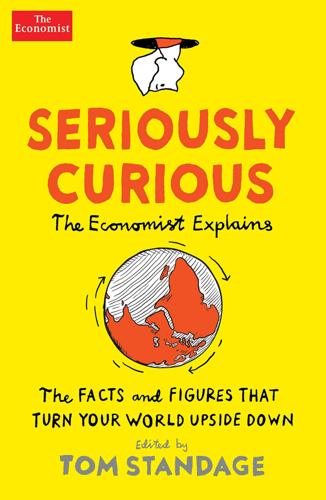
Seriously Curious: The Facts and Figures That Turn Our World Upside Down
by
Tom Standage
Published 27 Nov 2018
Behind this broad strategic imperative lies a plethora of secondary motivations – the number and variety of which prompt Western scepticism about the coherence and practicality of the project. By investing in infrastructure, Mr Xi hopes to find a more profitable home for China’s vast foreign-exchange reserves, most of which are in low-interest-bearing American government securities. He also hopes to create new markets for Chinese companies, such as high-speed rail firms, and to export some of his country’s vast excess capacity in cement, steel and other metals. By investing in volatile countries in central Asia, he reckons he can create a more stable neighbourhood for China’s own restive western provinces of Xinjiang and Tibet. And by encouraging more Chinese projects around the South China Sea, the initiative could bolster China’s claims in that area (the “road” in “belt and road” refers to sea lanes).

Finding Zero: A Mathematician's Odyssey to Uncover the Origins of Numbers
by
Amir D. Aczel
Published 6 Jan 2015
I hoped the inscription had survived the vicissitudes of time and the ravages of the Khmer Rouge in Laos’s neighbor to the southeast. The next day, we packed our bags and took a cab to the small airport, still nearly empty despite the growing demand from tourists. People were talking about a new airport to be built, and the construction of a high-speed rail line from China in the north. Once these two projects were completed, the town of Luang Prabang would be full of Chinese and other tourists. We knew prices would go up, high-rise hotels would be built, and the peaceful atmosphere would likely change. I was a little worried that I might be asked to pay a penalty again, this time in order to leave the country on an “improper” passport, but to my relief my passport was stamped and we were allowed to board our flight.

50 Future Ideas You Really Need to Know
by
Richard Watson
Published 5 Nov 2013
the condensed idea Reinventing our wheels timeline 1769 First self-propelled mechanical vehicle 1885 Karl Benz invents the modern motorcar 1960s Personal jetpack technology becomes a reality 2004 China unveils a high-speed magnetic levitation train 2016 35 percent of cars now hybrids 2022 Self-driving cars start to appear in China and India 2039 High-speed rail networks link Europe with North Africa 2036 Solar-powered planes widely used in Africa and Australia 15 Extra-legal & feral slums According to a UN estimate, 1 in 7 people worldwide now live in slums and in many cases these slums, which are not regulated or sanctioned by law, are set to become major cities in the near future.
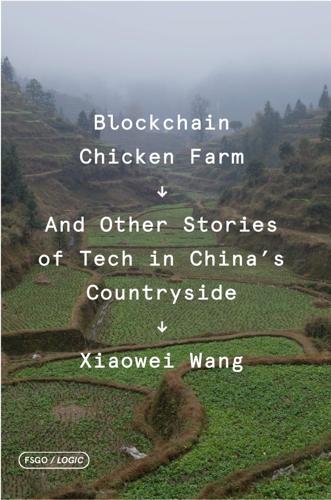
Blockchain Chicken Farm: And Other Stories of Tech in China's Countryside
by
Xiaowei Wang
Published 12 Oct 2020
These experiments rely on technology and the internet as catalysts, creating new socioeconomic ecosystems of rural entrepreneurship, hearkening back to the Town and Village Enterprises of the 1980s. Such initiatives use e-commerce, mobile payment, and broadband, bolstered by the traditional Chinese art of massive infrastructural projects like roads, walls, and high-speed rail. Accompanying these economic changes is also a shift in rural culture, as the dynamics of the market become interlinked with traditional family dynamics. These experiments are unfolding across a wild landscape. A patchwork of private corporations and delayed government oversight exists alongside friction between peasant entrepreneurs and local government.

Numbers Don't Lie: 71 Stories to Help Us Understand the Modern World
by
Vaclav Smil
Published 4 May 2021
In 1934, 11 years after General Electric made its first diesel locomotive, the Chicago, Burlington and Quincy Railroad began to run its streamlined stainless-steel Pioneer Zephyr, a 600-horsepower (447-kilowatt), eight-cylinder, two-stroke diesel-electric unit. This power made it possible for the Zephyr to beat the speeds of today’s Acela, with an average of 124 km/h on the more than 1,600-kilometer-long run from Denver to Chicago. But there is now no realistic hope that the US could ever catch up with China: at 29,000 kilometers of high-speed rail that country now has the world’s longest network of rapid trains, connecting all major cities in its populous eastern half. food Energizing Ourselves The world without synthetic ammonia By the end of the 19th century, advances in chemistry and plant physiology made it clear that nitrogen is the most important macronutrient (element needed in relatively large amounts) in crop cultivation.

The Unwinding: An Inner History of the New America
by
George Packer
Published 4 Mar 2014
Karen gave speeches decrying the influence of urban planners and warning against Agenda 21, a nonbinding United Nations “sustainable development” resolution from 1992 that many Tea Partiers regarded as a Trojan horse for world government, a danger to American sovereignty, and an ominous threat to its single-family homes, paved roads, and golf courses. The fact that President Obama made intercity high-speed rail a centerpiece of his stimulus bill only confirmed their worst suspicions. So streetcars were absorbed into the national fury and became the Tampa Tea Party’s signature issue in 2010, as tax cuts and abortion had been to earlier generations of conservatives. Once, backstage before a televised debate with Tampa’s mayor, Pam Iorio, who was the main political force behind light rail, Karen mentioned that her husband had recently been laid off from his job as a civil engineer.
…
Rick Scott, a Tea Party hero, who had refused to meet with any newspaper editorial boards and received none of their endorsements, was elected governor, continuing unbroken Republican rule in Florida that dated back to 1998. Soon after taking office, Scott decided to reject $2.4 billion in federal stimulus money for a high-speed rail line connecting Tampa and Orlando, on which work was set to begin within weeks (the money went to California). The seventy-acre site for Tampa’s new downtown rail terminal remained a vast dirt field next to the interstate. A data company that studied statistics for fifty metropolitan areas, factoring in unemployment, commute time, suicide, alcohol use, violent crime, property crime, mental health, and cloudy days, announced that Tampa was the single most stressful city in the United States.

A Generation of Sociopaths: How the Baby Boomers Betrayed America
by
Bruce Cannon Gibney
Published 7 Mar 2017
“Highway Bridges by State and Highway System.” 31 Dec 2015, www.fhwa.dot.gov/bridge/nbi/no10/defbr15.cfm#a, and see infra note 31. 30. Ibid.; see also American Society of Civil Engineers, Infrastructure Report Card 2013, Bridges Subsection. 31. Nixon, Ron. “$11 Billion Later, High-Speed Rail Is Inching Along.” New York Times, 6 Aug. 2014, www.nytimes.com/2014/08/07/us/delays-persist-for-us-high-speedrail.html?emc=edit_th_20140807&nl=todaysheadlines&nlid=45299538&_r=0; 49 USC §26105.2.A. (defining “high-speed rail”). 32. Nussbaum, Paul. “Amtrak’s High-Speed Northeast Corridor Plan at $151 Billion.” Inquirer, 10 July 2012, posted on Philly.com, articles.philly.com/2012-07-10/news/32602302_1_amtrak-president-joseph-boardman-acela-express-northeast-corridor; Amtrak.

The Technology Trap: Capital, Labor, and Power in the Age of Automation
by
Carl Benedikt Frey
Published 17 Jun 2019
Those growing up in Silicon Valley are more likely to drive innovation in computing, while those who spend their early years in places specializing in medical devices, like Minneapolis, for example, are more likely to invent related technologies.54 Connectivity Transportation infrastructure that linked high-paying labor markets to areas where housing is cheap would also allow more people to tap into strong local economies. Subways or high-speed rail that connected declining places (where jobs have dried up and housing is cheap) with expanding ones (where jobs are abundant and housing is expensive) would serve to level incomes across space. And such connections would boost local service economies in decline, as people spend large parts of their incomes locally. In this light, economists have pointed to the potential benefits of current efforts to connect California’s low-income cities—like Sacramento, Stockton, Modesto, and Fresno—with the Bay Area through high-speed rail.55 Many Californians could remain in Fresno, where housing is cheap, and commute to San Francisco for work.
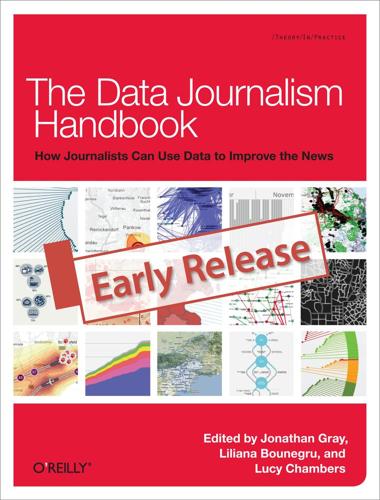
The Data Journalism Handbook
by
Jonathan Gray
,
Lucy Chambers
and
Liliana Bounegru
Published 9 May 2012
BBC, in collaboration with the agency Berg Design, also developed the website “Dimensions”, which let you overlay the outlines of major world events—the Deepwater Horizon oil spill or the Pakistan floods, for example—over a Google map of your own community (http://howbigreally.com/). Showing Connections and Flows France’s introduction of high-speed rail in 1981 didn’t literally make the country smaller, but a clever visual representation shows how much less time it now takes to reach different destinations than by conventional rail. A grid laid over the country appears square in the “before” image, but is squashed centrally towards Paris in the “after” one, showing not just that outbound destinations are “closer,” but that the greatest time gains occur in the first part of the journey, before the trains reach unimproved tracks and have to slow down.
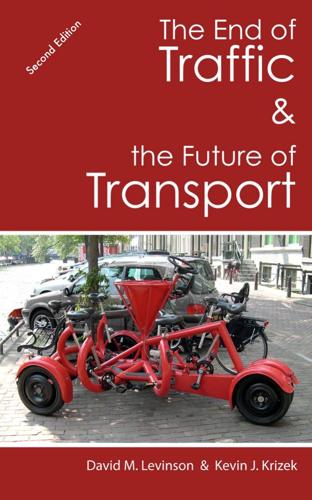
The End of Traffic and the Future of Transport: Second Edition
by
David Levinson
and
Kevin Krizek
Published 17 Aug 2015
Artech House. 12 David Levinson blogs at The Transportationist: http://transportationist.org 13 Kevin Krizek blogs at Vehicle for a Small Planet: http://vehicleforasmallplanet.com 14 Furthermore, we explicitly do not consider the intercity transportation system of highways, pipelines, railroads, airports, ships or even even high-speed rail. 15 Reihan Salam. November 7, 2013 http://www.nationalreview.com/agenda/363381/david-levinsons-vision-future-reihan-salamhttp://www.nationalreview.com/agenda/363381/david-levinsons-vision-future-reihan-salam 16 These brief slow downs in the inexorable rise in vehicle travel are usually attributed to the oil supply and price shocks in 1973-4 (Yom Kippur War), 1979-1981 (Iranian Revolution), early 1990s (Gulf War), and early 2000s (9/11). 17 The population of prime working age peaked around 2000. 18 In 1924, a Chevrolet cost $5251.
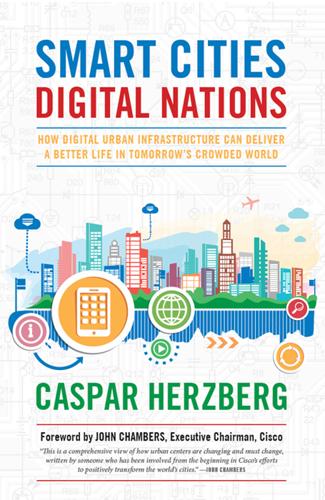
Smart Cities, Digital Nations
by
Caspar Herzberg
Published 13 Apr 2017
The vision was breathtaking, but so was the cost—initial estimates ran to 300 billion Saudi riyal (SR), or $80 billion USD—and attendant risk. The kingdom could not afford for KAEC to become an impressive testament to its industry; it needed to become an economic powerhouse that supported international commerce and trade. Located sixty miles north of Jeddah, KAEC would be a stop on the Haramain High Speed Rail Project line, while maintaining an international airport and eventually offering some twenty-five thousand hotel rooms. These figures, liberally provided to the media, were a clear indication that this city would not simply participate in global commerce. It would help to create it by becoming a business-friendly destination in which Western and regional influences could mix (the Hajj Terminal at the seaport, once completed, was expected to accept three hundred thousand pilgrims traveling to holy Muslim cities).
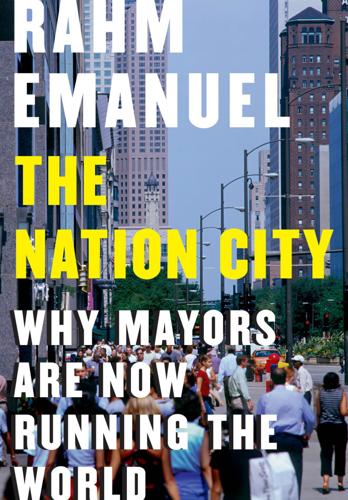
The Nation City: Why Mayors Are Now Running the World
by
Rahm Emanuel
Published 25 Feb 2020
“He told me that he had seen a dockless bike-sharing setup, but he thought that his city, at 40,000 people or so, was too small to utilize it,” says Buttigieg. “He wondered if I wanted to take a look at it.” (South Bend’s population is 102,000.) Buttigieg did, and the stationless service made it workable for South Bend. Buttigieg is also formulating a plan for a high-speed rail service between his city and Chicago, which would cut the commute down to ninety minutes from two hours or more. Like BEAM, this initiative would benefit both cities and an entire area. Landrieu visited us in Chicago to check out our real-time crime data center, which he replicated in New Orleans’s French Quarter.
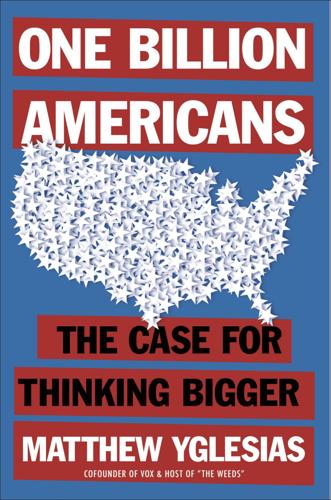
One Billion Americans: The Case for Thinking Bigger
by
Matthew Yglesias
Published 14 Sep 2020
The truth is that according to the Federal Aviation Administration there are only three capacity-constrained airports in the whole country—it just happens that two of them are in New York and the other is the one members of Congress use to fly home to their districts. These are important cities, and their airport-crowding issues underscore the fact that investing in high-speed rail, specifically in the Northeast corridor, could be very useful. But for most Americans the more relevant problem—at least when air service isn’t interrupted by a global pandemic—is that the airport they live closest to has only so many direct flights. That means there’s little competition on routes, limited flexibility in schedules, and simple logistical difficulties in getting from one place to another.
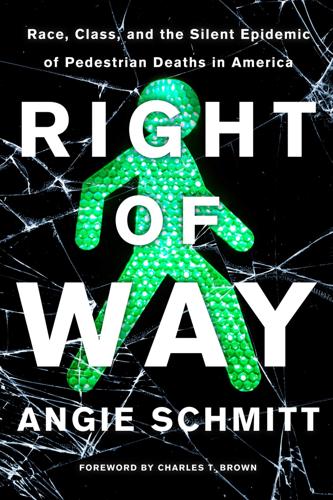
Right of Way: Race, Class, and the Silent Epidemic of Pedestrian Deaths in America
by
Angie Schmitt
Published 26 Aug 2020
For US Senators, the average age was just shy of sixty-three, according to Quorum Analytics.16 It is also possible that Republican opposition to biking, walking, and transit investment simply arose to some extent in response to growing interest in these modes in more progressive Democratic strongholds like New York City and Portland. Nall said that the survey data point to a sea change in partisan opinion around alternatives to driving around 2010. “This was around the time Republicans like [former Wisconsin Governor] Scott Walker were killing off High Speed Rail,” which had been proposed and passed early in Obama’s term as part of the stimulus bill, he said. “There’s this message that cars are crucial to the American way of life and that Democrats are trying to engage in social engineering.”17 Whatever the underlying cause, Republican-led assaults on transportation funding continued throughout the Obama administration and beyond.
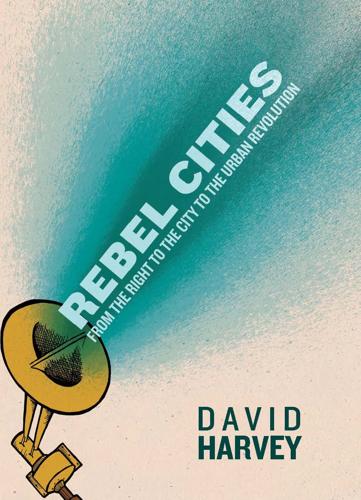
Rebel Cities: From the Right to the City to the Urban Revolution
by
David Harvey
Published 3 Apr 2012
Jamil Anderlini, "Fate of Real Estate is Global Concern ;' Financial Times, June l , 20 1 1 . 50. International Monetary Fund/International Labour Organization, The Challenges of Growth, Employment and Social Cohesion, Geneva: International Labour Organization, 20 1 0. 5 1 . Keith Bradsher, "High-Speed Rail Poised to Alter China, but Costs and Fares Draw Criticism;' New York Times, June 23, 20 1 1 . 52. Peter Martin and David Cohen, "Socialism 3.0 in China:' the-diplomat. com; Anderlini, "Fate of Real Estate is Global Concern:' C H A PT E R T H R E E : TH E C R EAT I O N O F T H E U R BAN CO M M O N S I .
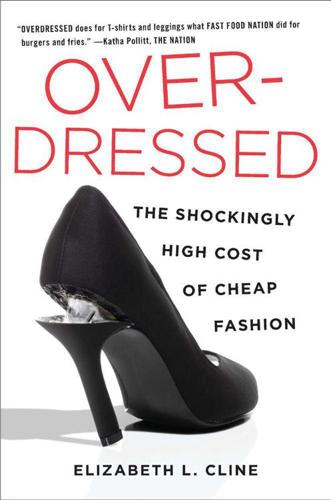
Overdressed: The Shockingly High Cost of Cheap Fashion
by
Elizabeth L. Cline
Published 13 Jun 2012
China now has a bullet train that covers the 819 miles from Shanghai to Beijing in five hours. Shenzhen’s public transportation is so much more modern than New York’s creaking public transit that one garment factory owner’s only impression of my fair city was, “Your subway system is so old.” Giardina told me that after traveling on China’s high-speed rail, he finds train travel in the United States very frustrating. “It’s embarrassing,” he said. “It’s like I’m on Thomas the Tank.” The first factory I visited in China was located in a drab yellow-tile complex on a shabby backstreet off of Humen Town’s main drag. Here we go, I thought, as we pulled up and a guard let us into the ominous building that looked like fodder for a sweatshop investigator.
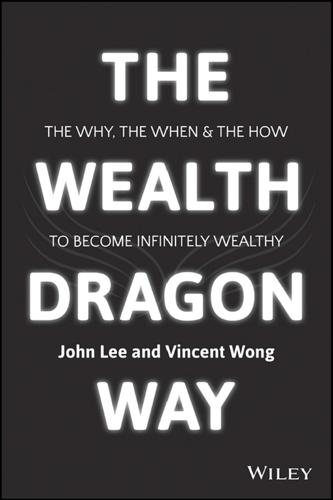
The Wealth Dragon Way: The Why, the When and the How to Become Infinitely Wealthy
by
John Lee
Published 13 Apr 2015
Property speculators buy properties at full market value with the hope of adding value through the appreciation of that property, thus making a profit sometime in the future. They may buy in an area that has been approved for a regeneration project or is already going through gentrification; perhaps a new high-speed rail link is being built nearby. Property speculators have to wait for the market to go up because of improvements to the area before the value of their property goes up and they can make a profit. Property speculation is very much a game for long-term investors. Property developers buy properties that are run down or derelict, or have planning permission to be expanded, with the hope of adding value through improvements and renovations, thus making a profit sometime in the future.
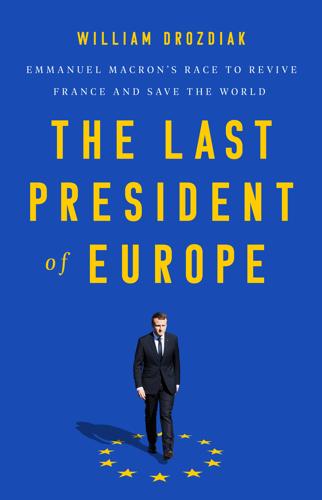
The Last President of Europe: Emmanuel Macron's Race to Revive France and Save the World
by
William Drozdiak
Published 27 Apr 2020
While France’s largest left-wing workers’ union, the General Confederation of Labor, expressed outrage and staged strikes against Macron’s labor reforms, other union leaders took note of public opinion and declined to follow its example. Emboldened by his early success, Macron felt confident enough to challenge one of France’s most sacred cows: the SNCF (Société nationale des chemins de fer français) railway system, the country’s biggest single employer, with 150,000 workers. France’s high-speed rail network is widely admired—it has cut travel time between Paris and Bordeaux to two hours—but its cumulative debt of more than $60 billion had become a colossal burden on the state. Nobody had dared to confront the train unions since 1995, when then–prime minister Alain Juppé was forced to scrap his reform plans and leave office after a three-week railway strike brought the country to its knees.
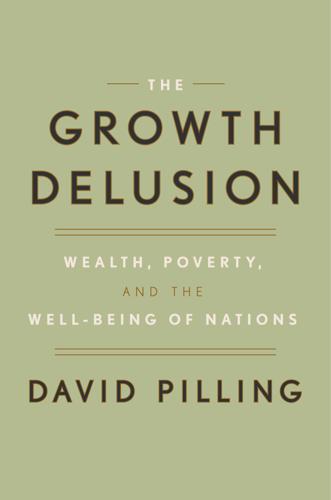
The Growth Delusion: Wealth, Poverty, and the Well-Being of Nations
by
David Pilling
Published 30 Jan 2018
Free university education, for example, might seem like an unaffordable economic sacrifice, but if you were measuring the stock of wealth rather than the flow, all those additional educated people might look like an increase in your nation’s wealth, not a diminishment of its growth. The same goes for investing in infrastructure, say high-speed rail, in anticipation of future returns on investment. How one accounts for these things matters. In the US independent senator Bernie Sanders and in the UK Jeremy Corbyn, the opposition Labour leader, both want to increase public funding and scrap student fees. Their policies look less radical—and therefore more plausible—from a wealth-accounting perspective.
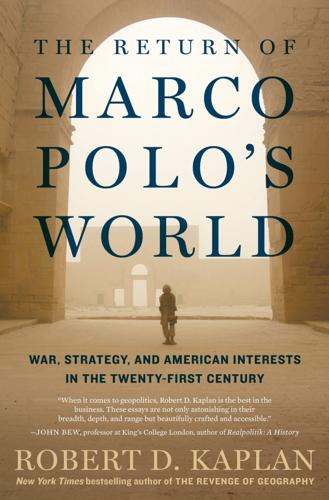
The Return of Marco Polo's World: War, Strategy, and American Interests in the Twenty-First Century
by
Robert D. Kaplan
Published 6 Mar 2018
(There are, too, signs in the Russian alphabet, indicating the presence of Kazakh, Uzbek, and other Muslim minorities.) When one adds these ethnic Turkic areas to Tibet, you have a third of China’s land area. China is a prison house of nations, albeit to a lesser extent than the former Soviet Union. And yet, whether it is the new highways, the high-speed rail trains that swept by my bus here in Chinese Central Asia, the unending new wind farms on the steppe, or the ceaseless new apartment blocks—or even the very number of terra-cotta warriors themselves—China has always manifested an ambition of jaw-dropping, epic proportions. The sheer scale of it is impressive and frightening, both in antiquity and now.
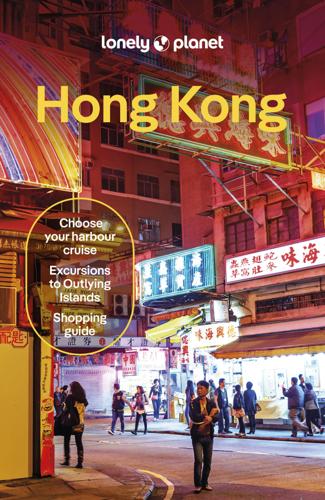
Lonely Planet Hong Kong
by
Lonely Planet
GETTING THERE Most international visitors fly into Hong Kong International Airport (HKIA) then zoom to the city centre on the Airport Express, part of Hong Kong’s excellent MTR subway network. For those coming from mainland China and Macau, there are many more ways to show up. Guangzhou-Shenzhen-Hong Kong High Speed Rail | YIUCHEUNG/Shutterstock © Octopus Card If you’re not too exhausted after you land, consider buying an Octopus card from an Airport Express customer-service counter. You’ll save HK$5 on the Airport Express right off the bat, and glide through the barriers without the need to buy individual tickets.
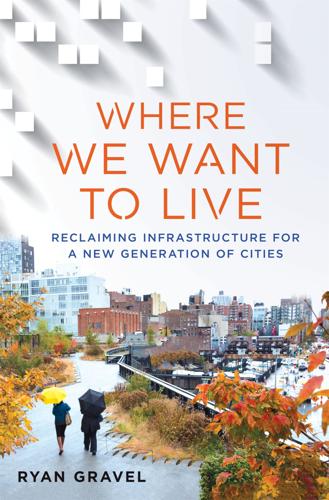
Where We Want to Live
by
Ryan Gravel
Published 2 Feb 2016
I found advisors from each program to work with me and a lead advisor, Randy Roark, who could bridge the gap between the two disciplines. Atlanta was my laboratory, and I knew that I wanted to tackle the region’s sprawling car dependency with new transit. My first idea was a plan for the downtown railroad gulch that would incorporate the city’s main transit hub with a new terminal for regional and high-speed rail. My second idea was to take the loop of old railroads that I had discovered in my wanderings around the city and put them to better use. I knew the neighborhoods along their routes and I liked the idea of linking them together both physically and conceptually in ways that they had not been connected before.
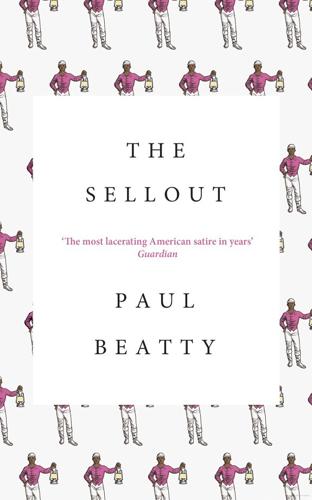
The Sellout: A Novel
by
Paul Beatty
Published 2 Mar 2016
The mustachioed lead detective in a long-canceled but still-in-syndication cop show—big in Ukraine. “That’s off the dude with the hairy chest.” The movie star disagreed. But it was the right call. Foy looked up at me from his chair, but didn’t stop talking or typing. Speaking in rapid-fire, unintelligible word salad into the phone, he wasn’t making much sense, something about high-speed rail and the return of the Pullman porter. The Mercedes coupe’s Pirelli whitewall tires were bald. Yellow foam oozed from the cracked and blistered leather seats like pus. Foy was probably homeless, but he refused to sell his watch, or a car that, at auction, even in its fucked-up condition, was worth several hundred thousand dollars.
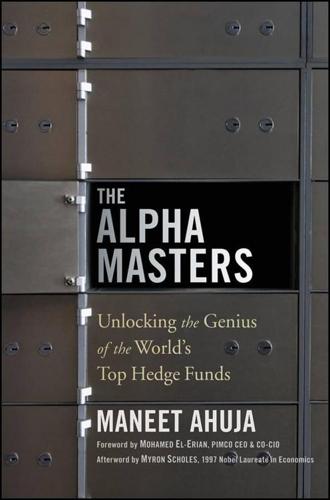
The Alpha Masters: Unlocking the Genius of the World's Top Hedge Funds
by
Maneet Ahuja
,
Myron Scholes
and
Mohamed El-Erian
Published 29 May 2012
He followed that with a presentation at St. Hilda’s College, Oxford in January 2010, “The China Syndrome: Warning signs ahead for the global economy.” Chanos argued that China, fearing a sharp slowdown from the financial crisis, pumped credit into asset growth—mainly real estate but new roads and high-speed rail, too. There were “classic pockets of overheating, of overindulgence” he said in his presentation. Fixed asset investments as a percentage of China’s gross domestic product (GDP) were exceeding 50 percent—a “sh-a chén bào” (sandstorm) of money, he said. The stimulus was massive: $586 billion, or 14 percent of GDP (the U.S. package was $787 billion, or 6 percent of GDP).
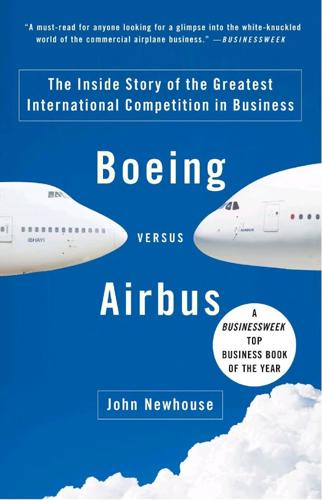
Boeing Versus Airbus: The Inside Story of the Greatest International Competition in Business
by
John Newhouse
Published 16 Jan 2007
Yet despite the high-volume rail travel, Japan has carriers that fly jumbo airliners, notably Boeing 747’s, on flights between neighboring cities that last no more than an hour and are normally filled. The world’s three most heavily traveled routes, according to a JAL official, are, first, Tokyo-Haneda-Sapporo; second, Tokyo-Haneda-Fukuoka; third, Haneda-Osaka. (Japanese travel buffs point out that Air France canceled its Paris-Brussels service when France’s high-speed rail service began connecting these two cities and their airports.) Japan’s singularity afflicts Airbus. The company competes strongly in China, but not in Japan, where politics and habit conspire in Boeing’s favor. In a large sense, Boeing is seen as family, having been a presence in Japan for more than a half century.

The Autonomous Revolution: Reclaiming the Future We’ve Sold to Machines
by
William Davidow
and
Michael Malone
Published 18 Feb 2020
The projects identified by the ASCE represent only a fraction of what has to be done to create a robust twenty-first-century infrastructure. Providing 100 million households with FTTH (fiber to the home) would require an investment of between a quarter and a half-trillion dollars—and that’s just the tip of the iceberg.45 Massive investments in public transportation are needed—things like high-speed rail, and possibly even hyperloops that would allow trains to travel at the speed of sound.46 Substantial portions of our cities and suburbs will need to be retrofitted or rebuilt from scratch. In the 1960s and 1970s, when the 41,000-mile Interstate Highway System was being completed and the suburban population was burgeoning (it almost doubled between 1950 and 1970), construction spending ran 10 to 11 percent of GDP.47 It falls in the 5 to 6 percent range today,48 so it could easily double.
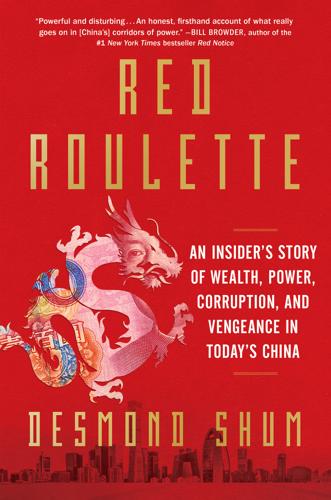
Red Roulette: An Insider's Story of Wealth, Power, Corruption, and Vengeance in Today's China
by
Desmond Shum
Published 6 Sep 2021
Chinese officials, executives at state-owned companies, and private businessmen who were close to the Party presented insiders like Auntie Zhang with opportunities all the time, but the deals weren’t as sweet as those available to China’s red aristocrats. The red aristocrats got access to monopoly businesses. An example would be the contract to provide a kind of mineral water, called Tibet 5100, on China’s high-speed rail network. That reportedly was landed by relatives of Deng Xiaoping, who paid next to nothing for the rights to bottle the water in Tibet. From 2008 to 2010, the Ministry of Railways bought two hundred million bottles of the stuff. When the company listed on the Hong Kong Stock Exchange in 2011, its market capitalization was $1.5 billion.

Listen, Liberal: Or, What Ever Happened to the Party of the People?
by
Thomas Frank
Published 15 Mar 2016
Unfortunately, the biggest single part of it was wasted on tax cuts designed to lure Republican votes. Another chunk was wasted on coaxing state governments to embrace charter schools and to open their education systems to consultants and entrepreneurs. The Big Stimulus also contained many good things: subsidies for clean-energy projects, a push to update medical record-keeping, billions for high-speed rail projects, and support for a long list of state and local construction schemes—the famous “shovel ready” projects about which everyone was talking in 2009. If you can name just one of them today without going to Wikipedia, you have my respect.9 What the sprawling stimulus measure did not include was the obvious thing, the most effective thing, the thing Americans of all ages remember that Franklin Roosevelt did—direct federal job-creation in the WPA manner.

Blitzscaling: The Lightning-Fast Path to Building Massively Valuable Companies
by
Reid Hoffman
and
Chris Yeh
Published 14 Apr 2018
Seattle and Los Angeles also offer good quality-of-life benefits to individual professionals, since they are major cultural centers and popular tourist destinations, with less expensive housing markets than Silicon Valley (though hardly inexpensive). These ties will likely get even closer if the cities are connected via additional transportation links like high-speed rail or Elon’s proposed Hyperloop, or with the advent of self-driving cars, all of which would make travel and commuting between these cities and Silicon Valley faster and cheaper. Thus, LA and Seattle are becoming increasingly fertile grounds for entrepreneurship, and good places to set up a company that you are planning on blitzscaling.

The Socialist Manifesto: The Case for Radical Politics in an Era of Extreme Inequality
by
Bhaskar Sunkara
Published 1 Feb 2019
How would you go about securing capital for a new venture under socialism? Unlike in capitalism, start-ups aren’t fueled by private investment, but rather the capital goods tax mentioned earlier. The funds are invested into the economy in a variety of ways. National planning projects—like renovating the energy grid or high-speed rail networks—are the first priority. What’s left is given to regions on a per capita basis. Under capitalism, people were forced to abandon cities to chase jobs in expanding markets. Now people still move around, but they won’t be compelled to do so by capital flight.15 The funds are channeled by regional investment banks (public, of course) that engage in more local planning and then apportion the rest to new or existing firms.
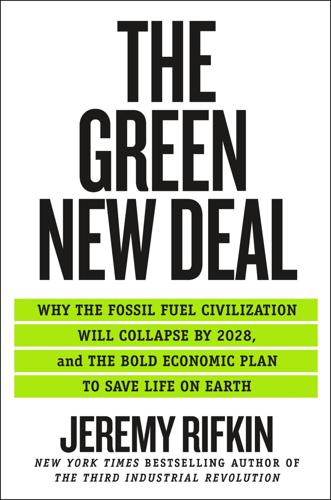
The Green New Deal: Why the Fossil Fuel Civilization Will Collapse by 2028, and the Bold Economic Plan to Save Life on Earth
by
Jeremy Rifkin
Published 9 Sep 2019
In the European Union, EU citizens recognize the importance of maintaining a balanced partnership between government and commerce, and there is a deep appreciation for the role that the government plays in providing public infrastructure and services from which both the business community and the public benefit in their day-to-day lives. For this reason, taxpayers in Europe are willing to shoulder higher taxes in return for the advantages they secure with public services, from universal healthcare to high-speed rail systems. By contrast, everywhere we look across America today, the public infrastructure is in dire straits and disrepair: roads, bridges, dams, public schools, hospitals, public transit, etc. Every four years, the American Society of Civil Engineers (ASCE) issues a report card on the condition of the country’s infrastructure, including its rail transit, inland waterways, levees, ports, schools, wastewater and solid waste treatment, hazardous waste disposal, parks, aviation, and energy.

Rule of the Robots: How Artificial Intelligence Will Transform Everything
by
Martin Ford
Published 13 Sep 2021
In practice, the social credit system is fragmented into experimental programs run by various city and local governments together with an array of commercial rating systems administered by corporations, like Alibaba or Tencent, that maintain mobile payment systems.29 Some of the programs, such as one in the city of Rongcheng, have met with widespread approval from the public because they are relatively transparent, penalize only behaviors that are clearly illegal and have produced undeniably positive results. Drivers in Rongcheng, for example, began stopping at crosswalks in deference to pedestrians once it was made clear that violations would negatively impact their social credit ratings. Millions of airline or high-speed rail tickets have indeed been denied to Chinese citizens, but this is generally because their names have appeared on long-used blacklists rather than the result of an algorithmically generated score. The most important blacklist, maintained by the Supreme People’s Court, primarily includes people who have unpaid debts, court judgments or fines—although, as with nearly all government functions in China, corruption and a lack of transparency are a constant problem.
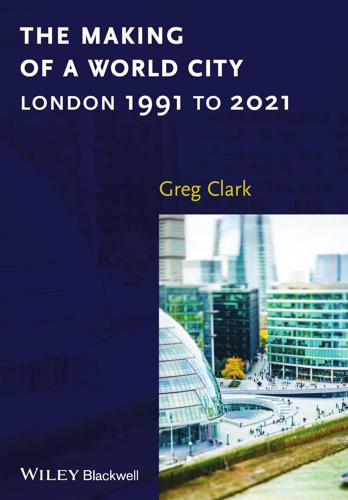
The Making of a World City: London 1991 to 2021
by
Greg Clark
Published 31 Dec 2014
Private funding has also been critical to the widening of the M25, which has mainly taken place under private finance initiatives (PFI). The design, construction, finance and operation of road improvements were managed by the private sector, although cost inefficiencies occurred due to the Highways Agency’s procurement delays and lack of rigour in cost estimations (National Audit Office, 2011). London’s first experience of high-speed rail began with the completion of High Speed 1 (HS1) in 2007, which connects St Pancras station with the Channel Tunnel and continental Europe. HS1 superseded the conventional line that operated from Waterloo from 1994 to 2007 and was distinctly sluggish compared to the high-speed continental infrastructure.
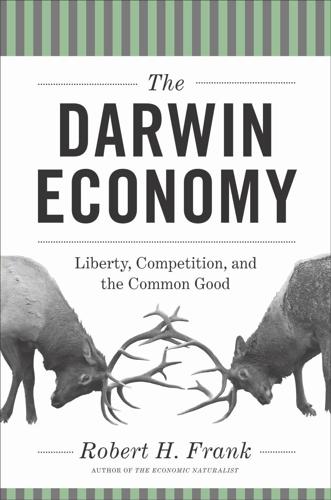
The Darwin Economy: Liberty, Competition, and the Common Good
by
Robert H. Frank
Published 3 Sep 2011
As experience has shown, these entitlement programs are politically sacrosanct. THE GREAT TRADE-OFF? 171 There are other compelling candidates for additional public expenditure. Our transportation infrastructure, for example, has been neglected for decades. At some point, we will really have no choice but to repair our roads and bridges. We have no high-speed rail systems, even though many less developed countries are now building them.10 With soaring energy prices, a smart energy grid has become an increasingly attractive public investment.11 Many urban areas still lack even rudimentary public transportation systems. We still need to round up those loose nukes in the former Soviet Union.

No Ordinary Disruption: The Four Global Forces Breaking All the Trends
by
Richard Dobbs
and
James Manyika
Published 12 May 2015
The central government foresees 100 million more people moving to China’s cities by 2020. Current forecasts call for 60 percent of the country’s population to live in cities by then.16 In the near future, China has pledged to link every city with more than 200,000 people by rail and expressways, and to connect every city with more than 500,000 residents to its burgeoning high-speed rail network.17 As goes China, so goes Asia and the rest of the developing world. By 2025, nearly 2.5 billion people will live in cities in Asia—that’s one of every two urbanites in the entire world.18 In little more than a decade, China could have more than triple, and India double, the number of urbanites the United States has today—about 250 million.

Peers Inc: How People and Platforms Are Inventing the Collaborative Economy and Reinventing Capitalism
by
Robin Chase
Published 14 May 2015
Source: Airbnb And Airbnb is not an outlier. BlaBlaCar lets people driving between cities sell the empty seats in their cars to others going the same way. In 2014, only ten years old, the company transported 2 million people a month.3 Moving the same number of people would require 5,000 full high-speed-rail trains or 5,000 cramped 747s. BlaBlaCar accomplished this without laying any track or buying any trains or planes. Go, excess capacity! Because platforms allow a multitude of peers to quickly transform existing untapped resources into compelling accessible products and services, the Peers Inc model can spark exponential growth.

Street Smart: The Rise of Cities and the Fall of Cars
by
Samuel I. Schwartz
Published 17 Aug 2015
In 2014 alone, they spent hundreds of thousands if not millions of dollars undermining a program of dedicated transit lines in Nashville; forbidding the city of Indianapolis from even studying a light rail system; fighting—and, happily, losing—battles opposing the Washington Metro’s expansion into Loudon County, Virginia, and Los Angeles’s Exposition Line rail system; and killing Florida’s plans for a high-speed rail system, which had been overwhelmingly approved by the state’s voters. Urban populations may be growing, but they’re going to have to fight for improved public transit so long as the Koch brothers can continue writing checks. On the other hand, the partisan divide between transit-loving liberals and car-adoring conservatives may not be as wide or as deep as it first appears.
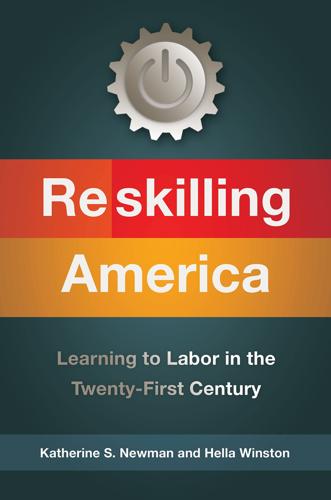
Reskilling America: Learning to Labor in the Twenty-First Century
by
Katherine S. Newman
and
Hella Winston
Published 18 Apr 2016
The undervaluation of the euro, especially relative to the old deutsche mark, artificially depresses the cost of its exports and makes them highly competitive in world markets. They have also insisted on wage moderation in the industrial sector in order to exceed the mandated targets set by the European Union. The country’s specialization in both luxury goods—Mercedes, BMW—and the precision manufacturing that has built Chinese industries and high-speed rail systems around the world is also critical to their national success. None of this would have worked, however, if the Germans had not been able to deploy the world’s most skilled labor force. High quality, efficiency, disciplined delivery—these are the attributes of a national manufacturing system made possible by the investments the country has made in the training of its workers.

The Age of Stagnation: Why Perpetual Growth Is Unattainable and the Global Economy Is in Peril
by
Satyajit Das
Published 9 Feb 2016
The mid-nineteenth-century boom in investment in railways in Western countries generated economic benefits, but few made an adequate financial return, with many going bankrupt. But the specific projects may be inappropriate. China has six of the world's ten longest bridges and the world's fastest train, while 40 percent of villages lack paved roads to the nearest market town. High-speed rail lines in China may provide social returns, raising the quality of life for those who can afford to use them, and they may be appealing to politicians and demagogues advertising Chinese technical proficiency, but investment in improvements to ordinary train lines and rural roads, and a greater focus on safety and more flexible pricing structures may have yielded higher economic benefits.
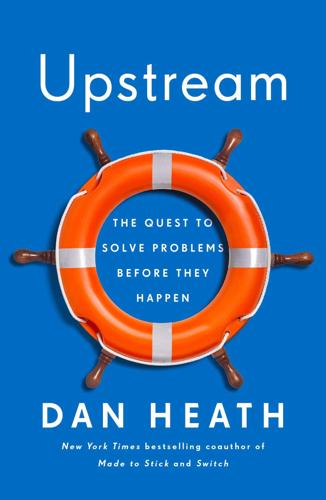
Upstream: The Quest to Solve Problems Before They Happen
by
Dan Heath
Published 3 Mar 2020
In California, a state greenhouse gas reduction program enables companies to buy air-pollution credits as part of a cap-and-trade law, and that money is then redistributed via TCC grants to the communities most impacted by pollution. The state had agreed to allocate $70 million to Fresno. But there was controversy about how it would be spent. “The city wanted all that money to go to the high-speed rail being developed in the state, which starts in Central Valley,” said Sarah Reyes, a former state legislator and a director of communications at the California Endowment. “The community said, ‘No, that money is supposed to go to the most polluted and disenfranchised communities. You can’t take all that money.’ ” Fresno BHC led a series of public meetings to create an alternate proposal.
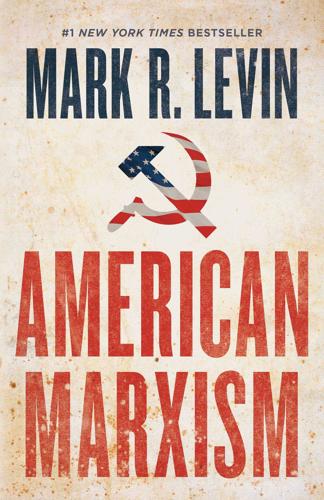
American Marxism
by
Mark R. Levin
Published 12 Jul 2021
It states, in part: Whereas climate change, pollution, and environmental destruction have exacerbated systemic racial, regional, social, environmental, and economic injustices (referred to in this preamble as “systemic injustices”) by disproportionately affecting indigenous communities, communities of color, migrant communities, deindustrialized communities, depopulated rural communities, the poor, low-income workers, women, the elderly, the unhoused, people with disabilities, and youth (referred to in this preamble as “frontline and vulnerable communities”); …Resolved, That it is the sense of the House of Representatives that— (1) it is the duty of the Federal Government to create a Green New Deal— (A) to achieve net-zero greenhouse gas emissions through a fair and just transition for all communities and workers; (B) to create millions of good, high-wage jobs and ensure prosperity and economic security for all people of the United States; (C) to invest in the infrastructure and industry of the United States to sustainably meet the challenges of the 21st century; (D) to secure for all people of the United States for generations to come— (i) clean air and water; (ii) climate and community resiliency; (iii) healthy food; (iv) access to nature; and (v) a sustainable environment; and (E) to promote justice and equity by stopping current, preventing future, and repairing historic oppression of indigenous communities, communities of color, migrant communities, deindustrialized communities, depopulated rural communities, the poor, low-income workers, women, the elderly, the unhoused, people with disabilities, and youth (referred to in this resolution as “frontline and vulnerable communities”); (2) the goals described in subparagraphs of paragraph (1) above (referred to in this resolution as the “Green New Deal goals”) should be accomplished through a 10-year national mobilization (referred to in this resolution as the “Green New Deal mobilization”) that will require the following goals and projects— (A) building resiliency against climate change-related disasters, such as extreme weather, including by leveraging funding and providing investments for community-defined projects and strategies; (B) repairing and upgrading the infrastructure in the United States, including— (i) by eliminating pollution and greenhouse gas emissions as much as technologically feasible; (ii) by guaranteeing universal access to clean water; (iii) by reducing the risks posed by flooding and other climate impacts; and (iv) by ensuring that any infrastructure bill considered by Congress addresses climate change; (C) meeting 100 percent of the power demand in the United States through clean, renewable, and zero-emission energy sources, including— (i) by dramatically expanding and upgrading existing renewable power sources; and (ii) by deploying new capacity; (D) building or upgrading to energy-efficient, distributed, and “smart” power grids, and working to ensure affordable access to electricity; (E) upgrading all existing buildings in the United States and building new buildings to achieve maximal energy efficiency, water efficiency, safety, affordability, comfort, and durability, including through electrification; (F) spurring massive growth in clean manufacturing in the United States and removing pollution and greenhouse gas emissions from manufacturing and industry as much as is technologically feasible, including by expanding renewable energy manufacturing and investing in existing manufacturing and industry; (G) working collaboratively with farmers and ranchers in the United States to eliminate pollution and greenhouse gas emissions from the agricultural sector as much as is technologically feasible, including— (i) by supporting family farming; (ii) by investing in sustainable farming and land use practices that increase soil health; and (iii) by building a more sustainable food system that ensures universal access to healthy food; (H) overhauling transportation systems in the United States to eliminate pollution and greenhouse gas emissions from the transportation sector as much as is technologically feasible, including through investment in— (i) zero-emission vehicle infrastructure and manufacturing; (ii) clean, affordable, and accessible public transportation; and (iii) high-speed rail; (I) mitigating and managing the long-term adverse health, economic, and other effects of pollution and climate change, including by providing funding for community-defined projects and strategies; (J) removing greenhouse gases from the atmosphere and reducing pollution, including by restoring natural ecosystems through proven low-tech solutions that increase soil carbon storage, such as preservation and afforestation; (K) restoring and protecting threatened, endangered, and fragile ecosystems through locally appropriate and science-based projects that enhance biodiversity and support climate resiliency; (L) cleaning up existing hazardous waste and abandoned sites to promote economic development and sustainability; (M) identifying other emission and pollution sources and creating solutions to eliminate them; and (N) promoting the international exchange of technology, expertise, products, funding, and services, with the aim of making the United States the international leader on climate action, and to help other countries achieve a Green New Deal; (3) a Green New Deal must be developed through transparent and inclusive consultation, collaboration, and partnership with frontline and vulnerable communities, labor unions, worker cooperatives, civil society groups, academia, and businesses; and (4) to achieve the Green New Deal goals and mobilization, a Green New Deal will require the following goals and projects— (A) providing and leveraging, in a way that ensures that the public receives appropriate ownership stakes and returns on investment, adequate capital (including through community grants, public banks, and other public financing), technical expertise, supporting policies, and other forms of assistance to communities, organizations, Federal, State, and local government agencies, and businesses working on the Green New Deal mobilization; (B) ensuring that the Federal Government takes into account the complete environmental and social costs and impacts of emissions through— (i) existing laws; (ii) new policies and programs; and (iii) ensuring that frontline and vulnerable communities shall not be adversely affected; (C) providing resources, training, and high-quality education, including higher education, to all people of the United States, with a focus on frontline and vulnerable communities, so those communities may be full and equal participants in the Green New Deal mobilization; (D) making public investments in the research and development of new clean and renewable energy technologies and industries; (E) directing investments to spur economic development, deepen and diversify industry in local and regional economies, and build wealth and community ownership, while prioritizing high-quality job creation and economic, social, and environmental benefits in frontline and vulnerable communities that may otherwise struggle with the transition away from greenhouse gas intensive industries; (F) ensuring the use of democratic and participatory processes that are inclusive of and led by frontline and vulnerable communities and workers to plan, implement, and administer the Green New Deal mobilization at the local level; (G) ensuring that the Green New Deal mobilization creates high-quality union jobs that pay prevailing wages, hires local workers, offers training and advancement opportunities, and guarantees wage and benefit parity for workers affected by the transition; (H) guaranteeing a job with a family-sustaining wage, adequate family and medical leave, paid vacations, and retirement security to all people of the United States; (I) strengthening and protecting the right of all workers to organize, unionize, and collectively bargain free of coercion, intimidation, and harassment; (J) strengthening and enforcing labor, workplace health and safety, antidiscrimination, and wage and hour standards across all employers, industries, and sectors; (K) enacting and enforcing trade rules, procurement standards, and border adjustments with strong labor and environmental protections— (i) to stop the transfer of jobs and pollution overseas; and (ii) to grow domestic manufacturing in the United States; (L) ensuring that public lands, waters, and oceans are protected and that eminent domain is not abused; (M) obtaining the free, prior, and informed consent of indigenous people for all decisions that affect indigenous people and their traditional territories, honoring all treaties and agreements with indigenous people, and protecting and enforcing the sovereignty and land rights of indigenous people; (N) ensuring a commercial environment where every businessperson is free from unfair competition and domination by domestic or international monopolies; and (O) providing all people of the United States with— (i) high-quality health care; (ii) affordable, safe, and adequate housing; (iii) economic security; and (iv) access to clean water, clean air, healthy and affordable food, and nature.66 Milton Ezrati at Forbes rounded up some of the cost estimates for this proposal.
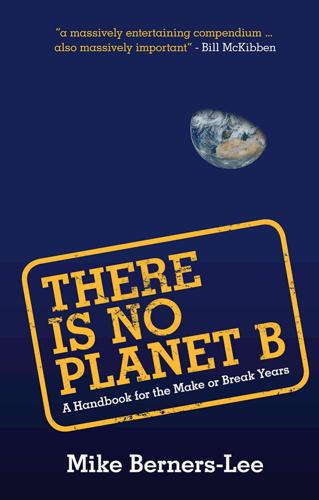
There Is No Planet B: A Handbook for the Make or Break Years
by
Mike Berners-Lee
Published 27 Feb 2019
It is certainly true that aeroplanes are inherently grotty places to spend time no matter what class you fly, what films are available or whatever is on the food and drink menu. But overall, as with arguments our demand for energy will also plateau, I fear the idea that our travel requirements will naturally top out shows a lack of imagination and lack of observation of evidence to the contrary. As I write this, the Chinese are building a high-speed rail link to the UK and Richard Branson is developing space tourism. Meanwhile autonomous cars open up the possibility of endless extra How many travel miles can we get from a square meter of land? 101 journeys, delivering everything you can think of, right down to the kids’ forgotten gym kit, without the natural constraint of human travel time being required.

China's Good War
by
Rana Mitter
As it happens, a number of cases in 2017–2018 in the BRI backyard began to cast doubt on China’s motives, and China may already have lost its opportunity to sell the BRI to the world as an act of generosity, regardless of the analogies used about it. Some observers became nervous about the US$480 million that highly indebted Laos has pledged toward a US$700 million high-speed rail link, with much of the loan financed by the China Export-Import Bank. In Sri Lanka, there was widespread anger when the country took on immense debt to pay for the Hambantota port and could not pay it back; the debt was converted to equity, giving China a ninety-nine-year lease on the port. The specter of countries being lured into long-term indebtedness to China began to create some dissonance that disrupted the harmonious “win-win” scenarios being proposed in China.47 The story of China’s debt diplomacy over the BRI lays bare additional reasons why China may feel uncomfortable with comparisons with the Marshall Plan.

So Me
by
Graham Norton
Published 2 Jan 2005
They had a ticket for later that day. Fuck the rent, the ticket was mine! I left a message for Scott with Stuart, asking him to call me. He rang and we arranged to meet in a bar I knew in the Marais. This weekend was going to be perfect. I had never been on Eurostar before, and that night I learnt a valuable lesson. A high-speed rail link between London and Paris is a great idea, but it is only good if it works. We were delayed for three hours. I sat looking out at a Kent hedge and it dawned on me that in all my romantic spontaneity I had failed to get a phone number or address for Scott in Paris. He would be sitting in a bar assuming that I had got cold feet and wasn’t coming.
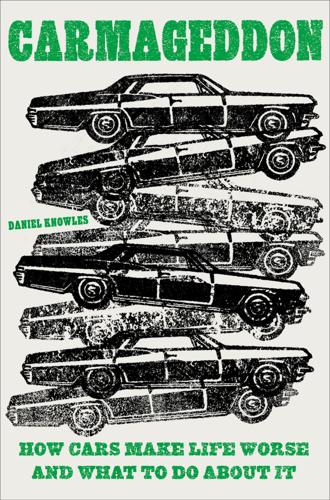
Carmageddon: How Cars Make Life Worse and What to Do About It
by
Daniel Knowles
Published 27 Mar 2023
Even the Communist Party of China, with its relentless focus on raising the living standards of Chinese people to make up for the crushing of their freedom, has realized that there is a limit to the number of people who can realistically own a car before it begins to ruin cities. As Japan did, the Chinese have also, in little more than two decades, built out a high-speed rail infrastructure to make anywhere else in the world envious of, meaning that there are alternatives to owning a car. The Beijing subway now carries four billion passengers a year, or about three times more than the London Underground. The result is that car ownership, which had been rising fast, has stalled at about 200 vehicles per 1,000 people—high for a developing world country, but still far below the levels in Europe or America.

This Changes Everything: Capitalism vs. The Climate
by
Naomi Klein
Published 15 Sep 2014
The stimulus package could have been used to build the best public transit systems and smart grids in the world. The auto industry could have been dramatically reengineered so that its factories built the machinery to power that transition—not just a few token electric cars (though those too) but also vast streetcar and high-speed rail systems across an underserved nation. Just as a shuttered auto parts factory in Ontario had reopened as the Silfab solar plant, similar transitions could have been made in closed and closing factories across the continent. This transformation was proposed at the time by one of the most important intellectuals of the North American labor movement, Sam Gindin, who served for many years as research director for the Canadian Auto Workers Union: If we are serious about incorporating environmental needs into the economy, this means changing everything about how we produce and consume and how we travel and live.
…
On the other hand, when workers in dirty sectors are offered good jobs in clean sectors (like the former autoworkers at the Silfab factory in Toronto), and are enlisted as active participants in a green transition, then progress can happen at lightning speed. The potential job creation is huge. For instance, a plan put forward by the U.S. BlueGreen Alliance, a body that brings together unions and environmentalists, estimated that a $40 billion annual investment in public transit and high-speed rail for six years would produce more than 3.7 million jobs during that period. And we know that investments in public transit pay off: a 2011 study by research and policy organization Smart Growth America found they create 31 percent more jobs per dollar than investment in new road and bridge construction.
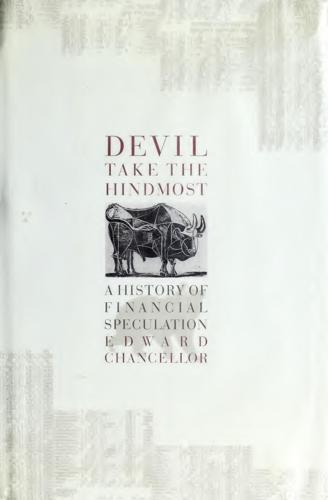
Devil Take the Hindmost: A History of Financial Speculation
by
Edward Chancellor
Published 31 May 2000
It’s not quite that – but Basel’s voters are the most fervently pro-European of all Switzerland’s German-speakers and their enthusiasm for close neighbourly relations has palpably energized the city in recent years, drawing what was formerly an introverted place out of its shell. The success of Basel’s international airport and high-speed rail links to Strasbourg, Paris, Frankfurt and Milan have helped to blow the cobwebs away. Basel is a city rejuvenated. Its historic centre, dominated by the soaring Münster, is definitely worth seeing, but with a long history of banking excellence, a major port on the Rhine – Switzerland’s only outlet to the sea – and the research headquarters of several pharmaceutical multinationals, Basel still cherishes its reputation as one of Switzerland’s wealthiest cities.
…
On one hand, conservative traditions continue to hold sway, including Switzerland’s universal male military conscription – the country is now the only one in Europe to continue this practice, a situation unlikely to change while the SVP holds so much influence. On the other hand, Swiss architecture and design lead the world, and a focus on environmental protection has channelled substantial public investment in high-speed rail to help shift pan-European freight off the roads – with the Gotthard Base Tunnel, at 57km the longest in the world, opening to trans-Alpine rail traffic in 2016. This concern for environmental matters was reflected in the results of the 2019 federal elections, interpreted as a “green wave” after the Green Party of Switzerland and the Green Liberal Party of Switzerland achieved their best-ever results, with major gains.
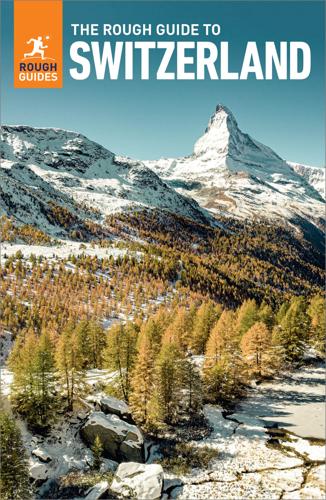
The Rough Guide to Switzerland (Travel Guide eBook)
by
Rough Guides
Published 24 May 2022
It’s not quite that – but Basel’s voters are the most fervently pro-European of all Switzerland’s German-speakers and their enthusiasm for close neighbourly relations has palpably energized the city in recent years, drawing what was formerly an introverted place out of its shell. The success of Basel’s international airport and high-speed rail links to Strasbourg, Paris, Frankfurt and Milan have helped to blow the cobwebs away. Basel is a city rejuvenated. Its historic centre, dominated by the soaring Münster, is definitely worth seeing, but with a long history of banking excellence, a major port on the Rhine – Switzerland’s only outlet to the sea – and the research headquarters of several pharmaceutical multinationals, Basel still cherishes its reputation as one of Switzerland’s wealthiest cities.
…
On one hand, conservative traditions continue to hold sway, including Switzerland’s universal male military conscription – the country is now the only one in Europe to continue this practice, a situation unlikely to change while the SVP holds so much influence. On the other hand, Swiss architecture and design lead the world, and a focus on environmental protection has channelled substantial public investment in high-speed rail to help shift pan-European freight off the roads – with the Gotthard Base Tunnel, at 57km the longest in the world, opening to trans-Alpine rail traffic in 2016. This concern for environmental matters was reflected in the results of the 2019 federal elections, interpreted as a “green wave” after the Green Party of Switzerland and the Green Liberal Party of Switzerland achieved their best-ever results, with major gains.
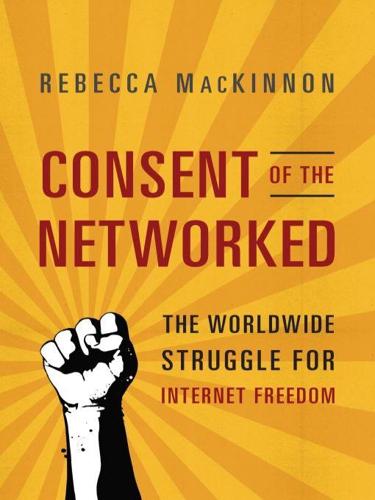
Consent of the Networked: The Worldwide Struggle for Internet Freedom
by
Rebecca MacKinnon
Published 31 Jan 2012
Postings that might contain serious critiques of the whole system, or that call for political reform, are eliminated. Thus the Chinese government can maintain an authoritarian state, while at the same time the Internet enables a high level of lively and even contentious online debate and deliberation, within certain limits. After a July 2011 high-speed-rail crash in the city of Wenzhou that killed at least forty people and injured nearly two hundred, Chinese Internet users were able to use Weibo to tweet a stream of on-the-scene reports as well as critical invective about corruption and malfeasance that contributed to the crash, without the Communist Party’s power being fundamentally threatened.
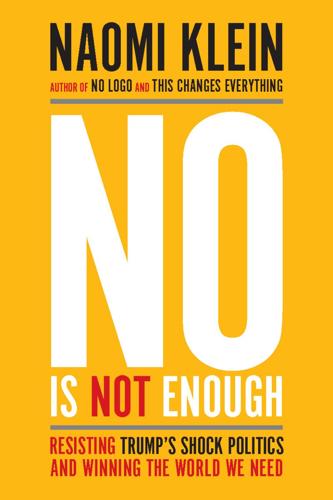
No Is Not Enough: Resisting Trump’s Shock Politics and Winning the World We Need
by
Naomi Klein
Published 12 Jun 2017
We want a universal program to build energy-efficient homes, and retrofit existing housing, ensuring that the lowest-income communities and neighbourhoods will benefit first and receive job training and opportunities that reduce poverty over the long term. We want training and other resources for workers in carbon-intensive jobs, ensuring they are fully able to take part in the clean energy economy. This transition should involve the democratic participation of workers themselves. High-speed rail powered by renewables and affordable public transit can unite every community in this country—in place of more cars, pipelines, and exploding trains that endanger and divide us. And since we know this leap is beginning late, we need to invest in our decaying public infrastructure so that it can withstand increasingly frequent extreme weather events.
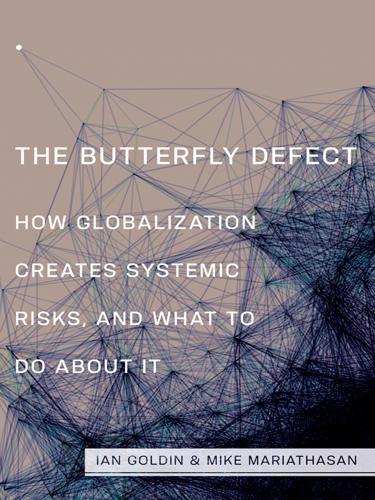
The Butterfly Defect: How Globalization Creates Systemic Risks, and What to Do About It
by
Ian Goldin
and
Mike Mariathasan
Published 15 Mar 2014
See Ian Goldin, Geoffrey Cameron, and Meera Balarajan, 2011, Exceptional People: How Migration Shaped Our World and Will Define Our Future (Princeton, NJ, and Oxford, UK: Princeton University Press). 12. See Stephen Castles and Mark J. Miller, 2009, The Age of Migration: International Population Movements in the Modern World (New York: Palgrave Macmillan). 13. Goldin, Cameron, and Balarajan, 2011, 58–63, 85–96, and Castles and Miller, 2009, 2. 14. Many more high-speed rail links are forecast for Asia, Latin America, Eastern Europe, the Middle East, North Africa, and Australia. See UIC (International Union of Railways), 2010, High Speed around the World, 15 December (Paris: High Speed Department, International Union of Railways). 15. In 2010 world container port traffic stood at 538 million TEUs.
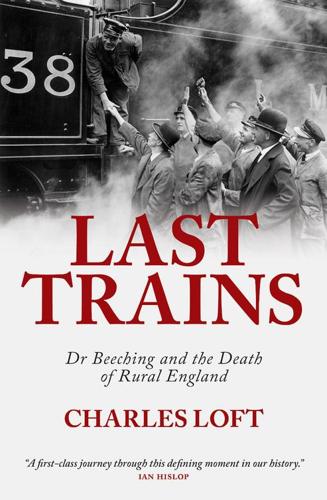
Last Trains: Dr Beeching and the Death of Rural England
by
Charles Loft
Published 27 Mar 2013
Whether or not this made any difference to the size of the network, subsidy became a badge of failure rather than an income earned. As a consequence, the level of subsidy tended to equate to the level of government dissatisfaction with railway management and this in turn consistently influenced the political willingness to invest in the rail network, even though the case for investing in, for example, high-speed rail services might have nothing to do with the reasons for increases in subsidy. While investment levels picked up from 1969, they stabilised in the mid-1970s at an unsustainably low level. This owed much to the enduring Whitehall folk memory of the Modernisation Plan, but official scepticism had been reinforced by the failure of every subsequent plan to deliver the promised results and continued to be reinforced by failings on the railways’ part.
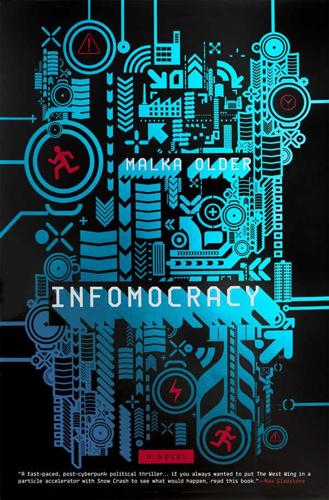
Infomocracy: A Novel
by
Malka Older
Published 7 Jun 2016
The same reasons that made it safe made it useless: the people he talked to were callused old farmers and fishermen who believe the election is local and vote for whatever party co-opts their traditional leaders. He tried to suggest to them that the Supermajority was important, that it could be their centenal that decided it, but it wasn’t even that they disbelieved him. They just didn’t care. In Akita, he rented a mini-motor and crossed Honshu to the eastern coast, following the old high-speed rail tracks that cut straight across the country until his maximum-utility path deviated from them and he had to pull off onto narrow, well-maintained roads in what was clearly the middle of nowhere. Sure, it’s not one of those centenals in the Gobi Desert or the Australian Outback where the hundred thousand citizens are scattered over hundreds of empty miles.
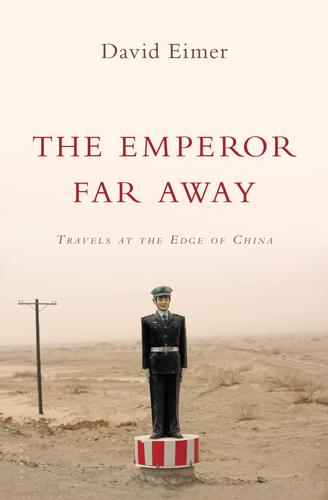
The Emperor Far Away: Travels at the Edge of China
by
David Eimer
Published 13 Aug 2014
Some Han mutter darkly about the influx of Burmese, claiming they are responsible for much of the crime in the city. Given Ruili’s perennially seedy reputation, I regarded that as wishful thinking. Jade apart, Ruili is also being trumpeted as a future holiday destination, the authorities pointing to yet another of the projected high-speed rail lines that will run from Kunming to Yangon via Ruili. But I doubted that Ruili was on the cusp of a tourist boom, or would ever be. Until as late as the 1960s, the area that is now Dehong Prefecture was regarded with dread by the Han, a malarial morass of a land populated by largely unknown and unfriendly minorities.

Streetfight: Handbook for an Urban Revolution
by
Janette Sadik-Khan
Published 8 Mar 2016
Never lines of cars. Certainly no people walking or biking. And fast, reliable, or demand-based buses would truly be science fiction or a doomed ride, like Keanu Reeves in Speed. A dazzling transit dream for many cities still conjures images of a modern, driverless metro, high-speed monorails, and maybe high-speed rail or hyperloop connecting major cities. In The Simpsons, a shyster sells the residents of Springfield on a monorail system before absconding with the city’s money. What is it about monorails that prompts people to bring them up in community meetings as potential panaceas for transportation problems?
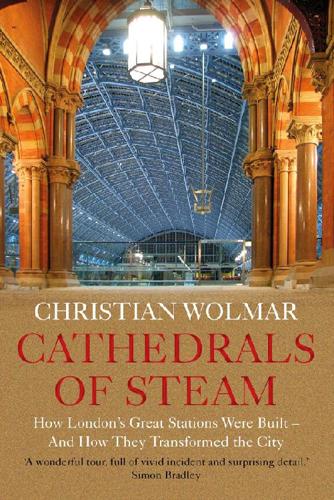
Cathedrals of Steam: How London’s Great Stations Were Built – and How They Transformed the City
by
Christian Wolmar
Published 5 Nov 2020
Given that the French were our allies in that conflict, it is ironic that the station itself was named after an earlier victory against our near neighbours. Indeed, it might have benefited the Entente Cordiale if the station had been renamed, especially as in the 1990s Waterloo became the London terminus for Eurostar trains for the first ten years of international high-speed rail services. The Victory Arch, the work of the London & South Western’s chief architect, James Robb Scott, is a strange amalgam of triumphalism and pacifism. It features on the left, with the inscription ‘1914’, Bellona, the goddess of war, looking wild and angry, carrying a flaming torch and an unsheathed sword ready to reap death and destruction, while on the other side, above ‘1918’, is a figure of peace enthroned on the earth and holding a palm branch.
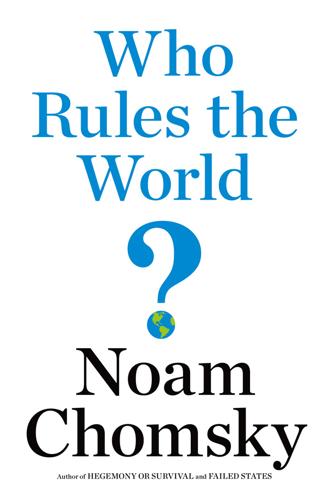
Who Rules the World?
by
Noam Chomsky
China is constructing a modernized version of the old silk roads, with the intent not only of integrating the region under Chinese influence, but also of reaching Europe and the Middle Eastern oil-producing regions. It is pouring huge sums into creating an integrated Asian energy and commercial system, with extensive high-speed rail lines and pipelines. One element of the program is a highway through some of the world’s tallest mountains to the new Chinese-developed port of Gwadar in Pakistan, which will protect oil shipments from potential U.S. interference. The program may also, China and Pakistan hope, spur industrial development in Pakistan, which the United States has not undertaken despite massive military aid, and might also provide an incentive for Pakistan to clamp down on domestic terrorism, a serious issue for China in western Xinjiang Province.

The Big Nine: How the Tech Titans and Their Thinking Machines Could Warp Humanity
by
Amy Webb
Published 5 Mar 2019
It is pressuring foreign governments in another long-term national scheme called the Belt and Road Initiative, an ambitious foreign policy that gives the 2,000-year-old Silk Road route a 21st-century update. China is spending $150 billion a year in 68 countries to upgrade infrastructure like roads, high-speed rails, bridges, and ports. This will make it difficult for one of those countries to escape the policy and economic influence wielded by Beijing during a time in which America has retreated inward. As the pendulum swung between uncertainty and turmoil within the Trump administration, President Xi established China as a fulcrum of stability.
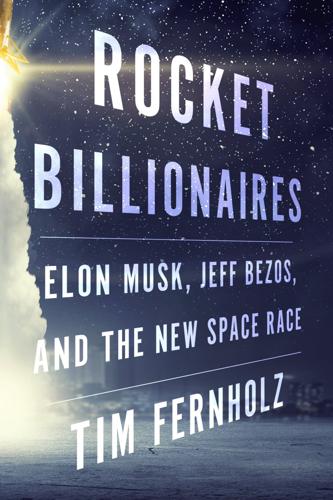
Rocket Billionaires: Elon Musk, Jeff Bezos, and the New Space Race
by
Tim Fernholz
Published 20 Mar 2018
In June 2017, he explored that gap in Washington, DC, at a conference dedicated to the scientific and commercial use of the International Space Station. The ISS, the football-field-size orbital laboratory that flies 249 miles above the equator, is the most expensive single object ever constructed by humans, at a cost of more than $150 billion. Humans have spent more money building out China’s entire high-speed rail system ($300 billion) and developing thousands of US Joint Strike Fighter aircraft ($400 million), but the ISS stands alone as humanity’s singular frontier outpost. Astronauts have maintained a continuous human presence in space there since 2000, performing valuable research in microgravity. Developing, building, and servicing the station was NASA’s primary human space exploration effort in the 1990s and 2000s.

Thinking About It Only Makes It Worse: And Other Lessons From Modern Life
by
David Mitchell
Published 4 Nov 2014
Isambard Kingdom Brunel’s house It is one of the most shaming truths about our barbarous age that, while much of the great art, architecture and literature of the past may have survived, so few of the normal houses in which those works were devised have been saved for posterity. This is the house where genius lived – where Brunel worked, designed, fretted. And it’s threatened with demolition to make way for a high speed rail link. Only Unesco can save it now. The smell of cabbage at Butlins Skegness As fragile as the Sphinx’s face, as transient as the northern lights, as disconcertingly faecal as Seahenge, this irreplaceable part of our gaseous heritage is literally in danger of being blown out to sea. As Butlins struggles to modernise, introducing climbing walls and a Costa, the great bubbling pots of institutionalised holiday food have long since fallen silent.

Green and Prosperous Land: A Blueprint for Rescuing the British Countryside
by
Dieter Helm
Published 7 Mar 2019
Ultimately, none of them works unless there is a natural environment to support them. This creates a big problem for the application of crude cost–benefit analysis. Take HS2. It makes little sense to calculate the costs and benefits of the link between Birmingham and London without including the rest of the high-speed rail network to the north. Similarly, whether or not HS2 is connected to HS1, and hence the main European cities, makes a big difference to the potential benefits in the cost–benefit calculation.6 Carried across to the natural environment, these problems arise because the environment comes in ecosystems.

The Trains Now Departed: Sixteen Excursions Into the Lost Delights of Britain's Railways
by
Michael Williams
Published 6 May 2015
We’re over the Dartford Crossing in a trice and soon the orchards of Kent pass by at 186 mph in a blur of apple blossom. A delicious meal is in prospect, provisioned by Waitrose, the official caterer to the English middle classes. Could there be a more desirable way to get to Paris than aboard this marvel of high-speed rail technology – fast, efficient, super-smooth, connecting the capitals of England and France in just over two hours? And with all the comforts of Middle England. But for all the slickness, there’s something indefinable missing. Aboard these silky Class 373 Eurostar trains it’s easy to nod off – no more perfect opportunity than in the blackness of the Channel Tunnel.

MegaThreats: Ten Dangerous Trends That Imperil Our Future, and How to Survive Them
by
Nouriel Roubini
Published 17 Oct 2022
As Western institutions scrambled to stay viable, China offset a drop in exports by making infrastructure and property investment a priority. Borrowing ballooned and real estate prices climbed as Chinese families embraced private homeownership. New cities materialized in record time, connected by high-speed rail and more miles of expressway than the United States can claim. Old cities modernized without delay. Graham Allison likes to recall the emblematic saga of repairs to a two-lane bridge in his hometown of Cambridge, Massachusetts. After four years and repeated delays, repairs cost three times over the original budget.
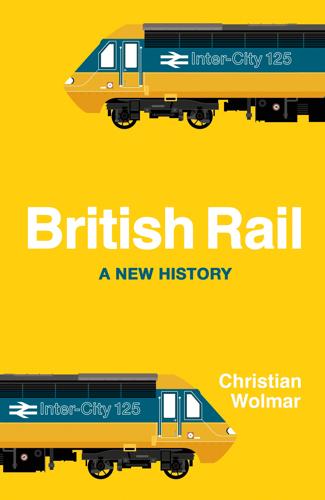
British Rail
by
Christian Wolmar
Published 9 Jun 2022
In 1975, soon after Labour had returned to government, Hall and a fellow academic were commissioned by the Department of the Environment to carry out an examination of converting six railway lines in the East of England. Their report, published in 1976, assessed the cost of transforming each of these lines, but the figures were so dubious that the department refused to publish the paper, and Hall, who later, oddly, became a fan of high-speed rail, had to seek charitable funding to pay for its publication. Richard Marsh, BR’s chairman at the time, was amusingly dismissive: This was a fatuous idea. The buses would need to run very close together at high speeds to provide capacity equal to that of a train. After they had been running for a few months, they would be so close together they could be linked and then all one would have to do would be to remove the drivers apart from the front one and hey presto, at vast public expense, Reading University would have reinvented the train.1 Even then the idea refused to die.
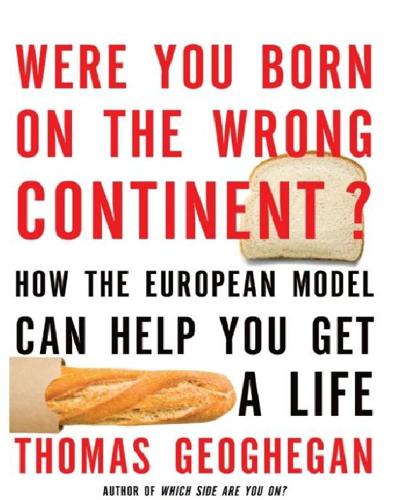
Were You Born on the Wrong Continent?
by
Thomas Geoghegan
Published 20 Sep 2011
Yes, in the twenty-first century, thanks to cheap travel, on top of e-mails, cell phones, the EU is becoming not just a single nation but a single mall. A Spanish kid can do a “start-up” in Dublin. An Irish kid can have his wedding in Madrid. If Europe is uniting “constitutionally,” if Europeans are voting in a new constitution with their feet via high-speed rail and the like, the U.S. is disuniting “constitutionally” when we’re sitting in gridlock, when it gets harder and harder to get from here to St. Louis. Our constitutional scholars should pay more attention to what army people call the “facts on the ground.” With no Henry Clay pushing a U.S.-type Eurostar, when the Obama stimulus just goes toward resurfacing the clogged roads, it’s harder each year to get from A to B, from Chicago to St.
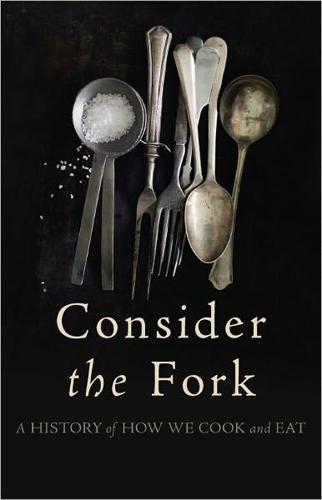
Consider the Fork: A History of How We Cook and Eat
by
Bee Wilson
Published 14 Sep 2012
There continued to be innovations in jack design, long after you might have expected to see the last of them. In 1845, a Mr. Norton took out a patent for a spit propelled electrically with the aid of two magnets, a strange clash of old and new technology. Over Victoria’s century, Britain entered the age of gas lighting, high-speed rail travel, flushing toilets, and telephones; and still many people chose to have their meat cooked before a roaring fire. As late as 1907, the Skinners Company in London had an eleven-foot-wide roasting range installed in their Guild Hall kitchen. The prejudice against closed-off cooking ranges was largely that they seemed too much like bread ovens.

Is That a Fish in Your Ear?: Translation and the Meaning of Everything
by
David Bellos
Published 10 Oct 2011
They are not trying to change anything—whereas when we repeat something without translating it, we usually intend to make some small or large difference to it. Here’s a tiny example of the kind of changes translators make in order not to change anything much at all. In the multilingual “in-flight magazine” supplied to travelers on the Eurostar train, a page is devoted to graphics demonstrating the size and achievements of the whole enterprise of high-speed rail through the Channel Tunnel. One of the bubbles features “334.7 km/h,” which is glossed in English as “The record breaking top speed (208 mph) a Eurostar train reached in July 2003 when testing the UK High Speed 1 Line.” It is followed by the following French text: Le record de vitesse d’un train Eurostar établi en juillet 2003 lors du test d’une ligne TGV en Grande-Bretagne.
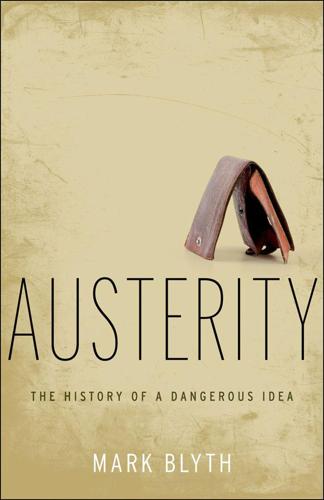
Austerity: The History of a Dangerous Idea
by
Mark Blyth
Published 24 Apr 2013
Yet, of all the PIIGS, only Greece was in any meaningful sense profligate. Italy may have been lax, but no one minded them having the third-largest bond market in the world until 2010, when contagion plus demographics gave pause to the holders of Italian debt. Portugal may have spent a fair amount on modernizing its infrastructure and built a few high-speed rail lines of dubious need, but it was hardly spending its way to oblivion. Ireland and Spain were quintessential private-sector-housing-cum-banking crises, governed by states more fiscally prudent than Germany, where the risks were socialized while the profits were privatized. In all cases, private-sector weaknesses ended up creating public-sector liabilities that European publics now have to pay for with austerity programs that make the situation worse rather than better.
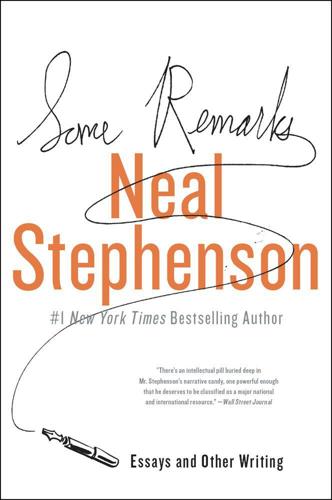
Some Remarks
by
Neal Stephenson
Published 6 Aug 2012
Hence the Hieroglyph project, an effort to produce an anthology of new SF that will be in some ways a conscious throwback to the practical techno-optimism of the Golden Age. CHINA IS FREQUENTLY CITED AS A COUNTRY THAT IS NOW EXECUTING ON BIG STUFF, and there’s no doubt that they are constructing dams, high-speed rail systems, and rockets at an extraordinary clip. But those are not fundamentally innovative. Their space program, like all other countries’ (including our own), is just parroting work that was done 50 years ago by the Soviets and the Americans. A truly innovative program would involve taking risks (and accepting failures) to pioneer some of the alternative space launch technologies that have been advanced by researchers all over the world during the decades dominated by rockets.
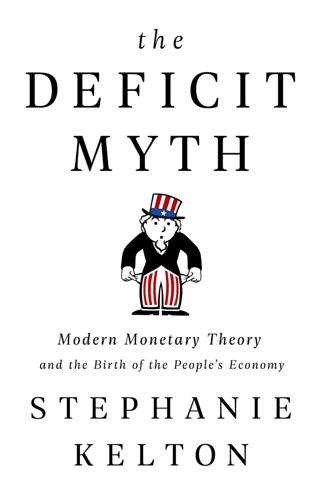
The Deficit Myth: Modern Monetary Theory and the Birth of the People's Economy
by
Stephanie Kelton
Published 8 Jun 2020
Simply put, we can do much more than what we are doing now. Carrying a grade of D+ is disgraceful for a nation that strives for greatness. We need to retrofit businesses and homes with sustainable sources of energy; build affordable housing for all our people; repair structurally deficient bridges; blanket the nation with high-speed rail; fix our airports; shore up our levees, dams, sewage, and water systems; and more. Building this infrastructure will increase our convenience, save lives, boost the nation’s long-term productivity, and increase equality of opportunity—not to mention provide many of the good-paying jobs needed to close the jobs deficit.
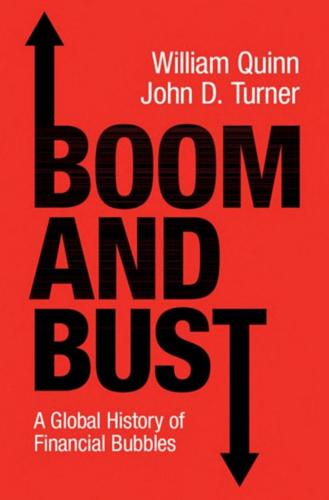
Boom and Bust: A Global History of Financial Bubbles
by
William Quinn
and
John D. Turner
Published 5 Aug 2020
In an attempt to cash in on excitement about new technology, 80 listed companies changed their name in the first 5 months of 2015 to give themselves more of a hi-tech aura.36 For example, Kemian Wood Industry shifted from wooden floors to online gaming and was rebranded as Zeus Entertainment.37 It was later accused of fabricating stories in order to inflate its share price. Similarly, a hotel was rebranded as a high-speed rail network, a ceramics manufacturer as a clean-energy company and a fireworks manufacturer as a peer-to-peer lender. The first indication that the bubble would soon burst came on 28 May, when the Shanghai market fell by 6.5 per cent, its largest 1-day fall in 15 years, and the Shenzhen market fell by 5.5 per cent.

Reset
by
Ronald J. Deibert
Published 14 Aug 2020
But the crisis also provided an opportunity for climate change denialists to propagate disinformation, and for misinformed speculation to swarm and compete for people’s precious attention.97 Conspiracy theories circulated across social media, claiming bushfires were deliberately lit to clear a path for a high-speed rail line down Australia’s east coast, that they were the work of Islamic State militants, that they were caused by Chinese billionaires using lasers to map out new construction projects, or that they were lit by eco-terrorists trying to spur action on climate change.98 At least one prominent politician bought into it all.99 Speaking in the U.K.
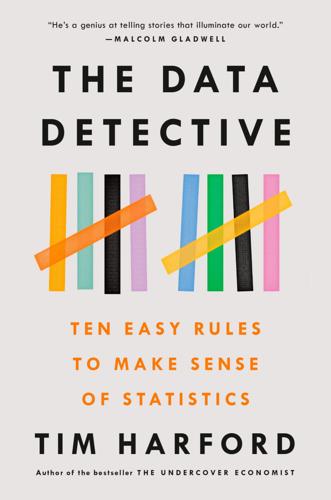
The Data Detective: Ten Easy Rules to Make Sense of Statistics
by
Tim Harford
Published 2 Feb 2021
Applying the same rigorous test to other approaches—for example, giving microentrepreneurs small cash payments along with advice from a mentor—finds that the cash-and-mentor scheme is more likely to boost the income from these tiny businesses than providing loans would.14 Statistical evidence can feel dry and thin. It doesn’t touch us in the same memorable and instinctive way as our personal experience. Yet our personal experience is limited. My trip to China took in tourist spots, airports, and high-speed rail links. It would be a serious mistake to believe I saw everything that mattered. There is no easy answer to the balance between the bird’s-eye view and the worm’s-eye view, between the broad and rigorous but dry insight we get from the numbers and the rich but parochial lessons we learn from experience.
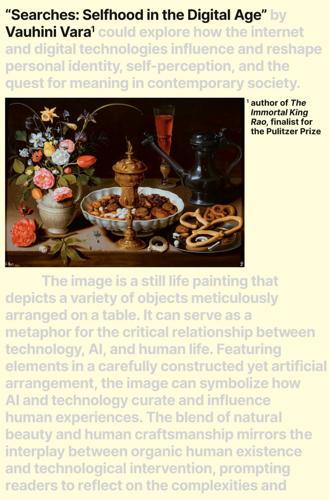
Searches: Selfhood in the Digital Age
by
Vauhini Vara
Published 8 Apr 2025
this way of life can’t continue, in order to survive we need new forms of living together. nothing about our world is fixed or final. perhaps the most powerful thing about humans is what happens when they organize. we have more power as a collective than we realize. people will try to make the world better. a robust high speed rail network in the United States remains possible, despite the overwhelming evidence that we won’t do it. we can abolish prisons and the police. we could have socialism in this lifetime! we could have affordable housing! free healthcare! we can change our current systems if enough people just dare to imagine and practice life giving ways.

Markets, State, and People: Economics for Public Policy
by
Diane Coyle
Published 14 Jan 2020
Mega-project Cost Overruns Project Cost overrun (%) Suez Canal, Egypt 1,900 Scottish Parliament Building, Scotland 1,600 Sydney Opera House, Australia 1,400 Montreal Summer Olympics, Canada 1,300 Concorde supersonic airplane, UK, France 1,100 Troy and Greenfield Railroad, USA 900 Excalibur smart projectile, USA, Sweden 650 Canadian Firearms Registry, Canada 590 Lake Placid Winter Olympics, USA 560 Medicare transaction system, USA 560 Bank of Norway headquarters, Norway 440 Furka Base Tunnel, Switzerland 300 Verrazano Narrows Bridge, USA 280 Boston’s Big Dig Artery/Tunnel project, USA 220 Denver International Airport, USA 200 Panama Canal, Panama 200 Minneapolis Hiawatha light rail line, USA 190 Humber Bridge, UK 180 Dublin Port Tunnel, Ireland 160 Montreal Metro Laval extension, Canada 160 Copenhagen Metro, Denmark 150 Boston–New York–Washington railway, USA 130 Great Belt Rail Tunnel, Denmark 120 London Limehouse Road Tunnel, UK 110 Brooklyn Bridge, USA 100 Shinkansen Joetsu high-speed rail line, Japan 100 Source: Bent Flyvbjerg, 2014. Box 7.6. User fees User fees or charges are increasingly seen as a means not only of creating a suitable incentive for private contractors involved in infrastructure projects to ensure they deliver a high-quality product on time and on budget, but also of bringing much needed funding for new infrastructure investment when government budgets are being squeezed.

Boom: Bubbles and the End of Stagnation
by
Byrne Hobart
and
Tobias Huber
Published 29 Oct 2024
Holding his head, Musk said, “I’m trying to figure out how we get humanity to Mars with all this bullshit.” Later, he added, “This is how civilizations decline. They quit taking risks. And when they quit taking risks, their arteries harden. Every year there are more referees and fewer doers. That’s why America could no longer build things like high-speed rail or rockets that go to the Moon. When you’ve had success for too long, you lose the desire to take risks.” 131 We need to cultivate and catalyze boldness and exuberant risk-taking, stop the decline Musk deplored, and find a way to channel our thymotic energies into something radically new.
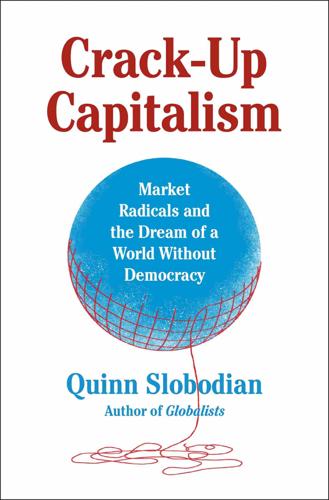
Crack-Up Capitalism: Market Radicals and the Dream of a World Without Democracy
by
Quinn Slobodian
Published 4 Apr 2023
Instead of democratic capitalism flowing outward from a Western source, they saw a more efficient, nondemocratic form of capitalism, perfected in Asia, rolling westward to revive the “sclerotic European race.”17 Instead of regarding places like China as monoliths, they saw them as patchworks of law, status, and access—a model of “fragmented authoritarianism.”18 As China oriented its economy to global trade since the 1970s, it used zones to subdivide the nation. By the 2010s, it was also creating zones far from its own territory. Under the Belt and Road Initiative, launched in 2013, China funded infrastructure stretching from its own borders through chains of zones, reaching out to Turkey, Kenya, and beyond. A high-speed rail line was built running through Laos and Cambodia and down the Malay Peninsula to Singapore.19 The Belt and Road Initiative bought the Greek port of Piraeus, in Athens, and funded outposts in the London Docklands. Chinese companies took over the Djibouti harbor from Dubai’s DP World, and spent $4 billion on a railway connecting Djibouti to the much larger Ethiopia, a country of a hundred million next door.20 China also built a military base in Djibouti, its first one overseas, alongside the bases of France, Japan, and the United States.21 In Sri Lanka, a Chinese company signed a ninety-nine-year lease for a deepwater port and invested in an adjacent “Port City” the size of Central London.22 In El Salvador, a Chinese conglomerate proposed a series of zones that would involve a hundred-year lease on one-sixth of the country’s territory.23 Although proceeding in an often haphazard and unplanned way, the Chinese government and Chinese corporations were establishing enclaves that resembled the concessions imposed on them a century and a half earlier.24 “You could say that these Chinese companies are like the British East India Company of our days,” said one diplomat after China signed a long-term lease for a port in the Solomon Islands.
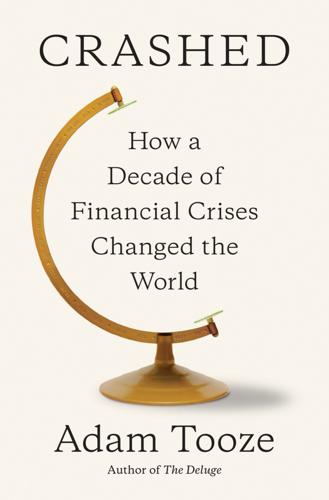
Crashed: How a Decade of Financial Crises Changed the World
by
Adam Tooze
Published 31 Jul 2018
The economic crisis . . . opened a window in which a more aggressive fiscal approach to social policy has become possible.”18 The gigantic surge in stimulus spending also paid for what is perhaps the most spectacular infrastructure project of the last generation anywhere in the world, the construction of China’s high-speed rail network (HSR). In the first phase of Chinese growth, priority had been given to motorization and highway construction. Now rail came to the fore. After “borrowing” technology from the pioneers of HSR—Japan, Germany and France—China embarked on a program that dwarfed all previous efforts. Between 2008 and 2014 the network of rail lines suitable for traffic at speeds of 250 kilometers per hour or more was expanded from 1,000 kilometers to 11,000 kilometers.
…
See credit default swaps (CDS) CDU, 97, 113, 287, 329, 430, 512, 534 Central Document No. 18 (Chinese Communist Party), 243–44, 247 central banks Asian central bank swap arrangements, 483 dollar reserves of Europeans, 89–90 ECB swap lines with Sweden and Denmark, 229–30 Fed swap lines provided to, 9–10, 11–12, 210–15, 220–21 independence of, 10–11 temporary bilateral swap arrangements converted to standing arrangements, 482–83 See also Bank of England; European Central Bank (ECB); Federal Reserve; specific central banks centrist liberalism, 17, 18, 20, 25, 37, 278, 291, 295, 348, 351, 353, 445, 451, 459, 533, 535 Chaffetz, Jason, 392 Chamber of Commerce, American 469, 572 Chapel Funding LLC, 75 Cheney, Dick, 36 China, 4, 30–32, 118, 137, 600–607, 609, 611 allows currency to appreciate, 39–40 calls for new Bretton Woods arrangement, 266–68 consumption-boosting measures, 246–47 domestic investment of, 242 Eurogroup-Syriza debt restructuring confrontation and, 524 exchange rate 32, 33–34, 601–3 financial crisis of 2008 and, 7, 242–54 fiscal stimulus plan, 243–46, 247–51 foreign currency reserves of, 33–34, 602, 605–6 global trade collapse and, 242 growth of, 31–32 GSE exposure of, 73, 239, 240–41 health insurance expansion by, 244–45 high-speed rail network construction, 245 trade balance of, 33, 75, 241–42, 253-54 joins WTO, 31 military spending of, 252–53 PBoC, 249, 267, 543, 600, 612 reserves of, 604, 612 Russia and, 509 sovereign wealth fund of, 35 unemployment in, 242–43 US Treasury purchases of, 30, 241, 392 yuan panic of 2015, 601–8 China Construction Bank, 249 CHOICE Act, 588–90 Chopra, Ajai, 364, 368, 382–83 Chrysler, 157–58, 449 Citigroup, 54, 55, 59–60, 60, 69, 73, 88, 170, 292, 316 bonuses paid by, 306 breakup of, considered by Obama administration, 295–96 capital injections, 197, 199 exits TARP program, 300 liquidity provided to, 207, 209, 217 stress test of, 299–300 City of London, 6, 79, 80–84, 540–45 Brexit and, 549, 550, 556 financial crisis of 2008 and, 541 passporting agreements and, 548–49, 558 post-crisis state of financial industry in, 541–42 renmimbi trading in, 542–43 transatlantic financial system, role in, 79–84 Clinton, Bill, 25, 29 Clinton, Hillary, 486, 565–66, 567–68, 577 Clinton administration budget deficits inherited by, 27, 29 Chinese entrance into WTO and, 31 deregulation under, 68, 82 legacy of, for Democrats, 25–27, 29, 36–37, 199–201, 281, 284 relations with European centerists, 98 Club for Growth, 174 CMOs.
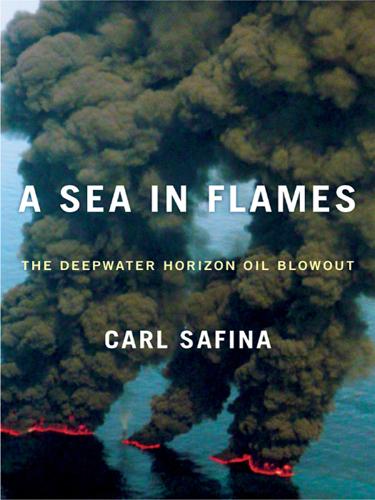
A Sea in Flames: The Deepwater Horizon Oil Blowout
by
Carl Safina
Published 18 Apr 2011
Multinational corporations have strangled innovation in its crib. Killed all our first-born ideas and sent the entrepreneurs who could have saved us fleeing to places like China. China understands its moment. Today China is rapidly becoming the world’s leader in wind and solar energy, electric cars, and high-speed rail. It’s also the world’s greatest lender of money to the United States; we have yoked ourselves to interest payments to the world’s biggest totalitarian government, while forking over union jobs, technological leadership, and the American Dream. It’s been said that empires are not destroyed from the outside; they commit suicide.

What's Next?: Unconventional Wisdom on the Future of the World Economy
by
David Hale
and
Lyric Hughes Hale
Published 23 May 2011
There is little doubt that it is the latter for a number of reasons, which include: • The fact that the momentum of exports to the developed world is unlikely to continue at the blistering pace of 2000–2010, whether because of higher base effects or weaker Western currencies and demand. • The fact that “hard” infrastructure spending will lose steam, if only because a lot of the obvious infrastructure build-out (for example, China’s highways, high-speed rail lines, etc.) will soon be coming to completion. • Most importantly, the fact that the era of cheap labor is now squarely behind us. This means that, unlike what we witnessed from 2000 to 2010, any future spending on infrastructure, whether by the government or entrepreneurs, can no longer be funded by squeezing labor.
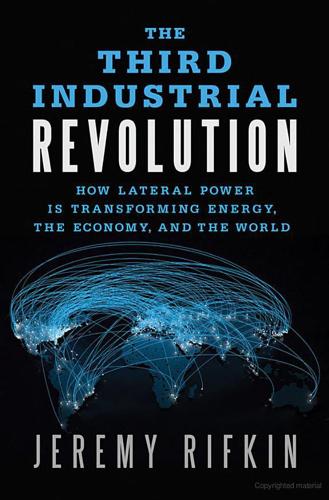
The Third Industrial Revolution: How Lateral Power Is Transforming Energy, the Economy, and the World
by
Jeremy Rifkin
Published 27 Sep 2011
Like the Channel Tunnel that connects the United Kingdom to Europe, the new tunnel would carry passengers and freight between Europe and Africa, bringing the two continents together in a single logistics grid. Discussions are also underway between Russia and the United States to construct a sixty-four-mile tunnel under the Bering Strait, linking Siberia and Alaska, for an estimated cost of between $10 and $12 billion. The tunnel will feature a high-speed rail system to link Eurasia and the Americas for commerce, trade, and tourism, creating a connected, land-based logistics network that stretches three quarters of the way around the world—from London to New York.2 The tunnel will serve a dual purpose, allowing both continents to share electricity harnessed from the vast amount of renewable energy in Siberia and Alaska.

Whole Earth Discipline: An Ecopragmatist Manifesto
by
Stewart Brand
Published 15 Mar 2009
According to a report in 2007 by the infrastructure consultants Booz Allen Hamilton, “Over the next 25 years, modernizing and expanding the water, electricity, and transportation systems of the cities of the world will require approximately $40 trillion.” What would infrastructure totally rethought in Green terms look like? China is currently building 170 new mass transit systems. High-speed rail is finally coming to the United States. With the coming of “smart grids” and microgrids, the distribution of electricity will be reshaped toward greater adaptability as well as efficiency. As climate change unfolds, cities will be on the frontier of human response. Taking the danger zone as 30 feet above sea level, a Columbia University study reported in Science says that two thirds of all cities with a population over 5 million are “especially vulnerable” to rising sea levels and “weather oscillations.”

An Extraordinary Time: The End of the Postwar Boom and the Return of the Ordinary Economy
by
Marc Levinson
Published 31 Jul 2016
Attitudes toward huge government-funded projects and state-owned industries were not matters of right and left in France; all major political philosophies shared a commitment to dirigisme, the direction of economic affairs by highly trained and well-informed state officials. While Giscard described himself as a conservative who liked change, he was wildly enthusiastic about the state’s role in building France’s first high-speed rail line, a fleet of nuclear power plants to reduce dependence, and Minitel, a video-text terminal that was installed in millions of French homes. Such projects reinforced France’s prestige as a leader in advanced technology, but they did almost nothing to boost employment: France’s working-age population grew nearly 1 percent per year between 1974 and 1981, but the number of people with jobs rose hardly at all.
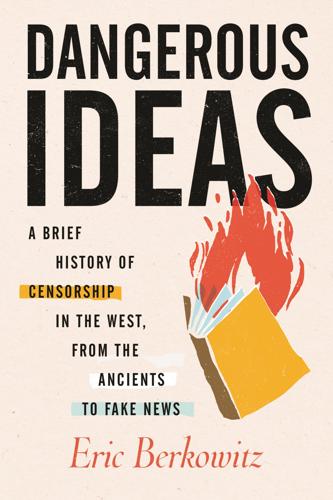
Dangerous Ideas: A Brief History of Censorship in the West, From the Ancients to Fake News
by
Eric Berkowitz
Published 3 May 2021
The following year, the spiritual-practice organization Falun Gong used email and cell phones to organize a large surprise demonstration outside the Communist Party’s main compound. The gathering precipitated a severe persecution of Falun Gong and a new determination to control the Internet.96 In 2011, after the Chinese government locked down reports about a horrific high-speed rail crash, Weibo, a Chinese version of Twitter, lit up with photos of the wreckage and howls of outrage about bad planning and a cover-up of deadly mistakes.97 The Weibo mobilization led to a rare moment of accountability for Chinese authorities, but Weibo’s brief period as a platform for discussion and dissent—as well as any semblance of free speech on Chinese platforms—ended with Xi Jinping’s accession to power in 2012.

City on the Verge
by
Mark Pendergrast
Published 5 May 2017
Gravel proposed that a “Belt Line” loop of streetcars—modeled on those of Portland, Oregon—form part of a public transit solution to Atlanta’s woes. He hoped that Atlanta would follow the “Paris model,” which had layers of public transit for different needs: the metro and buses served central Paris, the RER brought in suburban commuters, the SNCF trains connected to other French cities, and the TGV provided high-speed rail to larger cities in France and elsewhere in Europe. “The Belt Line must be connected to new rail lines, new bus routes, and a broader dedication to public transportation and urban ecology.” Ryan Gravel’s sketch of the proposed Belt Line from his 1999 thesis He then provided detailed plans for the BeltLine loop, including forty-five streetcar stops spaced about a third of a mile apart.

Lonely Planet Best of Spain
by
Lonely Planet
Published 1 Nov 2016
In addition to the options listed below, two or three TGV (high-speed) trains leave from Paris-Montparnasse for Irún, where you change to a normal train for the Basque Country and on towards Madrid. Up to three TGVs also put you on track to Barcelona (leaving from Paris Gare de Lyon), with a change of train at Montpellier or Narbonne. For more information on French rail services, check out the SNCF (www.voyages-sncf.com) website. There are plans for a high-speed rail link between Madrid and Paris. In the meantime, high-speed services travel via Barcelona. These are the major cross-border services: Paris to Madrid (€118 to €187, 9¾ to 12½ hours, eight daily) The slow route runs via Les Aubrais, Blois, Poitiers, Irún, Vitoria, Burgos and Valladolid. The quicker route goes via the high-speed AVE train to Barcelona and change from there.

The Iron Cage: The Story of the Palestinian Struggle for Statehood
by
Rashid Khalidi
Published 31 Aug 2006
This would involve a string of separate Palestinian cantons which would be constricted by the presence all around them of these very “settlement blocs” George W. Bush had just recognized as irreversible realities. “Contiguity” would be assured by linkages between separate isolated Palestinian cantons via tunnels and bridges, and perhaps a high-speed rail link.52 The net effect of such a policy might be to enable Israel to settle in and annex the choicest sections of the West Bank, while leaving the remaining scraps for the Palestinians to call a “state” should they and others so choose. It is true that on May 26, 2005, during the first visit to Washington by the new Palestinian president, Mahmoud Abbas, President Bush stated that any changes in the 1949 armistice line, the so-called Green Line, must be the result of negotiations, and would require Palestinian consent.
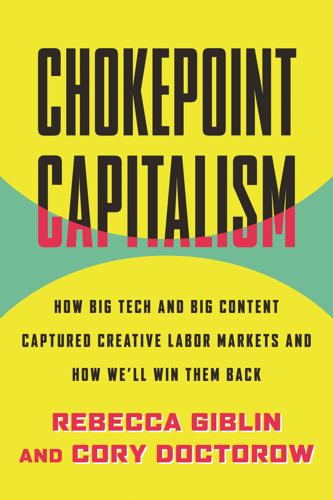
Chokepoint Capitalism
by
Rebecca Giblin
and
Cory Doctorow
Published 26 Sep 2022
26 But of course, nobody’s proposing using guaranteed jobs to dole out meaningless labor. Why would they, when there’s so much important work we urgently need done and that the market is failing to deliver? Remediating climate change will involve unimaginably labor-intensive tasks, like relocating every coastal city miles inland, building high-speed rail links to replace aviation, caring for hundreds of millions of traumatized, displaced people, and treating runaway zoonotic and insect-borne pandemics. We also need to fill gaps caused by the current system, which under-resources important activities that won’t generate enough profit in the market: caring for children and the elderly, repairing crumbling infrastructure, transitioning from our suicidal reliance on fossil fuels, developing communities, building and running libraries and museums, providing quality news journalism, making art, and any number of other activities that support the public good.
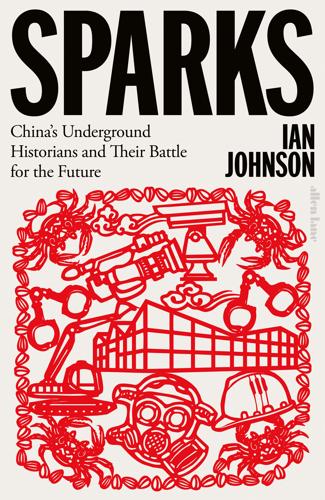
Sparks: China's Underground Historians and Their Battle for the Future
by
Ian Johnson
Published 26 Sep 2023
This juxtaposition gave Tianshui its name: Tian, sky, and shui, water—the city of sky and water. Later Jiang Xue would think of this era as the last rays of light arriving from a dead star. When she was in her 30s, she returned home one time to find that her hometown didn’t exist anymore. It was served by a high-speed rail that raced above the city like a futuristic vision but had ruined everything below: massive concrete bridge supports sunk into abandoned homes, rubble and garbage strewn underneath the bridge, children playing in dirty puddles, old trees cut down, tap water now so dirty that it had to be boiled.
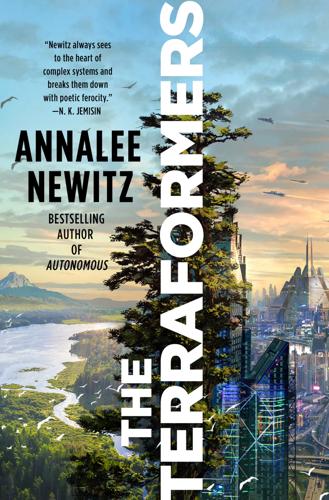
The Terraformers
by
Annalee Newitz
“They usually dock over the water and come ashore in boats.” Sulfur watched a big group of pedestrians, H. diversus with every possible configuration of limbs, skull shapes, and skin textures, chatting excitedly while a mountable drone carried their luggage. Their first thought was that these people should be using high-speed rail to get from the port to Lefthand. But then they began to muse about where all these visitors had come from, and what they hoped to find here. Was Lefthand their first stop before heading up to La Ronge or one of the many other cities-in-progress? Were they tourists on a pleasure tour of undeveloped planets, or scammers drawn to a city whose laws were still in flux?
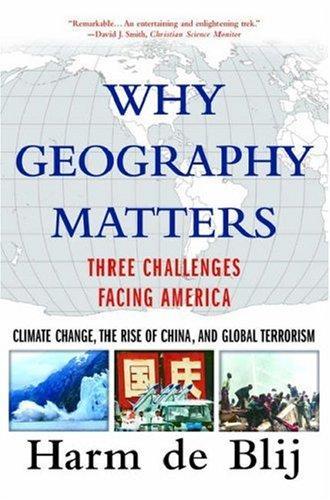
Why geography matters: three challenges facing America : climate change, the rise of China, and global terrorism
by
Harm J. De Blij
Published 15 Nov 2007
But when Greece, Portugal, and Spain joined, the picture changed quite drastically. Not all the senior members of the EU were pleased, but soon funds were flowing from Brussels to Athens, Lisbon, and Madrid under the terms of the EU's program to help poorer countries and regions improve their infrastructures. Portugal built bridges and highways. Spain constructed a high-speed rail link between Madrid and Seville in poverty-stricken Andalusia. Greece erected a new airport near its capital. The issue of depth versus breadth nevertheless roiled EU discussions. The longstanding objectives of the organization transcend economic integration and include common policies in foreign affairs and defense, and these seemed imperiled by enlargement.

Apollo's Arrow: The Profound and Enduring Impact of Coronavirus on the Way We Live
by
Nicholas A. Christakis
Published 27 Oct 2020
When the lockdowns were lifted, the virus would come back.37 My personal involvement with COVID-19 research began the day after Wuhan initiated its lockdown. On January 24, I was contacted by some Chinese colleagues with whom I had been collaborating for several years, analyzing mobile-phone data from China. Previously, we had been looking at how high-speed rail lines and earthquakes reshaped how people interacted with one another to form social networks, a topic of interest to me since 2001. Maybe, we thought in late January 2020, we could use similar data to study the burgeoning epidemic. As a result, I began to concentrate on what was happening in China.

The Party: The Secret World of China's Communist Rulers
by
Richard McGregor
Published 8 Jun 2010
China has witnessed a rising tide of violent protests against local development projects this century, a phenomenon of great concern for the leadership. But local governments have also sanctioned demonstrations to agitate in favour of investment in their localities. In Hunan in 2009, two neighbouring cities conducted campaigns demanding that a high-speed rail track from Shanghai pass through their area. The government in Xinhua county in Loudi city launched the ‘Railway Defence Movement’, while officials in nearby Shaoyang encouraged thousands of residents to take to the streets to bring the project there. In the end, both areas were accommodated with a piece of the project.

England
by
David Else
Published 14 Oct 2010
* * * TRAIN There are two train stations: Canterbury East (for the YHA hostel), accessible from London Victoria; and Canterbury West, accessible from London’s Charing Cross and Waterloo East stations. London-bound trains leave frequently (£20.90, 1½ hours, two to three hourly), as do Canterbury East to Dover Priory trains (£6.70, 16 to 28 minutes, every 30 minutes). Canterbury will be a stop on the UK’s first high-speed rail line, with trains pulling in at London St Pancras from late 2009. It is expected to reduce journey times significantly. Getting Around Canterbury’s centre is mostly pedestrianised. Car parks are dotted along and just within the walls, otherwise parking is by pay and display. Day trippers may prefer to use one of the city’s three park-and-ride sites, which cost £2.50 per day and are connected to the centre by buses every 10 minutes from 7am to 7.30pm Monday to Saturday, or 10am to 6pm Sunday.
…
GETTING THERE & AWAY Buses to Margate leave from London Victoria (£12.10, 2½ hours, five daily). From Canterbury, take bus 8 (55 minutes, three hourly). Trains run twice hourly from London Victoria and less frequently from Charing Cross (£23.90, one hour 50 minutes). Margate is due to be joined to London St Pancras from December 2009 when the UK’s first high-speed rail line opens. Broadstairs pop 24,370 Unlike its bigger, brasher neighbours, the charming resort village of Broadstairs revels in its quaintness, plays the Victorian nostalgia card at every opportunity, and names every second business after the works of its most famous holidaymaker, Charles Dickens.
…
Trains run to London Victoria and Charing Cross (£25.80, 1¾ to two hours, twice hourly). There’s also a ferry service to Ostend in Belgium run by Transeuropa Ferries (01843-595522; www.transeuropaferries.com) from Ramsgate New Port just west of the centre (five hours, from £36 per passenger with car, four each day). When the UK’s first high-speed rail line opens (due late 2009 at the time of writing), there will be a direct link between Ramsgate and London St Pancras, which should significantly reduce journey times. SANDWICH pop 4398 With a top slice of ancient churches, gables and peg-tiled roofs, a juicy filling of medieval streets and timber-framed houses, and a wholesome base slice of riverside strolls and superb golf links, Sandwich makes a very tasty morsel for passing travellers.

Northern California Travel Guide
by
Lonely Planet
Share prices have since increased over 900%, and the company’s worth now exceeds $498 billion. 2008 California voters pass Proposition 8, defining legal marriage as between a man and a woman. Courts eventually rule the law unconstitutional, and same-sex marriages resume in 2013. 2008 California voters approve the sale of bonds to fund California's High-Speed Rail Project, which by 2029 will link San Francisco and Los Angeles in under three hours. 2013 The eastern span of the Bay Bridge opens, after 24 years of planning and construction, sparked by the 1989 Loma Prieta earthquake. It cost $6 billion, the state's costliest-ever public-works project. 2016 California voters approve Proposition 64, legalizing the use of recreational marijuana and creating the largest market for pot products in the US.
…
The program, originally endorsed by former governor Arnold Schwarzenegger, has struggled with a series of legal challenges and at times faced low demand in the face of uncertainty about the future. Still, the system has raised a few hundred million dollars every year, a third of which was allocated by Governor Jerry Brown to finance California's high-speed rail, which by 2029 will connect San Francisco and Los Angeles in under three hours. At the time of research, a state senator had just proposed legislation that would revamp the cap-and-trade program, clearing up its legal issues while establishing one of the highest prices in the world for carbon dioxide.

The Rough Guide to Morocco
by
Rough Guides
To get to the airport from Tangier, most hotels will be able to organize a transfer for you, or you can rent a grand taxi from the Grand Socco (150dh is the standard rate). Destination Casablanca (1–2 daily; 1hr). BY TRAIN The first stage of the country’s grand development of a 1500km high-speed rail (HSR) network is currently under construction between Tangier and Casablanca. Work began in 2011 on the proposed four-year project, though in reality the completion date will be somewhere nearer 2017. The new line will cut the journey time between Tangier and Casablanca from nearly five hours to around two, and is expected to carry up to ten million passengers a year.
…
Destinations Agadir (4–7 daily; 1hr–1hr 20min); Al Hoceima (2–3 weekly; 2hr 20min); Dakhla (3 weekly; 2hr 15min); Fez (6 weekly; 55min); Laayoune (1 daily; 1hr 35min); Marrakesh (2–5 daily; 40min–55min); Nador (4–7 weekly; 1hr 25min); Ouarzazate (5 weekly; 1hr 10min); Oujda (1–2 daily; 1hr 10min); Tangier (1–2 daily; 1hr). BY TRAIN The first stage of the country’s grand development of a 1500km high-speed rail (HSR) network is currently under construction between Casablanca and Tangier. Work began in 2011 on the proposed four-year project, though in reality the completion date will probably be at least 2017. The new line will cut the journey time between Casablanca and Tangier from nearly 5hr to around 2hr, and is expected to carry up to ten million passengers a year.

The Rough Guide to Morocco (Travel Guide eBook)
by
Rough Guides
Published 23 Mar 2019
To get to the airport from Tangier, most hotels will be able to organize a transfer for you, or you can rent a grand taxi from the Grand Socco (250dh is the standard rate and travel time is 20-30 minutes). Destination Casablanca (1–2 daily; 1hr). By train The first stage of the country’s grand development of a 1500km high-speed rail (HSR) network is currently under construction between Tangier and Casablanca. Work began in 2011 and the section between Tangier and Kenitra (47km northeast of Rabat) will be operational by the end of 2018. The completion date for the Casablanca to Kenitra section is scheduled to be at the end of 2019.
…
Destinations Agadir (4–6 daily; 1hr–1hr 20min); Al Hoceima (1 weekly; 2hr 20min); Dakhla (1–2 daily; 2hr 15min); Fez (7 weekly; 55min); Laayoune (1–2 daily; 1hr 35min); Marrakesh (5–7 daily; 40min–55min); Nador (7 weekly; 1hr 25min); Ouarzazate (6 weekly; 1hr 10min); Oujda (2 daily; 1hr 10min); Tangier (9 weekly; 1hr). By train The first stage of the country’s grand development of a 1500km high-speed rail (HSR) network, between Casablanca and Tangier, was inaugurated in late 2018. The new line with super-slick new trains will cut the journey time between Casablanca and Tangier from nearly 5 hours to just over 2 hours. Casa Port The most convenient of Casablanca’s train stations is Casa Port (Gare du Port), near the end of Bd Félix Houphouët Boigny, 500m from Pl des Nations Unies.
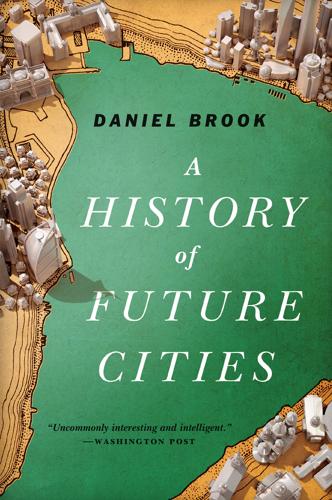
A History of Future Cities
by
Daniel Brook
Published 18 Feb 2013
He responds, “Don’t begin by threatening me!” With Matviyenko ensconced in the mayor’s office, never to have to face the voters again, she and her patron in the Kremlin were free to advance their vision of St. Petersburg as a Potemkin village. While major planned infrastructure improvements like a high-speed rail connection to Moscow and a beltway around the city were downsized, delayed, and plagued by pilfered funds, Putin shined up central St. Petersburg. Putin envisioned his rehabilitated hometown as a window through which Westerners could gaze at Russia, be reassured by how European it looked, and return home confident that the great empire to the east has finally become a “normal” European country.

Fodor's Normandy, Brittany & the Best of the North With Paris
by
Fodor's
Published 18 Apr 2011
You can go pretty much anywhere, but don’t miss Bayeux, Rouen, or Mont-St-Michel. (The last is a bit isolated, so you might want to get there directly from Paris, or at the start or end of a tour of Brittany.) Transportation Basics Although this is one of the few areas of France with no high-speed rail service—perhaps because it’s so close to Paris, or because it’s not on a lucrative route to a neighboring country—Normandy’s regional rail network is surprisingly good, meaning that most towns can be reached by train. Rouen is the hub for Upper Normandy, Caen for Lower Normandy. Unless you’re driving, you’ll need a bus to reach the coastal resorts like Étretat, Honfleur, and Houlgate.
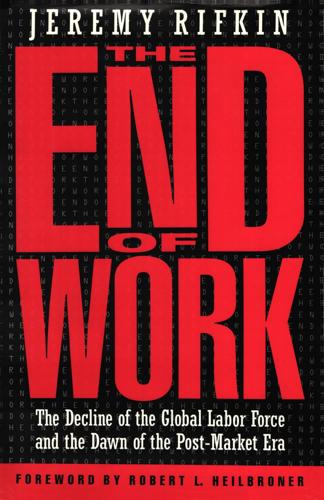
The End of Work
by
Jeremy Rifkin
Published 28 Dec 1994
Many traditional Democrats, as well as a number of Wall Street analysts and academicians, are looking instead to governmentsponsored public-works programs to hire the unemployed and those who have slipped under the social safety net and into the permanent underclass. Felix Rohatyn, the investment analyst who is widely credited with saving New York City from bankruptcy in the 1970s, advocates a massive public-works program to fix the country's bridges and tunnels, mend highways, and create high-speed rail and mass transit Rohatyn says that the program he envisions would cost at least $250 billion over a ten-year period, but could generate up to a million new jobs annually. The effort could be paid for largely by floating special issues of infrastructure bonds, secured by "modest increases in gasoline taxes."
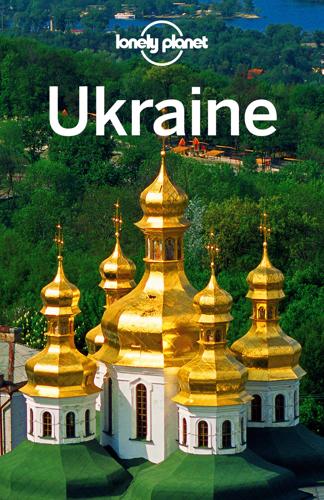
Ukraine
by
Lonely Planet
Games are to be played in four far-flung Ukrainian cities – Kyiv, Donetsk, Kharkiv and Lviv. (the Polish cities of Warsaw, Poznan, Gdansk and Wroclaw are the other four venues). Fears of a late kick-off have been allayed recently with the required investment going into infrastructure and stadium reconstruction. The main legacy for the country will be a high-speed rail link between Kyiv and Boryspil airport, a new airport in Lviv and a complete rebuild of the Kyiv–Chop highway, the country’s main road transport artery. It even looks as though the country’s hotels will get their act together, though in 2010 there were still worries about Donetsk and the standard of team training bases.

Seeds of Hope: Wisdom and Wonder From the World of Plants
by
Jane Goodall
Published 1 Apr 2013
There are hundreds more Roots & Shoots restoration and tree-planting programs around the world. The R&S Green Thumb program in Taiwan encourages schools to replace ornamentals on their school grounds with indigenous flora to try to create a linked network of natural habitat for butterflies. And in a recent effort, R&S groups waited at each station along the route of the high-speed rail that links the north and south of Taiwan and handed seeds of indigenous plants to the passengers, asking them to plant them wherever they could. There are still some people who wonder why I devote so much time and energy to working with young people. It is pretty obvious, really. Of course I care desperately about conservation of chimpanzees and their forest habitat.
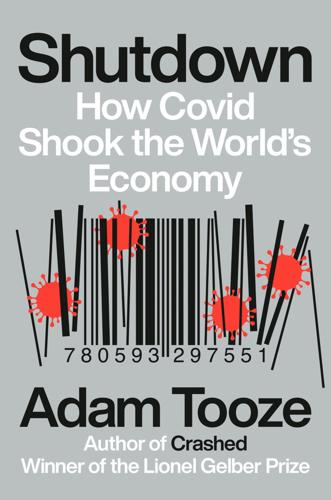
Shutdown: How COVID Shook the World's Economy
by
Adam Tooze
Published 15 Nov 2021
By the summer, European relations with the American government were so toxic that Merkel turned down Trump’s invitation to a G7 meeting in Washington.60 Perhaps the U.S. election would bring a new start in the White House, but after the Trump presidency, nothing could be taken for granted. Beijing, not Washington, was the key. In 2020 China was responsible for more carbon dioxide emissions than the EU and the U.S. put together, but it was also the world leader in solar and wind power, EV cars, and high-speed rail transport. Indeed, since the early 2000s, German and Chinese development in all these areas had been joined at the hip. It was cheap Chinese solar panels that dotted the rooftops of Germany. Germany’s world-leading car manufacturers were developing their new electric models in and for China. VW alone had poured $17.5 billion in investment into its EV ventures in China.61 Would a bold gesture from Europe persuade Beijing to go further?
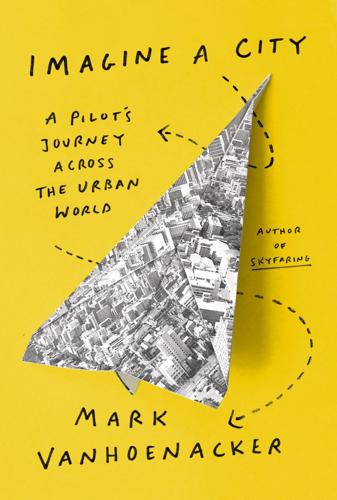
Imagine a City: A Pilot's Journey Across the Urban World
by
Mark Vanhoenacker
Published 14 Aug 2022
It means the “northern sea way” (a remarkably similar etymology to that commonly given for the name of Norway, whose landscape Hokkaido’s much resembles), and it echoes the name of the Tōkaidō, the Eastern Sea Way, the ancient road between Kyoto and Tokyo that gave its name to what’s now one of the world’s busiest high-speed rail lines. Sapporo itself, meanwhile, a name most familiar to Westerners thanks to the eponymous beer, means something like “long, dry river” in the language of the Ainu, the Indigenous population of the island. That river, along which Ainu settlements preceded the city’s foundation, is now known as the Toyohira.

England: Seven Myths That Changed a Country – and How to Set Them Straight
by
Tom Baldwin
and
Marc Stears
Published 24 Apr 2024
Too often, periodic spending announcements are just short-term cover for long-term austerity. A coherent strategy of building transport and digital connections, technology clusters and skills so that towns like Blackpool can prosper within ‘regional hubs’ may yet prove to be beyond any minister and every government, as the debacle over building a high-speed rail service from London to the north of England shows. And, no matter how fast the wheels of regional economies turn, there will always be important jobs dealing with the needs of Blackpool that will never leave the town. And this is where a smaller, more everyday story about the community spirit among England’s northern working class still offers some ordinary hope.
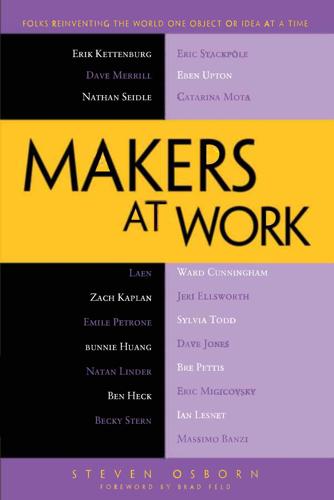
Makers at Work: Folks Reinventing the World One Object or Idea at a Time
by
Steven Osborn
Published 17 Sep 2013
Each stand has a glass top and inside are samples of products they sell. You’ll find buttons, LEDs, connectors, microchips, circuit boards, everything related to electronics. Each stand represents a manufacturer that’s either someplace in Shenzhen or somewhere further north, usually in Dongguan or Guangzhou. Both around an hour north by high-speed rail. All these little stands represent manufacturers in the market. They don’t just sell the parts they have. If you need something custom, you can say, “Hey, I need a header that’s got a pin this exact length. It’s exactly this long.” They can make that stuff for you. You have access to all these resources in the region and the prices are amazingly low.
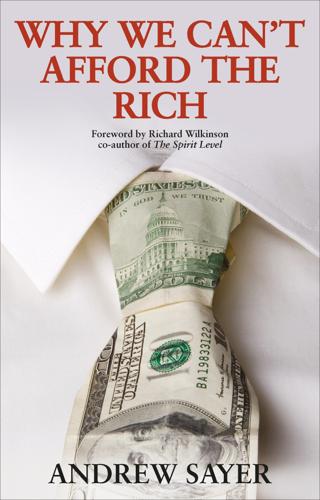
Why We Can't Afford the Rich
by
Andrew Sayer
Published 6 Nov 2014
– so often portrayed as rule bound and sluggish, and lacking the spur of competition, can also be entrepreneurial. Even though it usually has a monopoly in certain activities, the public sector sometimes engages in enterprising ventures, such as setting up the National Health Service, establishing the Open University in the UK, high-speed rail services or launching space probes. As we show later, governments have repeatedly fostered fundamental research and borne the risk of ventures failing. Ability to withstand failure is essential if people are to have the freedom to think ‘outside the box’, for most innovations, like most new small businesses, fail.
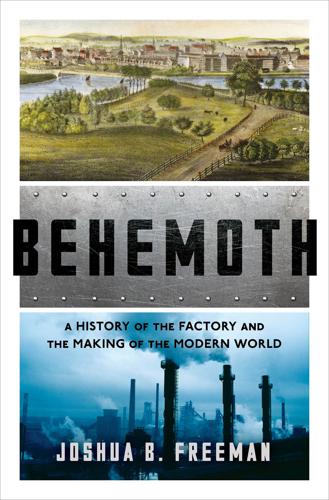
Behemoth: A History of the Factory and the Making of the Modern World
by
Joshua B. Freeman
Published 27 Feb 2018
In Shenzhen, the epicenter of the explosion of Chinese industrial giantism, older factories are being knocked down to build upscale residential and commercial buildings.70 Seen more as a necessity than a triumph, giant Chinese and Vietnamese factories are devoid of the heroic overtones associated with earlier large-scale industrial projects or with modern Chinese infrastructure projects like the Three Gorges Dam or the skyscrapers, bridges, and high-speed rail lines that have remade the landscape. In part, this is an issue of gender; modern apparel, footwear, and electronic plants are heavily staffed by women, unlike steel and automobile factories and big construction sites, where men have dominated the workforce, and largely still do. Heavily female industries sometimes have been associated with utopian dreams, like the early New England textile mills, but Promethean daring generally has been associated with brawny male workers, workers resembling the common portrayal of Prometheus himself.71 The nature of the products that pour out of Asian factory giants contributes to their banality.

Radical Uncertainty: Decision-Making for an Unknowable Future
by
Mervyn King
and
John Kay
Published 5 Mar 2020
Second, having identified the parameters which are likely to make a significant difference to an assessment, undertake research to obtain evidence on the value of these parameters. For example, what value do rail passengers attach to a faster journey? Quantification can often serve as a reality check even when precise quantification is obviously spurious. The preservation of the beautiful and well-preserved Norman church at Stewkley in England (close to a proposed new high-speed rail line) is worth something, but surely not a billion pounds. Often this kind of calibration is enough to resolve some aspects of a decision. Third, simple models provide a flexibility which makes it much easier to explore the effects of modifications and alternatives. For example, the WHO demographic model not only diverted attention from the key issue but its complexity made it harder to investigate alternative specifications of the model structure and parameters.

Politics on the Edge: The Instant #1 Sunday Times Bestseller From the Host of Hit Podcast the Rest Is Politics
by
Rory Stewart
Published 13 Sep 2023
It suggested how angry he was beginning to feel about the party’s lurch to the right. I asked the second why she was backing me, and Victoria Prentis simply said, ‘Don’t be silly, Rory. You stand for everything I believe in: the Union, the countryside. And hopefully you don’t support HS2?’ she added as an after-thought. ‘Well …’ I said evasively, for the high-speed rail line was the greatest boast of the Guardian journalist and ex-special adviser who was helping to run my campaign. It would ruin part of the landscape of her constituency but would make journey times shorter to mine. ‘That’s right,’ she said firmly, ‘I will just tell everyone you don’t support HS2.’
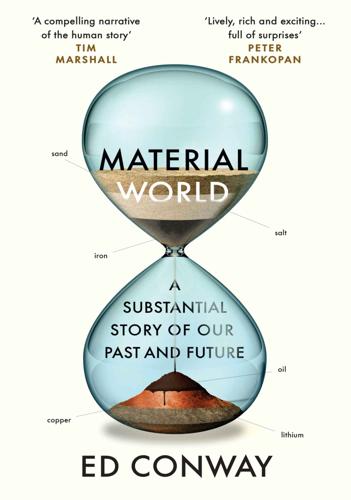
Material World: A Substantial Story of Our Past and Future
by
Ed Conway
Published 15 Jun 2023
Once you account for rusting, recycling and waste, there is about 32 billion tonnes of steel out there in the world. This is rather a lot. If you were to forge it into the heavy I-beams that go into buildings’ steel frames, you would be able to wrap the world in it 33 times over. You could build seven high-speed rail tracks between the earth and the sun. Or, were you to divide it between every person on the planet, you would end up with about 4 tonnes per person. Given you already know there are around 15 tonnes per person in the developed world, that underlines another important point: the stocks of iron around the world are very unequally distributed.
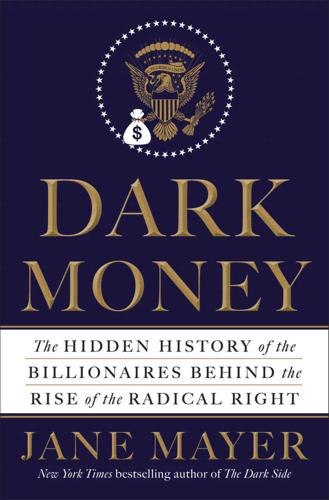
Dark Money: The Hidden History of the Billionaires Behind the Rise of the Radical Right
by
Jane Mayer
Published 19 Jan 2016
“The mainstream economic view was that the size of the calamity required massive economic spending. We asked the Republicans for their ideas. We were getting cooperation. Letters from all sorts of members of Congress were coming in with their heartfelt ideas. One high-ranking member of the House Republicans even suggested high-speed rail! But by early February, it started to shift. They were no longer sending letters. They were all expressing doubt about any kind of spending at all.” Senator DeMint, who was headlining the Kochs’ No Stimulus campaign, began a floor speech by proclaiming, “I like President Obama very much.” He then went on to call the stimulus bill “a trilliondollar socialist experiment” that was “the worst piece of economic legislation Congress has considered in a hundred years.”
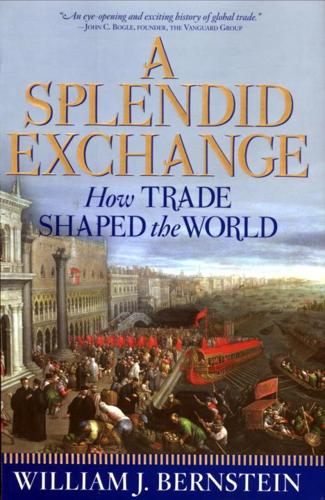
A Splendid Exchange: How Trade Shaped the World
by
William J. Bernstein
Published 5 May 2009
The League developed many of the sophisticated tools used by today's major political parties and special-interest groups: mass mailings, carefully choreographed traveling campaigns, exploitation of religious subtexts, meticulous polling, and targeted legal challenges. Soon after assuming the League's leadership, Cobden found himself in the company of another visionary of humble background, Rowland Hill, a passionate advocate of the "penny post." By 1838 England was well on its way to being served with high-speed rail transport, which radically reduced carrying costs. The government, however, did not pass the savings along to letter writers. In those days, postage was paid by the recipient and came dear: a letter sent from Edinburgh to London, for instance, cost a shilling-almost a day's wages for a farmer or factory worker.
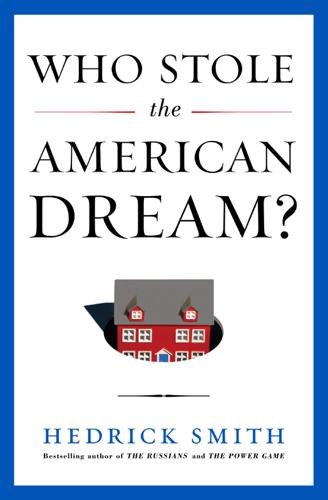
Who Stole the American Dream?
by
Hedrick Smith
Published 10 Sep 2012
In world rankings of infrastructure, the United States has fallen from No. 1 to No. 15. Not only do we have sixty-nine thousand structurally deficient bridges, but our national rail network has such serious bottlenecks that it takes a freight train longer to get through the city of Chicago than it does to go from Chicago to Los Angeles. In high-speed rail development, China is outspending the United States $300 billion to $10 billion. Our aviation control system is so outdated and overloaded that the Federal Aviation Administration predicts it “will reach total gridlock by 2015” unless it is urgently modernized. Our ports are overloaded. Our highways are clogged.
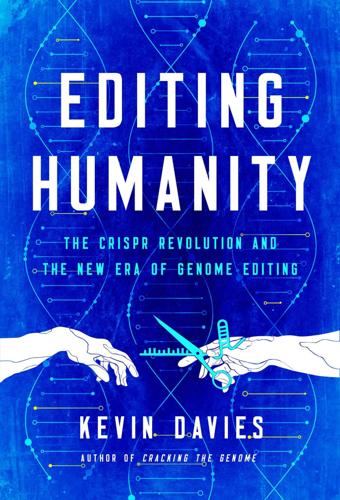
Editing Humanity: The CRISPR Revolution and the New Era of Genome Editing
by
Kevin Davies
Published 5 Oct 2020
“I know the government is watching us at all times.”15 Would JK’s audacious activities be any exception? Third, China has become a world leader in technology development. China’s massive investment in R&D—$300 billion in 2020—has made it a leader in 5G wireless communication, facial identification, artificial intelligence, high-speed rail, and many other areas of technology. In 2019, China successfully landed a lunar rover on the far side of the moon. “It is human nature to explore the unknown world,” said the head of China’s space program, as China spectacularly laid down another marker in the tightening race for technology supremacy.16 Genome editing technology is no exception.

Great Britain
by
David Else
and
Fionn Davenport
Published 2 Jan 2007
TRAIN There are two train stations: Canterbury East (for the YHA hostel), accessible from London Victoria; and Canterbury West, accessible from London’s Charing Cross and Waterloo East stations. London-bound trains leave frequently (£20.90, 1½ hours, two to three hourly), as do Canterbury East to Dover Priory trains (£6.70, 16 to 28 minutes, every 30 minutes). Canterbury will be a stop on the UK’s first high-speed rail line, with trains pulling in at London St Pancras from late 2009. It is expected to reduce journey times significantly. * * * THE CANTERBURY TALES If English literature has a father figure, then it is Geoffrey Chaucer (1342/3–1400). Chaucer was the first English writer to introduce characters – rather than ‘types’ – into fiction, and he did so to greatest effect in his most popular work, The Canterbury Tales.
…
GETTING THERE & AWAY Buses to Margate leave from London Victoria (£12.10, 2½ hours, five daily). From Canterbury, take bus 8 (55 minutes, three hourly). Trains run twice hourly from London Victoria and less frequently from Charing Cross (£23.90, one hour 50 minutes). Margate is due to be joined to London St Pancras from December 2009 when the UK’s first high-speed rail line opens. Broadstairs pop 24,370 Unlike its bigger, brasher neighbours, the charming resort village of Broadstairs revels in its quaintness, plays the Victorian nostalgia card at every opportunity, and names every second business after the works of its most famous holidaymaker, Charles Dickens.
…
Trains run to London Victoria and Charing Cross (£25.80, 1¾ to two hours, twice hourly). There’s also a ferry service to Ostend in Belgium run by Transeuropa Ferries ( 01843-595522; www.transeuropaferries.com; 4 per day) from Ramsgate New Port just west of the centre (from £36 per passenger with car, five hours). When the UK’s first high-speed rail line opens (due for late 2009 at the time of writing), there will be a direct link between Ramsgate and London St Pancras, which should significantly reduce journey times. Deal Julius Caesar and his armies set foot on Deal’s peaceful shingle beach in 55 BC, for their first exploratory dip into Britain.
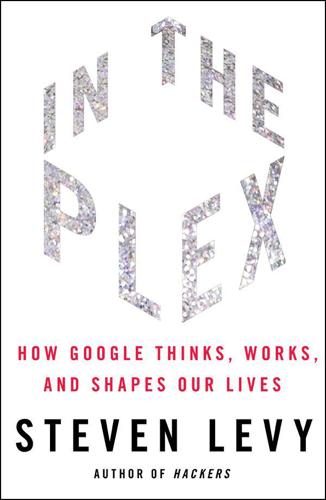
In the Plex: How Google Thinks, Works, and Shapes Our Lives
by
Steven Levy
Published 12 Apr 2011
The fact that people were motivated to organize on that issue was itself a data point. “I don’t know what this says about the online audience,” said the president before stating that legalizing weed was not a good strategy to grow the economy. Then he answered the lower-ranked questions about health care, college costs, home foreclosures, and high-speed rail. The other highlight of Stanton’s tenure at the White House was helping organize a presidential town meeting in Shanghai. Arguing over the tiniest point with Chinese officials bent on total control, Stanton got a taste of what Google’s Beijing government relations people dealt with all the time.
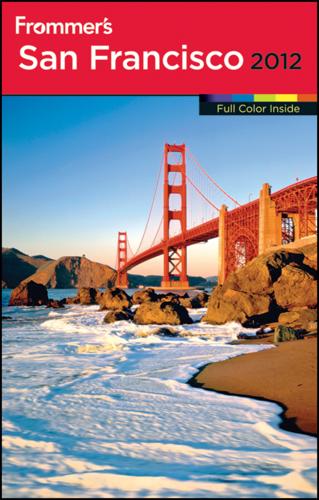
Frommer's San Francisco 2012
by
Matthew Poole
,
Erika Lenkert
and
Kristin Luna
Published 4 Oct 2011
The beautiful, retro multicolored F-Market & Wharves streetcar runs from 17th and Castro streets to the Embarcadero; every other streetcar continues to Jones and Beach streets in Fisherman’s Wharf. This is a quick, charming, and tourist-friendly way to get up- and downtown without any hassle. BART BART, an acronym for Bay Area Rapid Transit ( 415/989-2278; www.bart.gov), is a futuristic-looking, high-speed rail network that connects San Francisco (starting just south of the airport) with the East Bay—Oakland, Richmond, Concord, Pittsburg, and Fremont. Four stations are on Market Street (see “Streetcar,” above). One-way fares range from $1.75 to $11, depending on how far you go. Machines in the stations dispense tickets that are magnetically encoded with a dollar amount.

The Long Game: China's Grand Strategy to Displace American Order
by
Rush Doshi
Published 24 Jun 2021
Many of these same points were made by a variety of top officials, including the Zheng Xinli, the high-level Central Party Research Office figure who proposed AIIB, suggesting their centrality to BRI.41 In non-official sources, a variety of scholars have hoped that this kind of interdependence would constrain China’s neighbors. Finally, aside from relational leverage through finance and trade, BRI creates leverage over maintenance given that many Chinese projects will require Chinese engineers for upkeep, especially since Chinese state firms dominate many of these markets, ranging from hydroelectric power to high-speed rail.42 Structural Level At the structural level, BRI allows Beijing to create connectivity that essentially excludes other countries. One form of this is through commercial ports, which in some ways constitute the new choke points of maritime trade, and a growing number are operated or leased by Chinese state companies—which can offer important economic leverage over the structure of Asian trade.
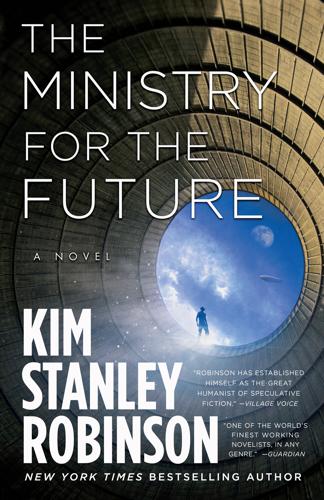
The Ministry for the Future: A Novel
by
Kim Stanley Robinson
Published 5 Oct 2020
On the eighth day her ship sailed into New York harbor, a dream of a harbor, Cosmopolis itself, and she debarked on a Hudson dock and took a cab to Penn Station and got on a train headed west. Okay, this was less interesting. But still she could work, sleep, look out the window. And the Americans had finally gotten some high-speed rail built, including this cross-continent line, so it was only another day and then she was in San Francisco, coming out of the ground and walking over to the Big Tower and taking an elevator up to the top, where she had met with the central bankers years before. Her trip had taken nine days, and she had worked every day as if home in Zurich, except that she got more done.

The Rough Guide to Sweden (Travel Guide eBook)
by
Rough Guides
Published 1 Nov 2019
Indeed, one in five people are in their twenties, figures that are partly due to the presence of Norrland University. Its youthfulness may well be responsible for the fact that Umeå is the one of the few towns or cities in northern Sweden where there’s an air of dynamism: new restaurants and bars are opening all the time, there’s a thriving cultural scene and the Botniabanan high-speed rail link to Stockholm means the capital can be reached in just over six hours. The sound of the rapids along the Ume River gives the city its name: uma means “roar”. With its fast-flowing river – a feature few other Swedish coastal cities enjoy – and wide, stylish boulevards, Umeå is an appealing metropolis.
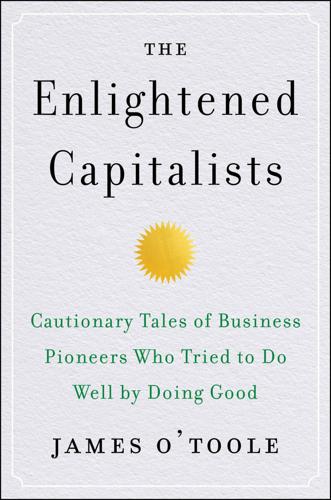
The Enlightened Capitalists
by
James O'Toole
Published 29 Dec 2018
In 2008, the Federal Aviation Administration alleged that Southwest violated regulations regarding the frequency of safety inspections. After voluntarily grounding several planes, the company paid $7.5 million in fines. In an audacious act of hypocrisy, in 1991 Southwest prevented the development of a high-speed rail system that would have linked Dallas, Houston, and San Antonio, using much the same arguments and tactics that its competitor airlines had used in their unsuccessful attempts to keep SWA out of business—tactics Rollin and Kelleher had branded “unfair” and “un-American.” SWA TODAY AND TOMORROW Although Southwest’s stock has never been a favorite on Wall Street (the price of its shares dropped by 18 percent between 2005 and 2010, even as it was gaining market share), the company’s unique practices have been admired and studied closely by management scholars, consultants, gurus, and managers from companies around the globe.
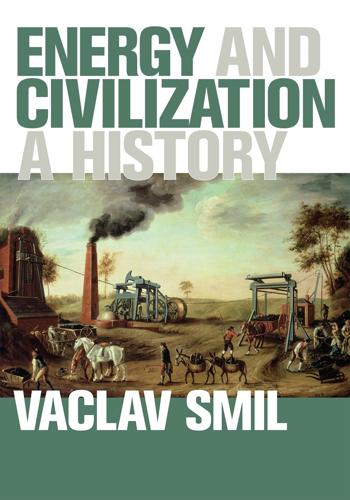
Energy and Civilization: A History
by
Vaclav Smil
Published 11 May 2017
The Japanese shinkansen, first run in 1964 between Tokyo and Osaka, reached a maximum of 250 km/h, and its latest trains (nozomi) go 300 km/h (Smil 2014a; fig. 6.10). French trains a grand vitesse (TGV) have been operating since 1983; the fastest scheduled trip is at nearly 280 km/h. Similarly rapid links now also exist in Spain (AVE), Italy (Frecciarossa) and Germany (Intercity), but China has become the new record-holder in the overall length of high-speed rail: in 2014 it had 16,000 km of dedicated track (Xinhua 2015). In contrast, America’s solitary Acela (Boston-Washington, averaging just over 100 km/h) does not even qualify as a modern high-speed train. Figure 6.10 Shinkansen N700 Series at Kyoto Station in 2014, the 50th year of accident-free operation of Japan’s rapid trains on the Tokaido line.

Elon Musk
by
Walter Isaacson
Published 11 Sep 2023
He processed in silence for two minutes, and when he emerged from his trance, he was philosophical. “This is how civilizations decline. They quit taking risks. And when they quit taking risks, their arteries harden. Every year there are more referees and fewer doers.” That’s why America could no longer build things like high-speed rail or rockets that go to the moon. “When you’ve had success for too long, you lose the desire to take risks.” “An awesome day” The countdown that Monday was aborted with forty seconds left because of a valve problem, and the launch was rescheduled for three days later, April 20. Was the 4/20 date intentional, yet another reference to the 420 dope-smoking meme, along the lines of his $420 offer to take Tesla private and $54.20 offer to buy Twitter?
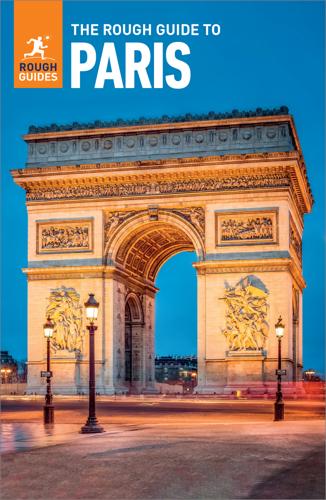
The Rough Guide to Paris
by
Rough Guides
Published 1 May 2023
See page 292 Nightlife If you’re up for more, head south to one of the quirky club/live music barges near the Gare d’Austerlitz. See page 291 Basics Getting there Paris’s main international airports – Roissy-Charles de Gaulle (CDG) and Orly – along with the smaller, and less convenient, Paris Beauvais, offer direct connections with airports all over the world. Meanwhile, high-speed rail links mean that London can be as little as two hours and twenty minutes away on the Eurostar. The Eurostar Shutterstock By Eurostar from the UK and Ireland The most enjoyable way to reach Paris from Britain is the Eurostar train service (http://eurostar.com).

Frommer's London 2009
by
Darwin Porter
and
Danforth Prince
Published 25 Aug 2008
That’s all changing now, but one big difference that may affect you still remains: If you’re traveling to Britain from the Continent, your Eurailpass will not be valid when you get there. In 1994, Queen Elizabeth of England and President François Mitterrand of France officially opened the Channel Tunnel, or Chunnel, and the Eurostar express passenger train began twice-daily service between London and both Paris and Brussels. In 2003, the completion of a new section of high-speed rail in England, the Channel Tunnel Rail Link, shaved 20 minutes off the trip between London and Paris, reducing it to just 2 hours and 35 minutes (or 2 hr., 20 min. to Brussels). This extension allows Eurostar trains to go at the rate of 482kmph (300 mph). The $15-billion tunnel, one of the great engineering feats of all time, is the first link between Britain and the Continent since the Ice Age.

Lonely Planet Norway (Travel Guide)
by
Lonely Planet
and
Donna Wheeler
Published 1 Apr 2015
Use-ItTOURIST INFORMATION ( GOOGLE MAP ; %24 14 98 20; www.use-it.no; Møllergata 3, Oslo; h10am-6pm Mon-Fri, noon-5pm Sat Jul-early Aug, 11am-5pm Mon-Fri, noon-5pm Sat rest of year) The exceptionally helpful and savvy Ungdomsinformasjonen (Youth Information Office, better known as Use-It) is aimed at, but not restricted to, backpackers under the age of 26. It makes (free) bookings for inexpensive or private accommodation and provides information on anything from current events to hitching possibilities. 8Getting There & Away Air Oslo Gardermoen International Airport (www.osl.no) has a motorway and high-speed rail link to the city centre. Numerous domestic flights also go in and out of Gardermoen. KLM, Widerøe, SAS Braathens, Ryanair and other airlines also operate 'Oslo' services to/from Torp International Airport, some 123km southwest of Oslo, and Rygge Airport, around 60km southeast of the centre.
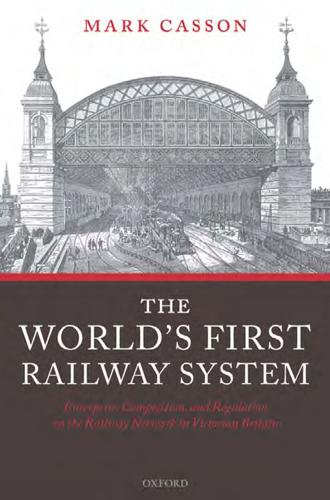
The World's First Railway System: Enterprise, Competition, and Regulation on the Railway Network in Victorian Britain
by
Mark Casson
Published 14 Jul 2009
Until the Railway Mania got underway it was widely assumed that there would be just one railway route between London and Scotland, which would follow the West Coast through Lancaster and Carlisle. This route was promoted by the Caledonian Railway (CR) which, despite its Scottish-sounding name, was dominated by London interests who wished to secure a monopoly of Anglo-Scottish traYc. There were political as well as economic reasons for uniting London and Scotland with a high-speed rail line, and the London promoters believed that they were well attuned with government thinking on the subject. In line with this general approach, the CR main line split into three south of Glasgow. At Carstairs, near the coal and textile town of Lanark, the main line to Glasgow forked left through Motherwell, using some upgraded mineral lines to gain access to the city.
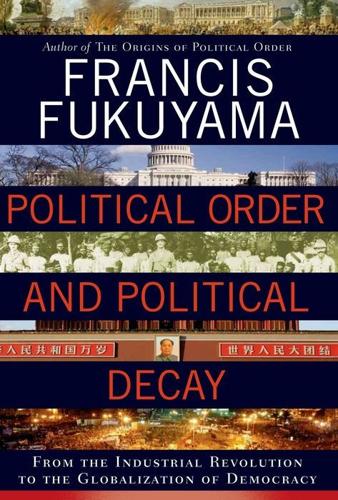
Political Order and Political Decay: From the Industrial Revolution to the Globalization of Democracy
by
Francis Fukuyama
Published 29 Sep 2014
This ministry is a gigantic organization, presiding over some fifty-seven thousand miles of track and employing 2.5 million people across China.17 The central government has been trying, without success, to get control of the money-losing ministry for many years. Following the highly publicized crash of a new high-speed rail train near Wenzhou in mid-2011, the ministry tried to hide evidence of malfeasance by burying the cars involved, until discussions on China’s microblogs forced it to unbury them. The central government used this as an opportunity to sack railway minister Liu Zhijun on charges of corruption, and announced that it intended to break the agency apart into two separate organizations.
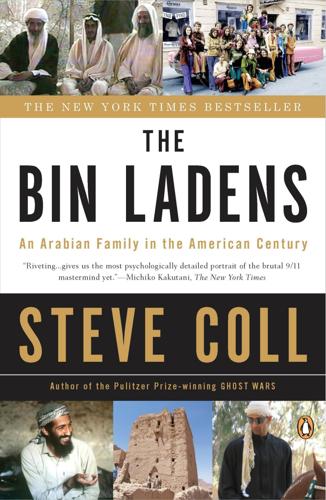
The Bin Ladens: An Arabian Family in the American Century
by
Steve Coll
Published 29 Mar 2009
They were partners, too, in the planned King Abdullah Economic City, announced in late 2005 as oil prices moved above fifty dollars a barrel. The new king commandeered undeveloped land along the Red Sea north of Jeddah and announced a city designed to rival Dubai. Abdullah said the project would cost about $27 billion. He planned a Millennium Seaport to rival the largest commercial ports in the world; high-speed rail and air links to the rest of the kingdom; an Industrial District of petrochemical and other plants; a waterside resort to attract tourists, complete with the kingdom’s first world-class 18-hole golf course; a Financial Island topped by two office towers reaching sixty or more stories into the sky; an Education Zone filled with modern universities; and, of course, more condominiums.

Fall Out: A Year of Political Mayhem
by
Tim Shipman
Published 30 Nov 2017
Given Labour’s decision to scrap tuition fees altogether, it is perhaps fortunate that May did not offer universities the chance to raise fees, however beneficial that might have been to the less well-off. Frozen out by Timothy and Gummer, Freeman was blamed for several stories about the contents of the manifesto, including a claim that the government might cancel HS2, the high-speed rail link. ‘Every single story, more or less, that came out was George-related,’ a campaign source said. ‘None of them were rooted in reality because he had no idea what was going on.’ Over a period of three days between 11 and 13 May each secretary of state was called up to the fourth floor of CCHQ to see their sections of the manifesto and provide their comments.
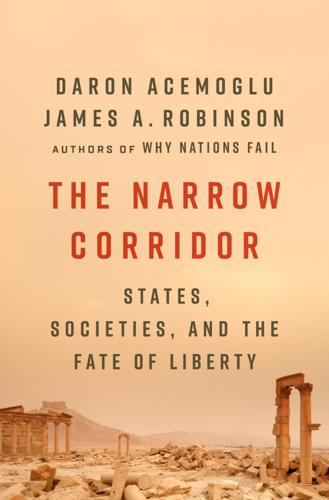
The Narrow Corridor: States, Societies, and the Fate of Liberty
by
Daron Acemoglu
and
James A. Robinson
Published 23 Sep 2019
In Pei’s sample the average corrupt official made about $170,000 from selling posts. People like Zhang and Xu are just small fry. When railway minister Liu Zhijun was arrested in 2011, his charges included having 350 apartments in his name and over $100 million in cash. This is largely because China’s high-speed rail system had presented an unrivaled opportunity for graft. But so do most other aspects of Chinese economic expansion. Though Liu fell from grace, most don’t. In 2012, 160 of China’s wealthiest 1,000 people were members of the Communist Party Congress. Their net worth was $221 billion, about twenty times that of the top 660 officials in all three branches of the government of the United States, a country whose income per capita is over seven times that of China.

Israel & the Palestinian Territories Travel Guide
by
Lonely Planet
The system's heavily used main line runs along the coast at least twice an hour, affording fine views of the Mediterranean as it links Tel Aviv with the following locations: Haifa (32NIS, one hour) Akko (41.50NIS, 1½ hours) Nahariya (46.50NIS, 1½ hours) Other useful services from Tel Aviv: Ben-Gurion airport (16NIS, 18 minutes, at least hourly 24 hours a day except Shabbat) Be’er Sheva (31.50NIS, 1½ hours, hourly) Construction is underway on a US$2 billion high-speed rail link that will cut the travel time between Tel Aviv and Jerusalem to 30 minutes, with a stop on the way at Ben-Gurion airport; the planned completion date is 2017. Another new high-speed line is scheduled to link Haifa with Beit She'an (60km) in 2016. Health Before You Go In Israel & the Palestinian Territories Health While it’s never nice to be injured or become sick while you’re travelling, you can at least take some comfort in the knowledge that Israel has world-class medical facilities.

Italy
by
Damien Simonis
Published 31 Jul 2010
The city’s Mafia wars hit the world’s headlines in late 2004 and early 2005, and again in 2008 with the release of Matteo Garrone’s film Gomorra (Gomorrah), itself based on a Camorra exposé by Neapolitan writer Roberto Saviano. In 2008, the city’s sporadic garbage-disposal crisis flared up again, leading frustrated residents to set fire to uncollected rubbish in the streets. More promising has been the recent inauguration of a major theatre festival, a still-under-construction high-speed rail terminal by British-Iraqi starchitect Zaha Hadid and a planned revamp of Pompeii’s train stations by prolific US architect Peter Eisenman. * * * OUR TOP FIVE FILM LOCATIONS IN CAMPANIA Naples’ airy Piazza del Gesù Nuovo, where acting great Sergio Solli makes his anything-but-menacing phone threats in No Grazie, Il Caffè Mi Rende Nervoso (1982).
…
Even then, if you have time, loathe airports, have a fear of flying or simply enjoy moving a little more slowly, trains can have a charm all of their own. It is also a much greener way to go – the same trip by rail can contribute up to 10 times less carbon dioxide emissions per person than by air. As Europe’s cutting-edge, high-speed rail network is expanded in coming years, it will become increasingly difficult to talk of rail travel being slow! CONTINENTAL EUROPE Thomas Cook’s European Rail Timetable has a complete listing of train schedules. The timetable is updated monthly and available from Thomas Cook offices worldwide and online (www.thomascookpublishing.com) for around UK£14.

Lonely Planet France
by
Lonely Planet Publications
Published 31 Mar 2013
Up-to-the-minute information on perturbations (service disruptions), eg because of strikes, can be found on www.infolignes.com (in French). Since its inauguration in the 1980s, the pride of SNCF (and the French) is the TGV (Train à Grande Vitesse; www.tgv.com) , pronounced ‘teh zheh veh’, which zips passengers along at speeds of 320km/h (198mph). The main TGV lines (or LGVs, short for lignes à grande vitesse, ie high-speed rail lines) head north, east, southeast and southwest from Paris (trains use slower local tracks to get to destinations off the main line): » TGV Nord, Thalys & Eurostar Link Paris Gare du Nord with Arras, Lille, Calais, Brussels (Bruxelles-Midi), Amsterdam, Cologne and, via the Channel Tunnel, Ashford, Ebbsfleet and London St Pancras. » TGV Est Européen Connects Paris Gare de l’Est with Reims, Nancy, Metz, Strasbourg, Zurich and Germany, including Frankfurt and Stuttgart.
…
At present, the super-high-speed track stretches only as far east as Lorraine but it’s supposed to reach Strasbourg in 2016. » TGV Sud-Est & TGV Midi-Méditerranée Link Paris Gare de Lyon with the southeast, including Dijon, Lyon, Geneva, the Alps, Avignon, Marseille, Nice and Montpellier. » TGV Atlantique Sud-Ouest & TGV Atlantique Ouest Link Paris Gare Montparnasse with western and southwestern France, including Brittany (Rennes, Brest, Quimper), Tours, Nantes, Poitiers, La Rochelle, Bordeaux, Biarritz and Toulouse. » TGV Rhin-Rhône France’s most recent high-speed rail route – the first section of which opened in December 2011 – bypasses Paris altogether in its bid to better link the provinces. Six services a day speed between Strasbourg and Lyon, with most continuing south to Marseille or Montpellier on the Mediterranean. The TGV tracks are interconnected, making it possible to go directly from, say, Lyon to Nantes or Bordeaux to Lille without having to switch trains in Paris or transfer from one of Paris’ six main train stations to another.

The Stack: On Software and Sovereignty
by
Benjamin H. Bratton
Published 19 Feb 2016
But in the end, they are not equal; the handset is the ascendant vehicle, and the car is the architecture in slow disappearance.51 In conceptualizing how Stack transportation might evolve, it's tempting to suppose that the aggregation of systems into central platforms at the Cloud level would be replicated at the City layer such that atomized vehicles (such as cars) would be agglomerated into larger urban, regional, and continental megavehicles (such as high-speed rail). The economies of scale that are possible by regularizing and extending itineraries might parallel those of regularizing and monetizing other kinds of social interaction online. Elon Musk's perhaps real and perhaps speculative Hypertube project, which would send humans whooshing up and down California inside what is essentially a giant pneumatic tube, is exemplary, as is the tendency for cities to strategize economic growth through the enhancement of their airports (now “aerotropoli”) ensuring their inhabitants easy access to the rest of the global urban grid.52 Implementing such systems is obviously very expensive in both time and treasure.

Total Recall: My Unbelievably True Life Story
by
Arnold Schwarzenegger
and
Peter Petre
Published 30 Sep 2012
Washington and Beijing on a national level were still in a stalemate over climate issues, but they were willing for us to form region-to-region connections. California had already made agreements with the city of Shanghai and several of China’s most industrialized provinces aimed at reducing greenhouse gases and cooperating on projects in solar and wind power and electric buses and high-speed rail. As news got around about these developments, people in the environmental community began to sense a giant opportunity here. Ban Ki-moon was receptive when I pitched California’s approach as plan B for Copenhagen, to supplement the main UN effort to address climate change. “Even if the negotiations hit an impasse,” I argued, “the conference doesn’t have to look like a failure.
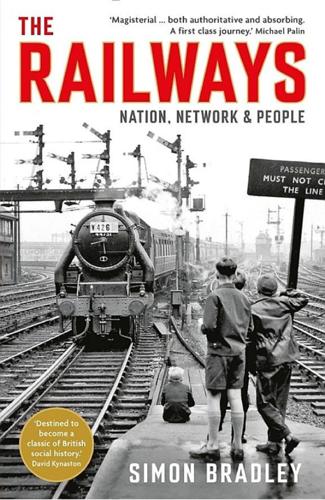
The Railways: Nation, Network and People
by
Simon Bradley
Published 23 Sep 2015
The contribution made by the various types of nineteenth-century brick and masonry finishes to the visual experience of British railway travel can be appreciated by taking a journey on the Channel Tunnel Rail Link. Here the carriage-window view is repeatedly of surfaces of concrete, especially the finely textured, fair-faced concrete of modern civil engineering, in whose smooth grey surfaces no weed or shrub can find lodging. The same finishes continue through the tunnel and on through the Continental high-speed rail network. It is impressive, if rather boring. On older lines, new technology manifests itself in the form of geosynthetics: ugly black long-life membranes and netting pinned down by steel fixtures, guarding the permanent way against collapses from the cutting sides. By directing the route to avoid the steeper slopes, a railway company could reduce its outlay on earthworks and tunnels, but at the cost of other drawbacks in the longer term.
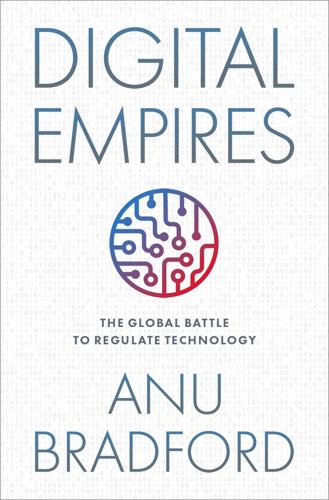
Digital Empires: The Global Battle to Regulate Technology
by
Anu Bradford
Published 25 Sep 2023
Even if the EU’s antitrust enforcement record to date may not reflect protectionism, it is noticeable that the tone of the conversation today across the EU is changing.172 This change in rhetoric can be traced to the Commission’s 2019 decision prohibiting the proposed Siemens/Alstom merger.173 The acquisition would have combined German and French industrial giants and created a European high-speed rail champion. The critics of the Commission decision decried it as a lost opportunity to boost European companies facing competition from their bigger Chinese rival, China Railway Rolling Stock Corporation.174 The Commission stood firm, reminding the critics that “we are not supposed to be political,” but rather “loyal to our mandate” to protect European consumers from higher prices.175 This prohibition decision triggered heavy criticism of the absence of industrial policy guiding the EU’s antitrust policy, coupled with mounting calls to change that policy orientation.
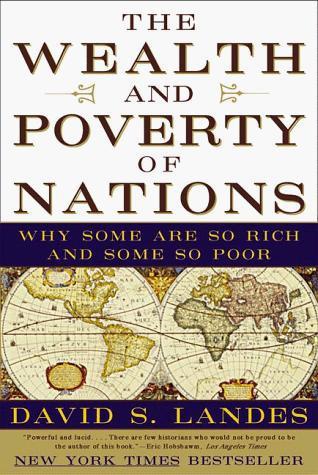
The Wealth and Poverty of Nations: Why Some Are So Rich and Some So Poor
by
David S. Landes
Published 14 Sep 1999
This accorded with national tradition, going back to the Colbertism of the Old Regime and relying heavily on the competitive recruitment of the best and brightest into the grandes écoles—Polytechnique, Mines, Normale; and now a new one: the Ecole Nationale d’Administration, ENA, with its graduating classes of fledgling bureaucrats and rulers-to-be—the one of the as they quickly came to be called. Government engineers and functionaries, with and without the cooperation of private enterprise, modernized the infrastructure: roads, railroads, communications, public housing, equipment. The results exceeded expectations, and France in some areas, such as high-speed rail service, set the pace for the rest of the world. Whether such developments were always profitable is not clear; state subsidies, manifest and discreet, obscure the realities of the market. But what a pleasure for the privileged railway passenger, especially one favored by discount ticket prices (state employees, for example), to ride some of the smoothest and fastest lines in the world!
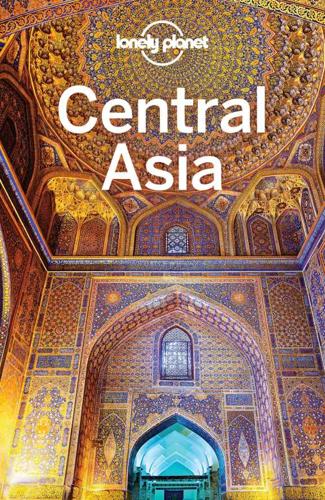
Lonely Planet Central Asia (Travel Guide)
by
Lonely Planet
,
Stephen Lioy
,
Anna Kaminski
,
Bradley Mayhew
and
Jenny Walker
Published 1 Jun 2018
Certain corridors, such as Almaty–Astana and Almaty–Shymkent are well served by three or four fast trains a day. AThe Spanish-built, daily Talgo train between Almaty and Astana takes 12½ hours, against up to 21 hours for other trains, and costs about twice as much (US$80 in tourist class). A new high-speed rail link between the two cities is planned. ANew fast trains also run from Astana to Atyrau and Kyzylorda in Kazakhstan. AThe high-speed train from Tashkent to Samarkand (2¼ hours) and on to Bukhara (four hours) is faster than the buses and features airplane-style seats. There's also a useful overnight Tashkent–Bukhara and Tashkent–Urgench run.

The Quest: Energy, Security, and the Remaking of the Modern World
by
Daniel Yergin
Published 14 May 2011
Sometime around 2020 it could pull ahead of the United States as the world’s largest oil consumer. It is an almost inevitable result of what can be described as the “great build-out of China”—urbanization at a speed and scale the world has never seen, massive investment in new infrastructure, and mass construction of buildings, power plants, roads, and high-speed rail lines—all of it reshaping China’s economy and society. This build-out of China over the next two or three decades will be one of the defining forces not just for China but for the world economy. It is certainly one of the main explanations for a long-lasting boom in commodities. China’s urban population is growing very fast.
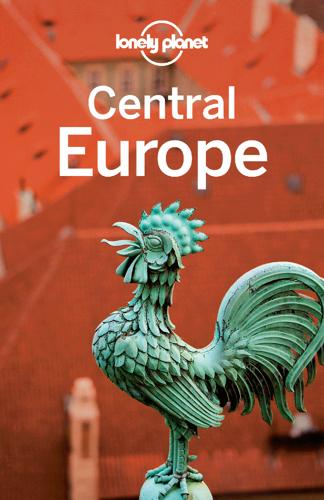
Central Europe Travel Guide
by
Lonely Planet
Its history dating back to the Germanic tribes of over 1000 years ago, Saxony embodies many of the classic qualities associated with Germany. Dresden and Leipzig have a long tradition in the arts and are today centres of culture. And even though the local dialect can be impenetrable to those with mere schoolbook German, that same classic German traces its roots right back to here. The state is fairly compact and high-speed rail links make the region easily accessible from all corners of Germany. Dresden 0351 / POP 484,000 Proof that there is life after death, Dresden has become one of Germany’s most popular attractions, and for good reason. Restorations have returned the city to the glory days when it was famous throughout Europe as ‘Florence on the Elbe’, owing to the efforts of Italian artists, musicians, actors and master craftsmen who flocked to the court of Augustus the Strong, bestowing countless masterpieces upon the city.

Hawaii Travel Guide
by
Lonely Planet
Makawao Forest Reserve A welcome network of mountain-biking trails keeps expanding in Maui’s Upcountry, thanks to local advocacy and state agency cooperation. Mokuapapa Discovery Center Relocated in downtown Hilo, the Big Island’s marine educational center is bigger and better than ever. Stop by and take a virtual trip to the remote Northwestern Hawaiian Islands. HART Construction has finally begun on Honolulu’s high-speed rail project, but the Honolulu Authority for Rapid Transportation (HART) won’t start running trains to ease Oʻahu's traffic woes until 2018. Trail Closures Some island hiking trails damaged during recent tropical storms have closed, including Maui’s epic Skyline Trail and Kauaʻi’s Nualolo Cliffs Trail.
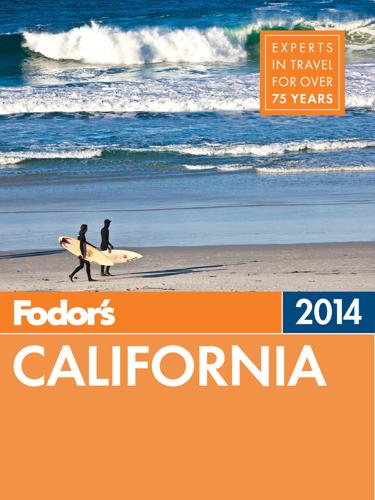
Fodor's California 2014
by
Fodor's
Published 5 Nov 2013
Coaster commuter trains, which run between Oceanside and San Diego Monday–Saturday, stop at the same stations as Amtrak as well as others. The frequency is about every half hour during the weekday rush hour, with four trains on Saturday. One-way fares are $4 to $5.50, depending on the distance traveled. The Sprinter runs between Oceanside and Escondido, with many stops along the way. Metrolink operates high-speed rail service between the Oceanside Transit Center and Union Station in Los Angeles. Information Amtrak. | 800/872–7245 | www.amtrak.com. Coaster. | 760/966–6683 | transit.511sd.com. Metrolink. | 800/371–5465 | www.metrolinktrains.com. Tours Bike Tours Bike Revolution. | 619/564–4843 | www.thebikerevolution.com.
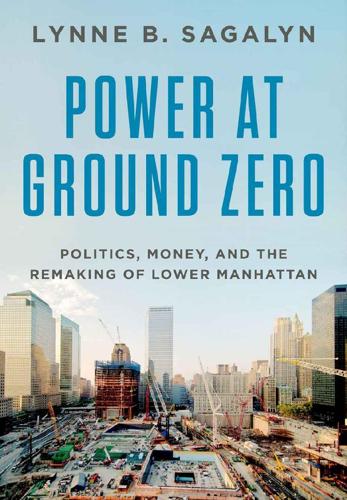
Power at Ground Zero: Politics, Money, and the Remaking of Lower Manhattan
by
Lynne B. Sagalyn
Published 8 Sep 2016
The inside political problems started with Governor Pataki’s big ask—$54 billion in federal aid for recovery, his “Rebuild New York” plan—laid out in mid-October, just weeks after 9/11. The size of the request and the scope of items included in Pataki’s wildly ambitious kitchen-sink-quality wish list—transportation projects clearly not related to the terrorist attack like a high-speed rail link between Schenectady and Manhattan, bridge repairs upstate, and modernizing crossings along the Canadian border—immediately pegged his hastily conceived ask as overreach. It was ridiculed. Pataki had risked his credibility. “It’s a mistake … and could place legitimate funding requests at risk in the future,” the Daily News editorialized.

The Better Angels of Our Nature: Why Violence Has Declined
by
Steven Pinker
Published 24 Sep 2012
The decades of the Rights Revolutions were the decades of the electronics revolutions: television, transistor radios, cable, satellite, long-distance telephones, photocopiers, fax machines, the Internet, cell phones, text messaging, Web video. They were the decades of the interstate highway, high-speed rail, and the jet airplane. They were the decades of the unprecedented growth in higher education and in the endless frontier of scientific research. Less well known is that they were also the decades of an explosion in book publishing. From 1960 to 2000, the annual number of books published in the United States increased almost fivefold. 305 I’ve mentioned the connection before.

Frommer's England 2011: With Wales
by
Darwin Porter
and
Danforth Prince
Published 2 Jan 2010
That’s all changing now, but one big difference that may affect you still remains: If you’re traveling to Britain from the Continent, your Eurailpass will not be valid when you get here. In 1994, Queen Elizabeth of England and President Francois Mitterrand of France officially opened the Channel Tunnel, or Chunnel, and the Eurostar express passenger train began twice-daily service between London and both Paris and Brussels. In 2003, the completion of a new section of high-speed rail in England, the Channel Tunnel Rail Link, shaved 20 minutes off the trip between London and Paris, reducing it to just 2 hours and 35 minutes (or 2 hr., 20 min. to Brussels). This extension allows Eurostar trains to go at the rate of 482kmph (300 mph). One of the great engineering feats of all time, the tunnel is the first link between Britain and the Continent since the Ice Age.

Frommer's California 2007
by
Harry Basch
,
Mark Hiss
,
Erika Lenkert
and
Matthew Richard Poole
Published 6 Dec 2006
The beautiful, multicolored cars on the F Market line run along the Embarcadero from Fisherman’s Wharf to Market Street, and then to the Castro and back. They’re a quick and charming way to get uptown and downtown without any hassle. BY BART BART—an acronym for Bay Area Rapid Transit (& 415/989-2278; www.bart.gov)—is a high-speed rail network that connects San Francisco and the airport with the East Bay towns of Oakland, Richmond, Concord, and Fremont. Four stations are located along Market Street (see “By Streetcar,” above). Fares range from $1.45 to $7.45, depending on how far you go. Machines in the stations dispense tickets, encoded with a dollar amount, and computerized exits deduct the correct fare.

Germany Travel Guide
by
Lonely Planet
You’ll get close-ups of the revolving Mercedes logo and far-reaching views over Stuttgart, from the bauble-topped Fernsehturm (TV Tower) to vine-cloaked hills on the city fringes. You also get a bird’s-eye view of developments taking shape for Stuttgart 21, a huge – and hugely controversial – project to revamp the main train station and extend the city’s high-speed rail network. Costing €4.5 billion, the project is due for completion in 2021. Mercedes-Benz Museum MUSEUM (www.museum-mercedes-benz.com; Mercedesstr-asse 100; adult/concession €8/4; 9am-6pm Tue-Sun; Neckarpark) A futuristic swirl on the cityscape, the Mercedes-Benz Museum takes a chronological spin through the Mercedes empire.
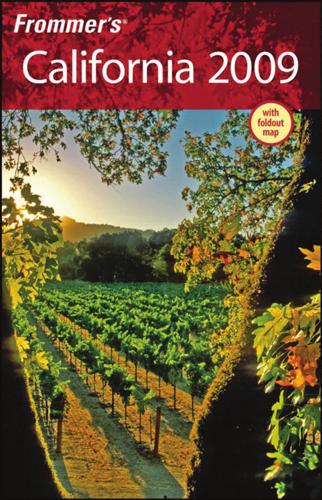
Frommer's California 2009
by
Matthew Poole
,
Harry Basch
,
Mark Hiss
and
Erika Lenkert
Published 2 Jan 2009
The beautiful, retro, multicolored F-Market streetcar runs from 17th and Castr o streets to B each and Jones streets; every other streetcar continues to Jones and Beach streets in Fisherman’s Wharf. This is a quick and charming way to get up- and do wntown without any hassle. BY BART BART, an acronym for Bay Area Rapid Transit (& 415/989-2278; www. bart.gov), is a futuristic-looking, high-speed rail networ k that connects S an Francisco with the East B ay and the S an Francisco and O akland airpor ts. Four stations ar e on Market Street. Fares range from $1.45 to $7.35, depending on how far you go. Machines in the stations dispense tickets that ar e magnetically encoded with a dollar amount.

Spain
by
Lonely Planet Publications
and
Damien Simonis
Published 14 May 1997
Reining in those long showers is good for everyone! For more on environmental issues, Click here. A motorised vehicle is advantageous for getting to some parts of the country but by making judicious choices you can give your drivers, the vehicles and the atmosphere a rest. Public transport, including the country’s growing high-speed rail network, makes it easy to get around between major destinations. In cities, park your car and use public transport instead. You are what you eat! Seeking out better restaurants that use fresh local products or shopping at produce markets is a way of contributing to both your well-being and the local economy.

France (Lonely Planet, 8th Edition)
by
Nicola Williams
Published 14 Oct 2010
In France ticketing is handled by SNCF ( in France 36 35, from abroad 08 92 35 35 35; www.sncf.com); telephone and internet bookings are possible but they won’t post tickets outside France. For details on Europe’s 200,000km rail network, see www.railpassenger.info, set up by a grouping of European rail companies. Information on ‘seamless high-speed rail travel’ between France, Belgium, the Netherlands, Germany and Austria, and under the English Channel to London, is available from www.railteam.co.uk and www.tgv-europe.com. Certain rail services between France and its continental neighbours are marketed under a number of peculiar brand names: Alleo heads to Germany; Artésia (www.artesia.eu) takes you to Italian cities such as Milan, Venice, Florence and Rome; Elipsos (www.elipsos.com) has luxurious ‘train-hotel’ services to Spain; and TGV Lyria (www.tgv-lyria.fr) takes passengers to Switzerland.

The Rough Guide to France (Travel Guide eBook)
by
Rough Guides
Published 1 Aug 2019
Futures In 2009 the government invited ten leading architectural firms to submit proposals for Le Grand Pari – the Greater, Greener Paris of the future. The architects envisioned new “Grands Axes”, avenues as radical as any bulldozed by Haussmann – but in this case linking city and banlieue. President Sarkozy favoured high-speed rail links down the Seine towards the port of Le Havre; Richard Rogers called for a green network covering the train lines leading out of the northern stations; Christian de Portzamparc wanted a high-speed elevated train running circles around the ring road. The radical left-wing architect Roland Castro mildly proposed that perhaps the suburbs might have their share of government offices and cultural institutions.

The power broker : Robert Moses and the fall of New York
by
Caro, Robert A
Published 14 Apr 1975
Handsome four-color brochures—designed to win voter approval for the bond issues in the billions that would be required to finance these improvements—assured voters that the expense would, if not end, at least substantially alleviate traffic congestion on Long Island. But building them wasn't going to be that easy. Moses had been asked to reserve space on the Van Wyck Expressway. Reserving it would, at the time, have cost only $1,750,000. And if Moses had spent that money, it would now, in the 1970's, be possible to construct all (he high-speed rail links involved for less than $10,000,000. In 1968, with congestion on the Van Wyck and at Idlewild (now John F. Kennedy) Airport even more intolerable than F. Dodd McHugh had predicted, no sooner was Moses out of power than the decision was taken to build a rapid transit line to the airport.